Inbox and Environment News: Issue 614
February 18 - 24, 2024: Issue 614
Narrabeen Lagoon Entrance (Closed Again): Council's Update
From Issue 613: Narrabeen Lagoon Entrance Blocked Again
Narrabeen lagoon entrance is blocked again, after recent storm swells, and Council spending $1.5. million on moving the sand south to Collaroy for weeks.
Council announced on Tuesday, 12 September 2023 work to clear Narrabeen Lagoon entrance to reduce the risk of flooding to local homes and businesses.
''Council contractors will excavate more than 20,000 cubic metres (40,000 tonnes) of sand – equivalent to the weight of 100 jumbo jets – to the east and west of Ocean Street Bridge.'' it was stated
The sand is to be deposited at Collaroy-Narrabeen Beach between Goodwin and Stuart Streets.
Works were expected to start in the coming weeks, although the above photo shows they were commenced immediately, and were completed in time for the Summer school holidays, which commenced on December 19 2023. This means the lagoon entrance was open for around 6.5 weeks prior to the big seas which moved so much sand over the past few days of weather conditions as the tail end of Cyclone Kirrily moved south.
After impacting Queensland, ex-Tropical Cyclone Kirrily crossed the border into western NSW on Monday afternoon, February 5, bringing heavy rainfall and flash flooding to inland communities, before reaching Sydney early the next day bringing 21mm of rain and localised flash flooding, along with strong winds.
This had preceded by swell set to peak at 4 to 4.5 metres in Sydney over the weekend of February 3-4.
However, at high tide about 6 inches of water still goes over the top of the entrance and into the lagoon. Joe Mills' (Turimetta Moods) sent in pictures this week (week ending Friday February 9 2024) of Pelicans standing in the shallow overflow at high tide - see below.
Joe said; ''They are waiting (with the Cormorants and Seagulls as well) for the small fish brought in by the waves.''
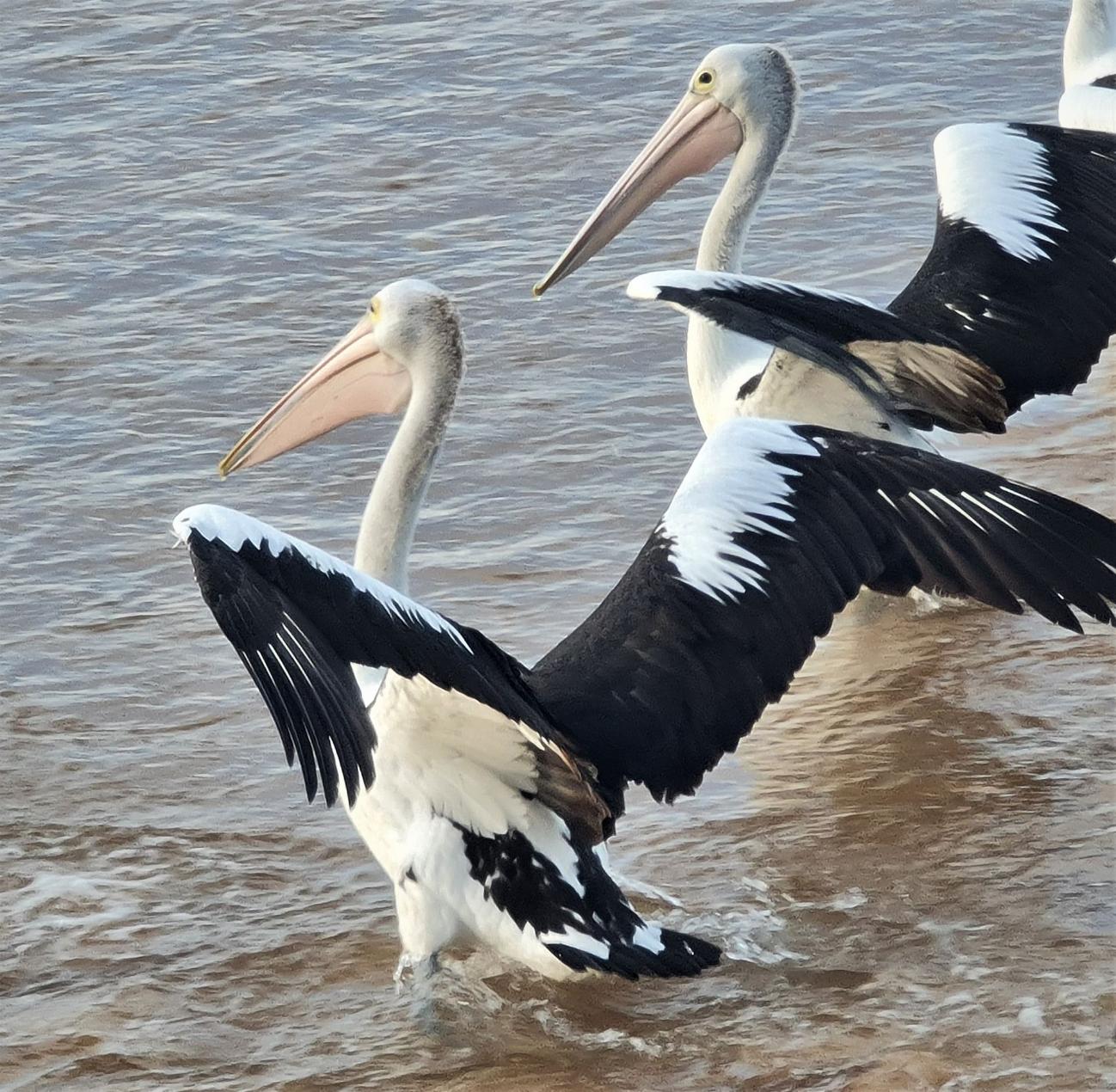
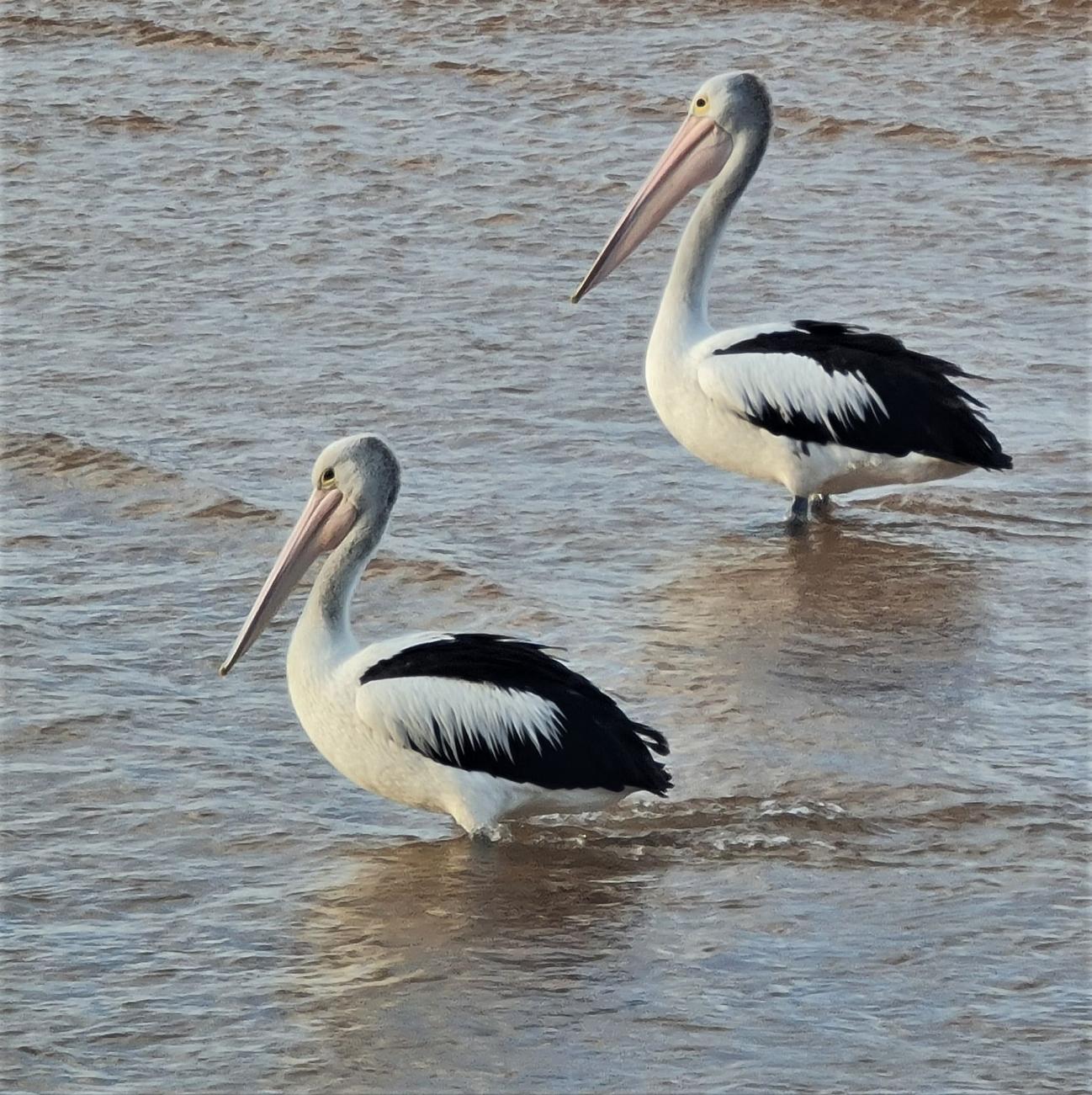
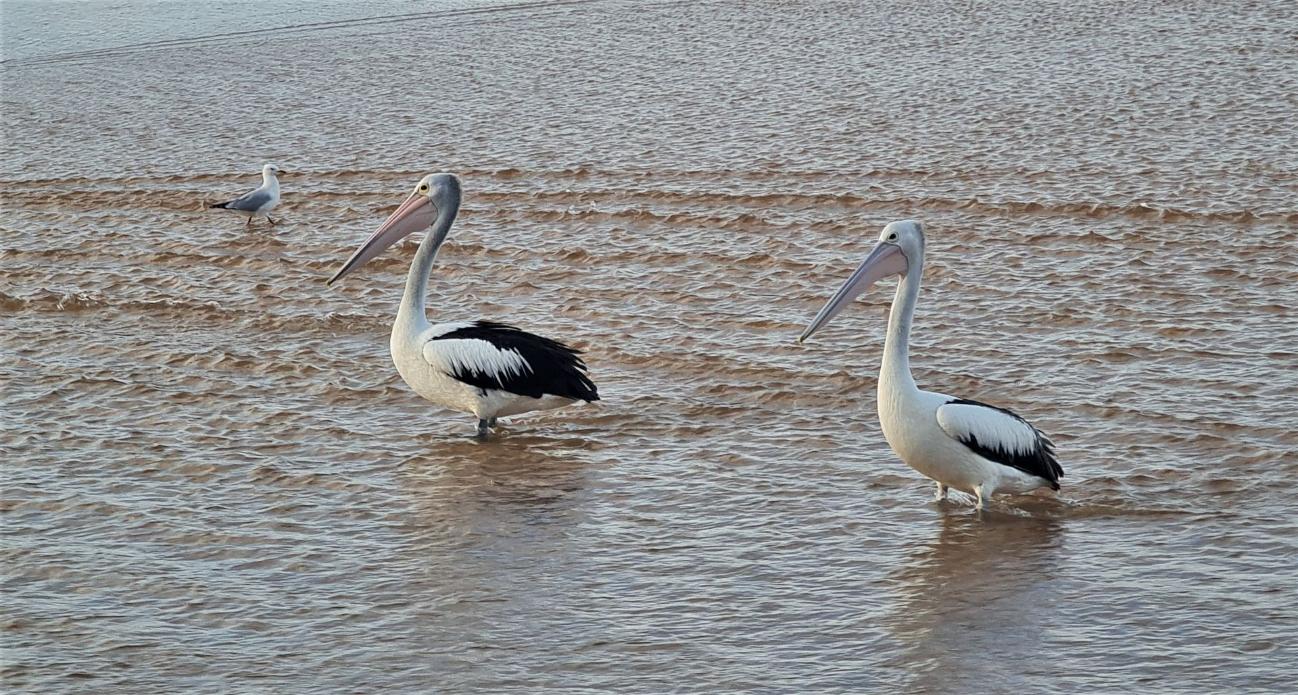

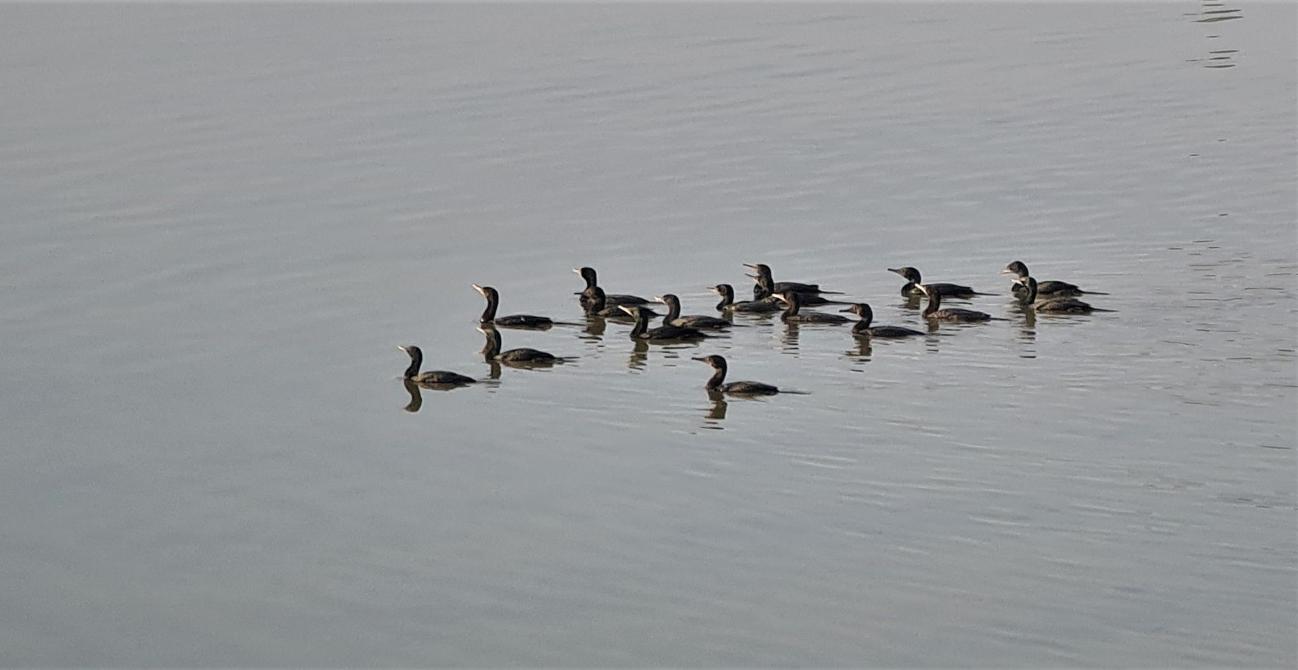
Sidney The Seal: Middle Harbour Yacht Club
Flora Of Coastal New South Wales: 1920 To 1944
.jpg?timestamp=1707845629273)
Ebenezer Edward Gostelow (1866 - 1944)
 Born 18 Dec 1866, Sydney, NSW, died 9 May 1944, Burwood, NSW
Born 18 Dec 1866, Sydney, NSW, died 9 May 1944, Burwood, NSW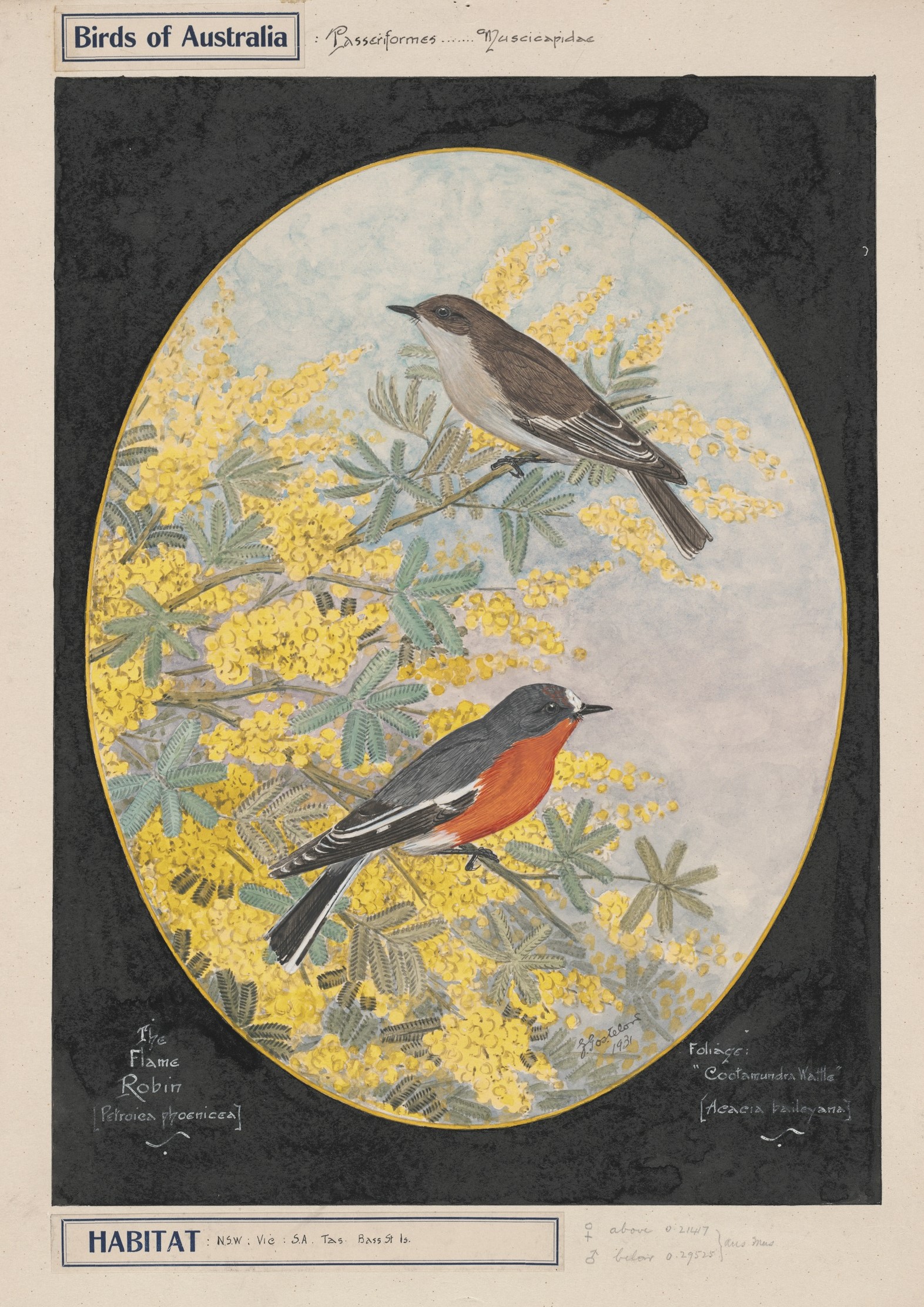
- Australian National Herbarium Biography
- Main text extracted from: Jennifer Phipps (1986) Artists' Gardens - Flowers and Gardens in Australian Art 1780s-1980s, Bay Books, Sydney. [consult for source references]
.jpg?timestamp=1707848042594)
.jpg?timestamp=1707848577213)
.jpg?timestamp=1707847780615)
.jpg?timestamp=1707847522298)
.jpg?timestamp=1707846842418)
.jpg?timestamp=1707847146110)
.jpg?timestamp=1707846625510)
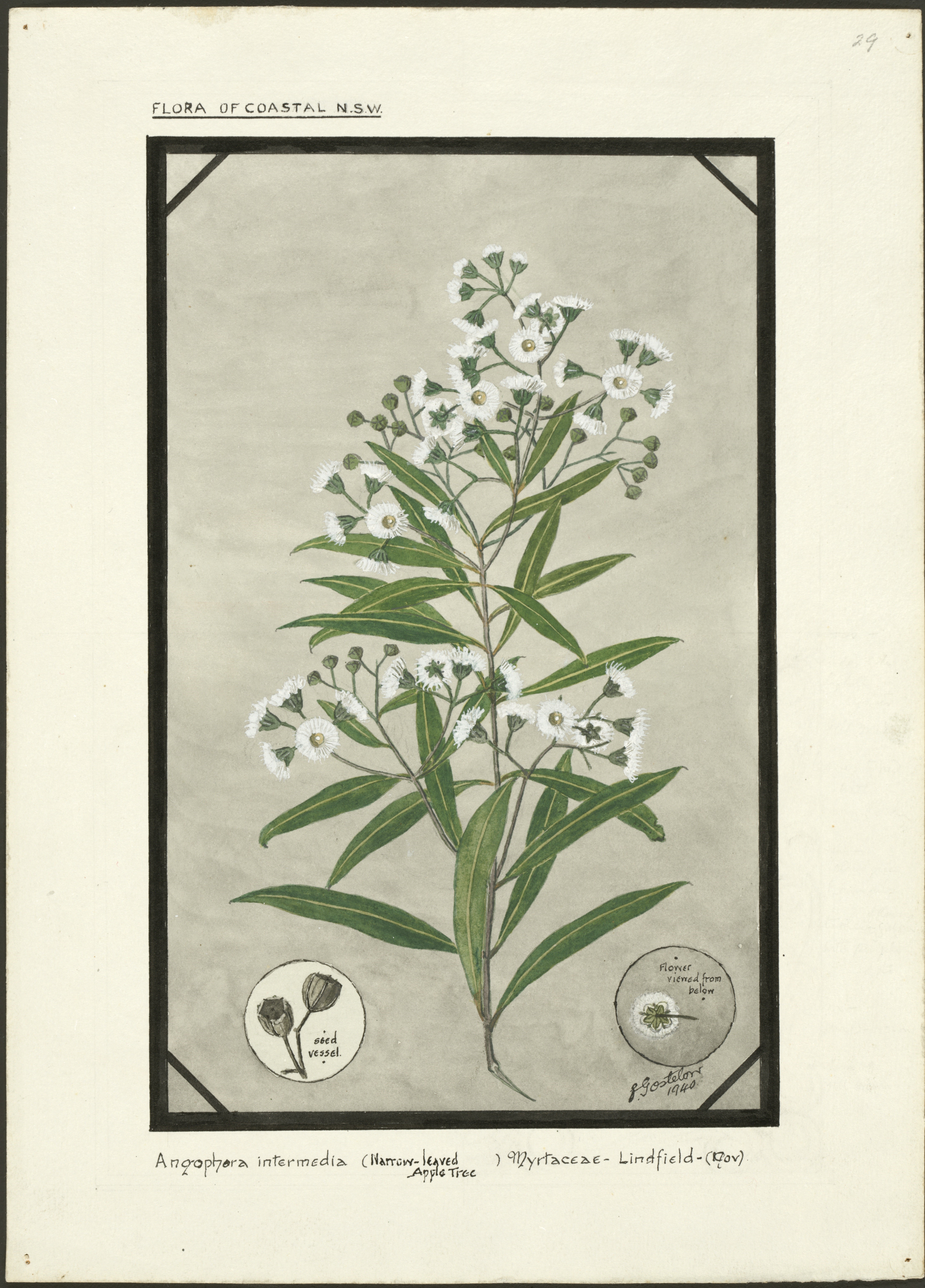
.jpg?timestamp=1707848388024)
.jpg?timestamp=1707846424017)
New logging rules in NSW put the greater glider closer to extinction. When will we start protecting these amazing animals?
David Lindenmayer, Australian National University and Kita Ashman, Charles Sturt UniversityForty years ago when my colleagues and I did spotlighting surveys, the southern greater glider was the most common animal we’d see. Now, this amazing species is endangered. In many areas it is hard to find; in others it has been lost altogether.
Australia has a disproportionately large number of in-danger species, and their decline follows a well-trodden path. Common species become uncommon, then uncommon species become rare. Rare species become threatened or endangered. Then tragically, endangered species go extinct.
Australia leads the world in native mammal extinctions – roughly 10% have become extinct since British invasion. The southern greater glider is heading towards this fate.
That’s why ecologists were shocked by a recent announcement by New South Wales environment authorities that we believe loosens protections for southern greater gliders in logging areas.
A Marsupial To Cherish
The southern greater glider is an iconic marsupial. It’s one of three species of greater gliders found in eastern Australia. It was listed as vulnerable to extinction under national environment law in 2016, then uplisted to endangered in 2022.
Greater gliders are amazing animals. Their diet is low on nutrients, comprised almost entirely of eucalypt leaves and buds. Yet they are the world’s largest gliding marsupial, weighing up to 1.3 kg and capable of gliding up to 100m through a forest.
Southern greater gliders have white bellies and thick back fur that ranges from pure white to jet black.
The species is highly dependent on forest habitat and, in particular, large trees with hollows where they shelter and breed. But sadly, extensive glider habitat has been burnt, logged or both. Climate change poses a further risk.
We have long been concerned for the southern greater glider. In the wet forests of Victoria, for example, their numbers have declined by 80% since 1997. In 2007, the species became regionally extinct at Booderee National Park, south of Sydney.
When the southern greater glider was upgraded to endangered, Federal Environment Minister Tanya Plibersek said the new listing would “ensure prioritisation of recovery actions to protect this iconic species”. She noted that habitat protection and land clearing were “primarily the responsibility of state governments”.
You might think, then, that state governments would now be working harder to protect greater glider habitat. But a recent decision in NSW suggests little has changed.
What The Changes Mean
The NSW Environment Protection Authority this month announced changes to rules in logging operations. It claims the amendments constitute “new protections” for greater gliders. But many ecologists, us included, believe the changes are designed to make logging easier and will leave the species at greater risk.
At present, Forestry Corporation staff undertake pre-logging habitat searches for trees that might contain hollows. They must retain eight of these trees per hectare but can log right up to the tree base. The staff must also look for den trees (where an animal is actually seen entering or leaving a tree hollow) – although this is problematic as gliders are active at night and the surveys take place during the day. If a den tree is found, it must be protected and a 50m area around it retained.
Under the proposed new rules, Forestry Corporation will have to keep more large hollow-bearing trees per hectare – 14 instead of the current eight in high-density glider areas, and 12 instead of the current eight in low-density areas. A 50m exclusion zone will remain around known recorded locations of greater glider dens, but there will no longer be a requirement to specifically find or protect den trees.
This means actual habitat where greater gliders currently occur, and occupy den trees, may not be protected. We believe this will increase the gliders’ rate of decline and fast-track it towards extinction.
The new rules were due to begin on February 9, but were postponed by a week. In a statement, the authority said it was “consulting with stakeholders and considering their feedback to ensure we find the most appropriate way to address concerns while achieving long-term protections for this endangered species”.
If the authority is serious about protecting greater gliders, it will move to strengthen not weaken protections for greater glider habitat.
Logging Glider Habitat Is Nonsensical
Since the southern greater glider was listed as vulnerable in 2016, its habitat continued to be destroyed. This is poor management for many reasons:
gliders often die on site when their habitat is disturbed
young forests recovering after disturbances tend to be hotter and drier, which is bad for gliders because they are heat-sensitive
removing hollow-bearing trees not only destroys a key part of glider habitat immediately, but it can take decades (if not centuries) for forest to become suitable again
logging makes forests more flammable and gliders are particularly sensitive to fire
logging can change the composition of tree species in a forest, reducing the availability of quality food for gliders.
The Choice Is Ours
Human activity has left few remaining refuges for the southern greater glider. Any remaining habitat should be subject to the highest protections.
Logging those refuges is nonsensical given the large body of scientific work demonstrating its negative effects. And tinkering around the edge of logging rules will have limited benefits.
Australia has already lost so many wonderful mammal species. Do we want the southern greater glider to suffer the same fate? If not, let’s stop destroying the forests our species need to survive.![]()
David Lindenmayer, Professor, The Fenner School of Environment and Society, Australian National University and Kita Ashman, Adjunct research associate, Charles Sturt University
This article is republished from The Conversation under a Creative Commons license. Read the original article.
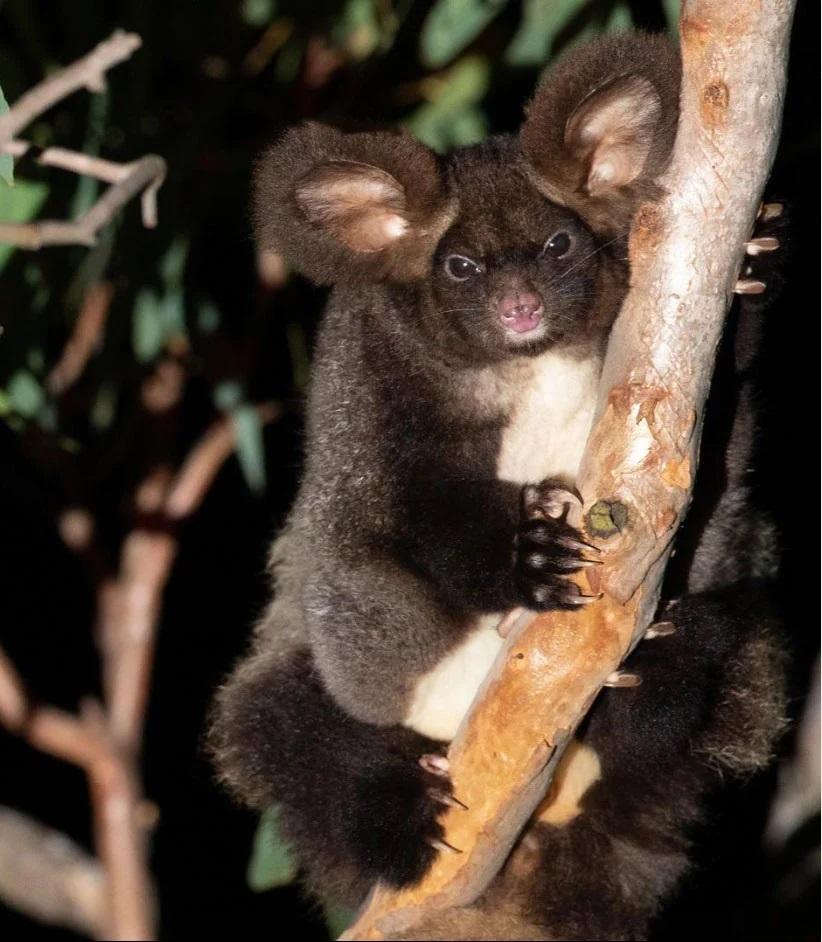
Further Fish Deaths At Menindee
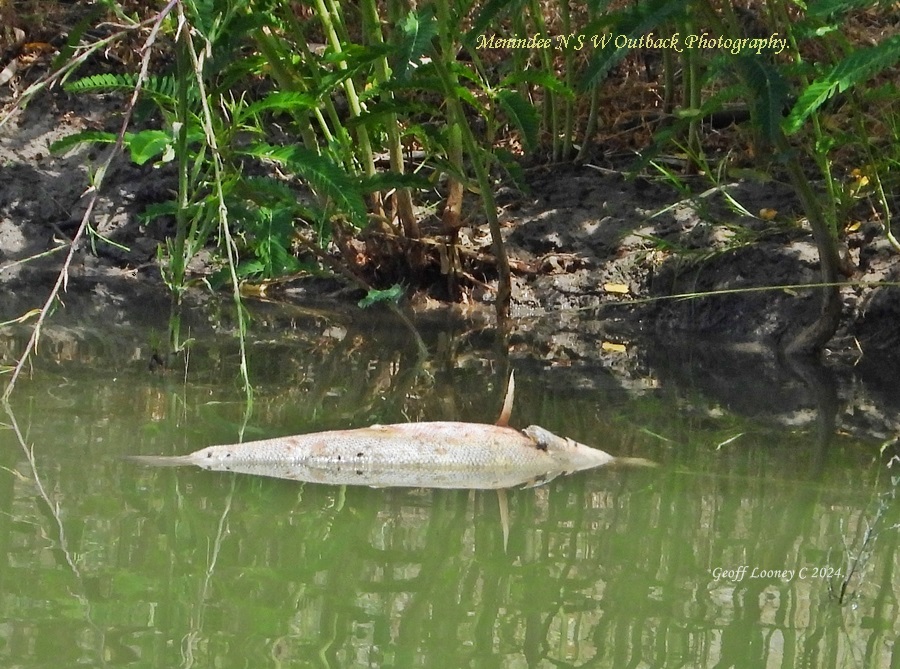
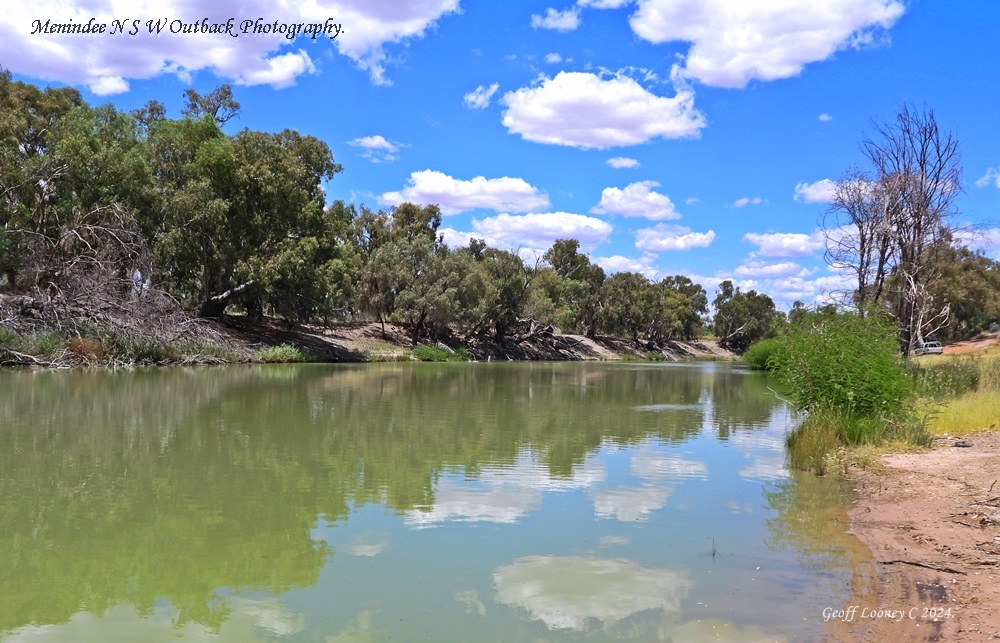
Duffys Forest Residents Assoc.: Waratah Park Bushcare
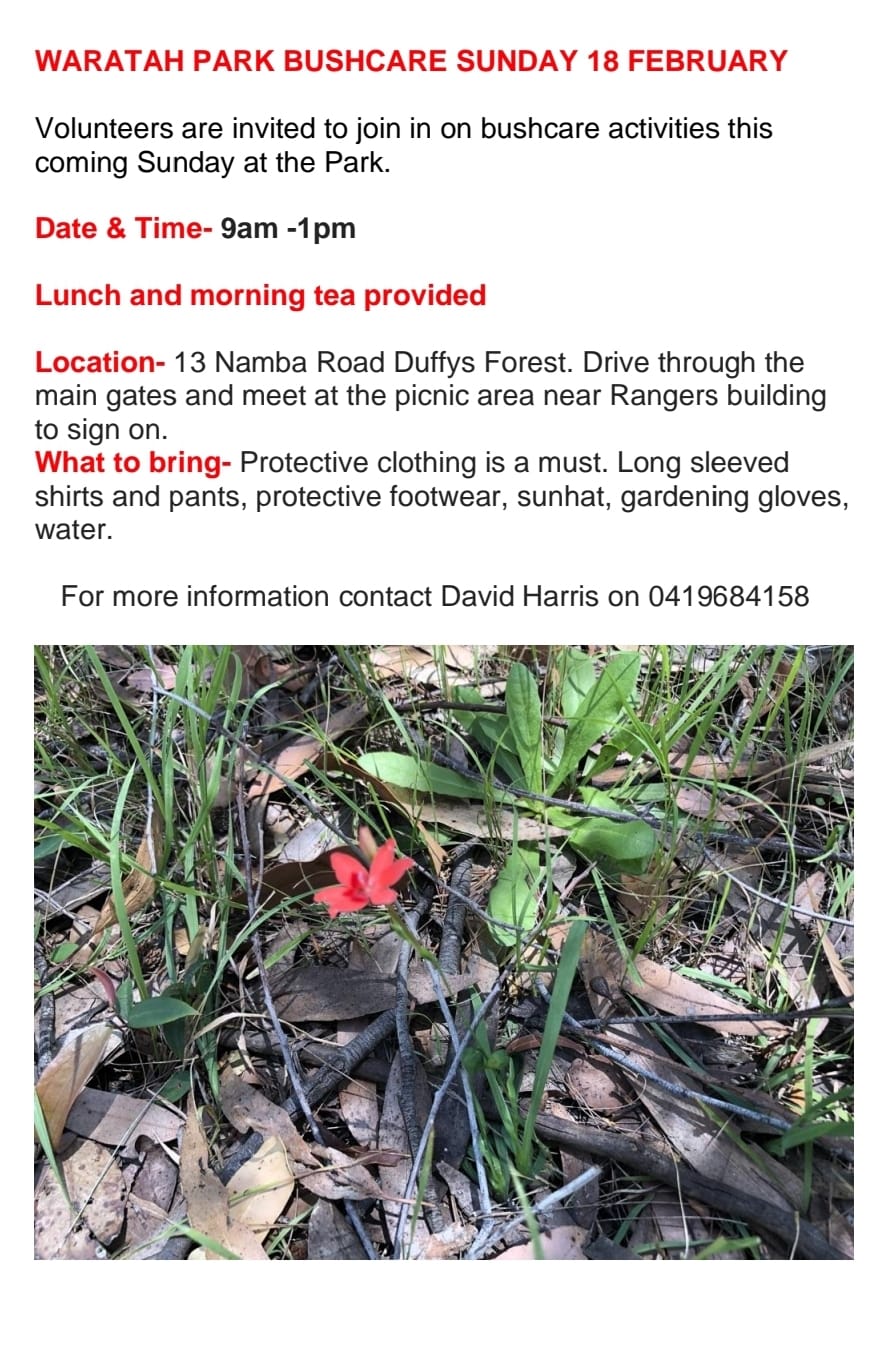
Harvest Seeds & Native Plants: Education Sessions 2024 - "The Harvest Huddle"
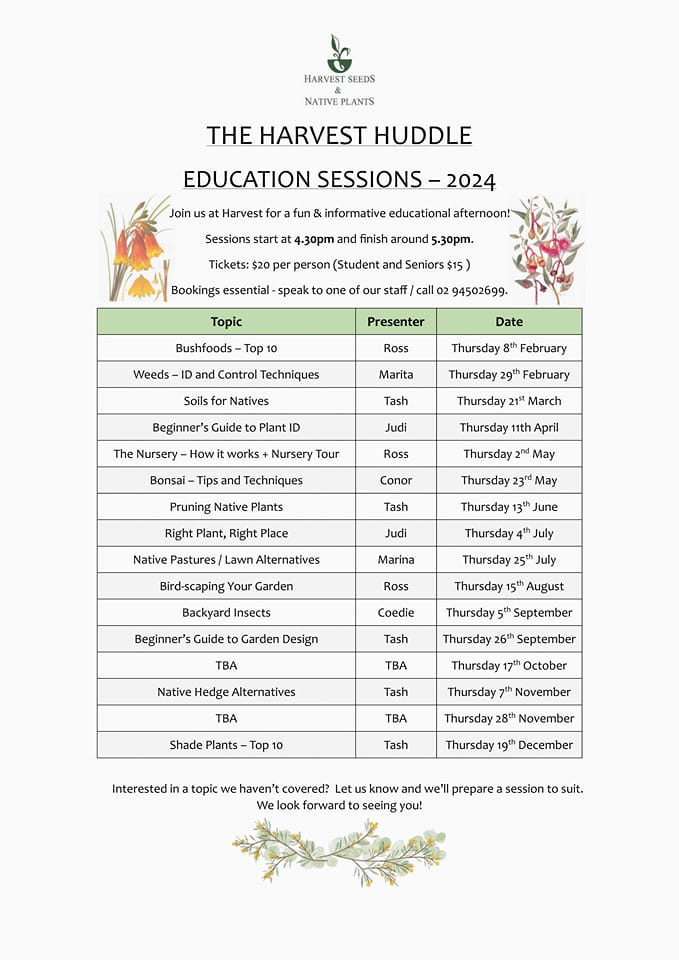
Notice Of 1080 Baiting: February 1 - July 31 2024
Please note the following notification of continuous and ongoing fox control using 1080 POISON with ground baits and canid pest ejectors (CPE’s) in Sydney Harbour National Park, Garigal National Park, Ku-ring-gai Chase National Park, and Lane Cove National Park. As part of this program, baiting also occurs on North Head Sanctuary managed by Sydney Harbour Federation Trust and the Australian Institute of Police Management facility at North Head.
This provides notification for the 6 monthly period of 1 February 2024 – 31 July 2024.
Warning signs are displayed at park entrances and other entrances to the baiting location to inform the public of 1080 baiting.
1080 Poison for fox control is used in these reserves in a continuous and ongoing manner. This means that baits and ejectors (CPE’s) remain in the reserves and are checked/replaced every 6 – 8 weeks.
1080 use at these locations is in accordance with NSW pesticides legislation, relevant 1080 Pesticide Control Orders and the NPWS Vertebrate Pesticides Standard Operating Procedures.
A series of public notifications occur on a 6 monthly basis including; alerts on the NPWS website, public notices in local papers, Area pesticide use notification registers and to the NPWS call centre.
If you have any further general enquiries about 1080, or for specific program enquiries please contact the local NPWS Area office:
For further information please call the local NPWS office on:
NPWS Sydney North (Middle Head) Area office: 9960 6266
NPWS Sydney North (Forestville) Area office: 9451 3479
NPWS North West Sydney (Lane Cove NP) Area office: 8448 0400
NPWS after-hours Duty officer service: 1300 056 294
Sydney Harbour Federation Trust: 8969 2128
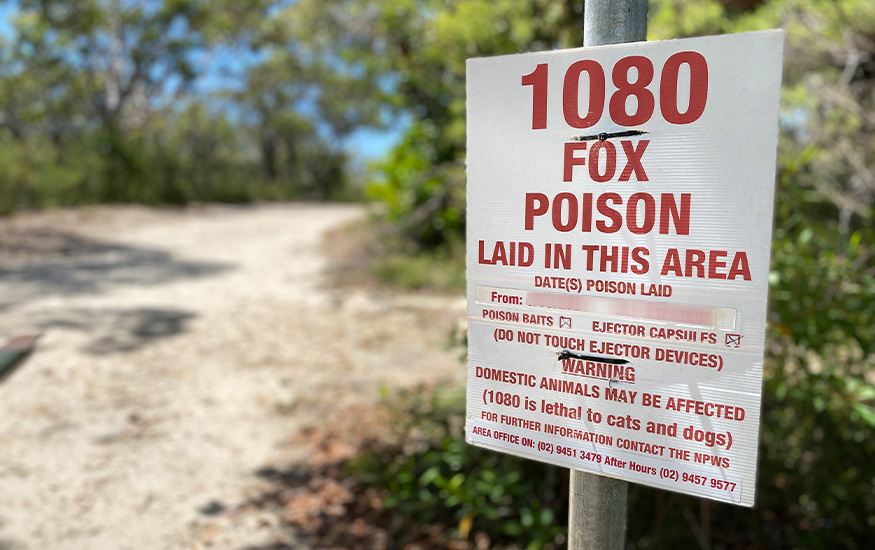
Pittwater Natural Heritage Association: Second PNHA Nature Event 2024
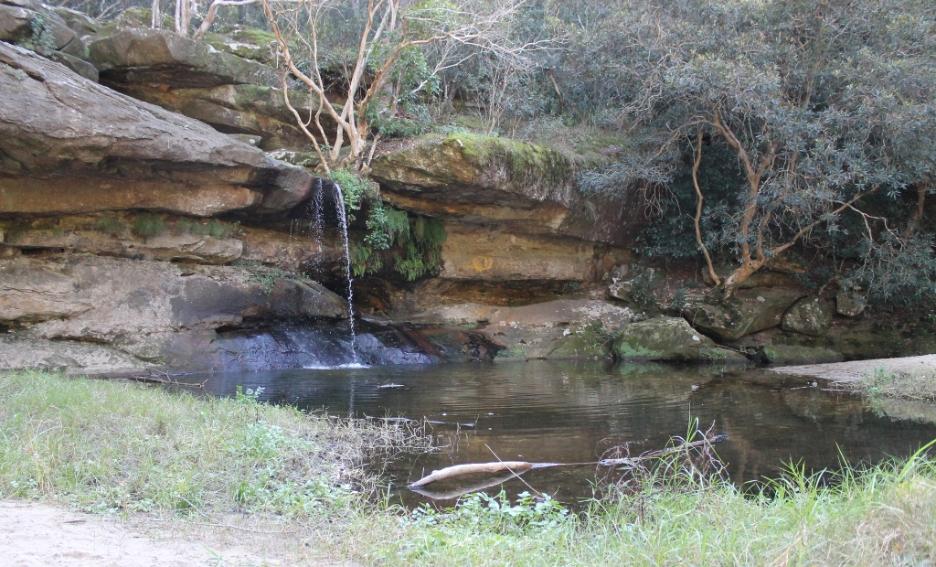
Northern Beaches Clean Up Crew: Bilgola Beach Clean - February 25
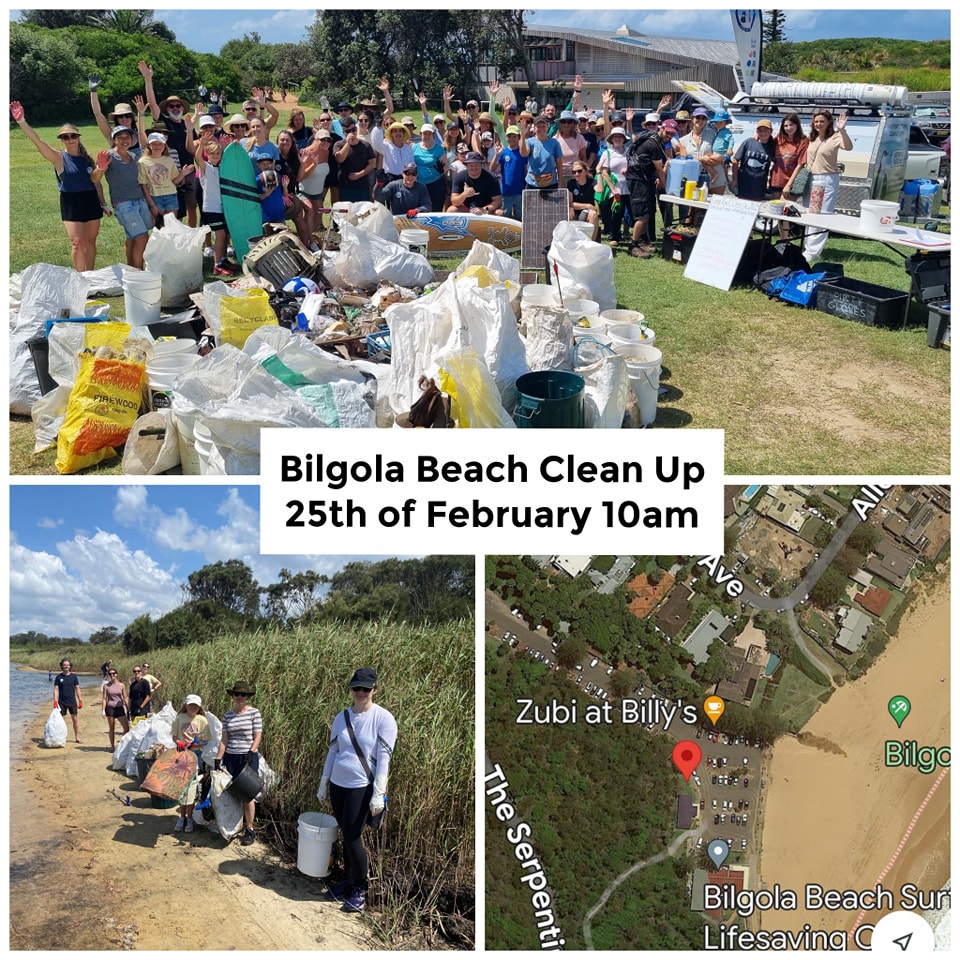
Clean Up Australia Day 2024 Registrations Are Now Open
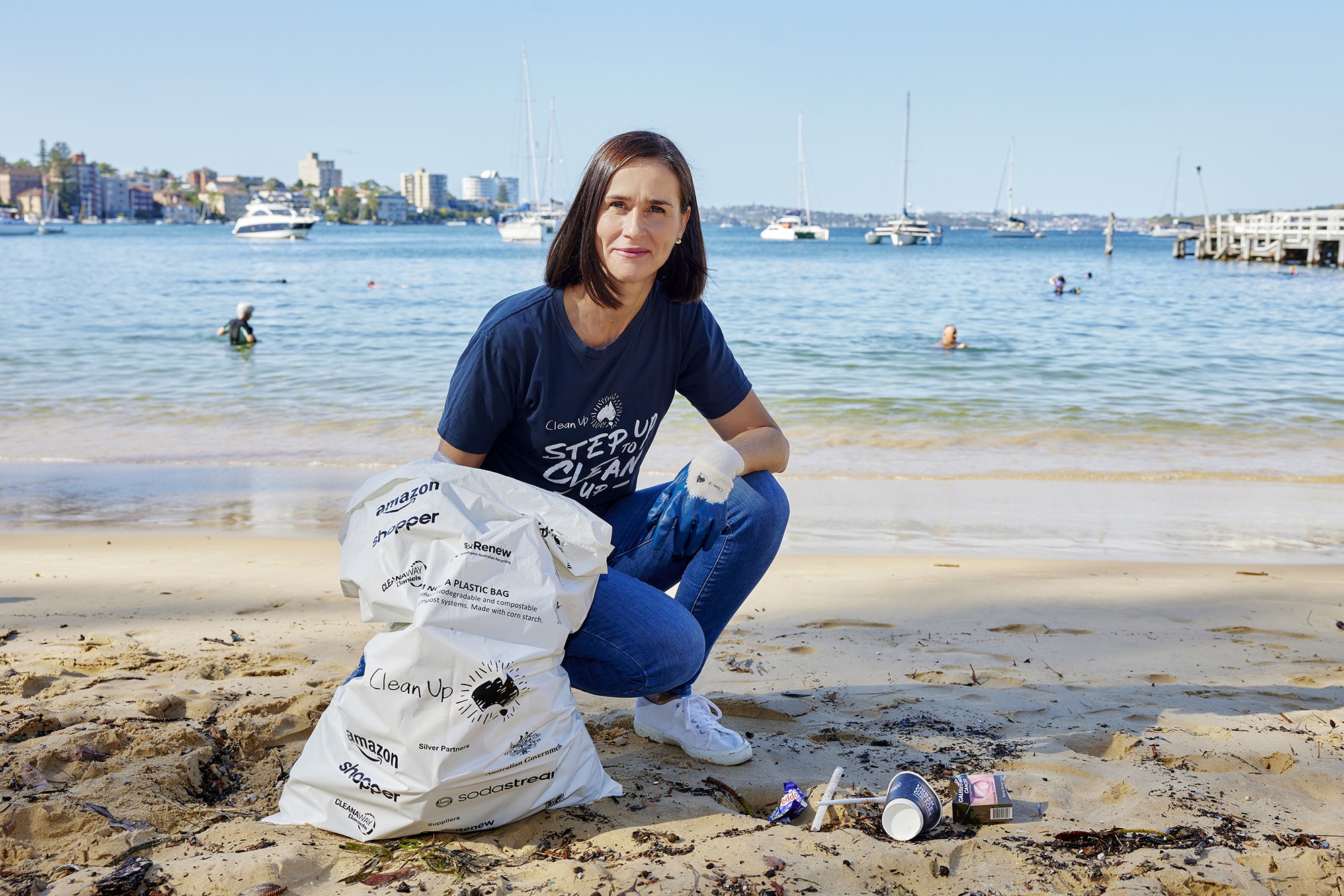
NEW At Eco House & Garden(At Kimbriki): 'Supporting School & Community Composts Workshop'
Where you can become part of the (waste) solution in our 3-hour workshop.
See below for more details and for bookings go to 👉https://www.trybooking.com/events/landing/1162545
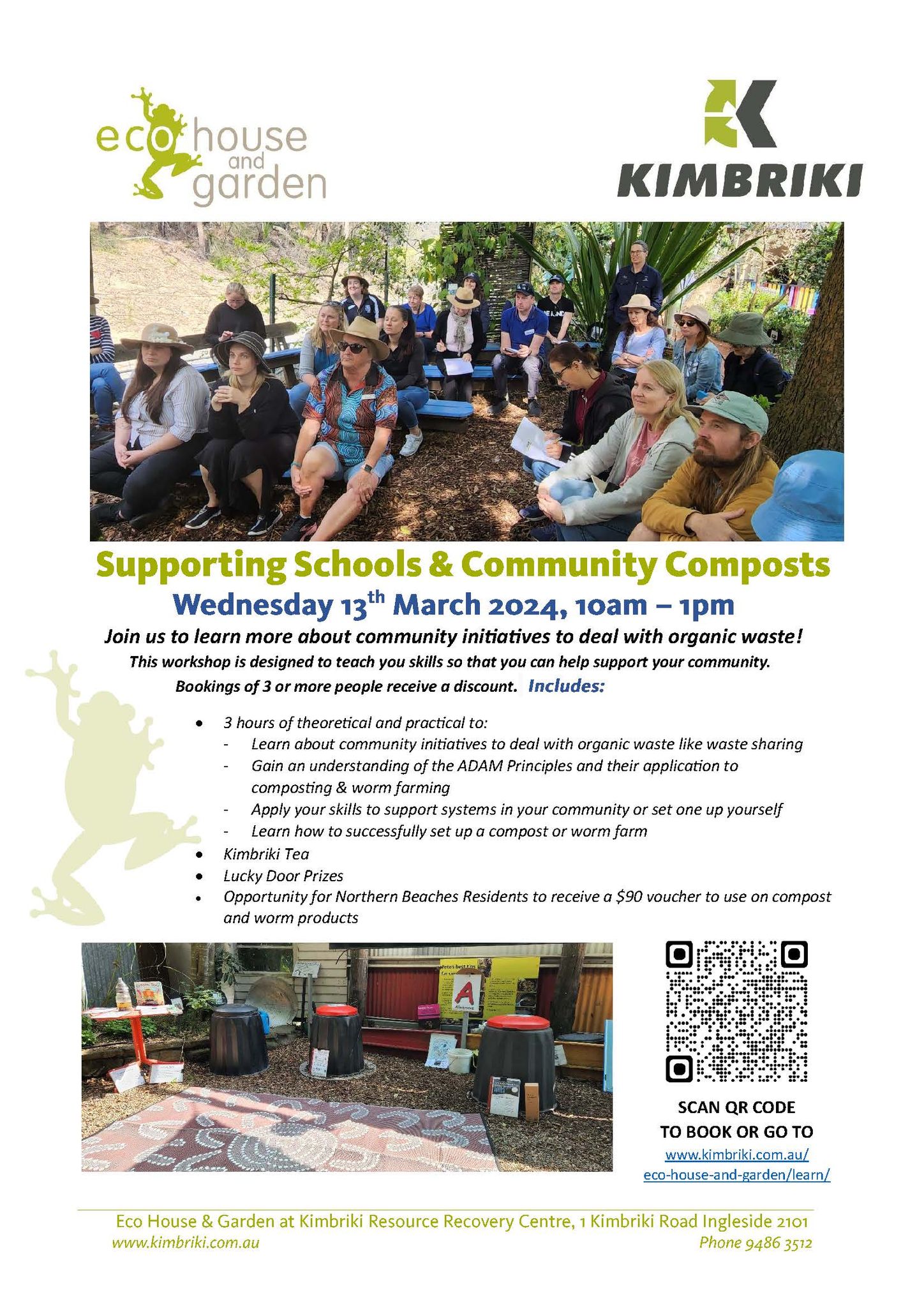
Kimbriki Resource Recovery Centre: Early Childhood Educators Professional Development Day
As part of Kimbriki's 2024 Eco House & Garden Educational Calendar, this year we introduce the Early Childhood Educators Professional Development Day on Friday 22nd March. For more details and bookings 👉 https://www.trybooking.com/events/landing/1162305
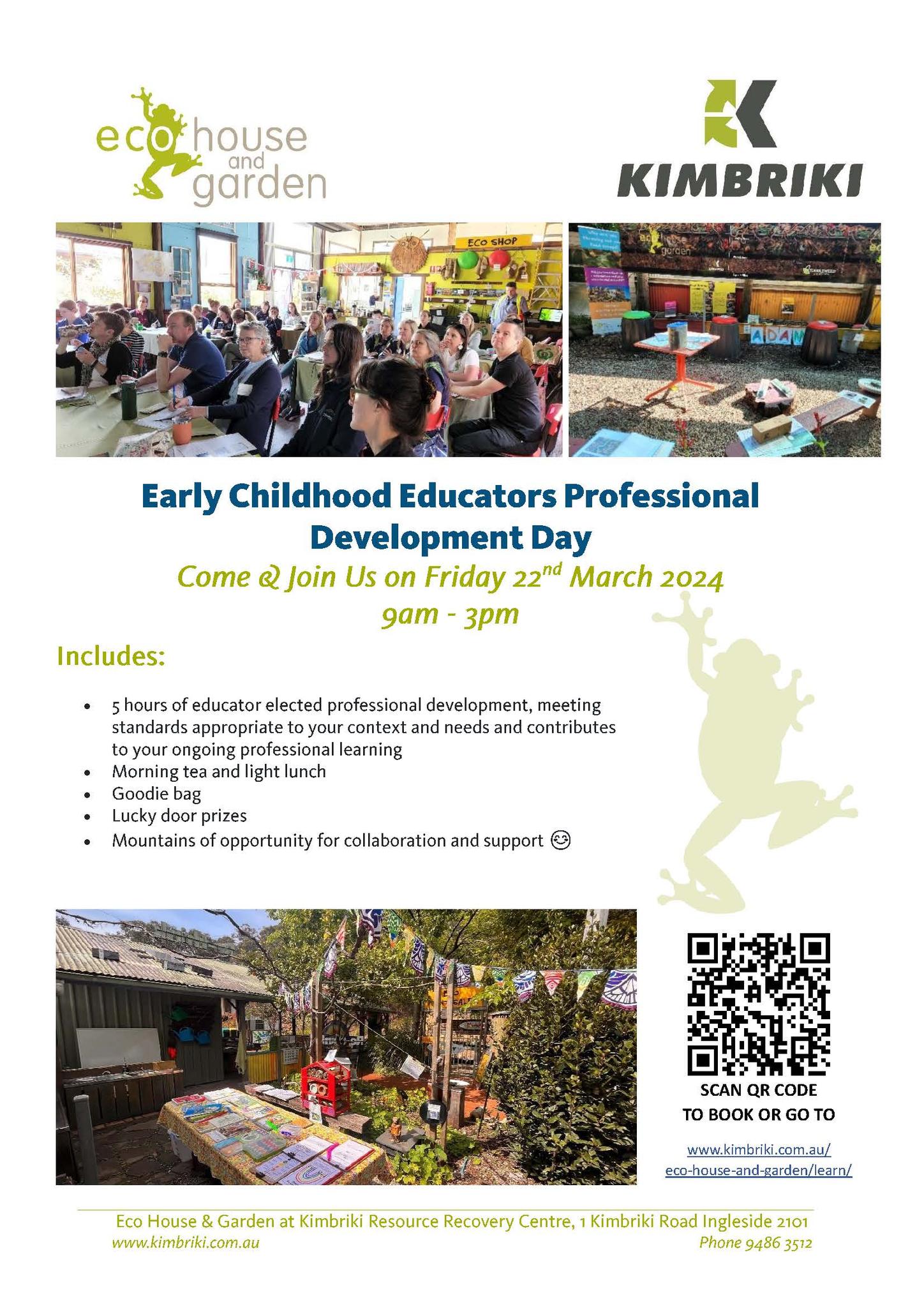
Upcoming Events At Permaculture Northern Beaches
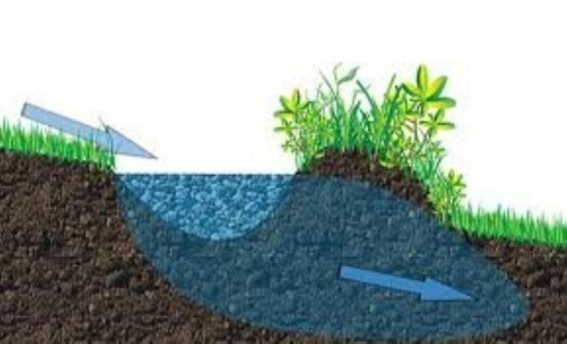 Come along to learn the fundamentals of suburban swale construction and planting out a productive, low-maintenance food forest.
Come along to learn the fundamentals of suburban swale construction and planting out a productive, low-maintenance food forest. - - Sunscreen
- - Hat
- - Water bottle
- - Lunch (or there are shops and eateries nearby) Morning tea will be provided by us.
When - February 29th 7:30pm – 9:00pm
Where - Narrabeen Tramshed Arts and Community Centre, Lakeview Room
 Permaculture Northern Beaches is thrilled to host Ling Halbert, famous for her amazing Laotian cooking sessions with her absolute passion for sharing food and wisdom. Ling brings together interested people to share in the health-giving benefits of vegetarian food with classic Laotian ingredients.
Permaculture Northern Beaches is thrilled to host Ling Halbert, famous for her amazing Laotian cooking sessions with her absolute passion for sharing food and wisdom. Ling brings together interested people to share in the health-giving benefits of vegetarian food with classic Laotian ingredients. Saving Our Seeds is a crucial part of our own food chain and it enables us to grow our own food and plants with no additional costs! The strongest seeds are locally grown over many generations and well adapted to local conditions - so your plants will thrive while you save on costs. Join us with seed-saving guest speakers Mylene Turban, and Elle Sheather to have an overview and to inspire you to get seed-saving!
Saving Our Seeds is a crucial part of our own food chain and it enables us to grow our own food and plants with no additional costs! The strongest seeds are locally grown over many generations and well adapted to local conditions - so your plants will thrive while you save on costs. Join us with seed-saving guest speakers Mylene Turban, and Elle Sheather to have an overview and to inspire you to get seed-saving!About

Stony Range Nursery
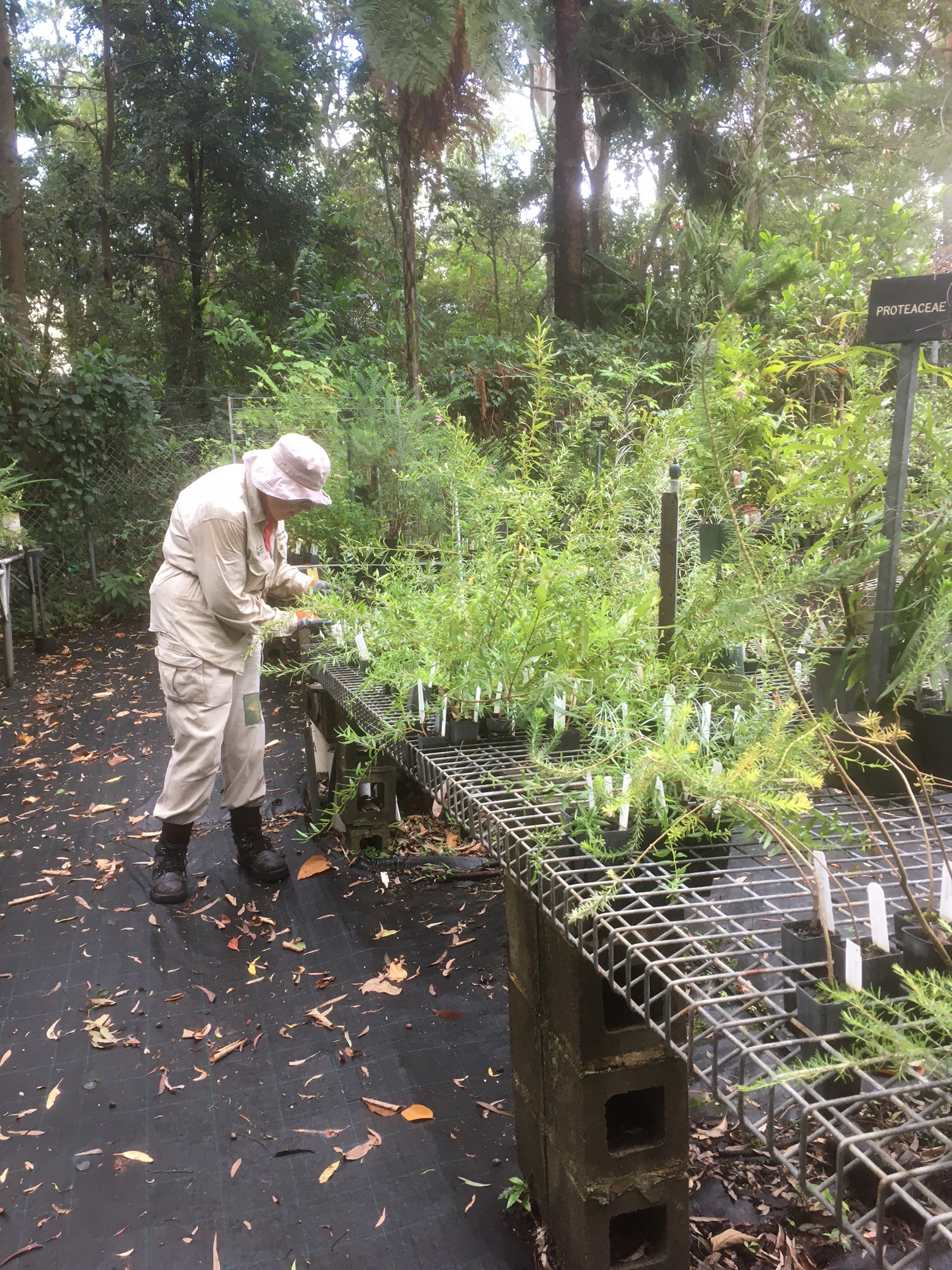
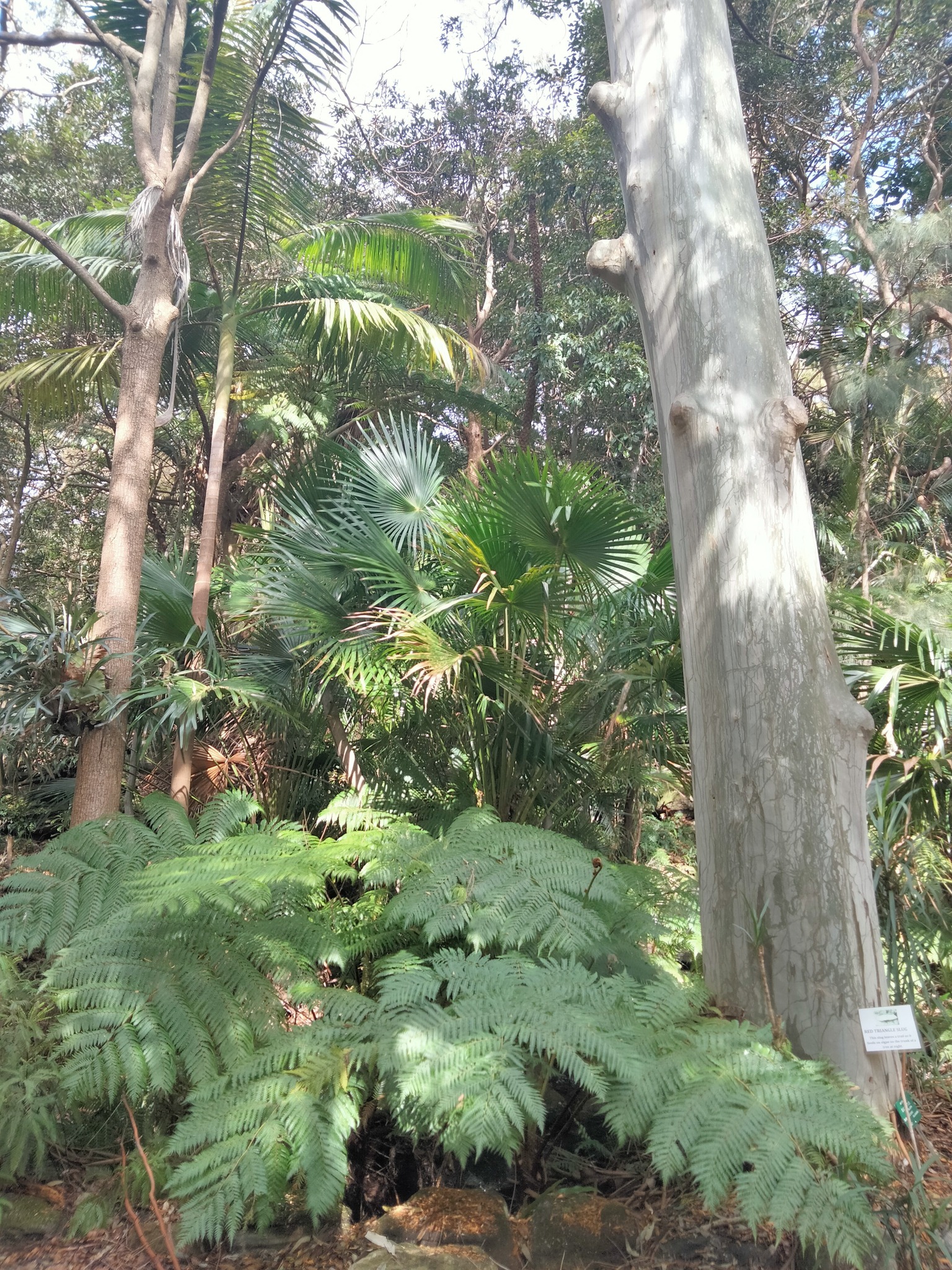
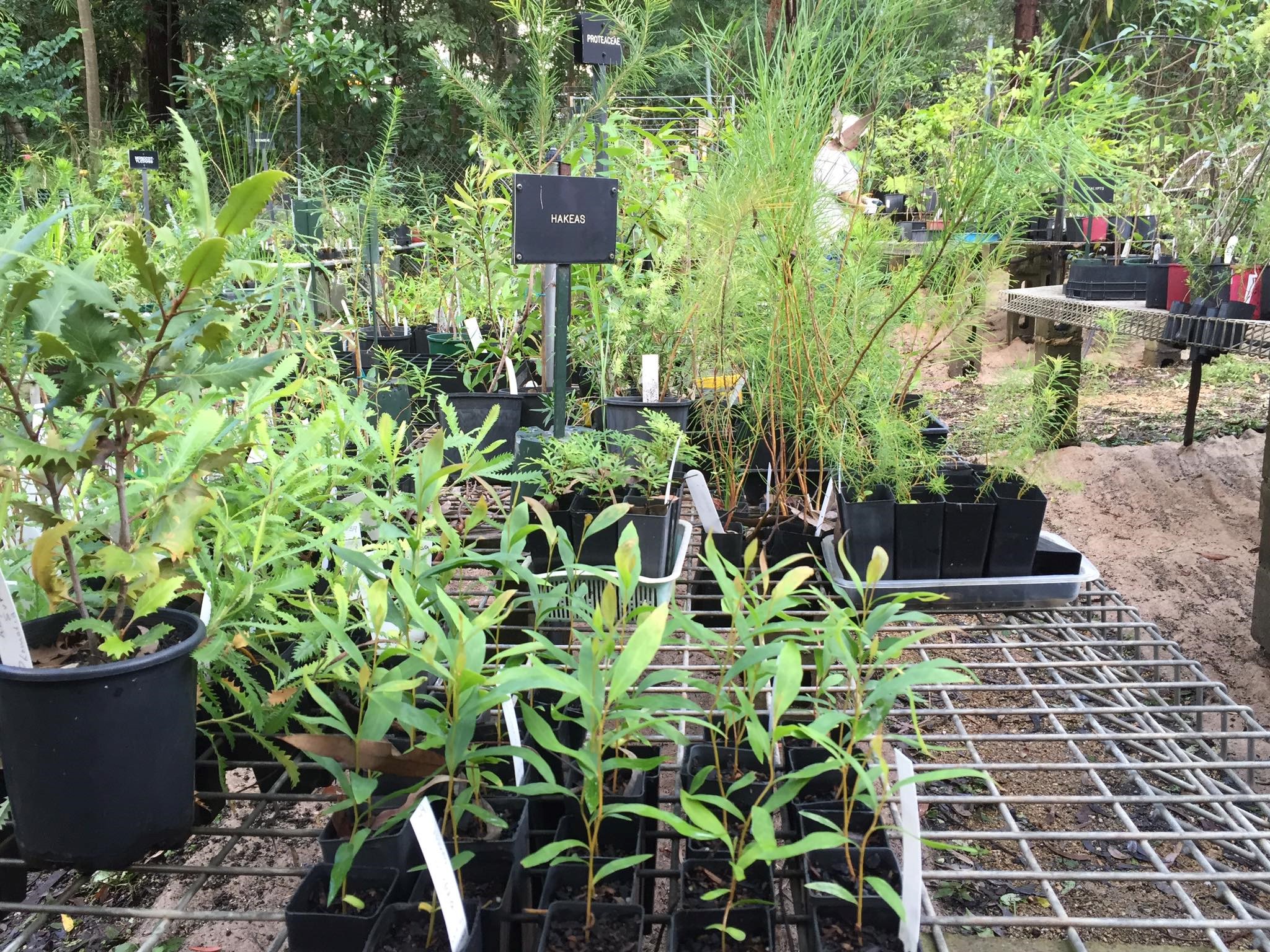
Stay Safe From Mosquitoes
- Applying repellent to exposed skin. Use repellents that contain DEET, picaridin, or oil of lemon eucalyptus. Check the label for reapplication times.
- Re-applying repellent regularly, particularly after swimming. Be sure to apply sunscreen first and then apply repellent.
- Wearing light, loose-fitting long-sleeve shirts, long pants and covered footwear and socks.
- Avoiding going outdoors during peak mosquito times, especially at dawn and dusk.
- Using insecticide sprays, vapour dispensing units and mosquito coils to repel mosquitoes (mosquito coils should only be used outdoors in well-ventilated areas)
- Covering windows and doors with insect screens and checking there are no gaps.
- Removing items that may collect water such as old tyres and empty pots from around your home to reduce the places where mosquitoes can breed.
- Using repellents that are safe for children. Most skin repellents are safe for use on children aged three months and older. Always check the label for instructions. Protecting infants aged less than three months by using an infant carrier draped with mosquito netting, secured along the edges.
- While camping, use a tent that has fly screens to prevent mosquitoes entering or sleep under a mosquito net.
Mountain Bike Incidents On Public Land: Survey
- Mountain Bike Incidents On Public Land: Survey Launched To Gather Data On What's Happening To Public Parks - Community Land - Bush Reserves In Pittwater
- Mother Brushtail Killed On Barrenjoey Road: Baby Cried All Night - Powerful Owl Struck At Same Time At Careel Bay During Owlet Fledgling Season: calls for mitigation measures - The List of 'What You can Do' as requested
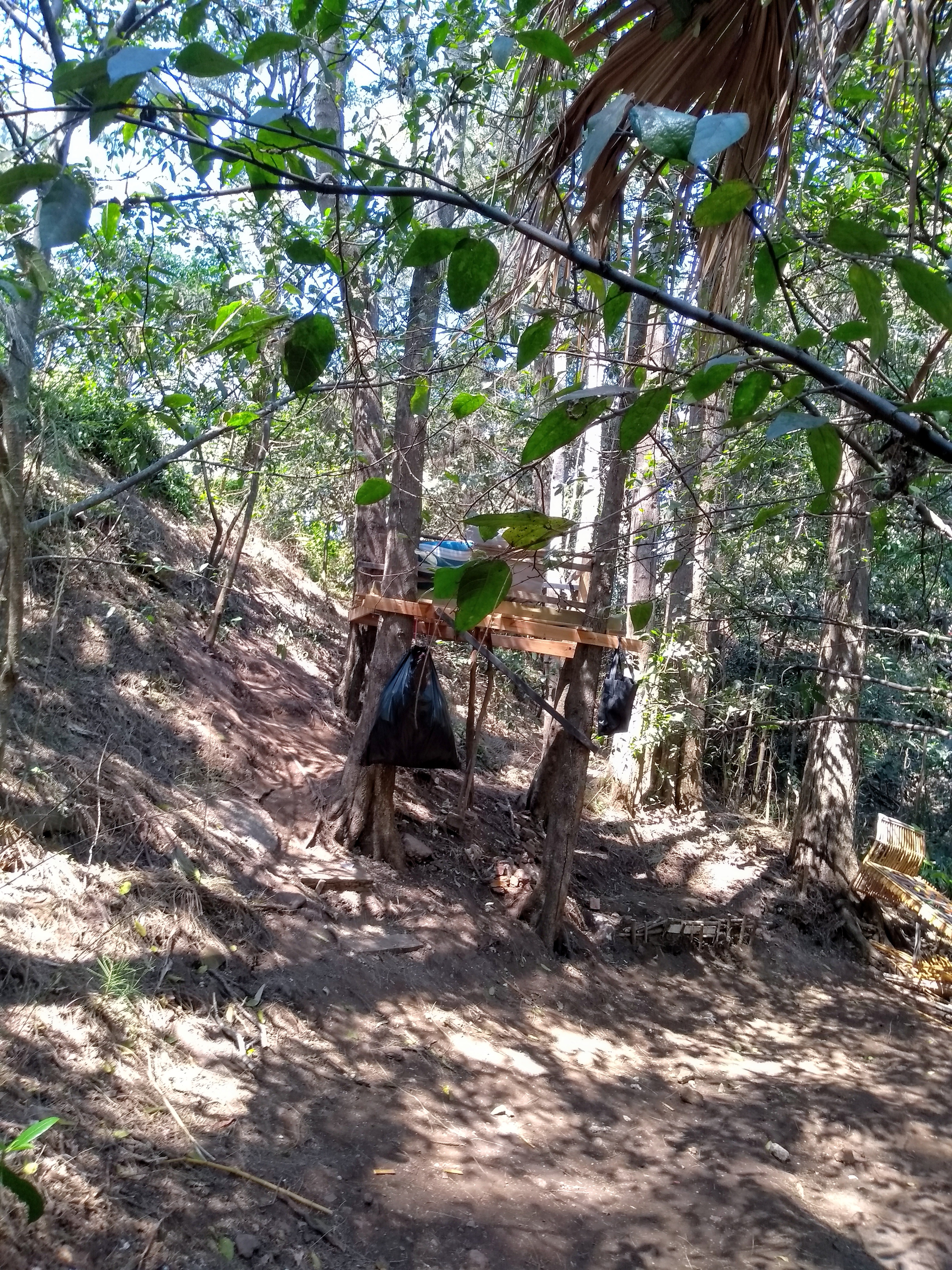
Please Look Out For Wildlife During Heatwave Events

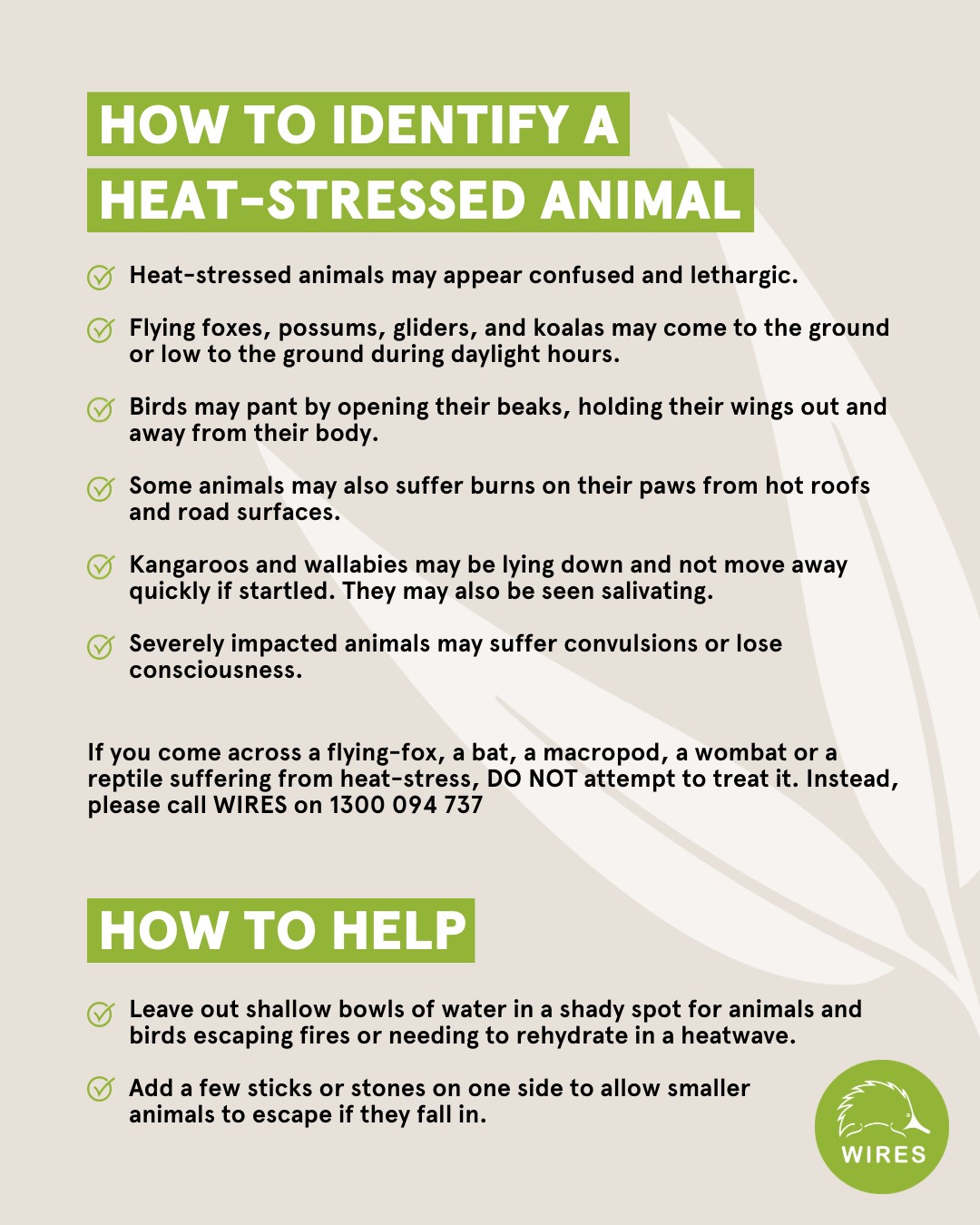
Palmgrove Park Avalon: New Bushcare Group
 Palmgrove Park Avalon is a remnant of the Spotted Gum forest that was once widespread on the lower slopes of the Pittwater peninsula. This bushland’s official name and forest type is Pittwater and Wagstaffe Endangered Ecological Community, endangered because so much has been cleared for suburban development. Canopy trees, smaller trees and shrubs, and ground layer plants make up this community. Though scattered remnant Spotted Gums remain on private land, there is little chance of seedlings surviving in gardens and lawns. More information HERE
Palmgrove Park Avalon is a remnant of the Spotted Gum forest that was once widespread on the lower slopes of the Pittwater peninsula. This bushland’s official name and forest type is Pittwater and Wagstaffe Endangered Ecological Community, endangered because so much has been cleared for suburban development. Canopy trees, smaller trees and shrubs, and ground layer plants make up this community. Though scattered remnant Spotted Gums remain on private land, there is little chance of seedlings surviving in gardens and lawns. More information HERE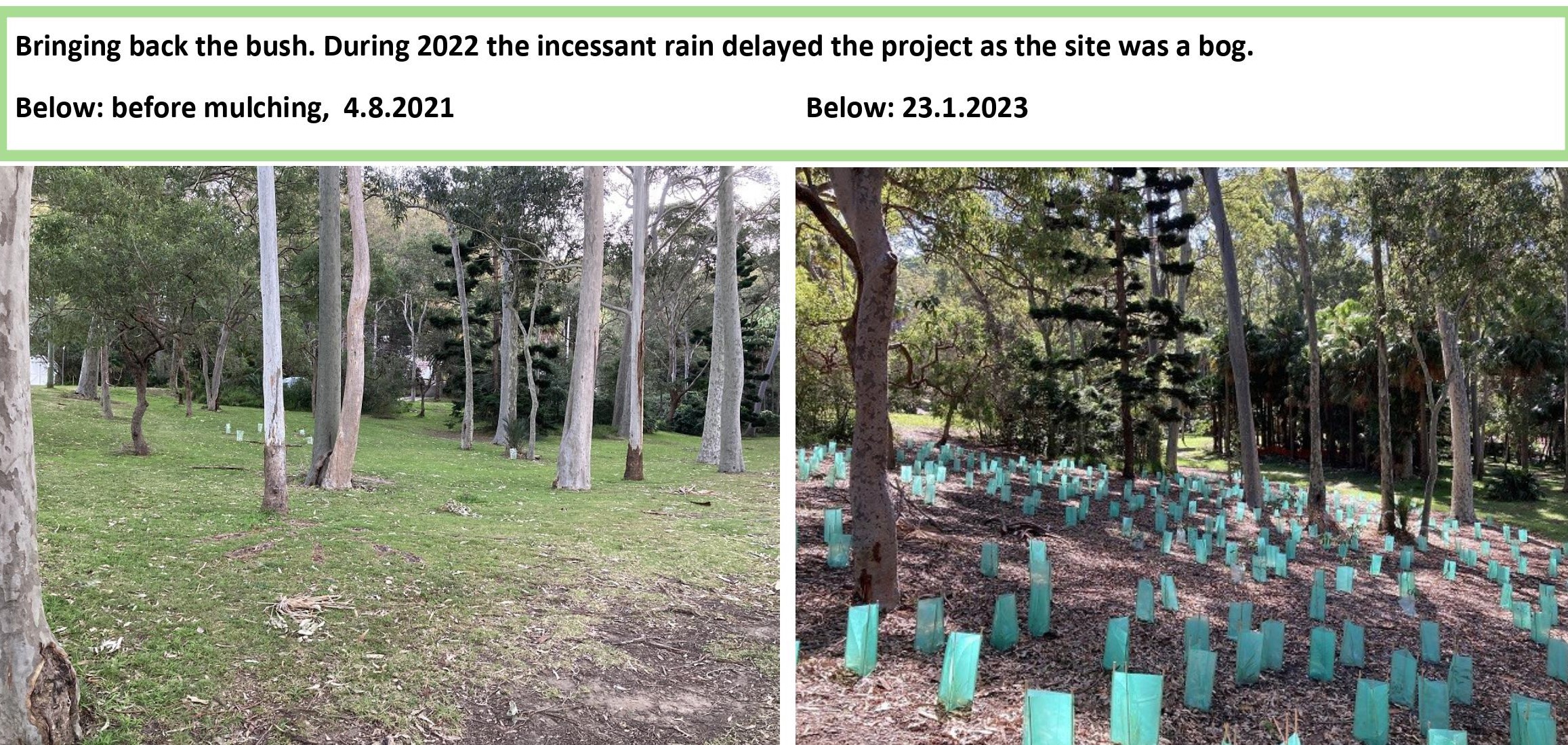
Report Fox Sightings
%20(1).jpg?timestamp=1675893929686)
Marine Wildlife Rescue Group On The Central Coast
A new wildlife group was launched on the Central Coast on Saturday, December 10, 2022.
Marine Wildlife Rescue Central Coast (MWRCC) had its official launch at The Entrance Boat Shed at 10am.
The group comprises current and former members of ASTR, ORRCA, Sea Shepherd, Greenpeace, WIRES and Wildlife ARC, as well as vets, academics, and people from all walks of life.
Well known marine wildlife advocate and activist Cathy Gilmore is spearheading the organisation.
“We believe that it is time the Central Coast looked after its own marine wildlife, and not be under the control or directed by groups that aren’t based locally,” Gilmore said.
“We have the local knowledge and are set up to respond and help injured animals more quickly.
“This also means that donations and money fundraised will go directly into helping our local marine creatures, and not get tied up elsewhere in the state.”
The organisation plans to have rehabilitation facilities and rescue kits placed in strategic locations around the region.
MWRCC will also be in touch with Indigenous groups to learn the traditional importance of the local marine environment and its inhabitants.
“We want to work with these groups and share knowledge between us,” Gilmore said.
“This is an opportunity to help save and protect our local marine wildlife, so if you have passion and commitment, then you are more than welcome to join us.”
Marine Wildlife Rescue Central Coast has a Facebook page where you may contact members. Visit: https://www.facebook.com/profile.php?id=100076317431064
- Ph: 0478 439 965
- Email: marinewildlifecc@gmail.com
- Instagram: marinewildliferescuecc

Watch Out - Shorebirds About
.JPG.opt1460x973o0,0s1460x973.jpg?timestamp=1663629195339)
Possums In Your Roof?: Do The Right Thing

Aviaries + Possum Release Sites Needed

Bushcare In Pittwater: Where + When
Where we work Which day What time
Avalon
Angophora Reserve 3rd Sunday 8:30 - 11:30am
Avalon Dunes 1st Sunday 8:30 - 11:30am
Avalon Golf Course 2nd Wednesday 3 - 5:30pm
Careel Creek 4th Saturday 8:30 - 11:30am
Toongari Reserve 3rd Saturday 9 - 12noon (8 - 11am in summer)
Bangalley Headland 2nd Sunday 9 to 12noon
Bayview
Winnererremy Bay 4th Sunday 9 to 12noon
Bilgola
North Bilgola Beach 3rd Monday 9 - 12noon
Algona Reserve 1st Saturday 9 - 12noon
Plateau Park 1st Friday 8:30 - 11:30am
Church Point
Browns Bay Reserve 1st Tuesday 9 - 12noon
McCarrs Creek Reserve Contact Bushcare Officer To be confirmed
Clareville
Old Wharf Reserve 3rd Saturday 8 - 11am
Elanora
Kundibah Reserve 4th Sunday 8:30 - 11:30am
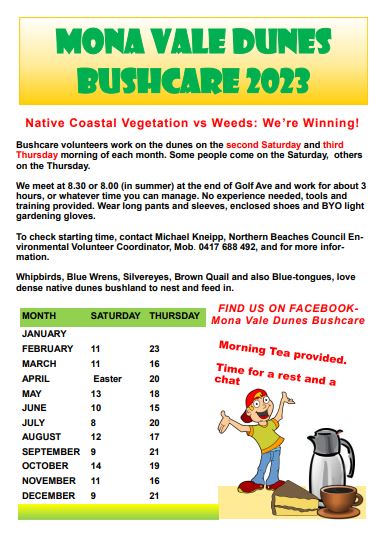 Mona Vale
Mona Vale Mona Vale Beach Basin 1st Saturday 8 - 11am
Mona Vale Dunes 2nd Saturday +3rd Thursday 8:30 - 11:30am
Newport
Bungan Beach 4th Sunday 9 - 12noon
Crescent Reserve 3rd Sunday 9 - 12noon
North Newport Beach 4th Saturday 8:30 - 11:30am
Porter Reserve 2nd Saturday 8 - 11am
North Narrabeen
Irrawong Reserve 2nd Saturday 2 - 5pm
Palm Beach
North Palm Beach Dunes 3rd Saturday 9 - 12noon
Scotland Island
Catherine Park 2nd Sunday 10 - 12:30pm
Elizabeth Park 1st Saturday 9 - 12noon
Pathilda Reserve 3rd Saturday 9 - 12noon
Warriewood
Warriewood Wetlands 1st Sunday 8:30 - 11:30am
Whale Beach
Norma Park 1st Friday 9 - 12noon
Western Foreshores
Coopers Point, Elvina Bay 2nd Sunday 10 - 1pm
Rocky Point, Elvina Bay 1st Monday 9 - 12noon
Friends Of Narrabeen Lagoon Catchment Activities

Gardens And Environment Groups And Organisations In Pittwater
- Ringtail Posse: 1 – February 2023; Anna Maria Monticelli: King Parrots/Water Dragons - Jacqui Scruby: Loggerhead Turtle - Lyn Millett OAM: Flying-Foxes - Kevin Murray: Our Backyard Frogs - Miranda Korzy: Brushtail Possums
- Ringtail Posse: 2 - March 2023; Kevin Murray: Tawny Frogmouth - Kayleigh Greig: Red-Bellied Black Snake - Bec Woods: Australian Water Dragon - Margaret Woods: Owlet-Nightjar - Hilary Green: Butcher Bird - Susan Sorensen: Wallaby
- Ringtail Posse 3 - April 2023: Jeffrey Quinn: Kookaburra, Tom Borg McGee: Kookaburra, Stephanie Galloway-Brown: Bandicoot, Joe Mills: Noisy Miner
- Ringtail Posse 4 May 2023 - Andrew Gregory: Powerful Owl, Marita Macrae: Pale-Lipped Or Gully Shadeskink, Jools Farrell: Whales & Seals, Nicole Romain: Yellow-Tailed Black Cockatoo
- Ringtail Posse 5: June 2023 - Lynleigh Greig OAM: Snakes, Dick Clarke: Diamond Python, Selena Griffith: Glossy Black-Cockatoo, Eric Gumley: Bandicoot
- Ringtail Posse 6: July 2023 - Sonja Elwood: Long-Nosed Bandicoot, Dr. Conny Harris: Swamp Wallaby, Neil Evers: Bandicoot, Bill Goddard: Bandicoot
- Ringtail Posse 7: August 2023 - Geoff Searl OAM: Tawny Frogmouth, Peter Macinnis: Echidna, Peter Carter: Ringtail Possum, Nathan Wellings; Kookaburra
- Ringtail Posse 8: September 2023 - Saving Sydney's Last Koalas; Logging Now Stopped In Future Koala Park By Minns Government - ''Is There Time To Save Sydney's Last Koalas Too?'' Asks: John Illingsworth, WIRES, Sydney Wildlife Rescue, Save Sydney Koalas, The Sydney Basin Koala Network, The Help Save The Wildlife & Bushlands In Campbelltown Group, Appin Koalas Animal Rescue Service, Patricia and Barry Durham, Sue Gay, Save Mt. Gilead, Paola Torti Of The International Koala Intervention Group
- Ringtail Posse 9: October 2023 - David Palmer OAM: Bandicoots, Helen Pearce: Brushtail Possum, Amina Kitching: Goanna, David Goudie: Ringtails Possums + Bandicoots + Owls
- Mother Brushtail Killed On Barrenjoey Road: Baby Cried All Night - Powerful Owl Struck At Same Time At Careel Bay During Owlet Fledgling Season: calls for mitigation measures - The List of what you can do for those who ask 'What You I Do' as requested
- Ringtail Posse 10: November 2023 - Stop Wildlife Roadkill Group: You Can Help By Using The Wildlife Incident Mapping Website
More Green Space To Enhance Liveability In NSW Communities: Metropolitan Greenspace Program + Community Gardens Program Grants Now Open
- Metropolitan Greenspace Program. All councils in the Greater Sydney region and Central Coast Council are eligible and encouraged to apply by 29 April 2024. Successful applicants will be announced in June 2024.
- Places to Roam Community Gardens program. Applications close on 29 March 2024.
NSW Welcomes New National Varroa Mite Management Plan And Funding To Kick Start Industry Implementation
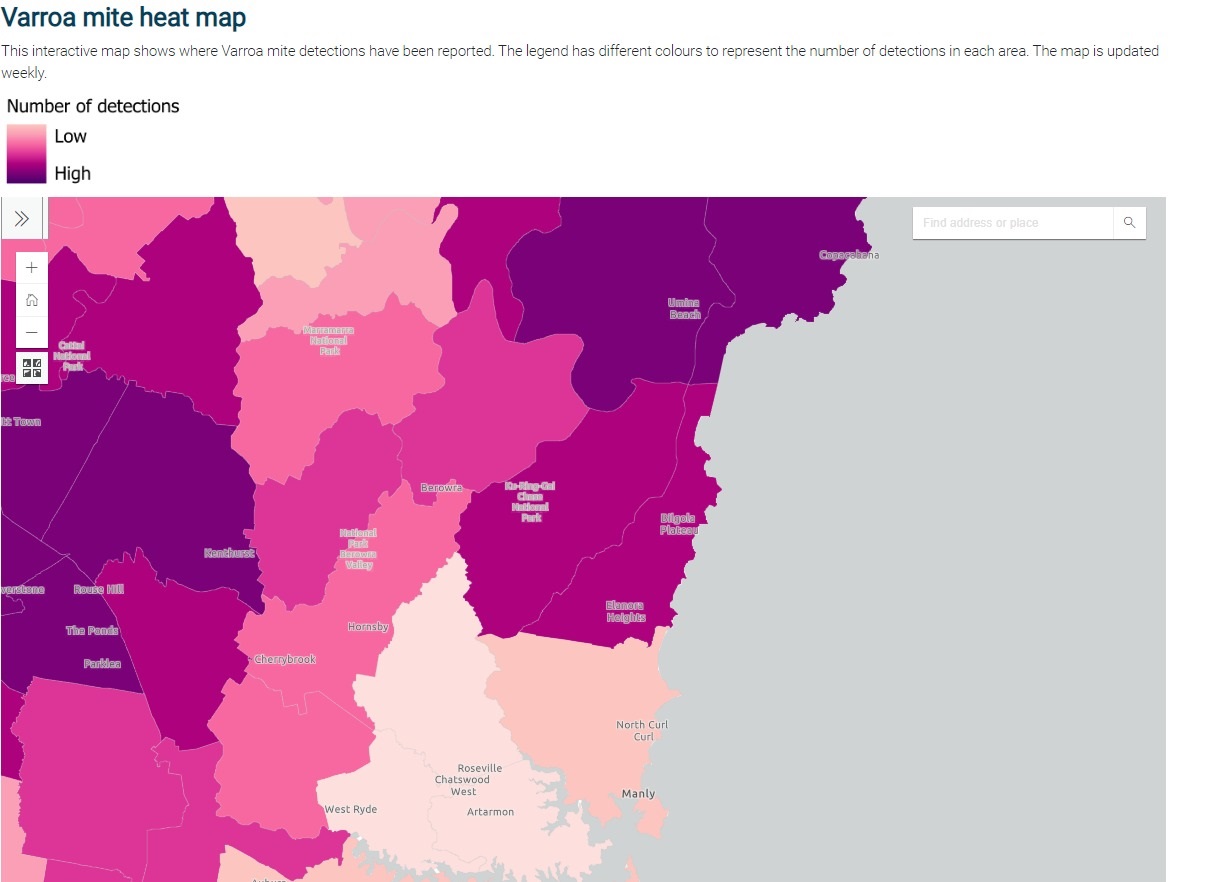
Community Board For Central Coast Wetlands Appointed
Vandals Destroy Endangered Trees In Jaaningga Nature Reserve
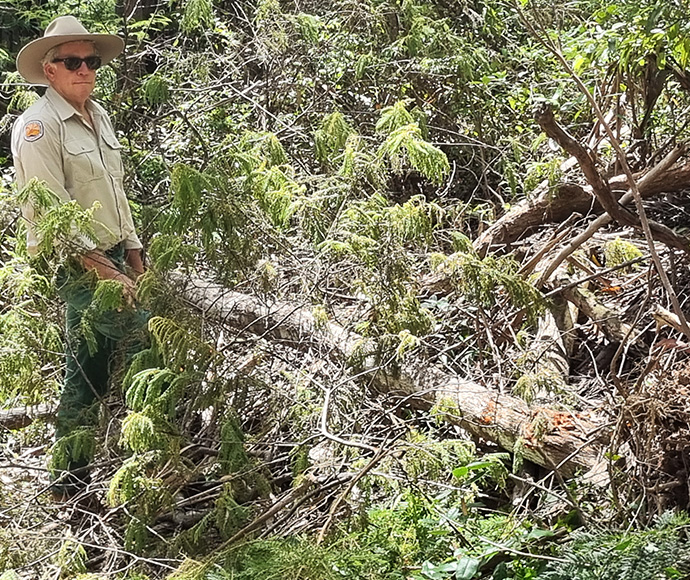 The NSW National Parks and Wildlife Service (NPWS) is investigating the destruction of rare native trees in a nature reserve south of Bellingen.
The NSW National Parks and Wildlife Service (NPWS) is investigating the destruction of rare native trees in a nature reserve south of Bellingen.2023 Annual Air Quality Statement
- Air quality in 2023 deteriorated marginally compared to 2022. However, 2022 was the state's best air quality on record due mainly to cooler, wetter weather which contributed to fewer bushfires, hazard reduction burns and windblown dust.
- Four of the state's 16 air quality regions met national standards 100% of the time in 2023. These were: Central Coast, Lake Macquarie, Lower Hunter, and Southern Tablelands.
- Air quality standards were met at least 96% of the time in all regions, except for Newcastle Local, which met standards 84% of the time, due to sea salt raising PM10 levels at Stockton.
- Across the 16 regions, there were 47 days in 2023 when at least one national standard was not met. This compares with 19 days in 2022.
- Particle pollution PM10 and PM2.5 continues to be the main source of air pollution mostly due to hazard reduction burns, bushfires, wood heater emissions, and dust. Particle concentrations increased by approximately 30% from 2022.
- Of the gaseous pollutants, sulphur dioxide levels exceeded national standards on 2 days at Muswellbrook station in the Upper Hunter region, and Bradfield Highway roadside monitoring station did not meet the nitrogen dioxide annual standard in 2023. Ozone levels exceeded national standards on 3 days.
- New South Wales experienced a warmer and drier year compared to 2022, but rainfall from late spring moderated the intensifying hot and dry conditions, and likely as a result the air quality.
- Rural areas experienced fewer hours of dust on average, despite expanding drought conditions.
Dubbo Landholders Protecting Our Environment
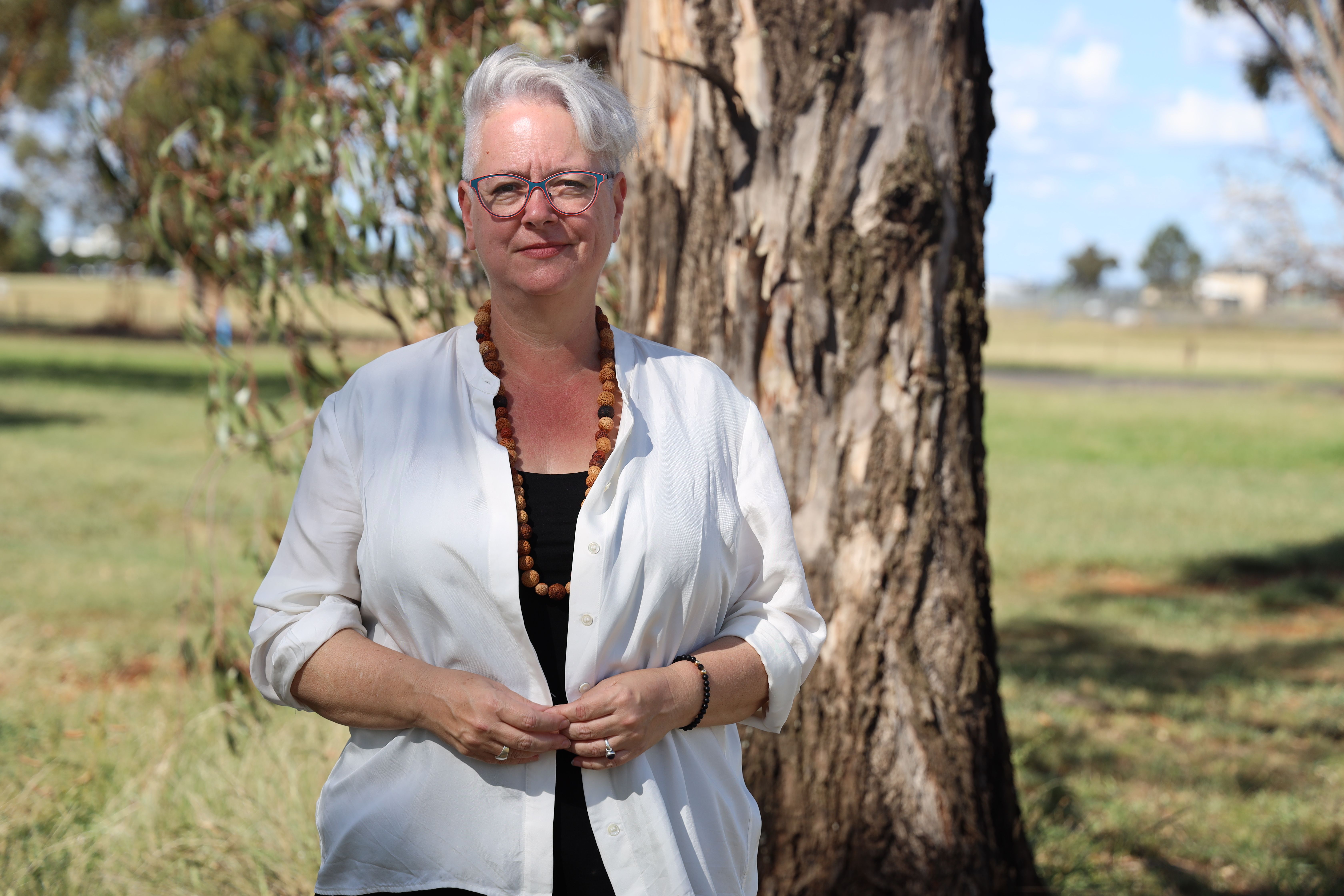
State-Of-The-Art Platypus Rescue HQ Opens In Dubbo
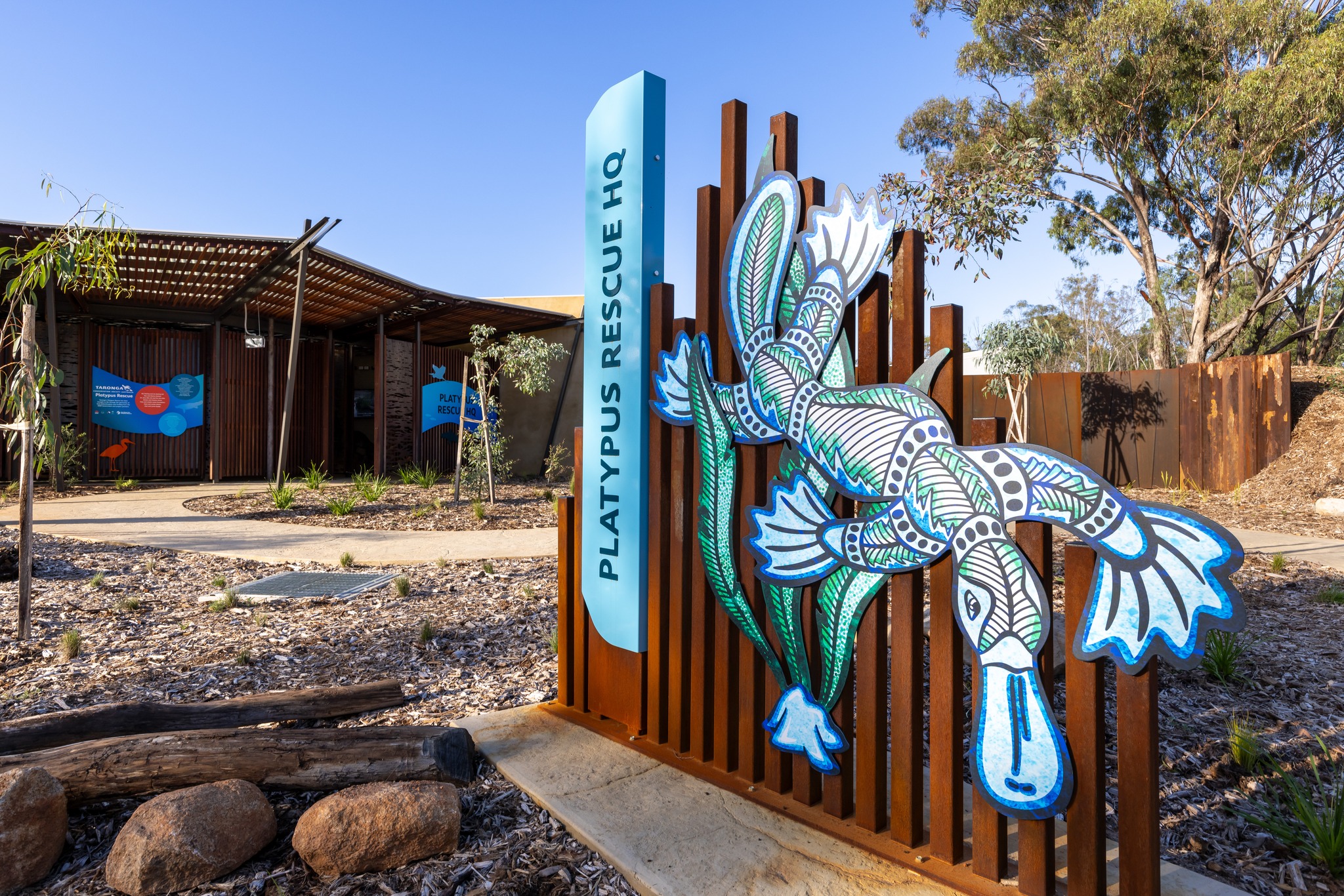
Record Funding To Support Landcare And Deliver On-Ground Landcare Projects
- Strengthening the capacity of Landcarers which will result in effective, efficient support to landcarer volunteers, farmers and the community ensuring effective collaboration and partnerships between Landcare groups, Local Land Services, other government agencies
- Landcare NSW leveraging funding opportunities to maximise socio-economic and environmental outcomes.
- Central West Lachlan Landcare Inc.
- North West Regional Landcarers Inc.
- South East Landcare Inc.
- Greater Sydney Landcare Network Incorporated.
- West Hume Landcare Inc.
- Holbrook Landcare Group Ltd.
- Western Landcare NSW Inc.
- Western Murray Land Improvement Group.
- New England Landcare Network, Inc.
- Corowa District Landcare Inc.
- Mid Coast 2 Tops Landcare Connection Inc.
- Hunter Region Landcare Network Inc.
- Ricegrowers' Association Of Australia Inc.
- North Coast Regional Landcare Network (NSW).
- Watershed Landcare Group Incorporated.
- Murrumbidgee Landcare Association Incorporated.
QLD Government Quietly Signs Off On Vulcan South; A 770 Hectares Of Koala Habitat Clearing/Killing Coal Mine
Queensland Government Approval Of Winchester South Mega Mine Approval A Loss For Queenslanders-Koalas-Climate: To Clear/Kill 2000+ Hectares Of Wildlife Habitat
- Clearing at least 2000 hectares of habitat home to endangered and threatened species including koalas, the Australian painted snipe, the ornamental snake, and squatter pigeon. The coordinator general’s assessment identified more koala habitat than Whitehaven originally noted.
- Draining 155 million litres of groundwater on average each year, with a potential maximum rate of 280 million litres each year, into the mine pits.
- Leaving three un-rehabilitated pit voids (giant holes where mining has occurred) at the end of the mine's life. These pits will continue to drain water from the surrounding area and concentrate heavy metals and salts in the voids.
- Dumping mine wastewater into the Isaac River. It is standard practice for Central QLD coal mines to release wastewater into nearby rivers, which ultimately flow into the Great Barrier Reef lagoon.
Government Must Get Tougher On Unfit Mining Companies After Russell Vale Debacle
- failure to maintain and operate pollution control equipment leading to pollution of Bellambi Gully
- illegal storage of waste
- repeat breaches of mine procedures leading to shut down of the Wongawilli mine over serious safety issues in accordance with section 51 of the Work Health and Safety (Mines and Petroleum Sites) Act 2013
- failure to pay rents and levies
- failure to undertake works in accordance with the conditions of approval
- failure to hold community consultative committee meetings
- failure to comply with a Development Control Order (DCO) issued by the NSW Planning Minister at the Russell Vale Coal Mine.
Hundreds Of Dead Fish And A Four Day Delay: Beetaloo Fish Kill Exposes Inability Of NT Government To Respond To Environmental Incidents
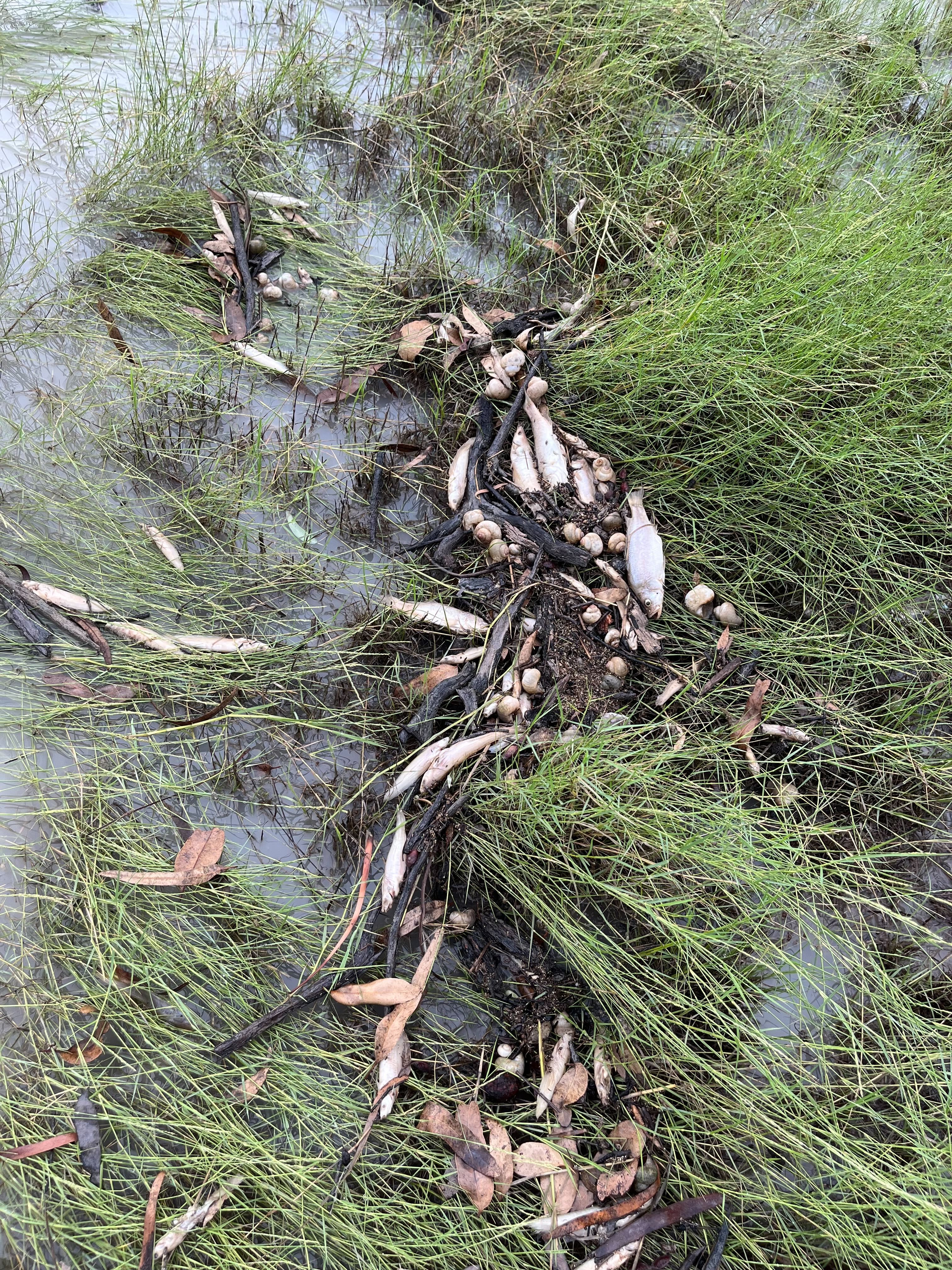
The world’s spectacular animal migrations are dwindling. Fishing, fences and development are fast-tracking extinctions
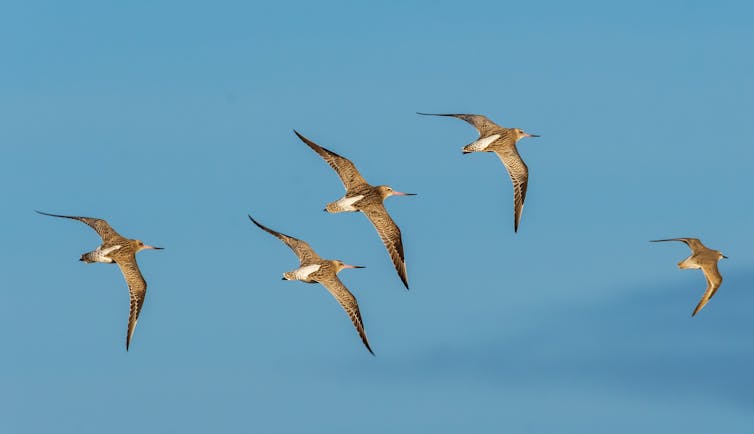
In 1875, trillions of Rocky Mountain locusts gathered and began migrating across the western United States in search of food. The enormous swarm covered an area larger than California. Three decades later, these grasshoppers were extinct.
This fate is all too common for migratory species. Their journeys can make them especially vulnerable to hunting or fishing. They may move between countries, meaning protecting the species in one jurisdiction isn’t enough. And it’s hard for us to even know if they’re in trouble.
Today, we get a global glimpse of how migratory species are faring, in the first-ever stocktake produced by the United Nations Convention on the Conservation of Migratory Species. The report shows falling populations in close to half (44%) the 1,189 species tracked by the convention. The problem is much worse underwater – 90% of migratory fish species are threatened with extinction.
Their decline is not inevitable. After all, the migratory humpback whale was headed for rapid extinction – until we stopped whaling.
Why Are Migratory Species At Higher Risk?
Every year, birds weighing about 300 grams leave Siberia and fly non-stop to Australia. Some bar-tailed godwits fly 13,000 km without stopping – one of the longest known continuous migrations.
Their journeys are critical for their life cycles – to find food, mates or a better climate. To undertake these journeys, animals must be in good condition with plenty of fat stores, and they must have safe flyways, swimways and pathways.
On land, roads and fences carve up migratory routes for animals like wildebeest. At sea, fishing trawlers chase migrating schools of fish and often accidentally collect sea turtles, albatrosses and whales. On seashores, development or land reclamation take away vital resting points for migrating shorebirds.
What the report shows us is that migration between countries is getting harder and harder. While a few species are benefiting greatly from farming and artificial wetlands, many more are being severely harmed.
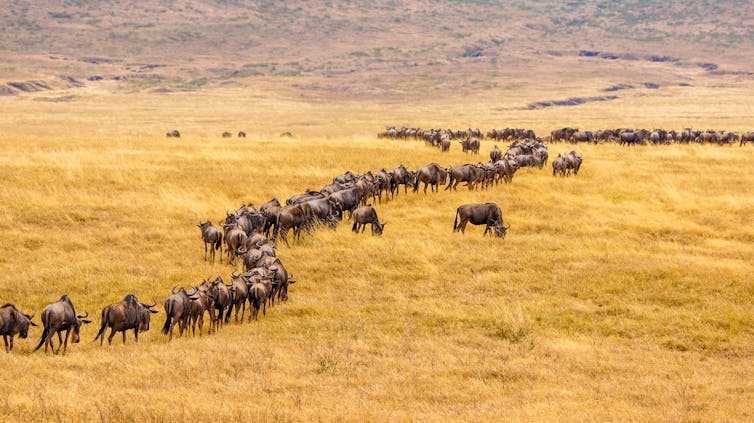
Overexploitation Is The Top Risk
Human exploitation of migratory species – taken as food, bycatch or exterminated as “pest” species – is the main reason why these species are in decline.
Animals often migrate in large groups, making them an appealing target for hunting or fishing. This is why we no longer have species such as the passenger pigeon, once numbering in their billions but hunted to extinction in 100 years.
Marine species are often out of sight, out of mind. But this report is a huge red flag for ocean ecosystems. Oceanic shark and ray populations have fallen 71% since 1970, which coincides with an 18 fold increase in fishing pressure. Bycatch in commercial fisheries is a huge problem for sharks, turtles, mammals and birds, but it can be massively reduced with existing technology, if deployed across all fleets
Overexploitation can be stopped. In 1981, Australia and Japan agreed to stop hunting Latham’s Snipe, a migratory shorebird that travels between the two countries. It’s the same story for humpback whales, which have returned in large numbers – and created a new industry, whale-watching.
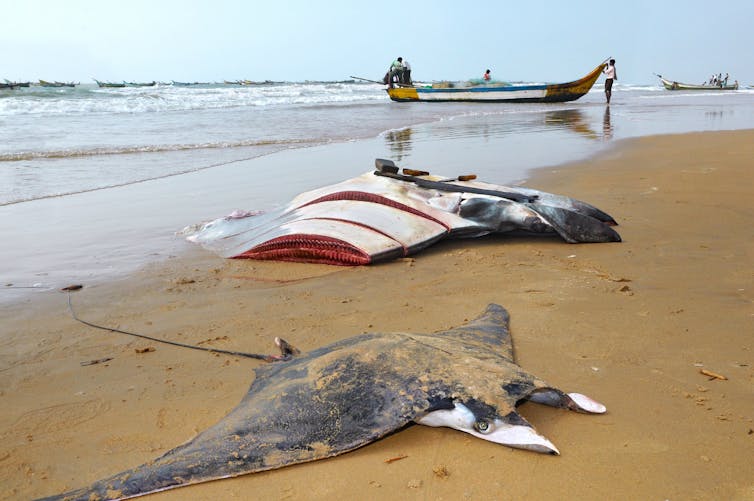
On Fences And Stepping Stones
Direct killing of migratory animals isn’t the only threat. Clearing forests and grassland for farming destroys habitat. Light pollution can mess with navigation, climate change plays havoc with the timing of migration, and underwater noise pollution can confuse marine migrants. Even simple actions like building fences, roads and dams can disrupt migrations over land and through rivers.
Many migratory species need stepping stones: resting sites linking up their whole migratory route. If just one site is lost – or if animals are intensely hunted there – the whole chain can collapse.
Once identified, key areas have to be protected, which is where we often get stuck. But there are glimmers of hope. Last year conservation of these areas in the ocean got a boost when the world’s nations agreed to better protect the high seas beyond national jurisdictions, which fills a planet-sized gap in biodiversity governance.
What The Report Didn’t Cover
This is a groundbreaking report, but it has limitations. First, it only covers species listed under the UN convention, a tiny fraction of all migratory species. Listing unlocks stronger protections and urgently needs to be rolled out to more species.
For instance, around 60 migratory fish species are covered – but more than 1,700 others are not. Of these unprotected species, almost 25% are threatened, near threatened or there’s not enough data to know.
That’s to say nothing of insects. To date, only one insect is listed on the convention, the famous Monarch butterfly which migrates from the United States to Mexico. But millions of tonnes of insects migrate through the airspace each year, and we have largely no idea what they are, where they’re going or how they’re faring.
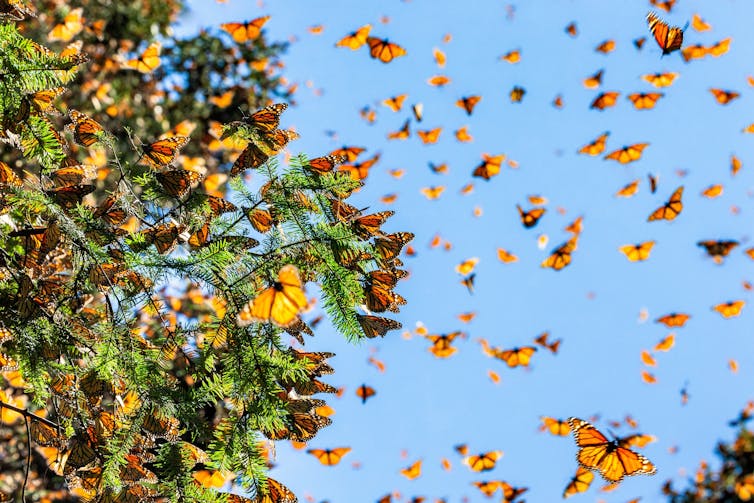
Can We Save These Species?
We now know much more about why migratory species are in decline. But we’re still not acting to protect them adequately.
More than 90% of the world’s migratory birds aren’t adequately protected by national parks and other protected areas. Only 8% of the world’s protected land is joined up, preventing migrating animals from moving safely across their routes. Because of this, animals have to make daring sorties across unprotected land or sea to complete their journeys.
So what can be done? Agreements between countries can create more action, but in practice, each country needs to actually do what it has already promised.
Policymakers can turn to a bevy of new tools, including Important Bird & Biodiversity Areas and the Migratory Connectivity in the Ocean system, to provide easy access to knowledge on how migratory species use and move through the world.
Animal migrations have collapsed on our watch. We need to do all we can to stem the losses and begin recovery if we want future generations to be able to experience nature in all its glory.![]()
Richard Fuller, Professor in Biodiversity and Conservation, The University of Queensland; Daniel Dunn, A/Prof of Marine Conservation Science & Director of the Centre for Biodiversity and Conservation Science (CBCS), The University of Queensland, and Lily Bentley, Postdoctoral research fellow, The University of Queensland
This article is republished from The Conversation under a Creative Commons license. Read the original article.
The good news: 25 Australian birds are now at less risk of extinction. The bad news: 29 are gone and 4 more might be
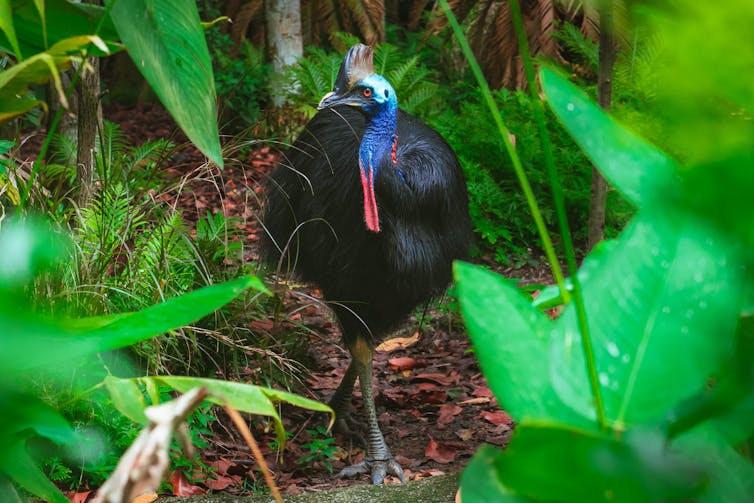
What does it mean to save threatened species? How often do we achieve it? And how often do we fail? Our new research answers these questions for Australian birds.
One of the goals of conservation is to reduce the risk of a species becoming extinct. While this might be seen as a low bar for conservation managers, it is seldom achieved. A new set of research papers on the conservation of Australian birds looks at cases of success over the past 30 years and where we have failed over the past 200.
We found extinction risks had reduced for 25 bird species and subspecies in at least one of the decades between 1990 and 2020. Nine of these would have gone extinct if not for hard work and expertise to prevent it happening.
The most effective action has been eradicating invasive species from islands. This work benefited 13 birds.
Most Australians approve of killing invasive species to save threatened species. They have good reason: it works.
What Were The Successes?
Nine of these successes are seabirds nesting on Macquarie Island. The program there was so successful it had a significant positive impact on Australia’s Red List Index for birds, a way of measuring overall progress on threatened species status.
This success also changed the average characteristics of Australian threatened birds. Before the pest eradications on Macquarie Island, large seabirds dominated the profile of the threatened Australian birds. Now the average threatened bird is smaller and lives on land.
Further programs have the potential to have a similar impact. The likely huge benefits from eradicating rodents from Lord Howe Island, for example, are yet to show up in these figures.
Another four birds benefited simply from having their habitat protected. Protection of rainforest reduced extinction risk for the southern cassowary (Casuarius casuarius) and Albert’s lyrebird (Menura alberti). One of the largest national parks in New South Wales was acquired for the Bulloo grey grasswren (Amytornis barbatus barbatus). The Tasmanian wedge-tailed eagle (Aquila audax fleayi) also had more of its nesting habitat protected.
For another species, simply enforcing the law reduced the threat. In south-western Australia, culling of Muir’s corella (Cacatua pastinator pastinator) for agriculture threatened it with extinction. Now, with better protection, there are thousands.
Some threatened birds have benefited from intensive interventions by dedicated conservation agencies, non-government organisations and individuals.
Translocations of Gould’s petrels to new breeding islands and of eastern bristlebirds (Dasyornis brachypterus) to heathlands were exemplary.
Very few glossy black-cockatoos (Calyptorhynchus lathami halmaturinus) on Kangaroo Island were nesting successfully before their nests were protected from predatory possums.
Rats twice almost wiped out Norfolk Island green parrots Cyanoramphus novaezelandiae cookii. Their population has increased ten-fold since nests have been better protected.
These examples show our society can make changes that help to prevent extinctions.
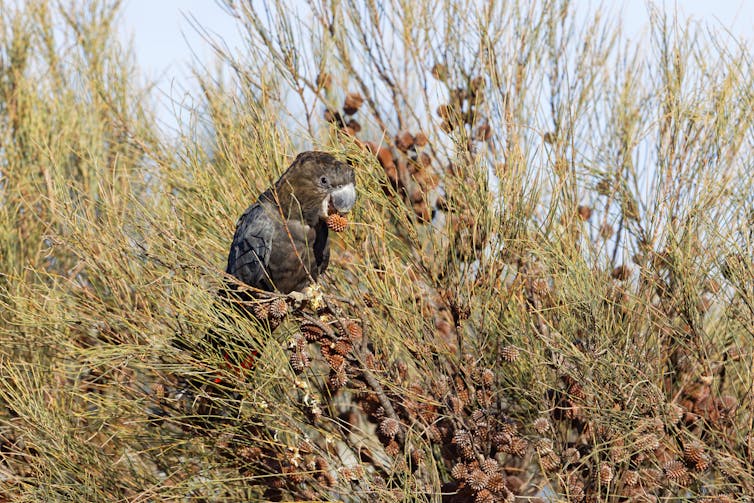
There Have Also Been Setbacks
Our stories contain salutary lessons too. The pathway to recovery can have reversals.
In the past decade, Gould’s petrel and the bristlebird have suffered setbacks due to new or escalating threats. A new report suggests Tasmanian wind farms are killing and injuring significant numbers of eagles – and many more windfarms are planned.
Our analysis of improvements in the conservation outlook for Australian birds was complemented with an assessment of Australian bird extinctions. Sadly, we found extinctions are continuing.
Even with the conservation effort of the past 30 years since Australia’s first endangered species legislation, three birds are gone forever. The Mount Lofty Ranges spotted quail-thrush (Cinclosoma punctatum anachoreta), white-chested white-eye (Zosterops albogularis) and southern star finch (Neochmia ruficauda ruficauda) were still surviving in the 1990s, but were extinct by 2010.
The number of extinct birds has risen steadily since Australia was colonised in 1788. There was an initial burst of extinctions on islands, particularly big birds that were good to eat and probably had small populations. More recent losses have tended to be small birds whose mainland habitat has been cleared or modified.
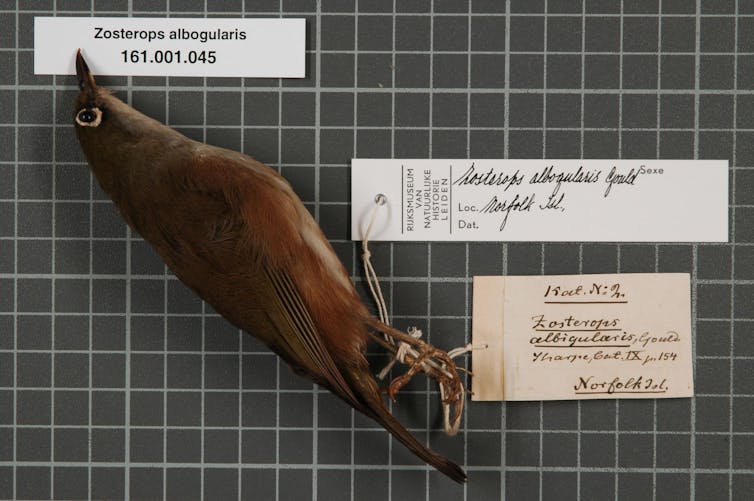
29 Birds Are Gone, But We Can Halt The Losses
At present, 29 Australian birds are known to have become extinct. It’s a lower percentage than for mammals but still far too high.
Grave fears are held for another four – the Tiwi hooded robin (Melanodryas cucullata melvillensis), buff-breasted button-quail (Turnix olivii), Coxen’s fig-parrot (Cyclopsitta diophthalma coxeni) and Cape Range rufous grasswren (Amytornis striatus parvus). We don’t know whether they persist or not.
For the 29 extinct birds, we can do nothing. The important lesson is that this number of losses need grow no more. We have the resources and skills to prevent extinction.
A recent court order halting forestry activity in swift parrot (Lathamus discolor) habitat suggests at least some environmental laws are making a difference.
Other judgments expose legal shortcomings and show how much more needs to be done. The revisions of national environmental laws now being negotiated provide an opportunity to fill loopholes through which threatened species might fall.
Extinctions are neither accidental nor deliberate. They are a failure of policy and people.
However, the examples of birds whose risk of extinction has declined show what can be achieved. While some of these improvements were mostly a matter of good luck, many were the result of hard work, advocacy, investment and well-judged interventions. And they give the world hope.![]()
John Woinarski, Professor of Conservation Biology, Charles Darwin University; Sarah Legge, Professor of Wildlife Ecology, Australian National University, and Stephen Garnett, Professor of Conservation and Sustainable Livelihoods, Charles Darwin University
This article is republished from The Conversation under a Creative Commons license. Read the original article.
‘Fascinating and troubling’: Australians would rather save a single human life than prevent an entire species from becoming extinct
John Woinarski, Charles Darwin University; Kerstin Zander, Charles Darwin University, and Stephen Garnett, Charles Darwin UniversityAustralia is in the grip of an escalating extinction crisis. Since colonisation, 100 native plant and animal species have become formally listed as extinct due to human activities. The actual number is undoubtedly far higher.
Surveys suggest Australians want to prevent extinctions, regardless of the financial cost. But when it comes to the crunch, how much do we really care?
In emergency situations, there is a long-held convention that official responders such as firefighters first attempt to save human life, then property and infrastructure, then natural assets.
Our research published today investigated whether this convention reflects community values. We found the people we surveyed valued one human life more than the extinction of an entire non-human species – a result both fascinating and troubling.
What Are We Willing To Lose?
Catastrophic events force us to make hard choices about what to save and what to abandon. In such emergencies, our choices reveal in stark detail the values we ascribe to different types of “assets”, including plant and animal species.
Our priorities will become even more crucial under climate change, which is bringing worse bushfires and other environmental catastrophes. If nature is always saved last, we can expect recurring biodiversity losses, including extinctions.
The unprecedented loss of biodiversity in the Black Summer fires was a taste of what’s to come. The fires burnt the entire known range of more than 500 plant and animal species and at least half the range of more than 100 threatened species. The catastrophe led to at least one extinction – of a mealybug species in Western Australia.
The losses prompted reflection on our priorities. The final report of a New South Wales parliamentary inquiry into the bushfires, for example, questioned if this hierarchy of protection should always apply.
Our new research investigated community values on this issue. The findings were illuminating.
Making The Hard Choices
The survey involved 2,139 Australians. Respondents ranked the assets they would save in a hypothetical bushfire, choosing from the following options:
- a person not warned to evacuate
- a person who had ignored advice to evacuate (and so implicitly taken responsibility for their own safety)
- a population of 50 koalas (of which many other populations exist elsewhere)
- one of only two populations of a wallaby species
- the only population of a native snail species (which would become extinct if burnt)
- the only population of a native shrub species (which would become extinct if burnt)
- a flock of 50 sheep
- a house, shed and tractor
- two items of Indigenous cultural significance (a rock art gallery and a tree carving).
Survey respondents overwhelmingly gave the highest ranking to the two options involving saving a human life – even if that person had been repeatedly told to evacuate and even if, as a consequence, a snail or shrub species became extinct.
Saving a person who had not received evacuation warnings was rated highest, ahead of saving a person who ignored evacuation advice. Saving the koala population was next preferred, followed by saving the wallaby population.
The remaining options had negative scores, meaning that respondents were more likely to choose them as least important than most important.
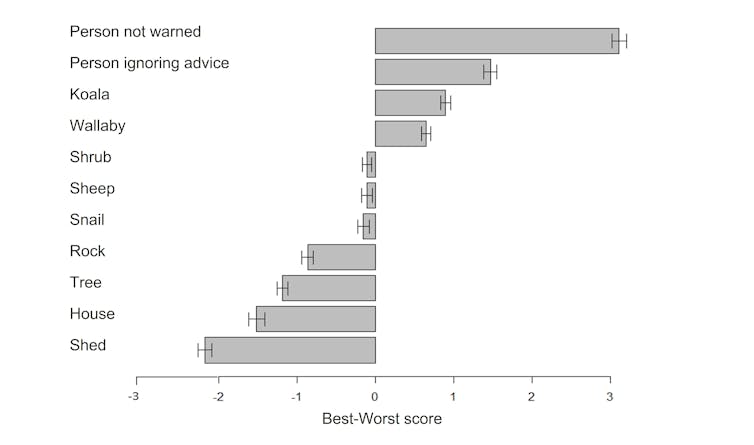
Amongst the biodiversity assets, decisions based on conservation consequences would have meant the top priority was preventing the extinction of the snail and shrub populations. Next in line would have been the wallaby population, then a relatively less consequential loss of koalas.
But the results were the opposite: people prioritised the koalas over the wallabies, with less concern for the shrub and the snail. Ranked even lower were the items of Indigenous cultural significance. Saving the house and shed had lowest rankings.
The Results Are Revealing
We take several key messages from the survey results.
First, the conventional hierarchy of protection during fire – prioritising human life, then infrastructure, then biodiversity – does not always reflect societal values. Sometimes, protecting natural assets is more important than protecting at least some infrastructure. In the Black Summer fires, the attempts to save crucial populations of the imperilled Wollemi Pine showed such protection of biodiversity assets is possible.
Second, our society values one human life more than the millions of years of evolution that can be eclipsed almost instantaneously in the extinction of another species.
Third, our regard for nature is far from egalitarian. In this case, the preference for saving koalas is consistent with previous studies that show we care far more for iconic cute mammals than other species.
Fourth, animal welfare issues may trump consideration for conservation consequences. We suspect that the haunting imagery of koalas suffering in the Black Summer wildfires may have contributed to them being prioritised ahead of more imperilled species.
And finally, our results were troubling for the conservation of poorly known species, the extinctions of which are increasing around the world. These losses have been largely disregarded or unmourned by society.
It suggests the case for saving such species needs to be better made. Australia’s invertebrate fauna is highly distinctive, fascinating and vital for the health of our ecosystems. To prevent mass losses of invertebrate species, we must take action now.

Rethinking Our Priorities?
The world is becoming more perilous. There’s a high risk of losing much of the nature that surrounds us, supports us and helps define us as Australians.
We must think carefully about what future we bequeath to our children and to future generations. This may require reconsidering our priorities – and in some cases, making different choices.![]()
John Woinarski, Professor of Conservation Biology, Charles Darwin University; Kerstin Zander, Professor of Environmental Economics, Charles Darwin University, and Stephen Garnett, Professor of Conservation and Sustainable Livelihoods, Charles Darwin University
This article is republished from The Conversation under a Creative Commons license. Read the original article.
Can we be inoculated against climate misinformation? Yes – if we prebunk rather than debunk

Last year, the world experienced the hottest day ever recorded, as we endured the first year where temperatures were 1.5°C warmer than the pre-industrial era. The link between extreme events and climate change is clearer than ever. But that doesn’t mean climate misinformation has stopped. Far from it.
Misleading or incorrect information on climate still spreads like wildfire, even during the angry northern summer of 2023. Politicians falsely claimed the heatwaves were “normal” for summer. Conspiracy theorists claimed the devastating fires in Hawaii were ignited by government lasers.
People producing misinformation have shifted tactics, too, often moving from the old denial (claiming climate change isn’t happening) to the new denial (questioning climate solutions). Spreading doubt and scepticism has hamstrung our response to the enormous threat of climate change. And with sophisticated generative AI making it easy to generate plausible lies, it could become an even bigger issue.
The problem is, debunking misinformation is often not sufficient and you run the risk of giving false information credibility when you have to debunk it. Indeed, a catchy lie can often stay in people’s heads while sober facts are forgotten.
But there’s a new option: the prebunking method. Rather than waiting for misinformation to spread, you lay out clear, accurate information in advance – along with describing common manipulation techniques. Prebunking often has a better chance of success, according to recent research from co-author Sander van Linden.
How Does Prebunking Work?
Misinformation spreads much like a virus. The way to protect ourselves and everyone else is similar: through vaccination. Psychological inoculation via prebunking acts like a vaccine and reduces the probability of infection. (We focus on misinformation here, which is shared accidentally, not disinformation, which is where people deliberately spread information they know to be false).
If you’re forewarned about dodgy claims and questionable techniques, you’re more likely to be sceptical when you come across a YouTube video claiming electric cars are dirtier than those with internal combustion engines, or a Facebook page suggesting offshore wind turbines will kill whales.
Inoculation is not just a metaphor. By exposing us to a weakened form of the types of misinformation we might see in the future and giving us ways to identify it, we reduce the chance false information takes root in our psyches.
Scientists have tested these methods with some success. In one study exploring ways of countering anti-vaccination misinformation, researchers created simple videos to warn people manipulators might try to influence their thinking about vaccination with anecdotes or scary images rather than evidence.
They also gave people relevant facts about how low the actual injury rate from vaccines is (around two injuries per million). The result: compared to a control group, people with the psychological inoculation were more likely to recognise misleading rhetoric, less likely to share this type of content with others, and more likely to want to get vaccinated.
Similar studies have been conducted on climate misinformation. Here, one group was forewarned that politically motivated actors will try to make it seem as if there was a lot of disagreement on the causes of climate change by appealing to fake experts and bogus petitions, while in fact 97% or more of climate scientists have concluded humans are causing climate change. This inoculation proved effective.
The success of these early studies has spurred social media companies such as Meta to adopt the technique. You can now find prebunking efforts on Meta sites such as Facebook and Instagram intended to protect people against common misinformation techniques, such as cherry-picking isolated data.
Prebunking In Practice
A hotter world will experience increasing climate extremes and more fire. Even though many of the fires we have seen in recent years in Australia, Hawaii, Canada and now Chile are the worst on record, climate misinformation actors routinely try to minimise their severity.
As an example, let’s prebunk claims likely to circulate after the next big fire.
1. The claim: “Climate change is a hoax – wildfires have always been a part of nature.”
How to prebunk it: ahead of fire seasons, scientists can demonstrate claims like this rely on the “false equivalence” logical fallacy. Misinformation falsely equates the recent rise in extreme weather events with natural events of the past. A devastating fire 100 years ago does not disprove the trend towards more fires and larger fires.
2. Claim: “Bushfires are caused by arsonists.”
How to prebunk it: media professionals have an important responsibility here in fact-checking information before publishing or broadcasting. Media can give information on the most common causes of bushfires, from lightning (about 50%) to accidental fires to arson. Media claims arsonists were the main cause of the unprecedented 2019-2020 Black Summer fires in Australia were used by climate deniers worldwide, even though arson was far from the main cause.
3. Claim: “The government is using bushfires as an excuse to bring in climate regulations.”
How to prebunk it: explain this recycled conspiracy theory is likely to circulate. Point out how it was used to claim COVID-19 lockdowns were a government ploy to soften people up for climate lockdowns (which never happened). Show how government agencies can and do communicate openly about why climate regulations are necessary and how they are intended to stave off the worst damage.
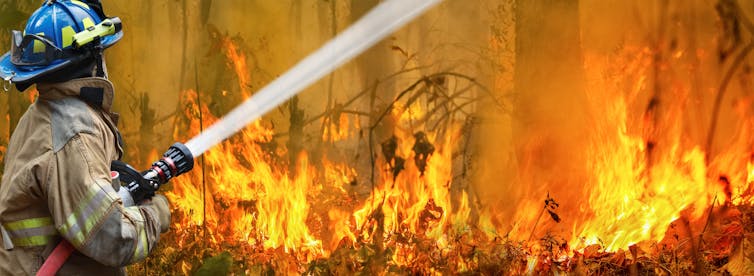
Misinformation Isn’t Going Away
Social media and the open internet have made it possible to broadcast information to millions of people, regardless of whether it’s true. It’s no wonder it’s a golden age for misinformation. Misinformation actors have found effective ways to cast scepticism on established science and then sell a false alternative.
We have to respond. Doing nothing means the lies win. And getting on the front foot with prebunking is one of the best tools we have.
As the world gets hotter, prebunking offers a way to anticipate new variants of lies and misinformation and counter them – before they take root. ![]()
Christian Turney, Pro Vice-Chancellor of Research, University of Technology Sydney and Sander van der Linden, Professor of Social Psychology in Society, University of Cambridge
This article is republished from The Conversation under a Creative Commons license. Read the original article.
Soft plastic recycling is back after the REDcycle collapse – but only in 12 supermarkets. Will it work this time?

After the memorable collapse of Australia’s largest soft plastic recycling program REDcycle in late 2022, a new scheme is emerging. It’s remarkably similar, albeit on a much smaller scale.
The trial underway in 12 Melbourne supermarkets intends, once again, to provide customers with an in-store option for recycling “scrunchable” food packaging.
It’s estimated Australia uses more than 70 billion pieces of soft plastic a year. Most of it still ends up in landfill or blows into streets and waterways, polluting our rivers and oceans. So 12 stores won’t cut it in the long term.
But starting small is a good idea. REDcycle collapsed under its own weight, stockpiling recyclable material with nowhere to go. The new scheme will feed new, purpose-built waste processing facilities so it has much better prospects.
What Do We Know About The New Scheme?
Australia’s Soft Plastics Taskforce is behind the new trial. The taskforce is a coalition of the three major supermarkets: Woolworths, Coles and Aldi. It was established in the wake of REDcycle’s demise and is chaired by the federal government Department of Climate Change, Energy, the Environment and Water.
The taskforce assumed responsibility for roughly 11,000 tonnes of soft plastic, formerly managed by REDcycle, across 44 locations across Australia.
Addressing the lack of soft plastics recycling infrastructure in Australia is a top priority. This is the main reason REDcycle was unable to process the mountains of soft plastics it had stored around the country.
Much like the original REDcycle scheme, the new small-scale trial in Victoria has identified several potential end markets for used soft plastic. After treatment, it could become an additive for asphalt roads, a replacement for aggregate in concrete, or a material for making shopping trolleys and baskets.
To be a successful and lasting solution, the scheme must be cost-effective and suitably located, with established markets for the recycled products.
Why Are Soft Plastics So Difficult To Recycle?
Recycling soft plastic packaging is particularly challenging, for several reasons.
Plastic packaging is typically made from the petrochemicals polyethylene or polypropylene, and often contains a mix of materials, including various types of plastics and additives for flexibility and durability. This blend of materials makes it difficult to separate and recycle effectively.
To make matters worse, soft plastics readily absorb residues from food, grease and other substances. This causes contamination, reducing the quality of the recycled material.
There’s also less demand for recycled soft plastics, compared to other plastics. Many manufacturers prefer using brand new or “virgin” plastics or recycled rigid plastics instead, such as recycled polyethylene terephthalate (rPET), leaving limited avenues for recycled soft plastics to find new uses.
Soft plastics can get tangled or stuck in machinery at recycling or waste-processing facilities, causing inefficiencies and disruptions in the process.
Finding Local Solutions
We need to make it economically viable to recycle low-value plastics such as soft plastic packaging. Placing recycling facilities closer to communities and transport can save money and reduce emissions. So local, decentralised, small-scale recycling or reprocessing infrastructure is the way to go.
Fit-for-purpose facilities can develop the specialised processing and manufacturing techniques needed to handle soft plastics. This takes care of the contamination problem and creates new options for developing recycled products.
Local recycling initiatives also foster community engagement and awareness. We need to encourage individuals to participate actively in recycling efforts, and foster local businesses focused on resource recovery. To this end, we are currently exploring innovative enterprise-based recycling solutions in remote First Nations communities in Queensland.
The High Cost Of Cheap Packaging
Soft plastics are lightweight, flexible and inexpensive to produce. This has made them popular choices for packaging. But this ignores the problems of disposal, including harm to nature and people. There has to be a better way.
Recycling soft plastic packaging does face numerous obstacles. These stem from complex composition, contamination risks, sorting and processing challenges, scarce recycling infrastructure and limited demand for the end product.
Tackling these challenges requires collaborative efforts from industry players, policymakers, consumers and researchers. We need to develop innovative local solutions and reduce consumption of single-use plastic.
Holding producers accountable for the end-of-life management of their products is paramount. In the meantime, local, decentralised recycling infrastructure offers a promising solution to improve the efficiency and sustainability of soft plastic recycling, while empowering communities to contribute to a circular economy.
The trial in Victoria raises hopes of a working solution for post-consumer soft plastic. This time they are starting on a small scale. That should make it easier to manage the volume of material available for recycling and avoid secret stockpiles. Ultimately this approach could see “micro-factories” cropping up across the country, turning what was once waste into viable, useful products. ![]()
Anya Phelan, Senior Lecturer in Entrepreneurship & Innovation, Griffith University
This article is republished from The Conversation under a Creative Commons license. Read the original article.
Australia’s shot-hole borer beetle invasion has begun, but we don’t need to chop down every tree under attack
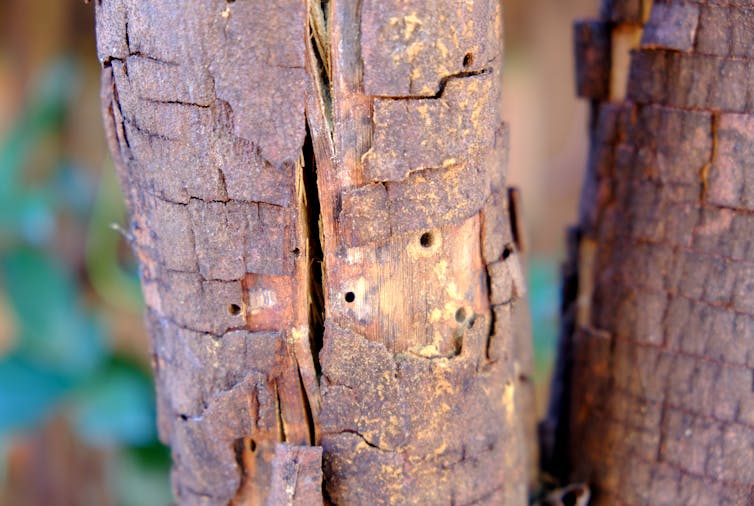
A new pest attacking Perth’s trees threatens to spread across Australia, damaging crops and native forests as well as our urban forest. To control its spread, the Western Australian government is chopping down hundreds of established trees. But these losses may be in vain.
Originally from southeast Asia, the polyphagous (meaning “many-eating”) shot-hole borer has invaded several countries. It attacks more than 400 tree species, including crops such as apple, avocado, macadamia and mango. Trees grown for timber, such as ash, elms and oaks are not safe either. And with every new country it invades, it threatens an increasingly large number of native trees.
Australia plans to eradicate this pest using one method: felling established trees. But the borer has been eradicated only once – in isolated tropical glasshouses in frosty Europe – demonstrating the difficulty of eradication from larger agricultural and natural ecosystems.
To achieve this worthy but difficult goal, everyone will need to work together. We need a wide range of experts to fully evaluate all available control methods, and consider the most appropriate time frame for eradication. Understanding the impacts of both the pest and its management will ensure we get the best possible outcomes in both the short and long term.
The Nature Of The Beast(S)
The borer probably arrived in Australia as a stowaway with untreated wood and remained undetected until August 2021, when a concerned resident of East Fremantle noticed unusual holes in her backyard maple trees. Now more than 80 suburbs in 25 councils are affected. Fortunately, the pest has not yet been detected outside the Perth metropolitan area.
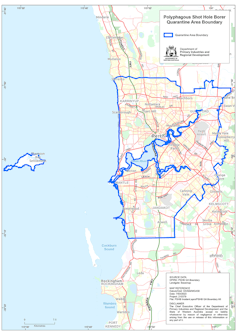
The borer attacks so many tree species because it has an accomplice, in the form of a fungus. The two live in a mutually dependent “symbiotic” relationship.
The borer creates a Swiss cheese-like matrix of tunnels through the wood. The fungus feeds on the wood lining the tunnels as it grows, and the borer eats the fungus.
The tunnels weaken the structure of the wood, but tree death occurs when the fungus invades and blocks the flow of water and sap between roots and leaves.
The borer’s small size likely limits its natural rate of spread, however we don’t know how far it can fly. There is a risk of human-assisted spread over long distances as the borer can survive in small pieces of wood for weeks. To make matters worse, a single female borer can produce offspring without a mate.
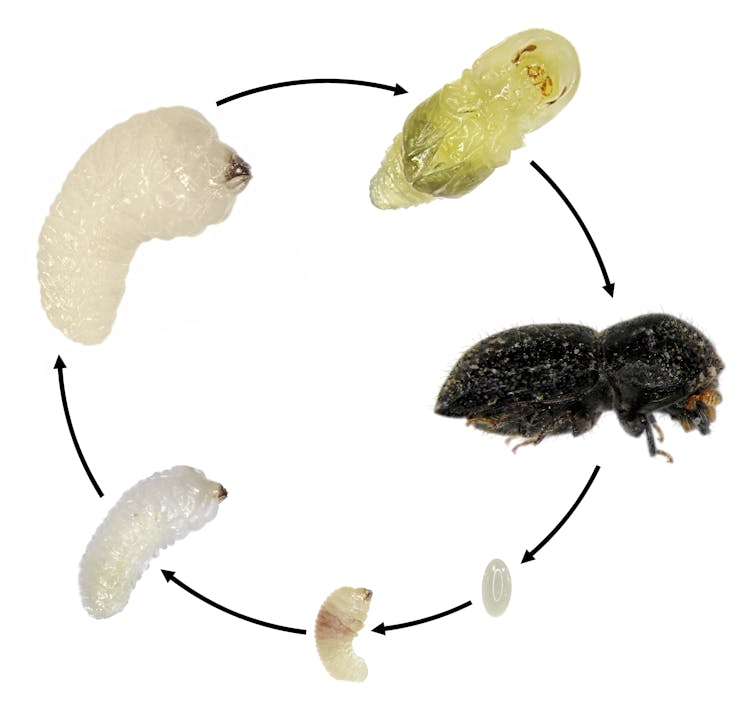
Responding To The Threat In Australia
The threat to Australia can be estimated from the experience in other invaded locations. As in Perth, the invasion usually begins in cities, then spreads into the surrounding countryside, attacking horticulture and forests, including avocado production in Israel and California and stone fruit in South Africa. This overseas experience has informed models of potential impacts for WA.
But local effects are hard to predict. Figs and eucalypts not susceptible in California and Israel, yet figs are preferred and some eucalypts are susceptible in WA.
The national biosecurity response led by WA has allocated A$41 million to eradicate the borer. This funding was based on an assessment of what it should cost. But there is only a short window of opportunity to effectively deploy these resources to achieve eradication.
The response includes trapping and surveillance to determine the spread of the pest. More than 1.5 million trees on more than 50,000 properties have been inspected and some 3,000 traps laid.
These traps catch flying beetles, which fly just once in their lives, so there’s a low catch probability. This makes it hard to detect false negatives, when no beetles are trapped but there are beetles in the area. This can be improved with alternative trap designs and chemical lures.
When infested trees are found in WA, the response is “removing infested trees to save healthy trees”. This could mean hundreds of trees at popular public locations such as Perth Zoo, Lake Claremont, Kings Park and Hyde Park will be felled and chipped.
Continuing with the one control method, felling trees, will leave us with fewer trees, particularly if the eradication campaign runs for many years. Reduction of the urban tree canopy could be profound, and Perth already has the sparsest urban tree canopy in the nation.
The flow-on consequences could mean even higher urban temperatures and poorer human health.
Urban trees are also valued for their beauty, shade and habitat for animals. All these benefits can be assigned a significant monetary value, which would be even higher if intrinsic or cultural value could be included.
Waging War On The Shot-Hole Borer
Although felling and chipping entire trees is necessary, there are other effective control methods. Alternatives may include removing and chipping infested branches only, which may be more cost-effective than felling entire trees, to injecting at-risk but uninfested trees, and slowing infestations in trees or spraying repellents onto uninfested trees. In California, traps were developed into an attract-and-kill strategy to tackle the borer in avocado orchards.

While a rapid response is crucial for eradication, we need to keep improving on this, using the most effective methods available. Relevant solutions from around the world suggest broader community engagement, beyond Perth, would be beneficial.
It is unclear what has been learned so far from efforts in WA. Is it still feasible to eradicate the pest completely? We need more experts to evaluate and advise on the response as it continues.
Making the right response choices will be crucial. Just consider other threatening invaders such as the red imported fire ant, the honey bee varroa mite, and myrtle rust.
As the borer has only been detected in Perth, the window of opportunity is open now. Let’s make sure we have the best plan of attack so we can achieve eradication.
Australians pride themselves on working together to get things done. If we can bring everyone together to rapidly tackle this insect invasion, the whole nation will benefit.![]()
Theo Evans, Associate Professor, The University of Western Australia and Bruce Webber, Principal Research Scientist, CSIRO
This article is republished from The Conversation under a Creative Commons license. Read the original article.
The world’s coral reefs are bigger than we thought – but it took satellites, snorkels and machine learning to see them

The world’s coral reefs are close to 25% larger than we thought. By using satellite images, machine learning and on-ground knowledge from a global network of people living and working on coral reefs, we found an extra 64,000 square kilometres of coral reefs – an area the size of Ireland.
That brings the total size of the planet’s shallow reefs (meaning 0-20 metres deep) to 348,000 square kilometres – the size of Germany. This figure represents whole coral reef ecosystems, ranging from sandy-bottomed lagoons with a little coral, to coral rubble flats, to living walls of coral.
Within this 348,000 km² of coral is 80,000 km² where there’s a hard bottom – rocks rather than sand. These areas are likely to be home to significant amounts of coral – the places snorkellers and scuba divers most like to visit.
You might wonder why we’re finding this out now. Didn’t we already know where the world’s reefs are?
Previously, we’ve had to pull data from many different sources, which made it harder to pin down the extent of coral reefs with certainty. But now we have high resolution satellite data covering the entire world – and are able to see reefs as deep as 30 metres down.
We coupled this with direct observations and records of coral reefs from over 400 individuals and organisations in countries with coral reefs from all regions, such as the Maldives, Cuba and Australia.
To produce the maps, we used machine learning techniques to chew through 100 trillion pixels from the Sentinel-2 and Planet Dove CubeSat satellites to make accurate predictions about where coral is – and is not. The team worked with almost 500 researchers and collaborators to make the maps.
The result: the world’s first comprehensive map of coral reefs extent, and their composition, produced through the Allen Coral Atlas.
The maps are already proving their worth. Reef management agencies around the world are using them to plan and assess conservation work and threats to reefs.
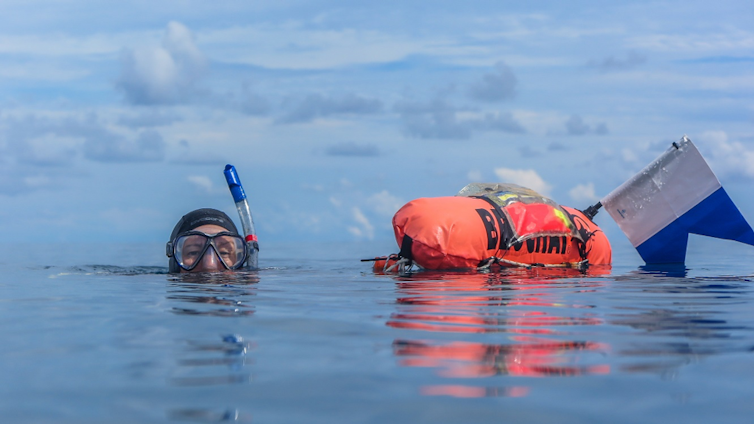
Where Is This Hidden Coral?
You can see the difference for yourself. In the interactive slider below, red indicates the newly detected coral in reefs off far north Queensland.
This infographic shows the new detail we now have for the Tongue Reef, in the seas off Port Douglas in Far North Queensland.
Our maps have three levels of detail. The first is the most expansive – the entire coral reef ecosystem. Seen from space, it has light areas of coral fringed by darker deeper water.
Then we have geomorphic detail, meaning what the areas within the reef look like. This includes sandy lagoons, reef crests exposed to the air at low tide, sloping areas going into deeper water and so on.
And finally we have fine detail of the benthic substrates, showing where you have areas dominated by coral cover.
Coral can’t grow on sand. Polyps have to attach to a hard surface such as rock before they can begin expanding the reef out of their limestone-secreting bodies.
Some of our maps include fine detail of benthic substrates, meaning where coral is most likely to be and the substrates (seafloor) available to the polyps, such as existing coral, sand, rubble, or seagrass.
It’s a crucial time for the world’s coral reefs. We’re discovering the full extent of shallow water reefs – while other researchers are finding large new black coral reefs in deeper water.
But even as we make these discoveries, coral reefs are reeling. Climate change is steadily heating up the sea and making it more acidic. Coral polyps can’t handle too much heat. These wonders of biodiversity are home to a quarter of the ocean’s species.
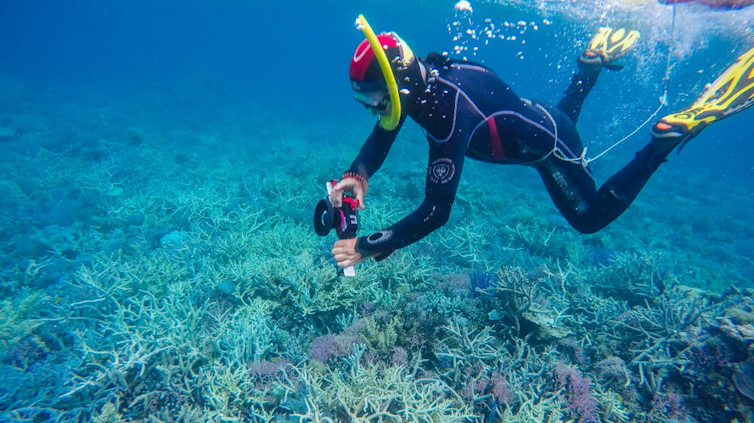
In good news, these maps are already leading to real world change. We’ve already seen new efforts to conserve coral reefs in Indonesia, several Pacific island nations, Panama, Belize, Kenya and Australia, among others. ![]()
Mitchell Lyons, Postdoctoral research fellow, The University of Queensland and Stuart Phinn, Professor of Geography, Director - Remote Sensing Research Centre, Chair - Earth Observation Australia, The University of Queensland
This article is republished from The Conversation under a Creative Commons license. Read the original article.
Permaculture showed us how to farm the land more gently. Can we do the same as we farm the sea?
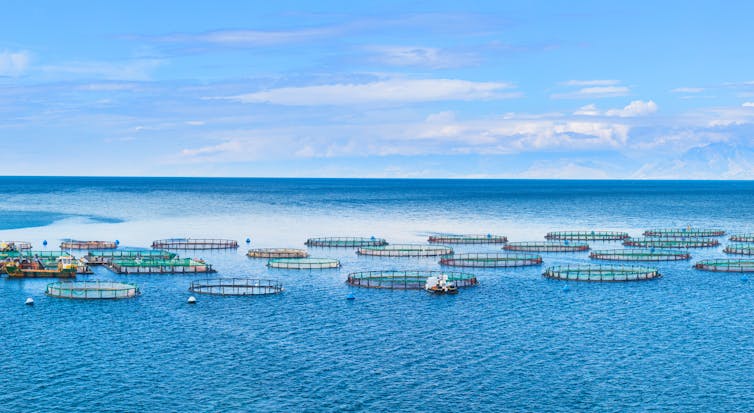
As wild fish and other marine species get scarcer from overfishing and demand for ‘blue foods’ grows around the world, farming of the ocean is growing rapidly. Fish, kelp, prawns, oysters and more are now widely farmed. The world now eats more farmed seafood than wild-caught.
These farms are springing up along coasts and in offshore waters worldwide. Australians will be familiar with Tasmania’s salmon industry, New South Wales’ oyster farms, and seaweed farms along the southern coastline. Aquaculture is already larger than fishing in Australia. Farming the sea is hailed as a vital source of food and biomass essential to reduce the damage we do to our oceans and help feed a growing population.
But the booming “blue economy” is no panacea. Fish farms can pollute the water. Mangroves are often felled to make way for prawn farms. The solutions of today could turn out to be problems of the future. We cannot simply shift from one form of environmental exploitation to another.
There is an alternative: permaculture. This approach has proven itself on land as a way to blend farming with healthy ecosystems. What if it could do the same on water?
Making Aquaculture Better
Many of today’s most pressing problems – from climate change to biodiversity loss to pollution – are linked to the way we produce food on land. To make new farmland often involves removing habitat, destroying trees and adding synthetic fertilisers and pesticides.
Since humans began farming about 12,000 years ago, we have expanded to the point where we now actively control about 70% of Earth’s ice-free land to make food, build cities, and many other uses.
On land, we are farmers, tending domesticated species. But at sea, we’ve been hunters, seeking wild populations. Now, the seas are to be farmed. We should farm in ways which do not damage these ecosystems.
We cannot afford to use the same intensive methods of farming in the oceans as we have been on land. Given how sick many of the world’s ocean systems are already from overfishing, algal blooms from nutrient overload, and habitat loss, there’s not much room for error.
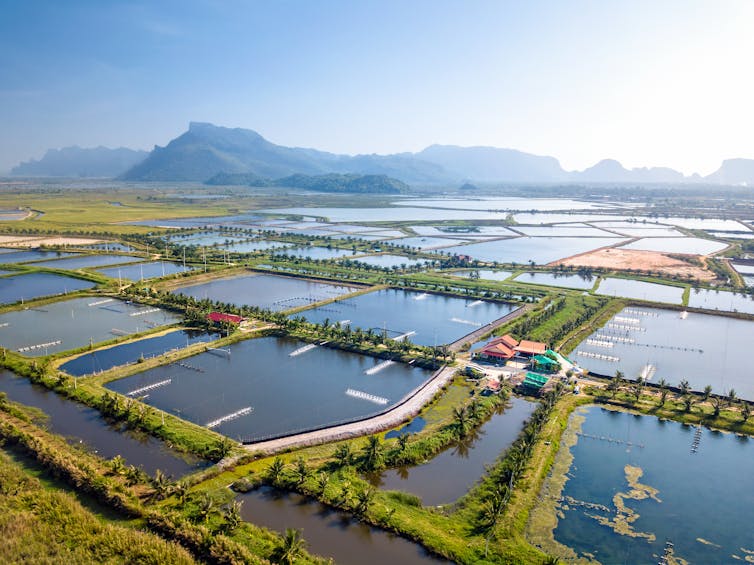
What Is Marine Permaculture?
Permaculture as we know it was developed in the 1960s by Australians Bill Mollison and David Holmgren. The latter is a co-author of the research forming the basis of this article.
The goal was simple: create ways of farming which give back to the soil and ecosystems, using tools like no-till farming, companion planting and food forests. Over the last 50 years, it has been adopted by farmers around the world.
Permaculture is framed around three ethics – care of Earth, care of people, and a fair share – aimed at producing benefits and distributing costs equitably between different people and nature.
So what would permaculture of the seas look like? While it hasn’t been fully articulated, many recent developments in ocean production and governance have strong parallels with the work permaculture practitioners have been doing for decades.
Aquaculture systems can, many now believe, not only be low-impact but work to restore lost or damaged ecosystems. Picture oyster farms slowly bringing back the natural oyster reefs which once carpeted shallow coastal waters, or prawn farms surrounded by regrowing mangroves to protect the coast from erosion.
There are strong parallels between the closed-loop approach taken by permaculture on land and an emerging sea farming approach called integrated multi-trophic aquaculture. Here, species with different ecological roles are grown together, producing more food from your farm – and strengthening natural ecosystem services.
In these systems, food waste from consumers is recycled by seaweeds and shellfish, which in turn provide food and habitat to farmed fish species. If well-designed, these benefits flow out from the farm.
Permaculture’s influence is also evident in nature-inspired design and biomimicry, using natural shapes to give nature a boost. Australian work here includes efforts to restore rocky reefs by creating structures with the nooks and crannies small sea creatures need.
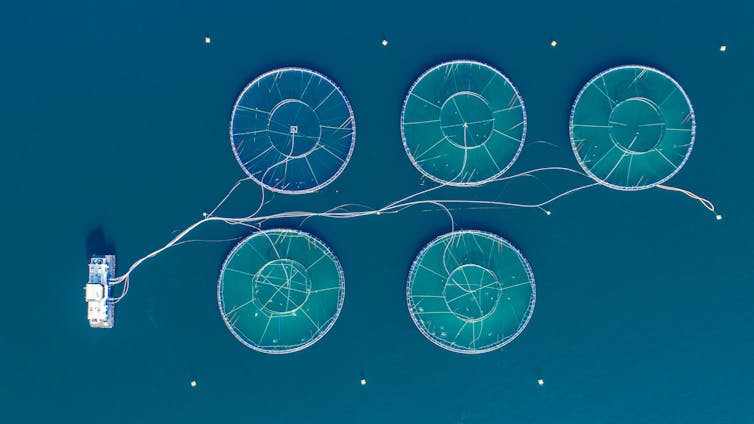
From The Grassroots
At present, a handful of corporations have disproportionately high levels of control over fisheries and aquaculture. In part, that’s because supertrawlers, motherships, and large blue-water fish farms are expensive.
If we instead took a marine permaculture approach to the blue economy, we would seek to return power back to the people who live and work at the water’s edge – a permaculture equivalent to artisanal fishing.
A localised approach to aquaculture has real benefit. Individuals and communities could develop their own versions of marine permaculture which work in their area, by adopting design solutions used elsewhere or just by tinkering and trialing.
If something isn’t working or it’s creating flow-on consequences, people can see what’s happening and respond quickly.
Small-scale sea farms are less likely to do damage, and should also boost resilience by investing in local social and environmental benefits.
How Do We Make This A Reality?
For their part, governments can help by creating policy frameworks encouraging small-scale producers – especially those able to demonstrate positive social and ecological outcomes.
Governments have an essential role in creating comprehensive spatial plans to guide aquaculture in an area or region. This is important, as it removes uncertainty and avoids conflict between different uses.
Researchers can help by developing measures of success and testing new techniques to help guide the new communities which will form to farm the sea.
Over the past half-century, permaculture on land has grown into a diverse movement challenging conventional wisdom about how to produce food.
We’ll need that same intense creative energy to make marine permaculture a reality. It’s entirely possible to design food-producing seascapes which give back to the sea as well as take from it – while making it possible for smaller sea farmers to flourish.
Climate Foundation CEO Brian von Herzen and permaculture pioneer David Holmgren contributed to the research this article is based on.![]()
Scott Spillias, Postdoctoral Research Fellow, CSIRO
This article is republished from The Conversation under a Creative Commons license. Read the original article.
First Peoples’ land overlaps with 130 imperilled bird species – and this knowledge may be vital to saving them

Australia’s First Peoples have a strong and continuing connection to the land. Their determination to maintain this connection provides important opportunities for conservation.
Our new research explored this opportunity by examining where Australia’s imperilled birds overlap with the Country of First Peoples. We defined such land as anything considered part of the Aboriginal or Indigenous estate. The includes but is not confined to Indigenous Protected Areas, native title land and areas controlled by Indigenous land councils.
More than 200 Australian bird species are threatened with extinction. Our analysis found 64% of these, or about 130 species, occur on lands and waters to which First Peoples’ groups have a legal determination.
We hope our research may lead to greater collaboration between First Peoples and conservationists. We also hope it elevates First Peoples’ voices to inform how we understand and care for our precious birds.
‘Threatened Species’ Is A Western Concept
In the decades since Australia’s threatened species legislation was passed in 1992, First Peoples have become key partners in conservation.
Australia’s First Peoples make up just 3.2% of the population. Yet Indigenous Protected Areas – land, sea, and river Country managed by Traditional Owners and Custodians, and Indigenous ranger groups – comprise 87 million hectares, or more than 50% of Australia’s conservation reserve system.
For millennia, birds have been integral to the cultural practice and livelihoods of Australia’s First Peoples. They play a major role in many songlines, are sung and danced in ceremony, act as totems and are managed as key food resources. Many First Peoples are keenly aware of declines in once-common bird species.
The concept of “threatened species” is founded in Western science and is not necessarily a term First Peoples use. And a bird species considered threatened may not be culturally significant to First Peoples.
However, many First Peoples have chosen to engage actively in the conservation of imperilled species and there are opportunities to expand this. Exactly where those opportunities lie was the subject of our new research.
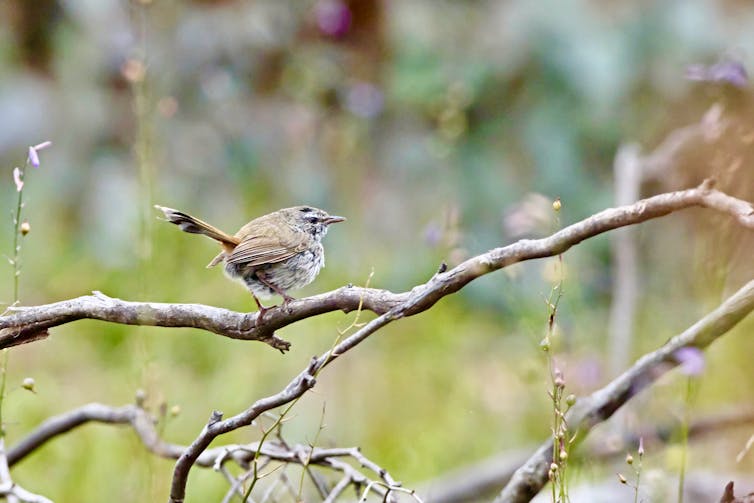
What We Found
Many non-Indigenous people think of Australia as one country. But for First Peoples, the continent comprises many countries, each of which is home to distinct groups, each with their own culture, customs, language and laws.
Under Australian law, First Peoples lack legal title to much of their ancestral lands. Regardless, connections to Country – and species that live there – remain.
Our study identified 463 First Peoples’ Country on which about 130 threatened birds occur. Mapping of First Peoples’ Country is incomplete, and boundaries between groups are often blurred or disputed, so the actual number is likely to be higher still.
More than 20 species are found on the Country of four First Peoples groups - the Ngarrindjeri People of south-east South Australia, the Nywaigi of the Wet Tropics of north Queensland, and the Wiradjuri and Yuin of New South Wales.
Some 14 species have highly restricted ranges. For example, the entire population of Australia’s rarest bird, the mukarrthippi grasswren, lives on Ngiyampaa Country in central NSW. Mukarrthippi is a name created by the Ngiyampaa Elders.
Similarly, the forested hills north of Adelaide are both Nukunu Country and home to the chestnut-rumped heathwren. The Wurundjeri are the Traditional Owners of Yellingbo Nature Conservation Area, home of the last helmeted honeyeaters. And the entire range of three threatened species is on the Country of Tiwi Islander First Peoples.
Some 15 threatened bird species occur on Country of more than 50 First Peoples groups. Some of these, such as southern boobook owls and southern whitefaces, are declining rapidly across their vast ranges. Others, such as the grey falcon, are exceedingly scarce.
How First Peoples Can Become More Involved
We don’t expect our research to guide First Nations people in identifying their priorities. But it may help First Peoples know which threatened bird species occur on their Country. They may then choose to seek support to protect these species.
For example, First Peoples may seek expansion of Indigenous Protected Areas where the species occur. These areas comprise land, sea, and river Country managed by First Nations groups.
Or the threatened species could become a focus of management by Indigenous rangers, a form of employment for First Peoples that has proliferated in recent decades.
The monitoring of imperilled birds is another activity where First Peoples already contribute strongly but could be more involved. Some First Peoples may have been monitoring species themselves and be willing to share their knowledge of population trends and cycles.
Compensation For Centuries Of Damage
Numerous opportunities exist for First Peoples to engage in threatened bird conservation should they choose to. But one big barrier to this is a perennial lack of funding.
For example, Indigenous Protected Areas make up almost half of Australia’s conservation areas, yet receive just a fraction of funding for the federal conservation estate.
This is unjust. Our research also found all threats to Australia’s imperilled birds were a consequence of colonisation. They include habitat destruction, changed fire regimes, invasive species and climate change.
This suggests governments have a moral, and potentially legal, responsibility for supporting the conservation work of First Peoples. Such support should be viewed not as charity or welfare, but through the lens of restorative and intergenerational justice.
Australia’s First Peoples were begrudgingly granted land rights after two centuries of having their ownership denied. They also have a right to compensation for the damage done.![]()
Amanda Lilleyman, Adjunct associate, Charles Darwin University; Jack Pascoe, Research fellow, The University of Melbourne, and Stephen Garnett, Professor of Conservation and Sustainable Livelihoods, Charles Darwin University
This article is republished from The Conversation under a Creative Commons license. Read the original article.
A major blackout left 500,000 Victorian homes without power – but it shows our energy system is resilient

Half a million homes and businesses in Victoria were left without power late on Tuesday following a major power outage. The disruption occurred when severe winds knocked over several high-voltage electricity transmission towers, causing all four units of the Loy Yang A coal-fired power station to trip and go offline.
Victorian Energy Minister Lily D'Ambrosio described the blackout as “one of the largest outage events in the state’s history”.
The event has prompted questions about the reliability of the state’s electricity grid. But it’s important to note these extreme winds would have seriously disrupted any power system. It has little to do with the mix of renewable energy and conventional fossil fuels.
As climate change worsens, we have much work ahead to ensure our electricity grids cope with severe weather events. But in this case, the fact that a complete system blackout was avoided is testament to the resilience of the system.
A Day Of Wild Weather
An extreme storm, including strong winds and lightning, tore through Victoria on Tuesday afternoon. It caused two transmission lines near Geelong to collapse, prompting several generators to disconnect from the grid and cutting power to parts of the network.
Other customers lost power after the Australian Energy Market Operator (AEMO) ordered “load shedding”. This involves temporarily cutting off electricity supply to some customers to keep the network stable and prevent damage.
According to a statement from AEMO, the storm also damaged hundreds of powerlines and power poles and restoring electricity to all customers “may take days if not weeks”
What Happened At Loy Yang A?
The disruption to electricity transmission caused AGL’s Loy Yang A generator to go offline. This was an automatic response known as a “fault ride-through” mechanism. It’s much like a fuse blowing if you have a short-circuit at home.
When large electricity loads are rapidly and unexpectedly removed from the system, electricity supply and demand are no longer matched. It’s a dangerous situation and means electricity generators can be badly damaged or even destroyed if they don’t disconnect from the network.
It appears that Loy Yang A was the first generator to disconnect. The effect was to reduce supply and help bring the system back into balance, preventing a system-wide outage.
All generators have protection systems that stop them from being damaged in these kinds of events. Loy Yang A tripped up to protect itself from permanent damage and in doing so actually kept the system stable. It did what the system is designed to do.
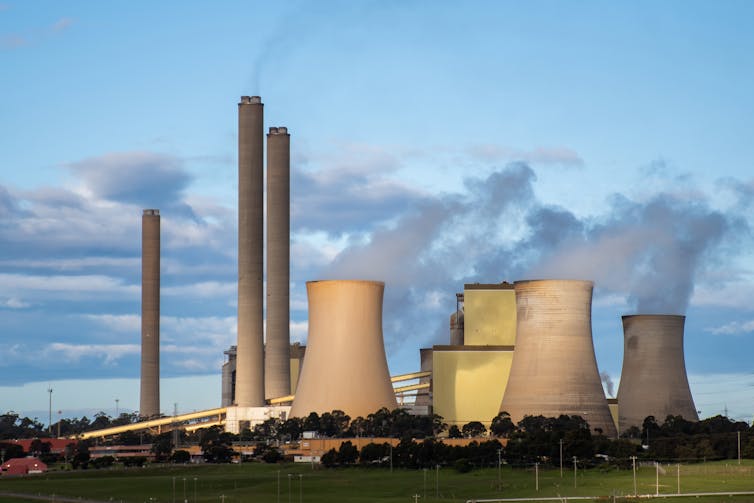
What Part Did Renewables And Coal Play?
When transmission lines fail, the whole system is affected. This includes all types of generators – wind, solar, gas, hydro and coal. The power outages on Tuesday were unrelated to the proportion of renewables and fossil fuels in the energy mix.
It’s possible that old coal power generators are more sensitive to transmission disruptions than newer technologies. But it’s far too early to say whether this had anything to do with Tuesday’s event.
Battery storage may have helped steady the grid. Batteries have ultra-rapid responses to these kinds of disuptions and can add or subtract power from the grid within milliseconds to keep the grid stable.
And looking ahead, one benefit of renewable energy systems is that they tend to be much more widely “distributed” geographically than coal generators. So when power lines go out, having a more distributed network actually provides more resilience.
Lessons From South Australia
In September 2016, wind storms in South Australia also blew over transmission lines. Cascading disconnections by generators meant the entire grid went black in a matter of seconds, causing a statewide outage.
It will take months to analyse all the data from the Victorian blackout. But it may well show that the lessons learned from SA blackout saved the Victorian grid.
For example, AEMO was reportedly unaware about the exact settings of “fault ride-through” mechanisms on wind farms before the SA blackouts. This has since changed, and may have helped minimise the impacts in Victoria.
A Warmer Future
We know more severe weather events are predicted under climate change. It will manifest in many different ways: strong wind events, heatwaves, bushfires and floods.
All infrastructure, but especially energy infrastructure, is vulnerable under these conditions. It means all of us – researchers, the market operators, and generator operators – must work hard to make energy systems more resilient as we move into an uncertain future.![]()
Roger Dargaville, Director Monash Energy Institute, Monash University
This article is republished from The Conversation under a Creative Commons license. Read the original article.
A secret war between cane toads and parasitic lungworms is raging across Australia
Greg Brown, Macquarie University; Lee A Rollins, UNSW Sydney, and Rick Shine, Macquarie UniversityWhen the first cane toads were brought from South America to Queensland in 1935, many of the parasites that troubled them were left behind. But deep inside the lungs of at least one of those pioneer toads lurked small nematode lungworms.
Almost a century later, the toads are evolving and spreading across the Australian continent. In new research published in Proceedings of the Royal Society B, we show that the lungworms too are evolving: for reasons we do not yet understand, worms taken from the toad invasion front in Western Australia are better at infecting toads than their Queensland cousins.
An Eternal Arms Race
Nematode lungworms are tiny threadlike creatures that live in the lining of a toad’s lung, suck its blood, and release their eggs through the host’s digestive tract. The larva that hatch in the toad’s droppings lie in wait for a new host to pass by, then penetrate through its skin and migrate through the amphibian’s body to find the lungs and settle into a comfortable life, and begin the cycle anew.
Parasites and their hosts are locked into an eternal arms race. Any characteristic that makes a parasite better at finding a new host, setting up an infection, and defeating the host’s attempts to destroy it, will be favoured by natural selection.
Over generations, parasites get better and better at infecting their hosts. But at the same time, any new trick that enables a host to detect, avoid or repel the parasites is favoured as well.
So it’s a case of parasites evolving to infect, and hosts evolving to defeat that new tactic. Mostly, parasites win because they have so many offspring and each generation is very short. As a result, they can evolve new tricks faster than the host can evolve to fight them.
The March Of The Toads
The co-evolution between hosts and parasites is most in sync among the ones in the same location, because they encounter each other most regularly. A parasite is usually better able to infect hosts from the local population it encounters regularly than those from a distant population.
But when hosts invade new territory, it can play havoc with the evolutionary matching between local hosts and parasites.
Since cane toads were released into the fields around Cairns in 1935, the toxic amphibians have hopped some 2,500 kilometres westwards and are currently on the doorstep of Broome. And they have changed dramatically along the way.
The Queensland toads are homebodies and spend their lives in a small area, often reusing the same shelter night after night. As a result, their populations can build up to high densities.
For a lungworm larva, having lots of toads in a small area, reusing and sharing shelter sites, makes it simple to find a new host. But at the invasion front (currently in Western Australia), toads are highly mobile, moving over a kilometre per night when conditions permit, and rarely spending two nights in the same place.
At the forefront of the invasion, toads are few and far between. A lungworm larva at the invasion front, waiting in the soil for a toad to pass by, will have few opportunities to encounter and infect a new host.
Lungworms From The Invasion Front
When hosts are rare, we expect the parasite will evolve to get better at infecting the ones it does encounter, because it is unlikely to get a second chance.
To understand how this co-evolution is playing out between cane toads and their lungworms, we did some experiments pairing hosts and parasites from different locations in Australia. What would happen when toad and lungworm strains that had been separated by 90 years of invasion were reintroduced to each other?
To study this we collected toads from different locations, bred them in captivity and reared the offspring in the lab under common conditions. We then exposed them to 50 lungworm larvae from a different area of the range, waited four months for infections to develop, then killed the toads and counted how many adult worms had successfully established in their lungs.
As expected, worms from the invasion front were best at infecting toads, not just their local ones. Behind the invasion front, in intermediate and old populations we found that hosts were able to fight their local parasites better than those from distant populations.
While we saw dramatic differences in infection outcomes, we have yet to determine what biochemical mechanisms caused the differences and how changes in genetic variation of host and parasite populations might have shaped them. ![]()
Greg Brown, Postdoctoral researcher, Macquarie University; Lee A Rollins, Scientia Associate Professor, UNSW Sydney, and Rick Shine, Professor in Evolutionary Biology, Macquarie University
This article is republished from The Conversation under a Creative Commons license. Read the original article.
NZ votes the red admiral butterfly ‘bug of the year’ – how to make your garden its home
Janice Lord, University of Otago and Connal McLean, Te Papa TongarewaNew Zealanders traditionally show their love for a special other on Valentine’s Day, so what better time to reveal which insect they feel the most affection for?
The second annual Bug of the Year contest has been won by the red admiral butterfly. It received a total of 2,275 votes from the nearly 17,000 votes cast by New Zealanders at home and abroad.
One of our most spectacular butterflies, the red admiral inherits the crown from last year’s inaugural winner, the native bee, or ngaro huruhuru (Leioproctus fulvescens).
While a butterfly beat the other bugs, the Mt Arthur giant wētā, the ngāokeoke (velvet worm) and the titiwai (glowworm) were close behind, with thousands of votes each.
The Entomological Society of New Zealand began the competition to shed light on the underrepresented and stunningly unique bugs of Aotearoa New Zealand. As interest grows, it is hoped more people will be inspired to create and maintain habitats for these often-endangered species.
Aotearoa is home to over 20,000 different species of bugs – more correctly known as terrestrial invertebrates. They range from vibrant butterflies and iconic wētā to secretive velvet worms and carnivorous land snails. And those are just the species described so far.
There are ten times as many bug species in New Zealand than there are native plants, and over a hundred times more than native bird species. Yet most people don’t know much about them.
Moths And Butterflies Aren’t So Different
The red admiral is easily recognisable by its vibrant red and black wings. Its Māori name, kahukura, translates directly as “red cloak or garment”, but can also refer to the atua (deity) represented by the top bow of a double rainbow.
The closely related kahukōwhai, or yellow admiral, has similar colouring, except the underside of its upper wings is creamy yellow. Red admirals are endemic – only found in New Zealand – whereas yellow admirals are also native to Australia.
Aotearoa has over 2,000 species of lepidoptera – butterflies and moths – and roughly 90% of these are endemic. You might be surprised to know there are no clear differences between what are commonly called butterflies and those called moths.
Only 17 of our lepidoptera species are popularly referred to as butterflies. But many of the other 98% – so-called moths – are active during the day and can also be beautifully patterned and coloured.
Because they feed from floral nectar sources and transfer pollen in the process, moths and butterflies are important pollinators. They are also staples in the food chain, forming a large portion of native bird diets.
Gardens As Butterfly Habitats
Like many butterflies worldwide, red admirals are less common than they used to be. While recent gardening advice has begun to include bee-friendly planting, it is also important to think of other invertebrates, like butterflies, when we plan and cultivate our backyards.
In general, a diversity of simple nectar-rich flowers is positively related to pollinator health. And resilient and diverse pollinator populations benefit both natural and created ecosystems like gardens. In turn, they support biodiversity and overall environmental health – which all benefits human welfare.
The Moths and Butterflies of New Zealand Trust conducts an online course on how to assess, create and maintain butterfly habitats.
Lepidoptera differ from some other invertebrates in that females prefer to (or exclusively) lay their eggs on specific host plants. If preferred host plants are not available, caterpillar survival can be low.
So, while having a variety of flowering plants for adults to feed from is important, providing host plants for caterpillars to develop on is crucial.
It is well known that monarch butterfly caterpillars need to feed on milkweed (swan plant). Similarly, Muehlenbeckia species such as climbing pohuehue and shrubby tororaro are important host plants for many native butterflies, as well as many native moths.
Lack of suitable hosts may be one reason red admirals are becoming increasingly uncommon. Recent research has shown the females prefer laying eggs on native nettles, and larvae raised on native nettles outperform those raised on introduced nettles.
Experiments show that the tree nettle ongaonga (Urtica ferox) is an ideal host for red admiral caterpillars. But ongaonga is often removed due to its extremely painful stinging hairs.
Pollinator Protection
Besides planting with butterflies and moths in mind, there are many other actions you can take in the garden to help make it suitable for thriving pollinator populations.
Some of the biggest threats to insect populations in Aotearoa and the world are related to urbanisation, deforestation and agricultural intensification: loss of habitat and food sources, and pesticide use.
Introduced predators also threaten our unique bugs. Invasive vespula wasps and rodents are a menace to native butterflies and moths. But predator control systems such as backyard trapping can make a difference.
Future articles will offer seasonal advice on gardening and lifestyle practices to help bugs in your backyard. This will include the best times to spot native and introduced bugs, and other ways to promote invertebrate conservation and biodiversity.
Whether you’re already a bug lover or still a bit bug-tentative, it’s important we all help invertebrate populations in Aotearoa survive and thrive.
The authors gratefully acknowledge the help of the Moths and Butterflies of New Zealand Trust in the preparation of this article. ![]()
Janice Lord, Associate Professor in Botany, University of Otago and Connal McLean, Natural History Technician – Invertebrates, Te Papa Tongarewa
This article is republished from The Conversation under a Creative Commons license. Read the original article.
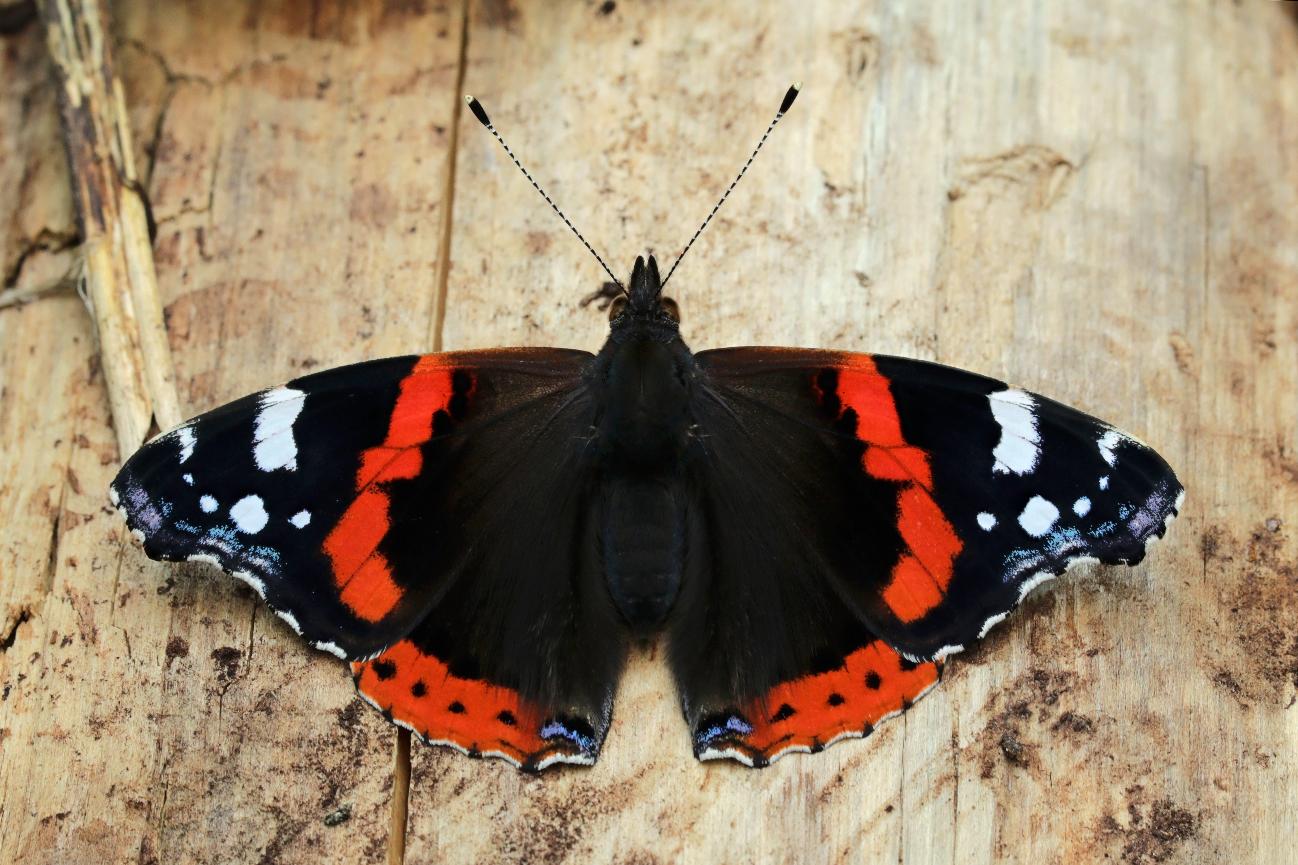
Forever chemicals in ski wax are being spread on snowy slopes

Every February half-term, I think back to the French ski trips I went on as a teenager. I remember the freshness of the cold, crisp air as I snow-ploughed my way down the slopes. Escaping to somewhere seemingly so pristine felt like a world away from where I grew up in London.
Back then, I never considered that snow could be a potential source of exposure to a harmful chemical. However, recent evidence suggests that persistent, synthetic chemicals are being transferred into snow and soil from waxes applied to the surfaces of skis to enhance performance.
Nicknamed forever chemicals, per- and poly-fluoroalkyl substances (PFAS) are a class of more than 10,000 different chemicals, many of which have been used since the 1950s. They repel water and oil so they make great waterproof coatings for clothing, greaseproof paper and construction materials.
Some act as surfactants, allowing different liquids to mix more easily. Many resist high temperatures, so they’re ideal for making non-stick frying pans and firefighting foams.
Certain PFAS are used in ski wax applied to skis and snowboards as lubrication. By making surfaces of ski kit more slippery, skiers can speed up and make smoother turns as they travel from piste to piste. A new study has found high PFAS concentrations in ski waxes and in the snow and soil sampled from popular skiing areas in Austria.
The Problem With Persistence
PFAS are organoflourine compounds – their super strong carbon-flourine bonds make them incredibly stable. Because PFAS don’t break down easily, they can persist inside our bodies or in the environment for many years.
A single dose of perfluorooctanoic acid or PFOA, one of the most well-studied PFAS, could take between three and seven years to reduce by half inside the body – that means it could take 100 years to eliminate 99.9% of that dose.
Some PFAS can be toxic to humans and wildlife, with links to cancers, developmental and reproductive problems, hormone disruption, diabetes and obesity.
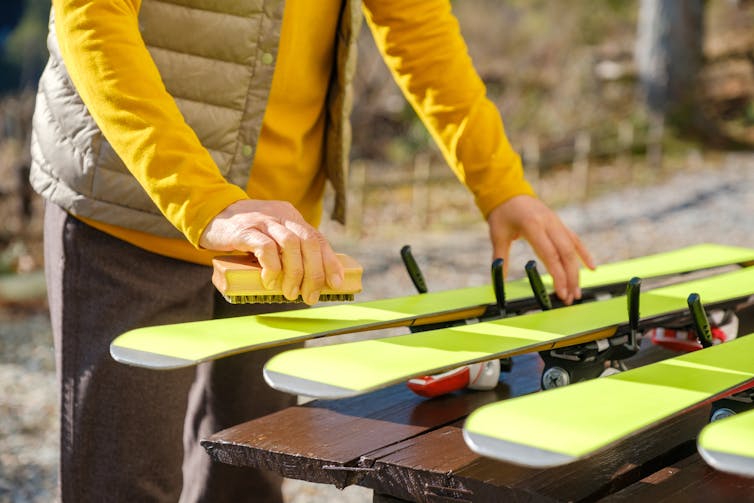
A Slippery Slope?
The presence of PFAS in ski waxes is not a new discovery. In 2010, a Swedish study, found high levels of various PFAS in ski wax and in the blood of ski-waxing technicians.
The fascinating thing about the new study is the potential for these chemicals to transfer into the environment from recreational and professional skiing equipment. She reveals that PFAS levels in the snow and soil from skiing areas are consistently higher than in those from the control sample collected away from skiing areas, indicating that skiing can act as a source.
The researchers highlight how the PFAS profiles (the combination of different PFAS found in each sample) differed between locations and sample types. This variability was attributed to differences between ski waxes that had been manufactured at different times or in different places.
I would suggest that additional sources of PFAS are likely in these areas, particularly as PFAS were still sometimes detected in areas of no skiing. They are present in some waterproof clothing, which is worn in abundance by skiers, and in food packaging, paints and cabling – all of which will be found in these areas. These products are likely to display different PFAS profiles.
The new study highlights the difficulty of assessing PFAS globally. There are so many different individual PFAS chemicals. So much so that there’s still uncertainty over the true number that exist. With PFAS in so many products, it’s hard to identify a singular source.
With so many PFAS in circulation, it’s hard to know which ones to test for. The researchers in the new study searched for 34 PFAS chemicals – that’s no easy task. For every PFAS measured, analysis takes more time and money and gets more complicated.
The sum of the concentrations of these 34 PFAS represented less than 1% of the total organofluorine present in the same samples, so the true PFAS concentration could be even higher.
A Class-Based Approach
Historically, individual chemicals have been banned depending on toxicity, persistence and resistance to degradation. This has invariably led to the replacement of banned chemicals with structurally similar ones.
Assessing 10,000 PFAS individually would be impossible. PFAS display varying levels of toxicity and persistence with some breaking down quite readily, but in recent years, environmental chemists have called for PFAS to be regulated together as a group or class.
The European Chemicals Agency is considering a proposed restriction to ban the manufacture and use of PFAS, with some exemptions for essential use where no alternatives exist. If accepted by member states, it could prove a significant step towards the beginning of the end for forever chemicals. Meanwhile, UK legislation falls behind by focusing on individual PFAS, with delays in implementing new restrictions.
Interestingly, PFAS-containing waxes were banned by the International Ski and Snowboard Federation at the start of the 2023 – 2024 season. Norwegian Olympic silver medallist Ragnhild Mowinckel was disqualified last October for competing with fluorinated wax.
But a ban that only applies to professional competition won’t stop PFAS chemicals from reaching the slopes. The manufacture of PFAS-containing products is crucial. Only then can we prevent PFAS reaching the mountains, and even with a comprehensive ban now, PFAS already in the snow won’t disappear within my lifetime.

Don’t have time to read about climate change as much as you’d like?
Get a weekly roundup in your inbox instead. Every Wednesday, The Conversation’s environment editor writes Imagine, a short email that goes a little deeper into just one climate issue. Join the 30,000+ readers who’ve subscribed so far.![]()
Daniel Drage, Lecturer in Environmental Health, University of Birmingham
This article is republished from The Conversation under a Creative Commons license. Read the original article.
Ice Bed: Stunning Image Of A Young Polar Bear Drifting To Sleep Wins Wildlife Photographer Of The Year People’s Choice Award
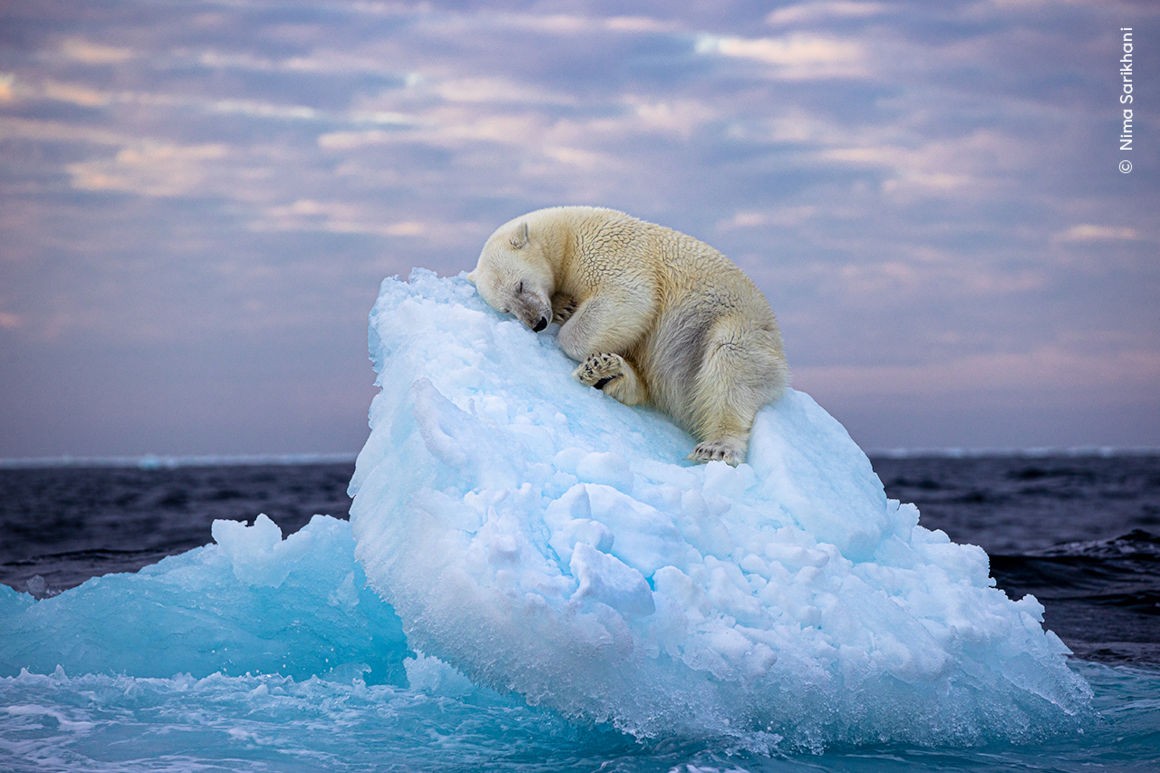
Nature award for polar bear photo shows that images of these magnificent creatures still have the power to move people
Samuel Shaw, The Open UniversityA polar bear sleeps perched atop a precariously angled shard of melting ice. The bear’s calm is juxtaposed by the frenetic waves lapping at the little island, suggesting that at some point the sea will reclaim it. This is the scene, captured by the photographer Nima Sarikhani, that has won this year’s Wildlife Photographer of the Year People’s Choice award.
When I saw this picture had won, I had mixed feelings.
Don’t get me wrong, the photograph is stunning and fully deserves praise. But the subject of a lone bear on a small patch of ice remains, for me, laden with problems. In the 2015 film This Changes Everything, the writer Naomi Klein famously stated that images of “desperate polar bears” were so regularly used in the media that they had begun to bore her.
She didn’t mean that she didn’t care but wanted to draw attention to the way that certain images or motifs lose power the more they are repeated. Was it useful for the environmental movement to keep fixating on polar bears when countless other species were also suffering or when there are, perhaps, more original ways of communicating the issues at hand?
Up until recently, I’d been persuaded by Klein’s argument. Popular messaging around climate change is saturated with images of polar bears and it can be hard to maintain interest. However, that Sarikhani’s photograph received the People’s Choice award is one of many indications that the power of the polar bear is not as diminished as some think it is. Was I wrong to be bored of polar bears?
About a year ago, I started approaching this question from another angle by looking at how polar bears have been depicted in the past.
Beyond Photographs
As an expert on 19th-century art and visual culture, I’ve frequently encountered polar bears in Victorian paintings, yet I hadn’t given them a second thought.
I decided to explore whether there was a connection between these historical works and our current fascination. I also wanted to look beyond a certain way of visualising polar bears. After all, Klein’s reservations were not about polar bears per se, but about images of “desperate” polar bears. Perhaps there are other ways of picturing them that might change the way I thought.
My research took me on a fascinating journey, from delicate Innuit sculptures of standing bears to some rather dodgy European prints in which they look rather more like white, shaggy dogs.
Through these works, I’ve learned a lot about the long and complex relationship between people and polar bears, and how polar bears have been constantly caught up in wider concerns. For example, Edwin Landseer’s famous 1864 painting Man Proposes, God Disposes represents two ferocious bears feeding among the wreckage of a ship.
Man Proposes, God Disposes is about the arctic explorer John Franklin’s famous failed expedition to discover the Northwest Passage. Here, the polar bears represent man’s violent defeat by nature.
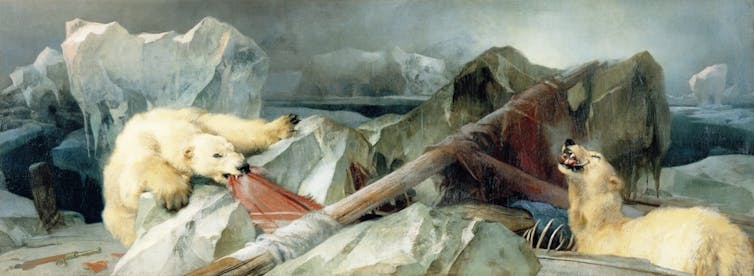
Other Victorian paintings, meanwhile, show how closely the fate of polar bears was aligned to the whaling trade in and around the north and south poles. When whales became scarce in Arctic waters, hunters would turn their attention to the trade in bear skins. Here, man’s dependence on nature is foregrounded as well as the violence enacted upon it.
While researching these pictures I decided to reach out to Doug Allan, a wildlife cameraman who has spent over 35 years filming and photographing in the Arctic. I wanted to know whether Allan could see connections between the longer history of polar bear imagery and contemporary photographs and footage of bears we see today.
Better Stories
It’s fair to say that Allan has never been bored of polar bears, despite the many hours he has spent in the Arctic waiting for one to amble into view.
He shared my interest in the history of polar bears and the contexts in which their image has been used. Together, we explored the collections in the Scottish city of Perth. Objects owned by Perth Museum and Art Gallery and the Royal Scottish Geographical Society, offered me new insights into this subject.
We drew links between 19th-century paintings and the kind of footage he’s filmed for series such as Frozen Planet. Although there are many differences, these Victorian paintings and nature documentaries share the goal of trying to capture moments of high drama to communicate a message.
The conclusion we reached was that it wasn’t pictures of polar bears that were boring, the problem was the limited, often maudlin narratives that accompanied them. The images are more than cute, sad or emotional representations of climate collapse – these sorts of descriptions flatten them. Instead, they deserve explanations that tell much more complex, sometimes conflicted stories.
In relation to this, I’m still thinking about Sarikhan’s photograph – about how it differs from other contemporary polar bear images and may relate to this longer tradition of depicting bears.
Why are photos of polar bears on icebergs so popular? What other kinds of polar images are we overlooking? How would our perception of this particular photograph differ, for instance, if the bear were dead, not sleeping?
I may have mixed feelings about Sarikhan’s photograph. However, as someone who has now seen hundreds of images of polar bears, I am far from bored by it. Instead, when I look at it, I see the complex history of polar bear images and the many dramatic narratives of survival and violence that have continuously been thrust upon them.
So, if you are feeling unmoved by what you consider “just another bear on an iceberg” try thinking about the storied tradition of polar bear images, about how these have changed as our own relationship with the environment has, and I dare you to be bored.![]()
Samuel Shaw, Lecturer in History of Art, The Open University
This article is republished from The Conversation under a Creative Commons license. Read the original article.
Atlantic Ocean is headed for a tipping point − once melting glaciers shut down the Gulf Stream, we would see extreme climate change within decades, study shows
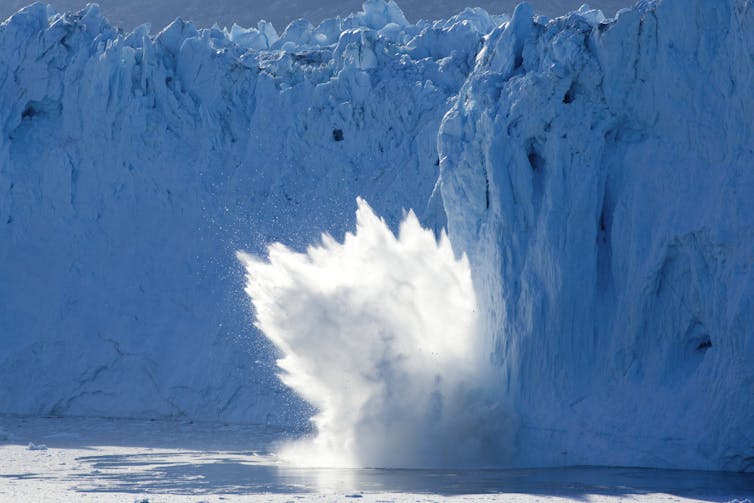
Superstorms, abrupt climate shifts and New York City frozen in ice. That’s how the blockbuster Hollywood movie “The Day After Tomorrow” depicted an abrupt shutdown of the Atlantic Ocean’s circulation and the catastrophic consequences.
While Hollywood’s vision was over the top, the 2004 movie raised a serious question: If global warming shuts down the Atlantic Meridional Overturning Circulation, which is crucial for carrying heat from the tropics to the northern latitudes, how abrupt and severe would the climate changes be?
Twenty years after the movie’s release, we know a lot more about the Atlantic Ocean’s circulation. Instruments deployed in the ocean starting in 2004 show that the Atlantic Ocean circulation has observably slowed over the past two decades, possibly to its weakest state in almost a millennium. Studies also suggest that the circulation has reached a dangerous tipping point in the past that sent it into a precipitous, unstoppable decline, and that it could hit that tipping point again as the planet warms and glaciers and ice sheets melt.
In a new study using the latest generation of Earth’s climate models, we simulated the flow of fresh water until the ocean circulation reached that tipping point.
The results showed that the circulation could fully shut down within a century of hitting the tipping point, and that it’s headed in that direction. If that happened, average temperatures would drop by several degrees in North America, parts of Asia and Europe, and people would see severe and cascading consequences around the world.
We also discovered a physics-based early warning signal that can alert the world when the Atlantic Ocean circulation is nearing its tipping point.
The Ocean’s Conveyor Belt
Ocean currents are driven by winds, tides and water density differences.
In the Atlantic Ocean circulation, the relatively warm and salty surface water near the equator flows toward Greenland. During its journey it crosses the Caribbean Sea, loops up into the Gulf of Mexico, and then flows along the U.S. East Coast before crossing the Atlantic.
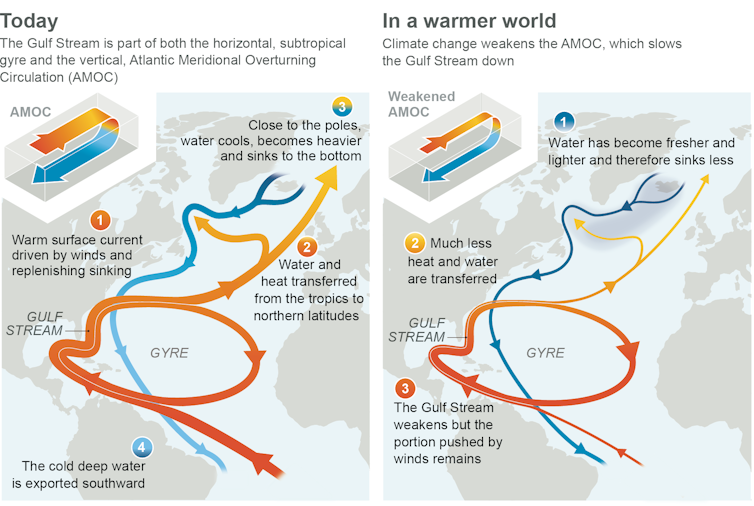
This current, also known as the Gulf Stream, brings heat to Europe. As it flows northward and cools, the water mass becomes heavier. By the time it reaches Greenland, it starts to sink and flow southward. The sinking of water near Greenland pulls water from elsewhere in the Atlantic Ocean and the cycle repeats, like a conveyor belt.
Too much fresh water from melting glaciers and the Greenland ice sheet can dilute the saltiness of the water, preventing it from sinking, and weaken this ocean conveyor belt. A weaker conveyor belt transports less heat northward and also enables less heavy water to reach Greenland, which further weakens the conveyor belt’s strength. Once it reaches the tipping point, it shuts down quickly.
What Happens To The Climate At The Tipping Point?
The existence of a tipping point was first noticed in an overly simplified model of the Atlantic Ocean circulation in the early 1960s. Today’s more detailed climate models indicate a continued slowing of the conveyor belt’s strength under climate change. However, an abrupt shutdown of the Atlantic Ocean circulation appeared to be absent in these climate models.
This is where our study comes in. We performed an experiment with a detailed climate model to find the tipping point for an abrupt shutdown by slowly increasing the input of fresh water.
We found that once it reaches the tipping point, the conveyor belt shuts down within 100 years. The heat transport toward the north is strongly reduced, leading to abrupt climate shifts.
The Result: Dangerous Cold In The North
Regions that are influenced by the Gulf Stream receive substantially less heat when the circulation stops. This cools the North American and European continents by a few degrees.
The European climate is much more influenced by the Gulf Stream than other regions. In our experiment, that meant parts of the continent changed at more than 5 degrees Fahrenheit (3 degrees Celsius) per decade – far faster than today’s global warming of about 0.36 F (0.2 C) per decade. We found that parts of Norway would experience temperature drops of more than 36 F (20 C). On the other hand, regions in the Southern Hemisphere would warm by a few degrees.

These temperature changes develop over about 100 years. That might seem like a long time, but on typical climate time scales, it is abrupt.
The conveyor belt shutting down would also affect sea level and precipitation patterns, which can push other ecosystems closer to their tipping points. For example, the Amazon rainforest is vulnerable to declining precipitation. If its forest ecosystem turned to grassland, the transition would release carbon to the atmosphere and result in the loss of a valuable carbon sink, further accelerating climate change.
The Atlantic circulation has slowed significantly in the distant past. During glacial periods when ice sheets that covered large parts of the planet were melting, the influx of fresh water slowed the Atlantic circulation, triggering huge climate fluctuations.
So, When Will We See This Tipping Point?
The big question – when will the Atlantic circulation reach a tipping point – remains unanswered. Observations don’t go back far enough to provide a clear result. While a recent study suggested that the conveyor belt is rapidly approaching its tipping point, possibly within a few years, these statistical analyses made several assumptions that give rise to uncertainty.
Instead, we were able to develop a physics-based and observable early warning signal involving the salinity transport at the southern boundary of the Atlantic Ocean. Once a threshold is reached, the tipping point is likely to follow in one to four decades.
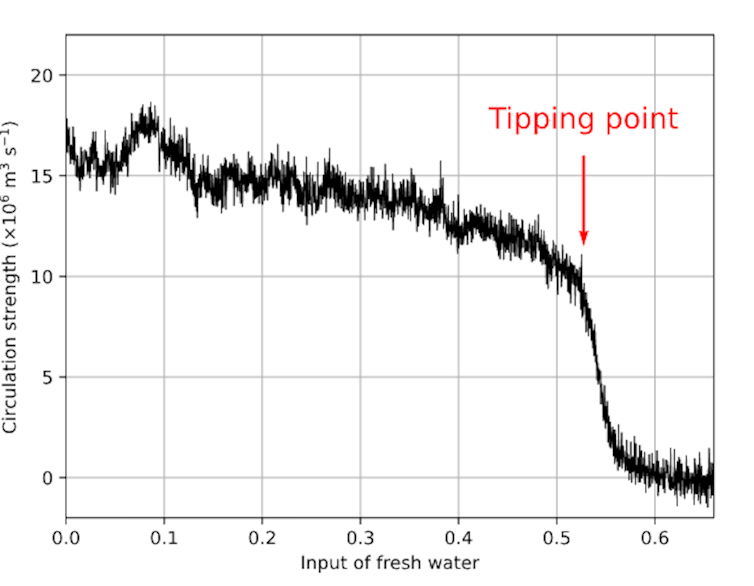
The climate impacts from our study underline the severity of such an abrupt conveyor belt collapse. The temperature, sea level and precipitation changes will severely affect society, and the climate shifts are unstoppable on human time scales.
It might seem counterintuitive to worry about extreme cold as the planet warms, but if the main Atlantic Ocean circulation shuts down from too much meltwater pouring in, that’s the risk ahead.
This article was updated on Feb. 11, 2024, to fix a typo: The experiment found temperatures in parts of Europe changed by more than 5 F per decade.![]()
René van Westen, Postdoctoral Researcher in Climate Physics, Utrecht University; Henk A. Dijkstra, Professor of Physics, Utrecht University, and Michael Kliphuis, Climate Model Specialist, Utrecht University
This article is republished from The Conversation under a Creative Commons license. Read the original article.
Population can’t be ignored. It has to be part of the policy solution to our world’s problems

There is a growing consensus that environmental problems, particularly the effects of climate change, pose a grave challenge to humanity. Pollution, habitat destruction, intractable waste issues and, for many, deteriorating quality of life should be added to the list.
Economic growth is the chief culprit. We forget, though, that environmental impacts are a consequence of per capita consumption multiplied by the number of people doing the consuming. Our own numbers matter.
Population growth threatens environments at global, national and regional scales. Yet the policy agenda either ignores human population, or fosters alarm when perfectly natural trends such as declining fertility and longer lifespans cause growth rates to fall and populations to age.
That there are still too many of us is a problem few want to talk about. Fifty years ago, population was considered to be an issue, not only for the developing world, but for the planet as a whole. Since then, the so-called green revolution in agriculture made it possible to feed many more people. But the costs of these practices, which relied heavily on pesticide and fertiliser use and relatively few crops, are only now beginning to be understood.
The next 30 years will be critical. The most recent United Nations projections point to a global population of 9.7 billion by 2050 and 10.4 billion by 2100. There are 8 billion of us now. Another 2 billion will bring already stressed ecosystems to the point of collapse.
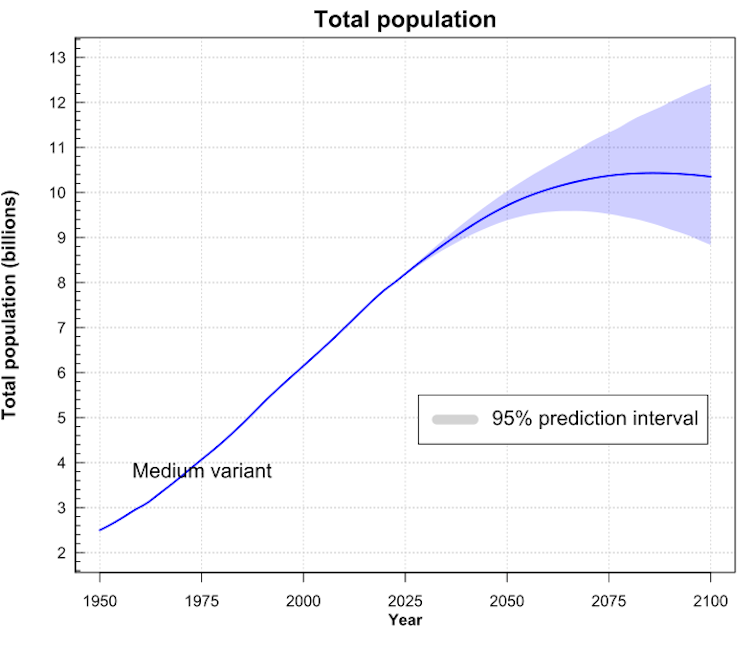
It’s The Whole World’s Problem
Many would agree overpopulation is a problem in many developing countries, where large families keep people poor. But there are too many of us in the developed world, too. Per person, people in high-income countries consume 60% more resources than in upper-middle-income countries and more than 13 times as much as people in low-income countries.
From 1995 to 2020, the UK population, for example, grew by 9.1 million. A crowded little island, particularly around London and the south-east, became more crowded still.
Similarly, the Netherlands, one of the most densely populated countries, had just under 10 million inhabitants in 1950 and 17.6 million in 2020. In the 1950s, the government encouraged emigration to reduce population densities. By the 21st century, another 5 million people in a tiny country certainly caused opposition to immigration, but concern was wrongly focused on the ethnic composition of the increase. The principal problem of overpopulation received little attention.
Australia is celebrated as “a land of boundless plains to share”. In reality it’s a small country that consists of big distances.
As former NSW Premier Bob Carr predicted some years ago, as Australia’s population swelled, the extra numbers would be housed in spreading suburbs that would gobble up farmland nearest our cities and threaten coastal and near-coastal habitats. How right he was. The outskirts of Sydney and Melbourne are carpeted in big, ugly houses whose inhabitants will be forever car-dependent.

Doing Nothing Has A High Cost
The longer we do nothing about population growth, the worse it gets. More people now inevitably mean more in the future than there would otherwise have been.
We live very long lives, on average, so once we’re born, we tend to stick around. It takes a while for falling birthrates to have any impact.
And when they do, the population boosters respond with cries of alarm. The norm is seen as a young or youngish population, while the elderly are presented as a parasitical drag upon the young.
Falling reproduction rates should not be regarded as a disaster but as a natural occurrence to which we can adapt.
Recently, we have been told Australia must have high population growth, because of workforce shortages. It is rarely stated exactly what these shortages are, and why we cannot train enough people to fill them.
Population and development are connected in subtle ways, at global, national and regional scales. At each level, stabilising the population holds the key to a more environmentally secure and equitable future.
For those of us who value the natural world for its own sake, the matter is clear – we should make room for other species. For those who do not care about other species, the reality is that without a more thoughtful approach to our own numbers, planetary systems will continue to break down.
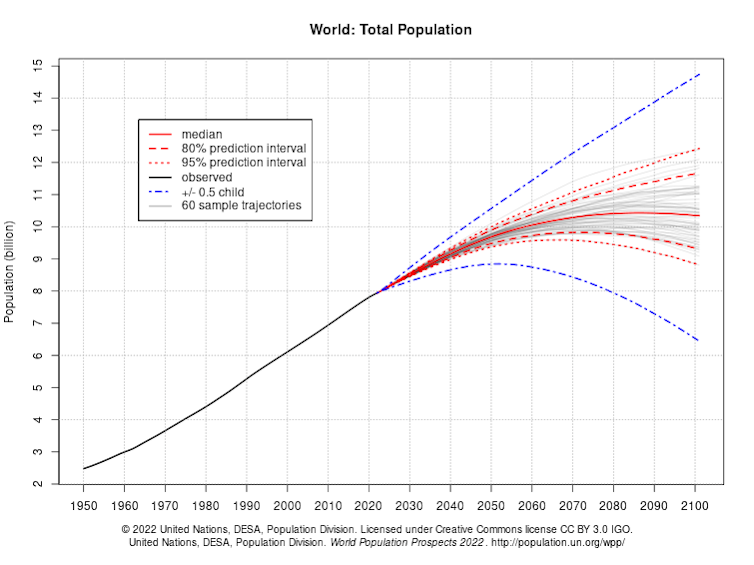
Let Women Choose To Have Fewer Children
So, what to do? If we assume the Earth’s population is going to exceed 10 billion, the type of thinking behind this assumption means we are sleepwalking our way into a nightmarish future when a better one is within our grasp.
A radical rethink of the global economy is needed to address climate change. In relation to population growth, if we can move beyond unhelpful ideologies, the solution is already available.
People are not stupid. In particular, women are not stupid. Where women are given the choice, they restrict the number of children they have. This freedom is as basic a human right as you can get.
A much-needed demographic transition could be under way right now, if only the population boosters would let it happen.
Those who urge greater rates of reproduction, whether they realise it or not, are serving only the short-term interests of developers and some religious authorities, for whom big societies mean more power for themselves. It is a masculinist fantasy for which most women, and many men, have long been paying a huge price.
Women will show the way, if only we would let them.![]()
Jenny Stewart, Professor of Public Policy, UNSW Sydney
This article is republished from The Conversation under a Creative Commons license. Read the original article.
Pittwater Reserves: Histories + Notes + Pictorial Walks
A History Of The Campaign For Preservation Of The Warriewood Escarpment by David Palmer OAM and Angus Gordon OAM
A Stroll Around Manly Dam: Spring 2023 by Kevin Murray and Joe Mills
A Stroll Through Warriewood Wetlands by Joe Mills February 2023
A Walk Around The Cromer Side Of Narrabeen Lake by Joe Mills
America Bay Track Walk - photos by Joe Mills
An Aquatic June: North Narrabeen - Turimetta - Collaroy photos by Joe Mills
Angophora Reserve Angophora Reserve Flowers Grand Old Tree Of Angophora Reserve Falls Back To The Earth - History page
Annie Wyatt Reserve - A Pictorial
Aquatic Reflections seen this week (May 2023): Narrabeen + Turimetta by Joe Mills
Avalon's Village Green: Avalon Park Becomes Dunbar Park - Some History + Toongari Reserve and Catalpa Reserve
Bairne Walking Track Ku-Ring-Gai Chase NP by Kevin Murray
Bangalley Headland Bangalley Mid Winter
Bangalley Headland Walk: Spring 2023 by Kevin Murray and Joe Mills
Banksias of Pittwater
Barrenjoey Boathouse In Governor Phillip Park Part Of Our Community For 75 Years: Photos From The Collection Of Russell Walton, Son Of Victor Walton
Barrenjoey Headland: Spring flowers
Barrenjoey Headland after fire
Bayview Baths
Bayview Wetlands
Beeby Park
Bilgola Beach
Botham Beach by Barbara Davies
Bungan Beach Bush Care
Careel Bay Saltmarsh plants
Careel Bay Birds
Careel Bay Clean Up day
Careel Bay Playing Fields History and Current
Careel Creek
Careel Creek - If you rebuild it they will come
Centre trail in Ku-ring-gai Chase National Park
Chiltern Track- Ingleside by Marita Macrae
Clareville Beach
Clareville/Long Beach Reserve + some History
Coastal Stability Series: Cabbage Tree Bay To Barrenjoey To Observation Point by John Illingsworth, Pittwater Pathways, and Dr. Peter Mitchell OAM
Cowan Track by Kevin Murray
Curl Curl To Freshwater Walk: October 2021 by Kevin Murray and Joe Mills
Currawong and Palm Beach Views - Winter 2018
Currawong-Mackerel-The Basin A Stroll In Early November 2021 - photos by Selena Griffith
Currawong State Park Currawong Beach + Currawong Creek
Deep Creek To Warriewood Walk photos by Joe Mills
Drone Gives A New View On Coastal Stability; Bungan: Bungan Headland To Newport Beach + Bilgola: North Newport Beach To Avalon + Bangalley: Avalon Headland To Palm Beach
Duck Holes: McCarrs Creek by Joe Mills
Dunbar Park - Some History + Toongari Reserve and Catalpa Reserve
Dundundra Falls Reserve: August 2020 photos by Selena Griffith - Listed in 1935
Elsie Track, Scotland Island
Elvina Track in Late Winter 2019 by Penny Gleen
Elvina Bay Walking Track: Spring 2020 photos by Joe Mills
Elvina Bay-Lovett Bay Loop Spring 2020 by Kevin Murray and Joe Mills
Fern Creek - Ingleside Escarpment To Warriewood Walk + Some History photos by Joe Mills
Iluka Park, Woorak Park, Pittwater Park, Sand Point Reserve, Snapperman Beach Reserve - Palm Beach: Some History
Ingleside
Ingleside Wildflowers August 2013
Irrawong - Ingleside Escarpment Trail Walk Spring 2020 photos by Joe Mills
Irrawong - Mullet Creek Restoration
Katandra Bushland Sanctuary - Ingleside
Lucinda Park, Palm Beach: Some History + 2022 Pictures
McCarrs Creek
McCarr's Creek to Church Point to Bayview Waterfront Path
McKay Reserve
Mona Vale Beach - A Stroll Along, Spring 2021 by Kevin Murray
Mona Vale Headland, Basin and Beach Restoration
Mona Vale Woolworths Front Entrance Gets Garden Upgrade: A Few Notes On The Site's History
Mother Brushtail Killed On Barrenjoey Road: Baby Cried All Night - Powerful Owl Struck At Same Time At Careel Bay During Owlet Fledgling Season: calls for mitigation measures - The List of what you can do for those who ask 'What You I Do' as requested
Mount Murray Anderson Walking Track by Kevin Murray and Joe Mills
Mullet Creek
Narrabeen Creek
Narrabeen Lagoon Catchment: Past Notes Present Photos by Margaret Woods
Narrabeen Lagoon Entrance Clearing Works: September To October 2023 pictures by Joe Mills
Narrabeen Lagoon State Park
Narrabeen Lagoon State Park Expansion
Narrabeen Rockshelf Aquatic Reserve
Nerang Track, Terrey Hills by Bea Pierce
Newport Bushlink - the Crown of the Hill Linked Reserves
Newport Community Garden - Woolcott Reserve
Newport to Bilgola Bushlink 'From The Crown To The Sea' Paths: Founded In 1956 - A Tip and Quarry Becomes Green Space For People and Wildlife
Pittwater Reserves: The Green Ways; Bungan Beach and Bungan Head Reserves: A Headland Garden
Pittwater Reserves, The Green Ways: Clareville Wharf and Taylor's Point Jetty
Pittwater Reserves: The Green Ways; Hordern, Wilshire Parks, McKay Reserve: From Beach to Estuary
Pittwater Reserves - The Green Ways: Mona Vale's Village Greens a Map of the Historic Crown Lands Ethos Realised in The Village, Kitchener and Beeby Parks
Pittwater Reserves: The Green Ways Bilgola Beach - The Cabbage Tree Gardens and Camping Grounds - Includes Bilgola - The Story Of A Politician, A Pilot and An Epicure by Tony Dawson and Anne Spencer
Pittwater spring: waterbirds return to Wetlands
Pittwater's Lone Rangers - 120 Years of Ku-Ring-Gai Chase and the Men of Flowers Inspired by Eccleston Du Faur
Pittwater's Great Outdoors: Spotted To The North, South, East + West- June 2023: Palm Beach Boat House rebuild going well - First day of Winter Rainbow over Turimetta - what's Blooming in the bush? + more by Joe Mills, Selena Griffith and Pittwater Online
Pittwater's Parallel Estuary - The Cowan 'Creek
Resolute Track at West Head by Kevin Murray
Resolute Track Stroll by Joe Mills
Riddle Reserve, Bayview
Salvation Loop Trail, Ku-Ring-Gai Chase National Park- Spring 2020 - by Selena Griffith
Seagull Pair At Turimetta Beach: Spring Is In The Air!
Some late November Insects (2023)
Stapleton Reserve
Stapleton Park Reserve In Spring 2020: An Urban Ark Of Plants Found Nowhere Else
Stony Range Regional Botanical Garden: Some History On How A Reserve Became An Australian Plant Park
The Chiltern Track
The Chiltern Trail On The Verge Of Spring 2023 by Kevin Murray and Joe Mills
The Resolute Beach Loop Track At West Head In Ku-Ring-Gai Chase National Park by Kevin Murray
Topham Track Ku-Ring-Gai Chase NP, August 2022 by Joe Mills and Kevin Murray
Towlers Bay Walking Track by Joe Mills
Trafalgar Square, Newport: A 'Commons' Park Dedicated By Private Landholders - The Green Heart Of This Community
Tranquil Turimetta Beach, April 2022 by Joe Mills
Turimetta Beach Reserve by Joe Mills, Bea Pierce and Lesley
Turimetta Beach Reserve: Old & New Images (by Kevin Murray) + Some History
Turimetta Headland
Turimetta Moods by Joe Mills: June 2023
Turimetta Moods (Week Ending June 23 2023) by Joe Mills
Turimetta Moods: June To July 2023 Pictures by Joe Mills
Turimetta Moods: July Becomes August 2023 by Joe Mills
Turimetta Moods: August Becomes September 2023 ; North Narrabeen - Turimetta - Warriewood - Mona Vale photographs by Joe Mills
Turimetta Moods: Mid-September To Mid-October 2023 by Joe Mills
Warriewood Wetlands - Creeks Deteriorating: How To Report Construction Site Breaches, Weed Infestations + The Long Campaign To Save The Warriewood Wetlands & Ingleside Escarpment March 2023
Warriewood Wetlands and Irrawong Reserve
Whale Beach Ocean Reserve: 'The Strand' - Some History On Another Great Protected Pittwater Reserve
Wilshire Park Palm Beach: Some History + Photos From May 2022
Winji Jimmi - Water Maze

Casino Teen's Brave Bus Rescue Recognised With Premier's Award
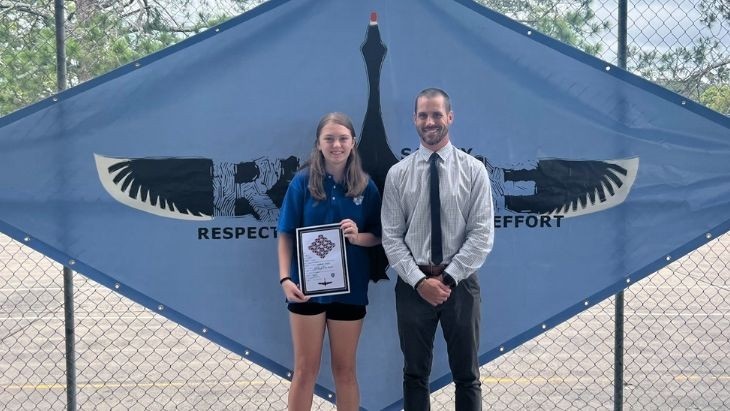
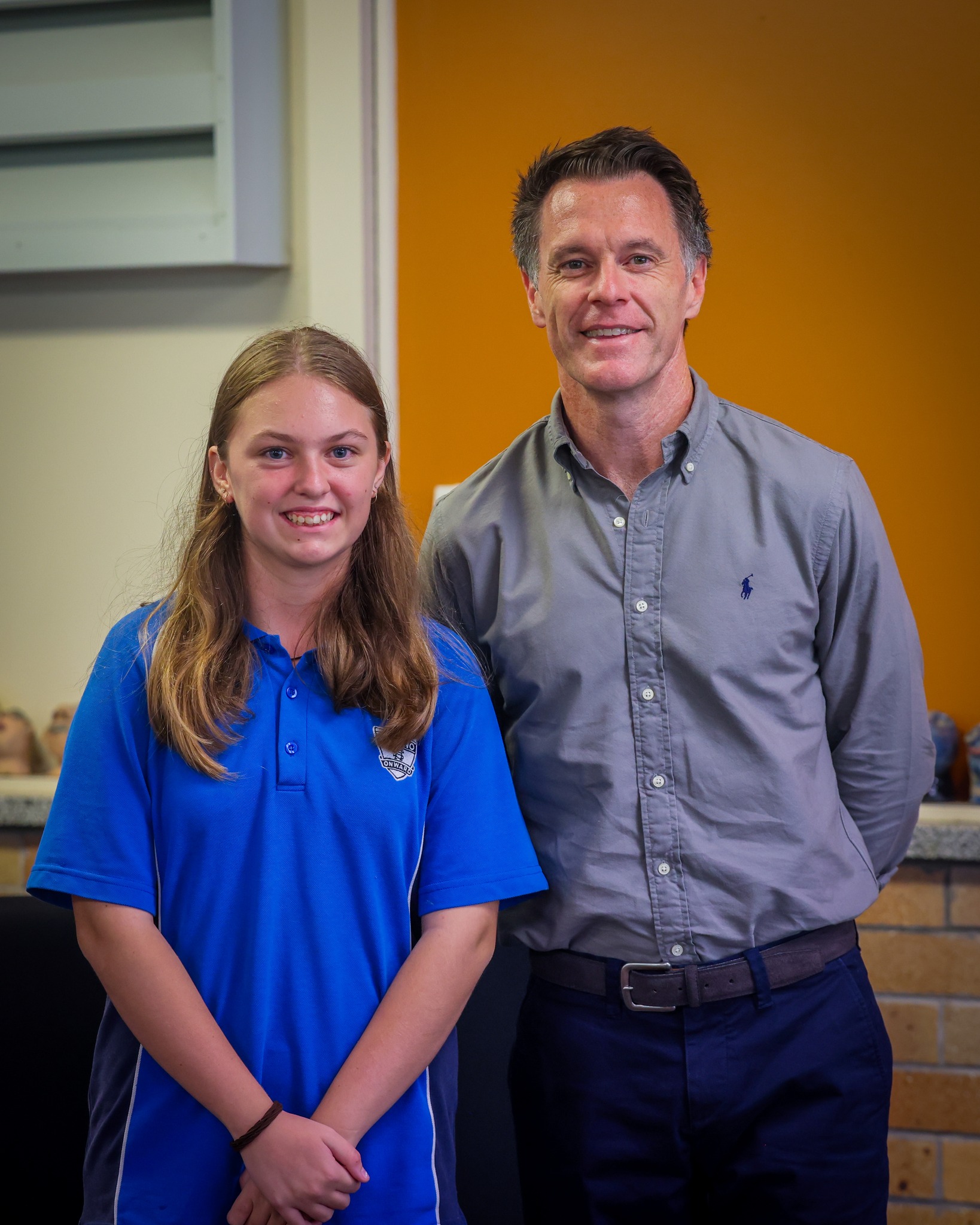
Surfing's First World Championship At Manly In 1964: Midget's Tribute At Black Rock, Palm Beach, Given Go-Ahead

Winners Midget Farrelly and Phyllis O'Donnell with their trophies. CREDIT R.L. Stewart
From the World Titles he had a vest on with the number 3 on it during the heat rounds. His vest actually had number 2 during the final:

Jack Eden's photo of Midget at Manly World Championships of Surfing in 1964, courtesy Jack and Dawn Eden

Ron Perrott's photo at Manly World Championships of Surfing in 1964, courtesy Ron Perrott

.jpg?timestamp=1471117108932)

A Few Notes:
Born in Sydney, Farrelly had his first surf experiences at North Bondi beach in the early ’50s. This was the heart of old-style Australian beach culture; the realm of the volunteer lifesaver “surf clubs”, where the country’s few surfers would leave their big wooden boards overnight because they were too heavy to carry home on cars or bikes.
Quickly nicknamed ‘Midget’ for his slight build among the big men of the beaches, a barely teenage Farrelly saw California’s Greg Noll surfing Sydney waves during Da Bull’s lifeguard-sponsored visit in 1956, and realised that you could ‘corner’ on waves. (The Americans gave many demonstrations at Melbourne beaches during that Olympic year and subsequently launched the surf boom.) By 1961, the Malibu-style lightweight boards were being churned out and Farrelly was the Australian surfing champion. In 1962, he went to Hawaii and won the Makaha International championship in 6-foot surf, using a quick, light-footed surfing style, surprising the Hawaiians and Americans by becoming the first ‘outsider’ to win the event.
SURFBOARD WIN TO AUSTRALIAN HONOLULU,
Wednesday (A.A.P.-Reuter)
Australian surfer, Bernard Farrelly of Sydney won the world surfboard riding title to-day. He captured the championship from nine of the most experienced surfers in the world at the end of an exciting international tournament at the famed Makaha Beach in Hawaii. Experts who watched the final said Farrelly won because the conditions suited him better than the other finalists, who were all from Hawaii or California. The finalists had to wait two days until tournament officials decided the waves were good enough to make surfing possible. Farrelly showed remarkable control in his series of rides, building up his points tally, based on the length of ride and form displayed in catching a wave. SURFBOARD WIN TO AUSTRALIAN (1963, January 3 - Thursday). The Canberra Times (ACT : 1926 - 1995), p. 20. Retrieved from http://nla.gov.au/nla.news-article104254829
By 1964 the International Surfing Federation had pulled together the world’s surfing nations to stage a first-ever World Surfing Championships. The venue was Manly Beach. At the time, Australia was hardly the epicentre of surfing but 60,000 people lined the Manly shores to watch Farrelly take the men’s crown ahead of surfers such as Joey Cabell and Mike Doyle. Prior to the championship, Farrelly had won the Australian title.
A sensational stylist, Farrelly was considered unbeatable at his peak in medium surfs but could match the world’s best in any conditions.
Farrelly was arguably the most successful competitor in the world during the 60s, he won the Australian title again in 1965, finished sixth at the 1966 world championships, and lost on a count-back to Fred Hemmings in the 1968 world championship at Puerto Rico to be placed 2nd. In 1966 he also won the Peruvian International Small Waves competition and in 1968 won the Bobby Brown Memorial.
Though always dedicated to the sport, he later became embroiled in a series of disagreements with Australian officials and was banned from entering the 1969 Australian title. He finished second at the 1970 world championships.
He set his own path through the ’70s and much of the ’80s, building a successful blank-making and chemicals business (Surfblanks), getting into alternative sports (he once broke his ankle hang gliding and is a highly skilled sailboarder), keeping a low personal profile, yet always being in the water on the bigger days at North Avalon and other breaks near his Palm Beach home. He learned to shape surfboards and produced two books – ‘A Surfing Life’ and ‘How to Surf ‘.
Midget still ran Surfblanks and spent more time in the water than ever before passing away on August 8th 2016. His public profile remained very low until, inspired by some of the new generation of Australian pro surfers, he began appearing at events and surfing in the legends displays that accompanied some Aussie pro events in the late ’80s. At the 1999 Noosa (Queensland) Surfing Festival, he re-won his 1964 crown in a replay of that event’s final heat.
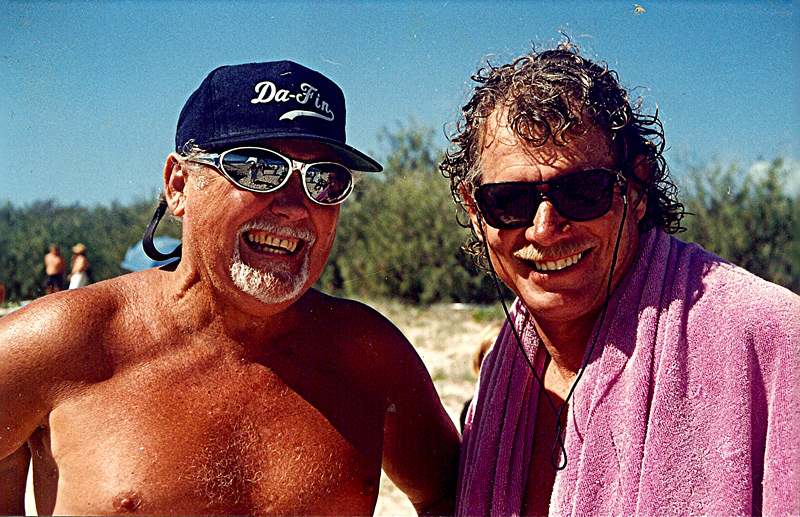
Scott Dillon with Bernard Midget Farrelly at the 64 world titles re-enactment in Noosa. Photo courtesy Ron Turton
Honours & Achievements
2017: Posthumously made a Member of the Order of Australia (AM) for his contribution to surfing
More in:

.jpg?timestamp=1658010237874)
.jpg?timestamp=1658010260801)
.jpg?timestamp=1658010281069)
.jpg?timestamp=1658010305125)
.jpg?timestamp=1658010336267)
.jpg?timestamp=1658010360326)
.jpg?timestamp=1658010383706)
.jpg?timestamp=1658010408984)
.jpg?timestamp=1658010473941)
.jpg?timestamp=1658010500646)
.jpg?timestamp=1658010526098)
.jpg?timestamp=1658010557597)
.jpg?timestamp=1658010583414)
.jpg?timestamp=1658010615447)
.jpg?timestamp=1658010650129)
.jpg?timestamp=1658010685947)
.jpg?timestamp=1658010715992)
.jpg?timestamp=1658010744087)
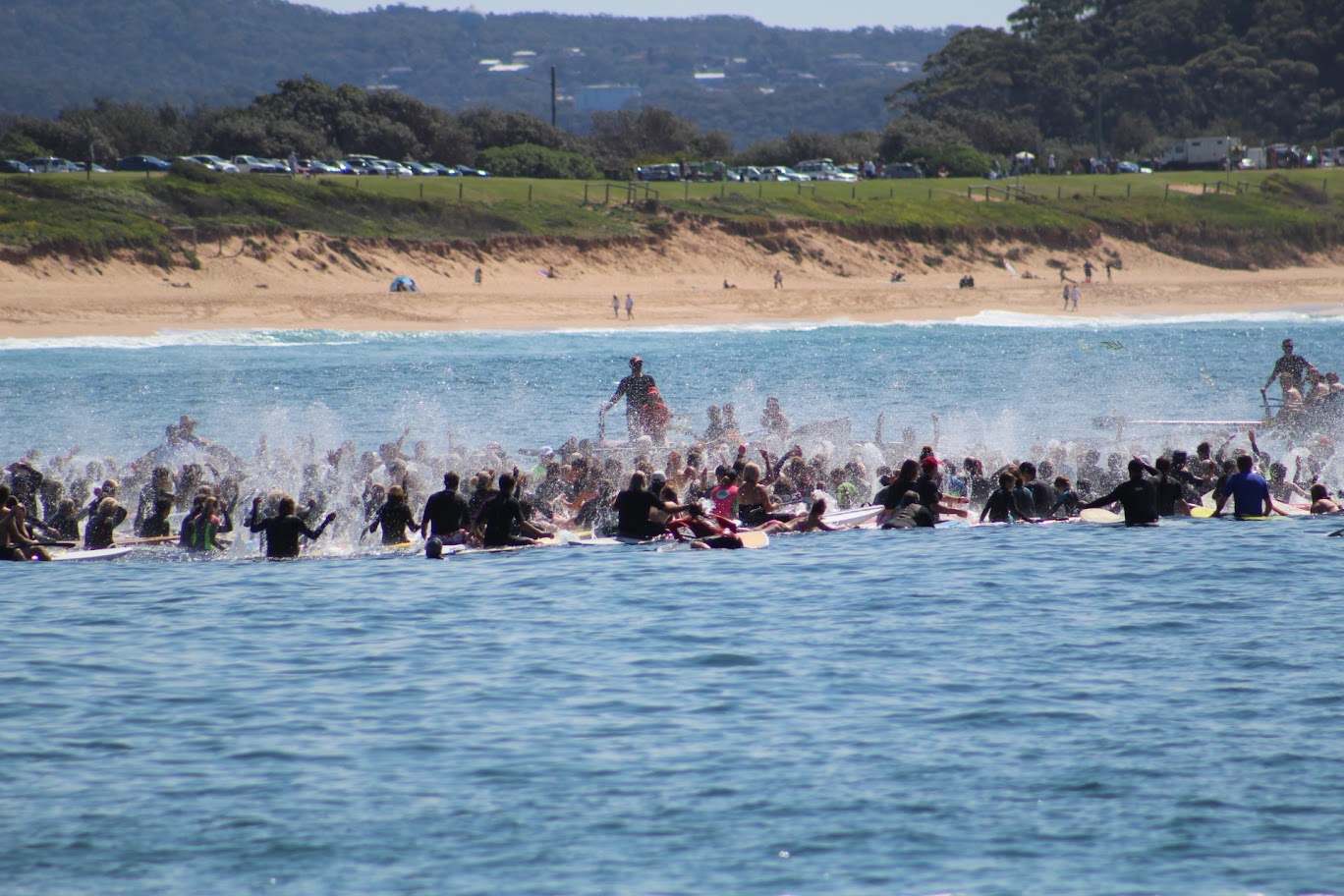
Pictures From The Past: Views Of Early Narrabeen Bridges
Did you know that Narrabeen's Lagoon did not have a bridge to cross into Pittwater until 1882?
People walking or riding on horses along the Pittwater road, formerly just a track, had to wait until the tide was low or choose what was known as a 'low part of the lake' near the site of the main Narrabeen Lagoon bridge today. The entrance to the lagoon was also frequently closed and that too could be a place to cross:
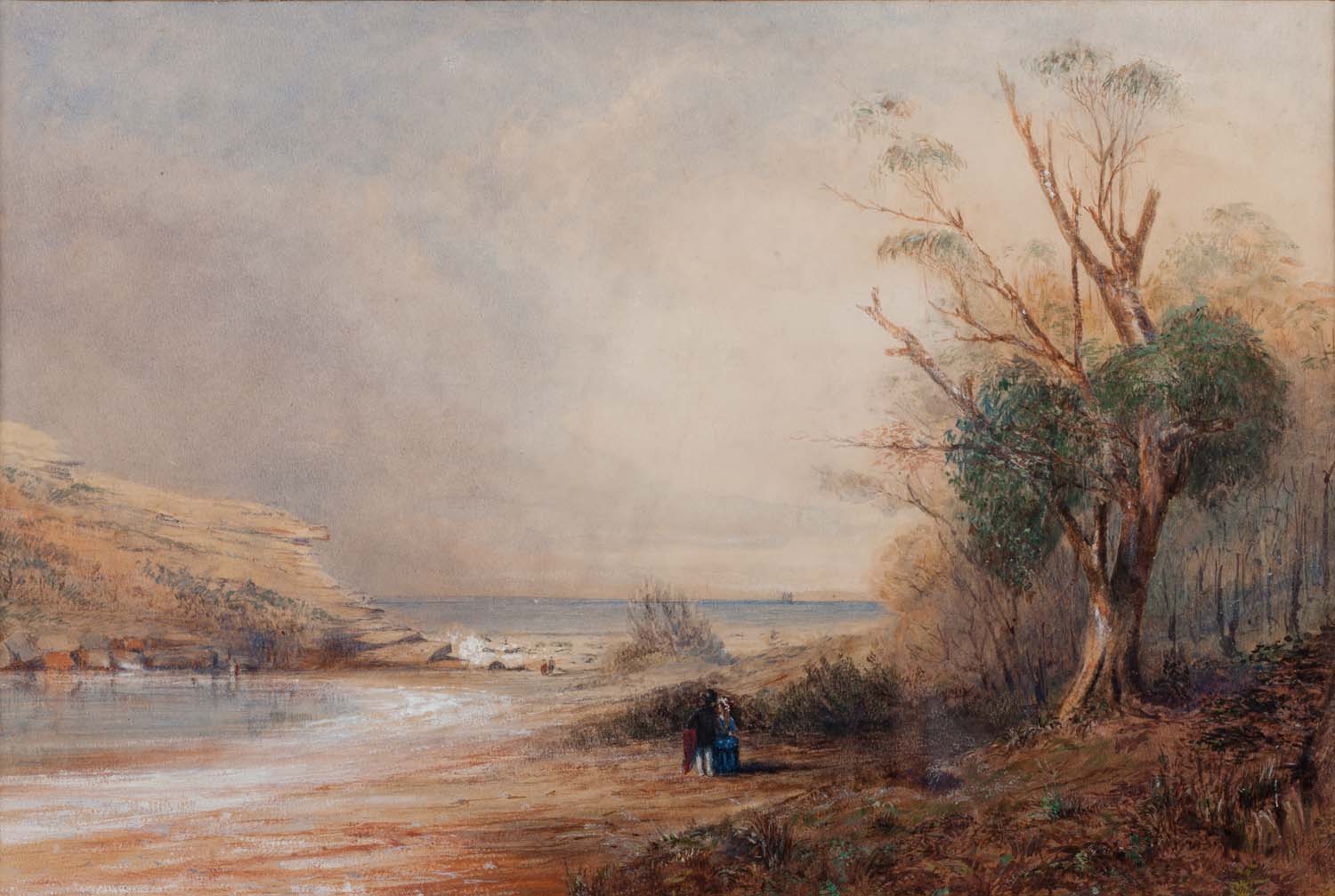
The road now led us along a swampy honeysuckle flat for rather more than half a mile, and then brought us on to the margin of the Narrabeen lagoon. Narrabeen is a somewhat extensive lagoon, connected with the sea by broad sandy flats covered by the tide at high water, but hire at low water, with the exception of a distance of about twenty rods in width, forming a channel by which the surplus water of the lagoon runs out into the sea.
The opening to the sea is somewhat narrower than this, though deeper, taking a man to the waist in wading over, whilst at the regular crossing-place the stream at low water is not much over the knee. It is situated between the island fall of the high precipitous ridge that, jutting far out into the ocean, forms Narrabeen Head to the north; and to the south, the long low sandy beach that extends northerly from the Long Reef.
The large sheet of water that forms the lagoon is situated some two miles from the sea, with which the sandy flats connect it, although at high water, and particularly at spring tides, one broad expanse of water extending in one continuous sheet from the ocean into the interior for a distance of five miles is presented to the view, forming a magnificent lake, by no means wanting in picturesqueness and rude grandeur in some portions of it.
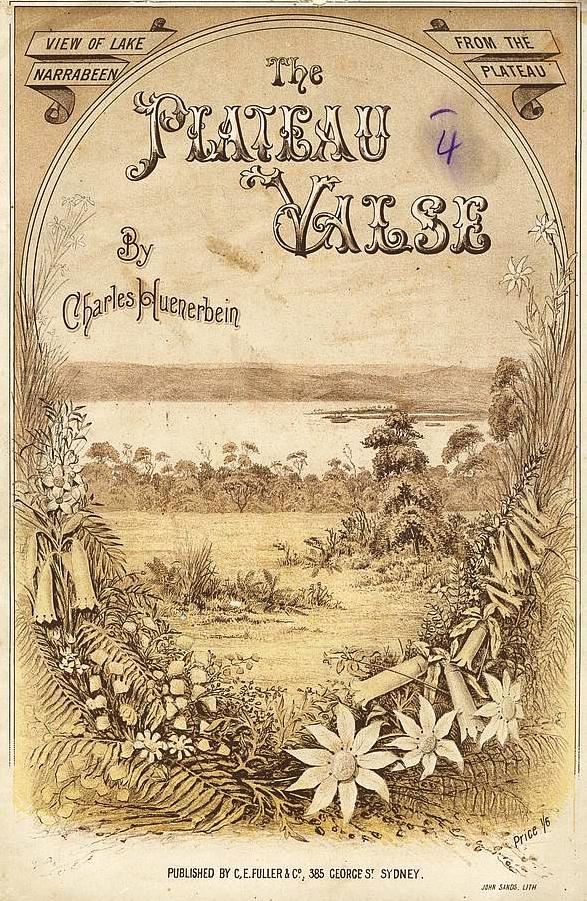 Where the road crosses, the country for some distance around is flat, and consequently tame, and the picture is rendered sombre by the low, thick growth of ti tree that fringes the water line, and the dark leaved honeysuckles of the flat land beyond ; but higher up, where the fresh water of the lagoon commences, where ranges clad with giant timber come down to its margin, and where numerous gullies with the rich, dank jungle vegetation of the tropics, including the cabbage-tree palm, the fern tree, the bengola, and wild vine, empty their watery contributions into it wild landscape views might be taken fully equal to many of those about which artists have raved so much.
Where the road crosses, the country for some distance around is flat, and consequently tame, and the picture is rendered sombre by the low, thick growth of ti tree that fringes the water line, and the dark leaved honeysuckles of the flat land beyond ; but higher up, where the fresh water of the lagoon commences, where ranges clad with giant timber come down to its margin, and where numerous gullies with the rich, dank jungle vegetation of the tropics, including the cabbage-tree palm, the fern tree, the bengola, and wild vine, empty their watery contributions into it wild landscape views might be taken fully equal to many of those about which artists have raved so much.
I have said that the morning was cloudy, and consequently the sun, not yet very high, was overcast and as we came down to the channel, over which we had to cross, the wind swept coldly over the sandy beach, making the task of stripping and crossing anything but a pleasant one. Under the circumstances, the twenty rods of width-for luckily we had hit the extreme low water - appeared, in my eyes a mighty waste of waters, and in the absence of guide or direction, it seemed a somewhat dangerous experiment to venture upon, particularly as the water was evidently running out with great swiftness.
"Oh," said Tom, as I expressed my doubts, " there's no danger; its all right !"
Right: The Plateau Valse [music] - 1880 - 1889 (9 pages - cover shown) by Charles Huenerbein, courtesy National Library of Australia
So we sat down, pulled off boots and stockings, and tucked up our trousers as high as we could ; but I noticed that with all his boasting, Master Thomas loitered considerably over his preparations, growling audibly over "those blessed boots," the getting on again of which he declared to be a matter of considerable doubt. Tom grumbled and fumbled so long, that Nat, declaring that "he wasn't going to wait getting cold through for him," took the lead in the advance, walked nonchalantly into the water and made steadily for the other side. I watched him with fear and trembling, expecting every minute to sea him disappear, but, as I perceived that he got half-way over with the water only up to Ins knees, I took heart of grace and ventured in. But oh the terrible agony of that first plunge! The water was as cold as if it had been fresh melted snow, and my feet, having been warmed by the brief walk, felt the change most bitterly. But on and on I went, the chill of the water biting in rising circles round my legs as I got deeper and deeper in the stream, causing an agony unspeakable. Just as I was about half-way across, I turned round in order to see by the distance I had passed how long this torture was to be continued and there I beheld Tom, all ready for the passage, peeping out at us through the bushes. He caught my eye, and shouted "Tell us if it gets any deeper!
The old dodger had quietly pushed us on ahead, in order, as he said, that we might take soundings for him. I made him no answer, for I was too full of my own especial sufferings just at that moment j and, i without joke, it was as painful an ordeal, in regard to mere corporeal pain, as ever I went through m so brief a time. In fact, so acute was it, that I felt as I neared the end of my torture as if I could not possibly hold out until I got out of that blood-chilling stream, but that my feet must give way, and that I must fall. However, across I did get, without the fall that I considered inevitable, and it was only by looking down at my feet and seeing them there doing duty, that I could assure myself that I still possessed those appendages. The feeling I experienced on quitting the water was as if feet ankles and legs had been cut off, just at the place where the water had reached highest, with a red hot saw. Though I looked down occasionally to assure myself of the fact that I still possessed them, it was only after a ten minutes' run upon the sand that any sensation of feeling in those useful members made assurance doubly sure; and during the whole of the day I felt that burning ring round my leg, sometimes with painful distinctness.
There was a large flock of sand pipers, small birds, somewhat about the size of a lark, but with long lags like a snipe, that were running about the sand picking up their morning meal. I tried very hard to got a shot at them, but they ran away so fast and kept themselves so pertinaciously out of gun-shot that at last I let fly haphazard at them, and of course got nothing.
We now made for the opposite bank of the stream, where, above high watermark, the grass grew in thick coarse tufts forming a convenient towel with which to wipe the sand from our feet, and here we once more resumed boots and stockings, and got into marching on, though not before Tom had had a desperate struggle with his rebellious watertights, in which, from dread that in the end the boots would get the best of it, we were at last fain to join, and so by dint of numbers gained the mastery. Tom seemed quite proud of his achievement, and stalked along in consequence quite boastfully for the rest of that day's journey.
We had hung our loads on the posts of a fence that skirted the edge of the sand, and which enclosed paddock of long reedy grass, as high as a man's waist though beyond some gently undulating land the crest surmounted by a not very neat but substantial looking slate dwelling, rose up from the marshy plain, and appeared to be rich cultivated land. We were about to take our loads from the temporary pegs on which they hung, when we were joined by another wayfarer, who, like ourselves, had just crossed the lagoon, and came up to us to reconnoitre. .... MY HOLIDAY. (1861, July 1). The Sydney Morning Herald (NSW : 1842 - 1954), p. 2. Retrieved from http://nla.gov.au/nla.news-article13061639
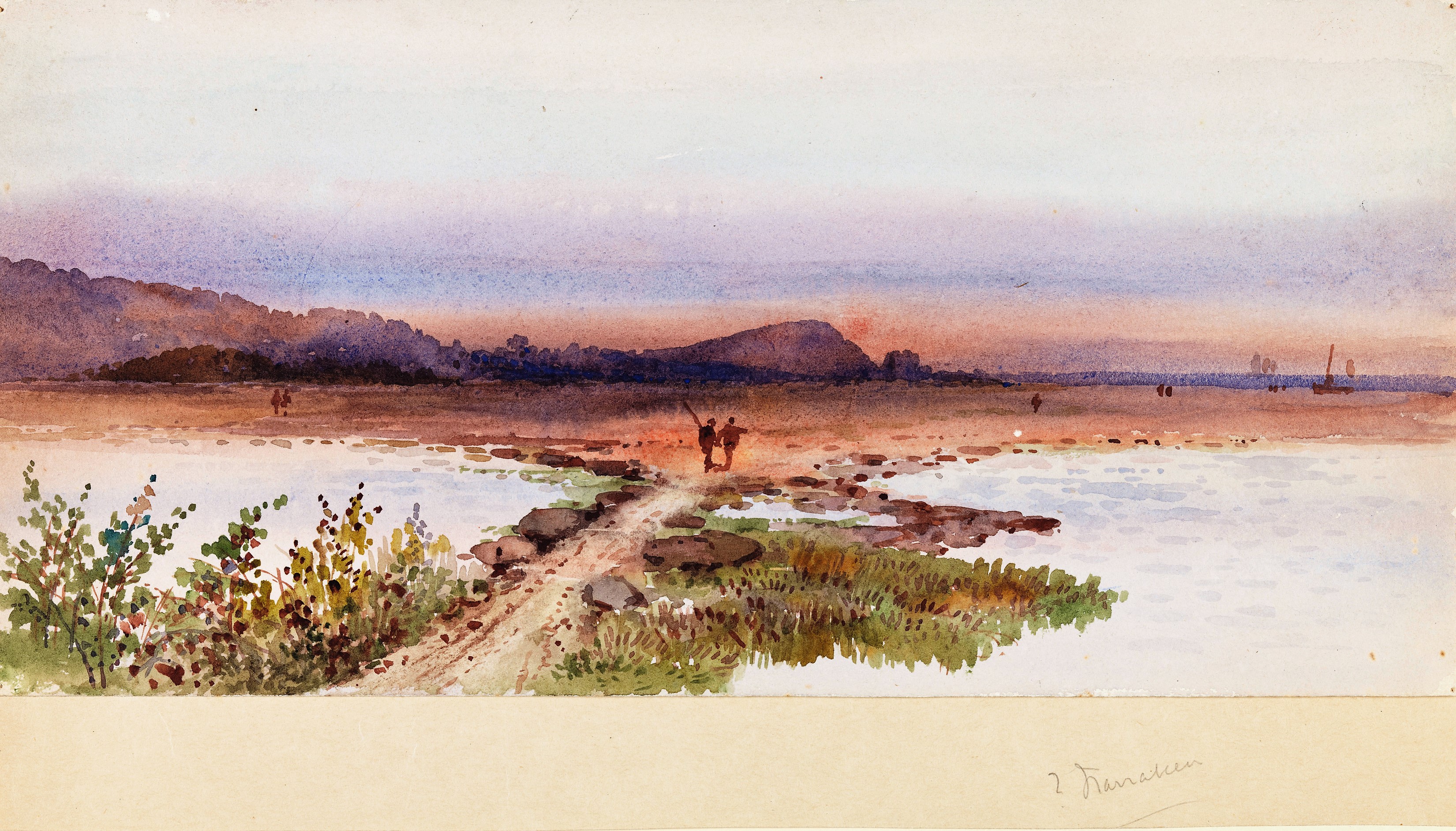
Narrabeen [a view, possibly of the lagoon and beach] Watercolour, 16.2 × 34 cm (6 3/8" × 13 3/8") circa 1870 by William Andrews, 1840-1887. Image No. c12838_0017_c, courtesy State Library of NSW
A description of then from a newspaper report of 1877:
SCENE ON NARRABEAN LAGOON.
Narrabean And Mona Vale.
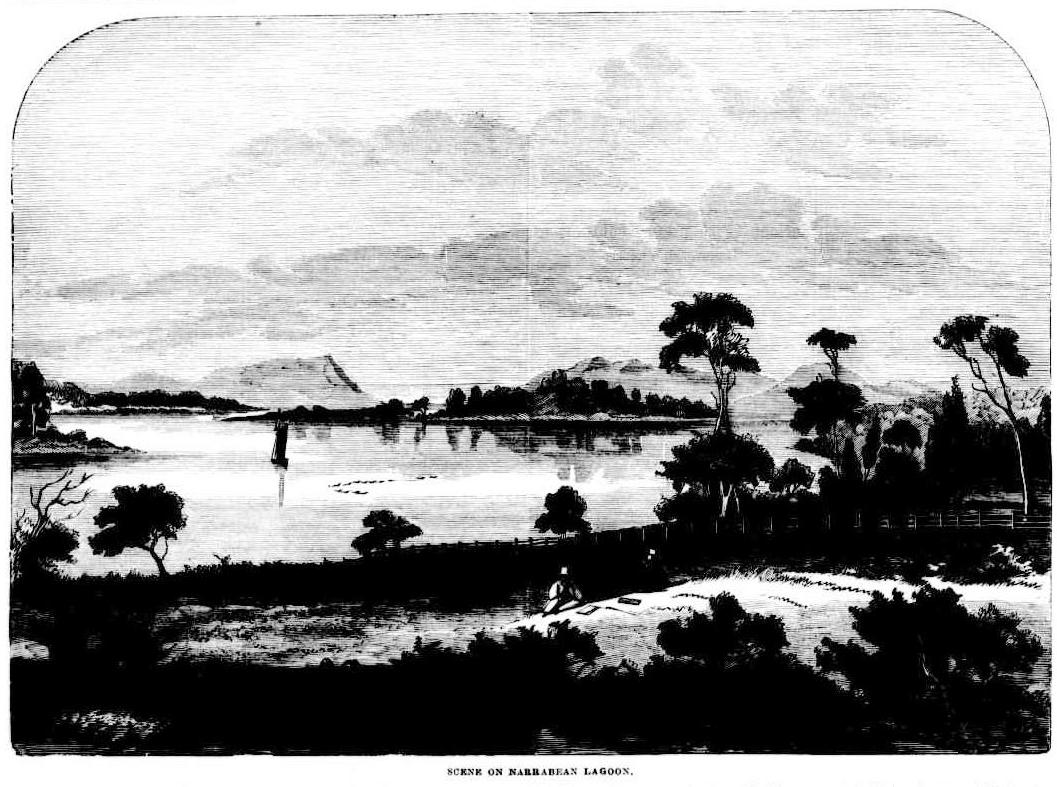
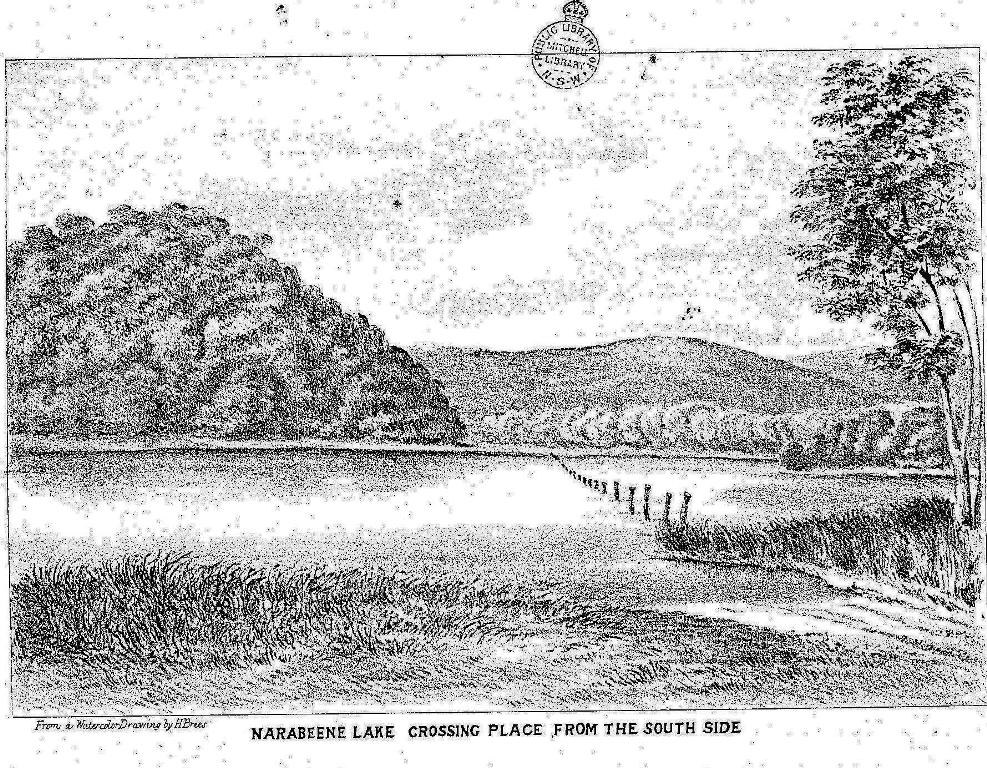
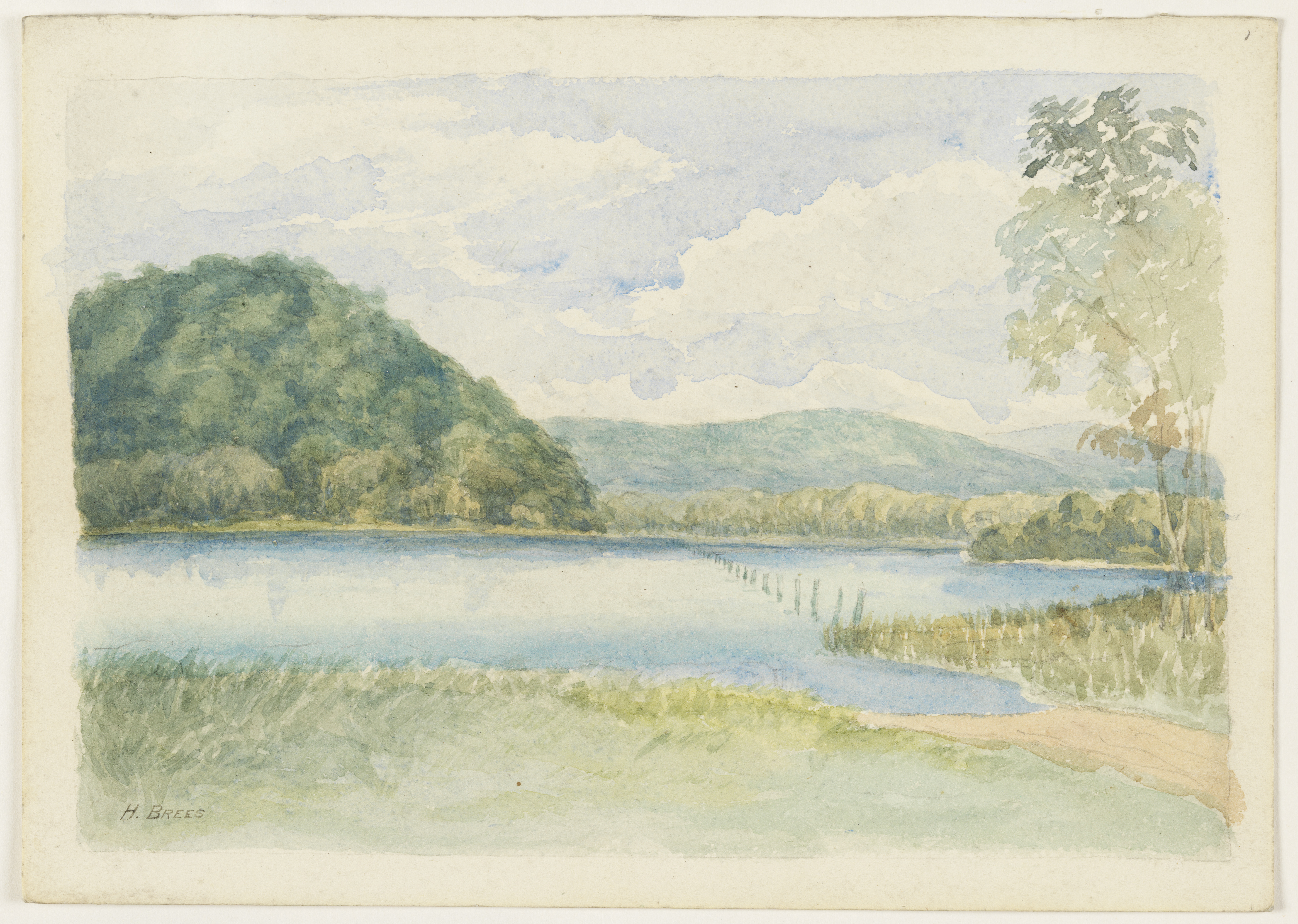
The Sketcher.
A Trip To Gosford.
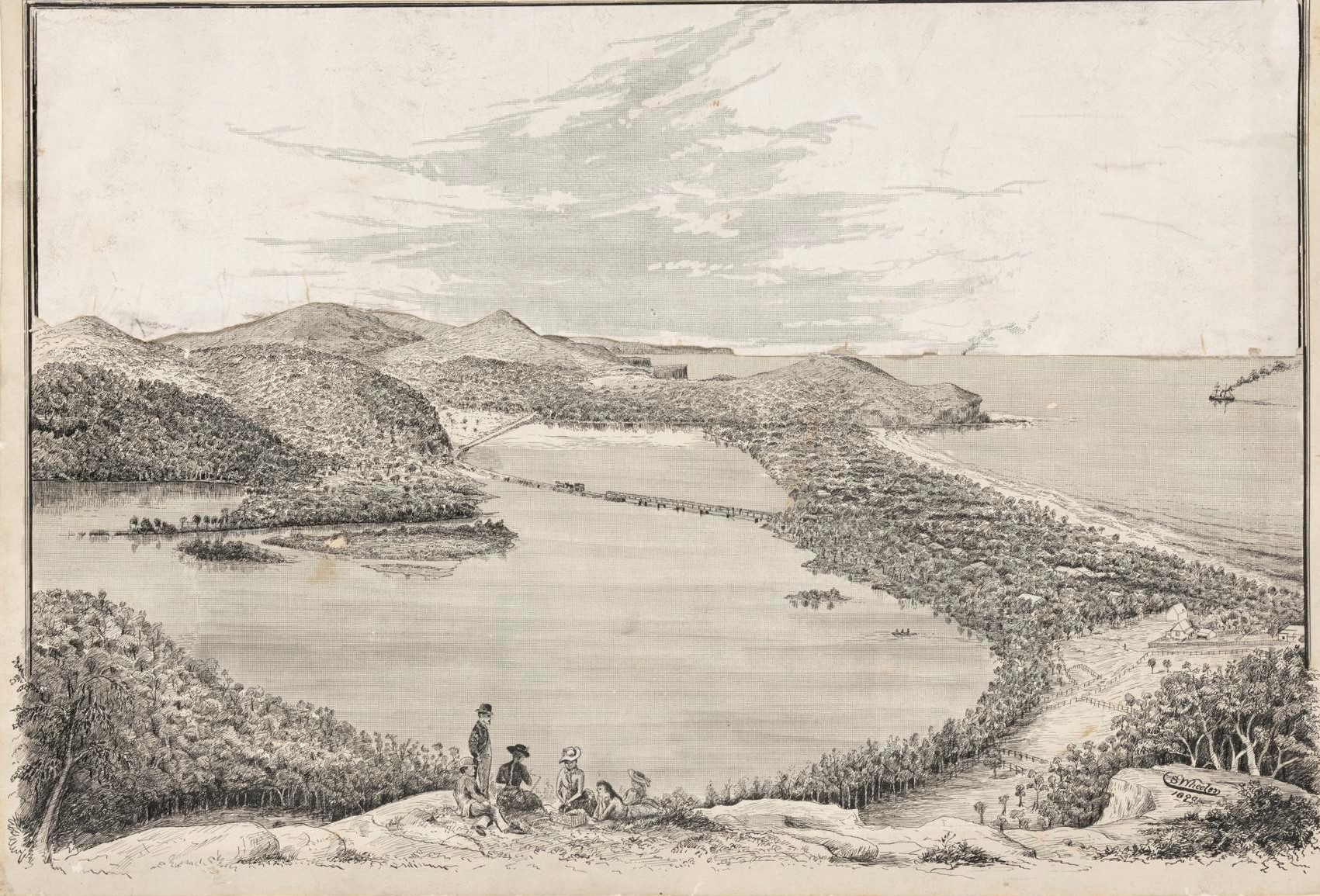
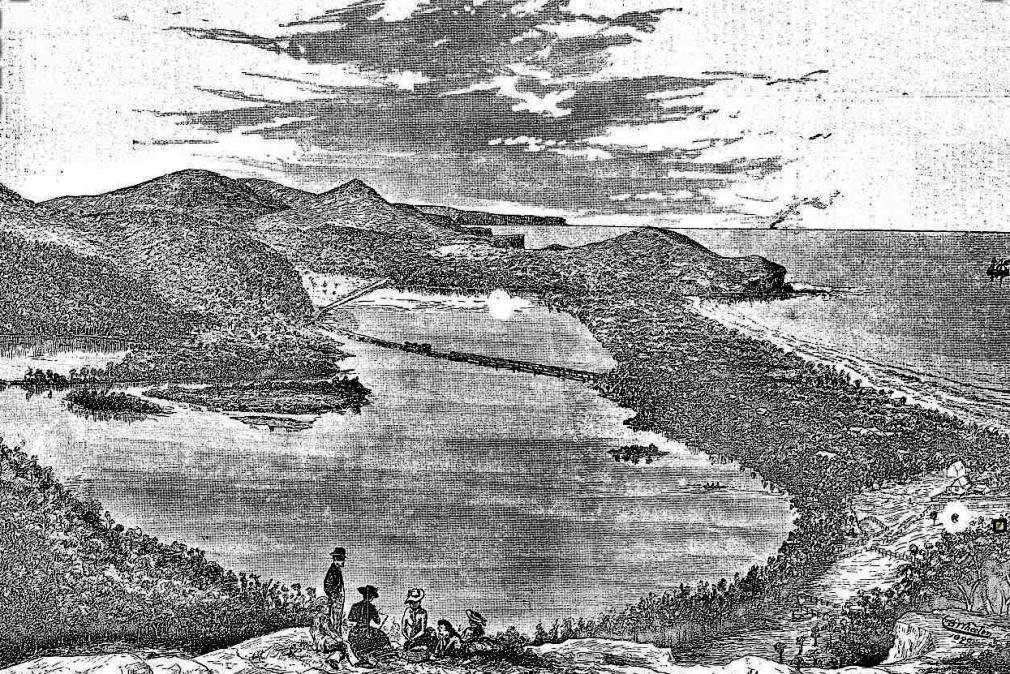

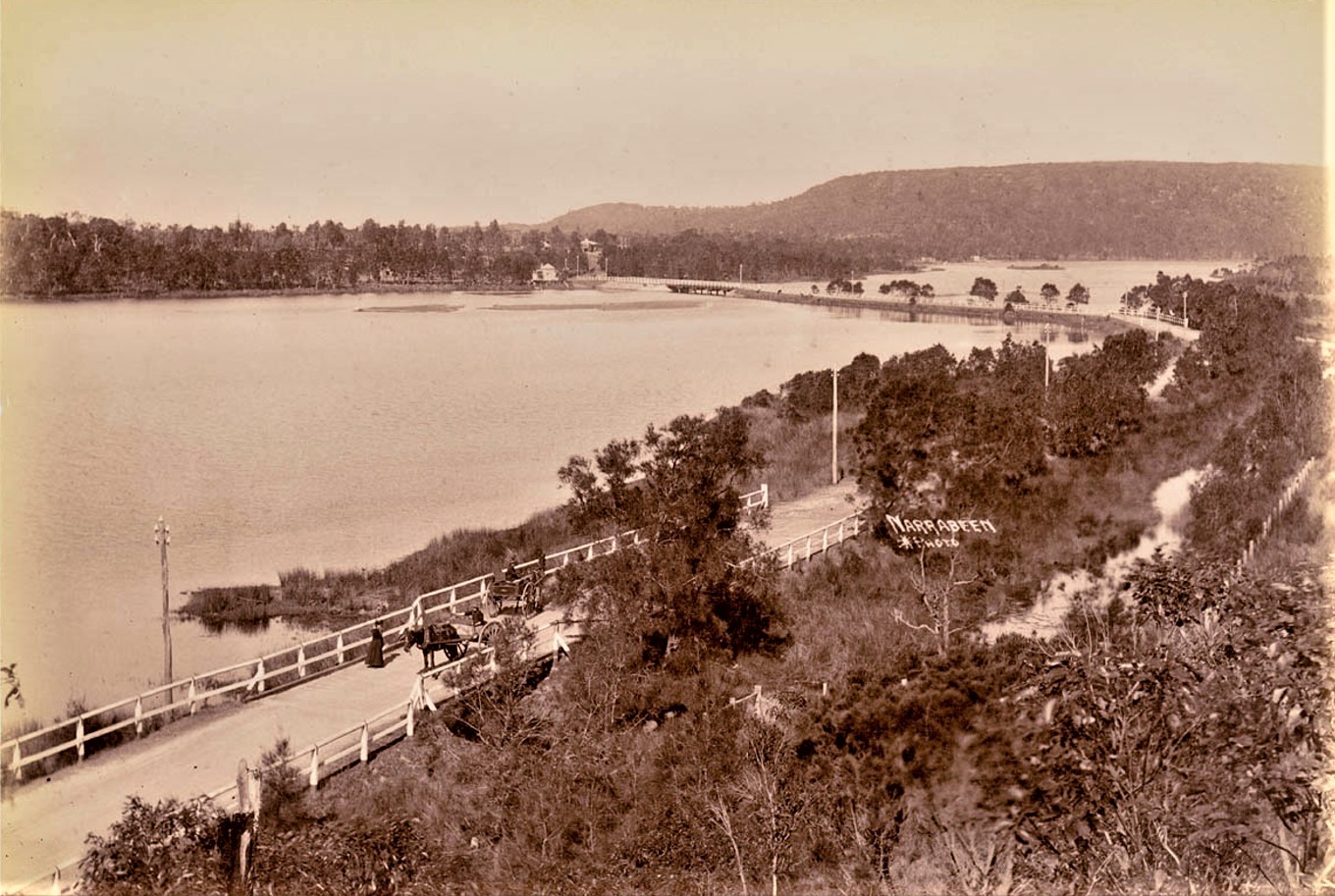
Narrabeen, Star photo, circa 1900-1906. Item a116483h courtesy State Library of NSW

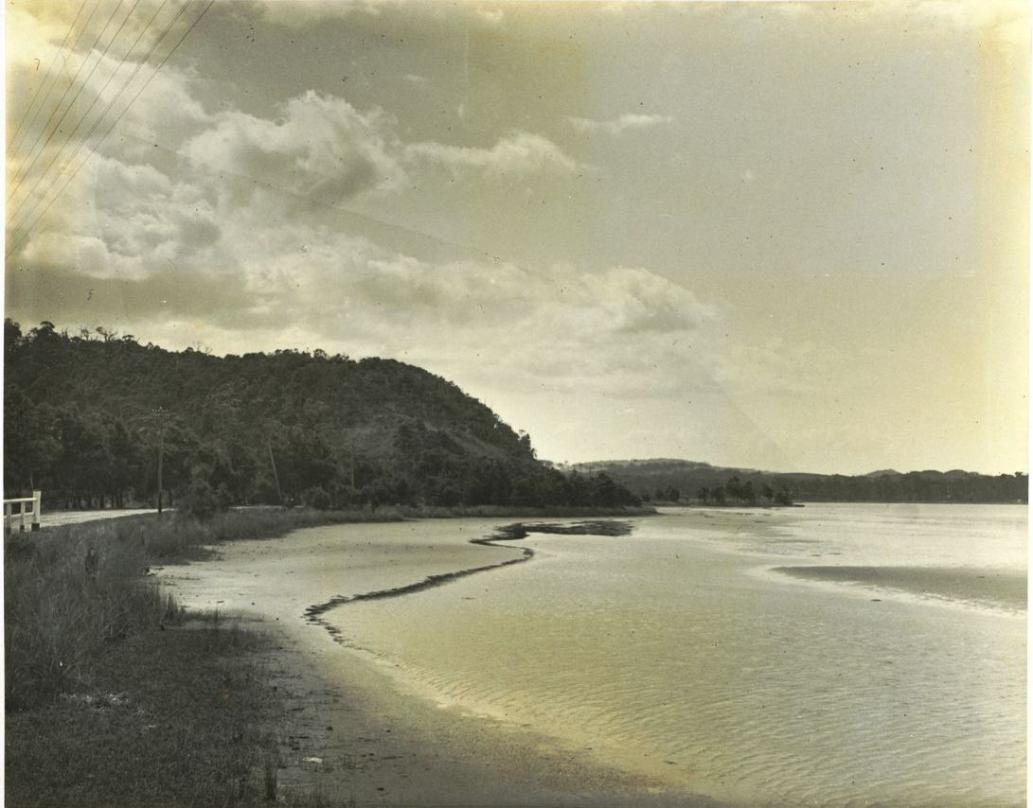
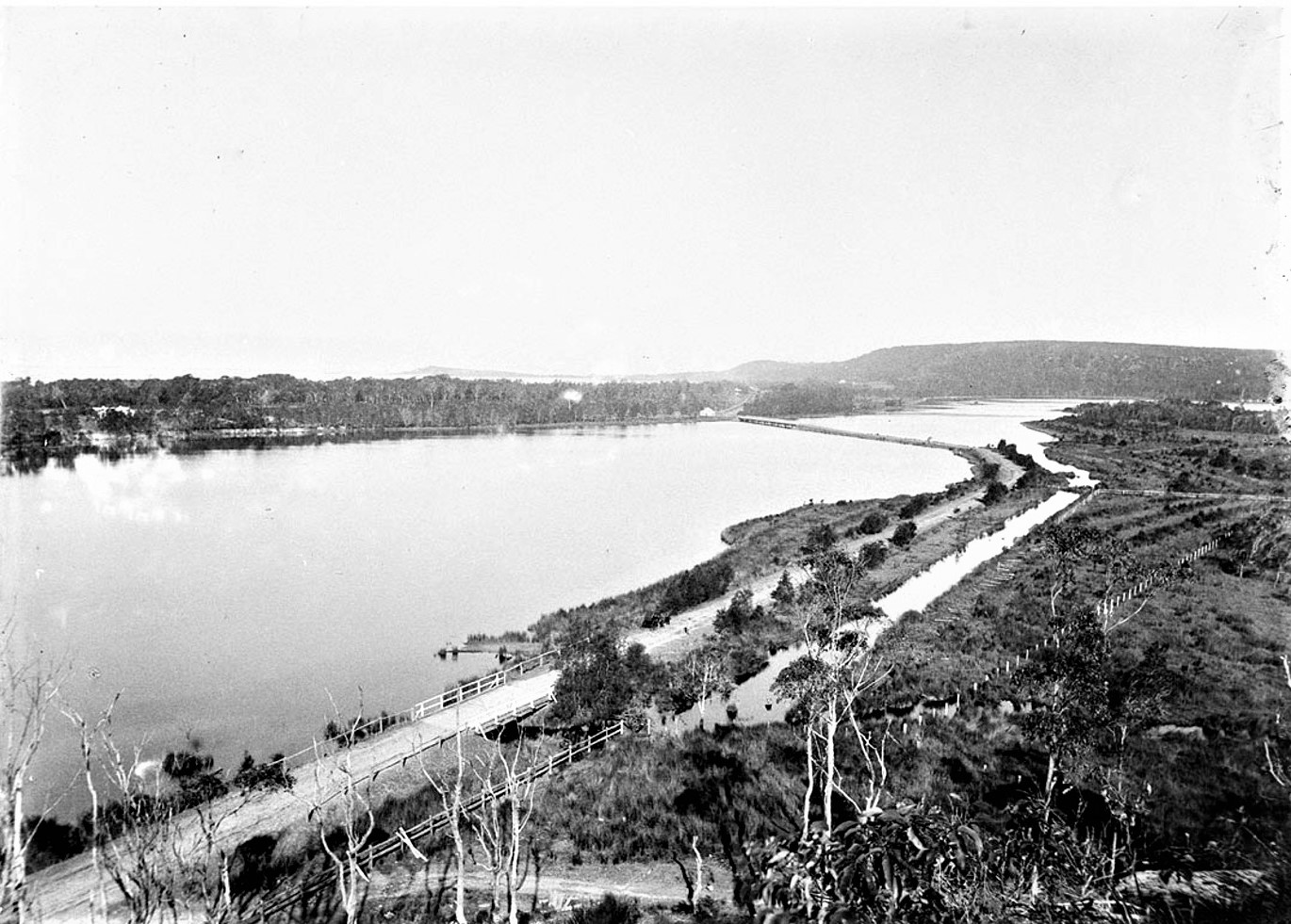
Narrabeen lagoon, circa 1915, Item hall_34703h, courtesy State Library of NSW
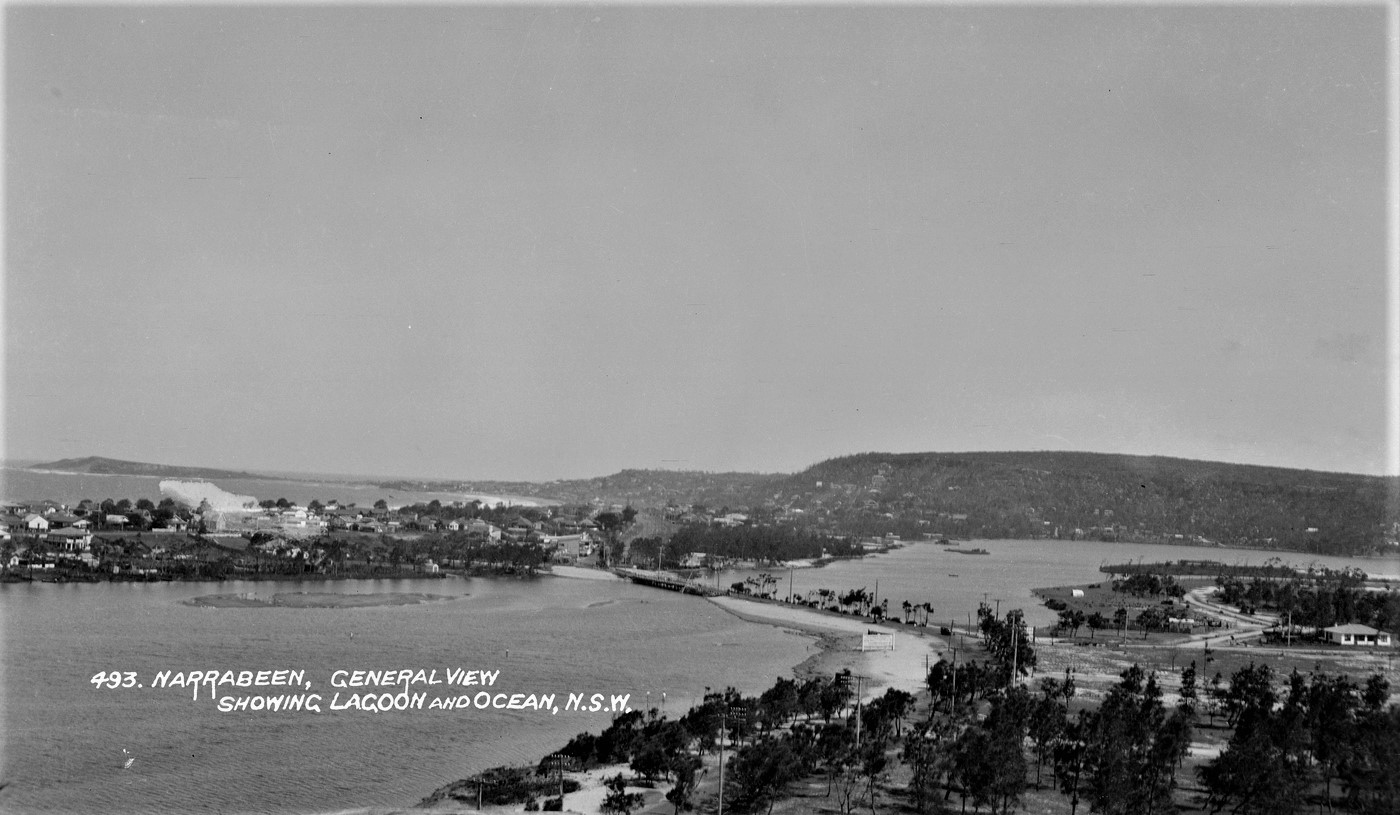
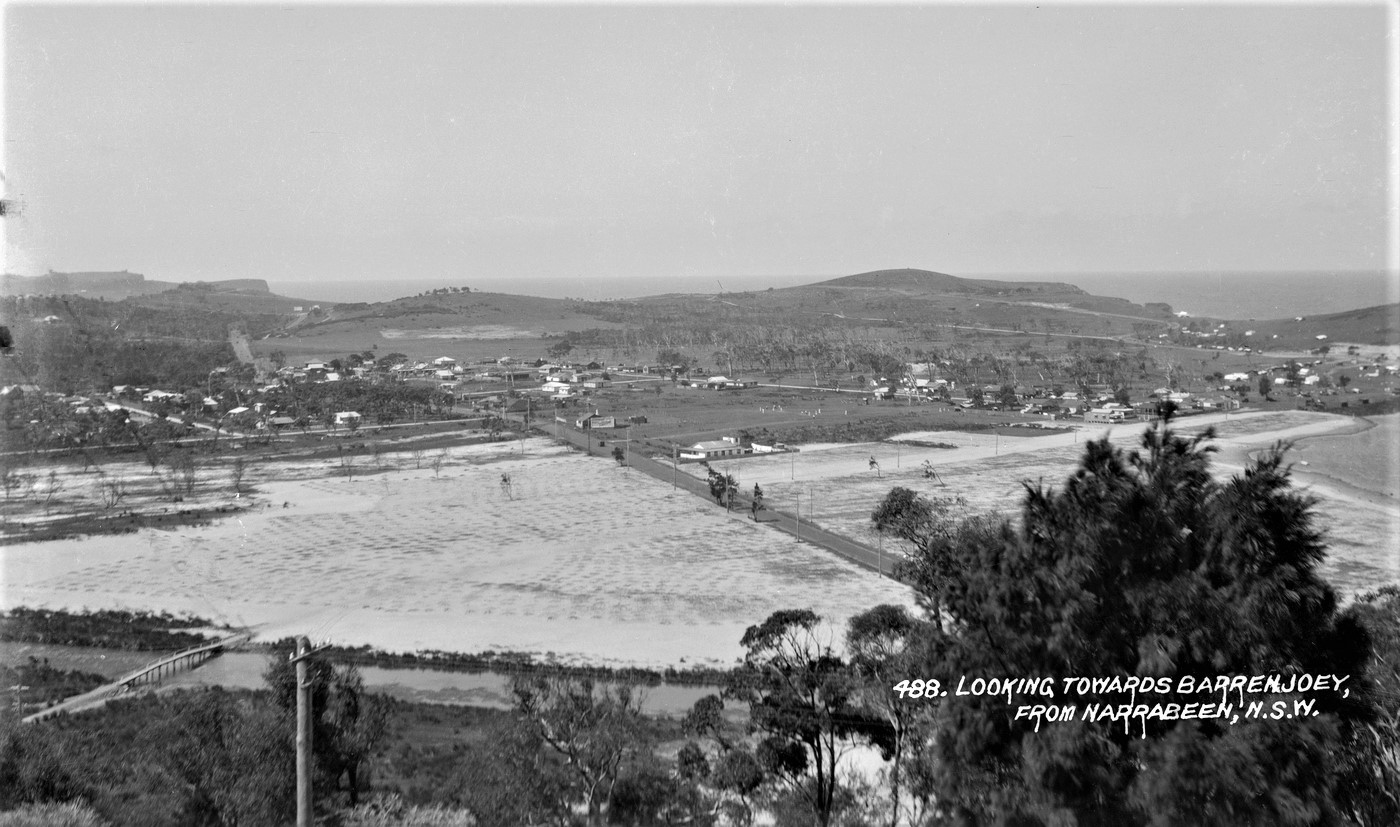
Narrabeen Lagoon, General View showing Lagoon and Ocean and Looking Towards Barrenjoey, From Narrabeen circa 1927, from Album 'Samuel Wood - postcard photonegatives of Narrabeen,' - Items a1470096h, a1470091h, courtesy State Library of NSW
A MOTOR CAR ON THE PITTWATER-ROAD, NARRABEEN
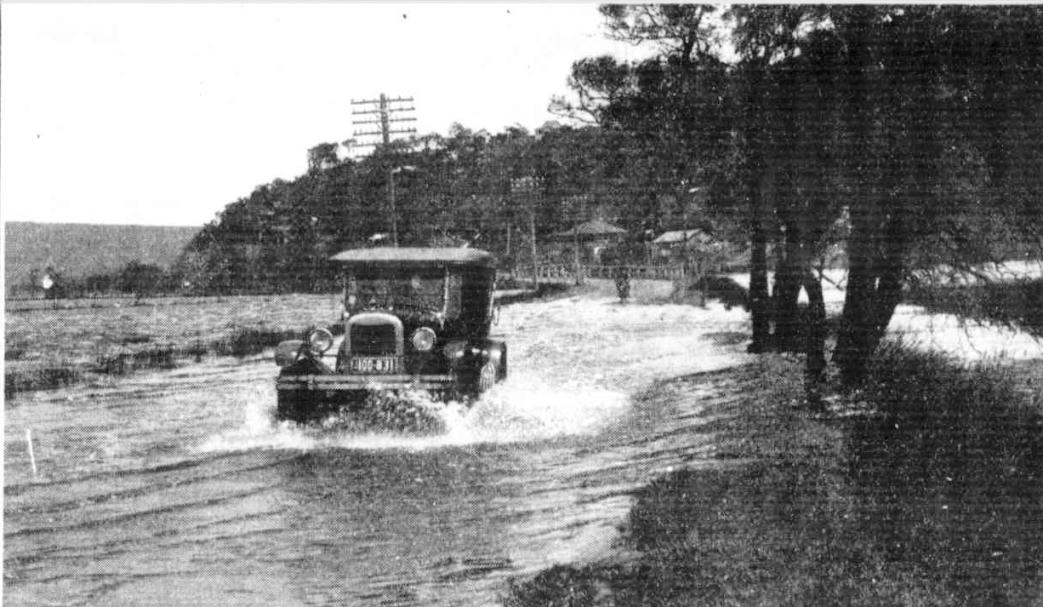
The foreshores of the lake were flooded by the recent heavy rains. The Warringah Council workmen opened a way to the sea on Sunday morning. Forestry, Floods, and Kindergarten Work (1927, November 30). Sydney Mail (NSW : 1912 - 1938), , p. 9. Retrieved from http://nla.gov.au/nla.news-article158295859
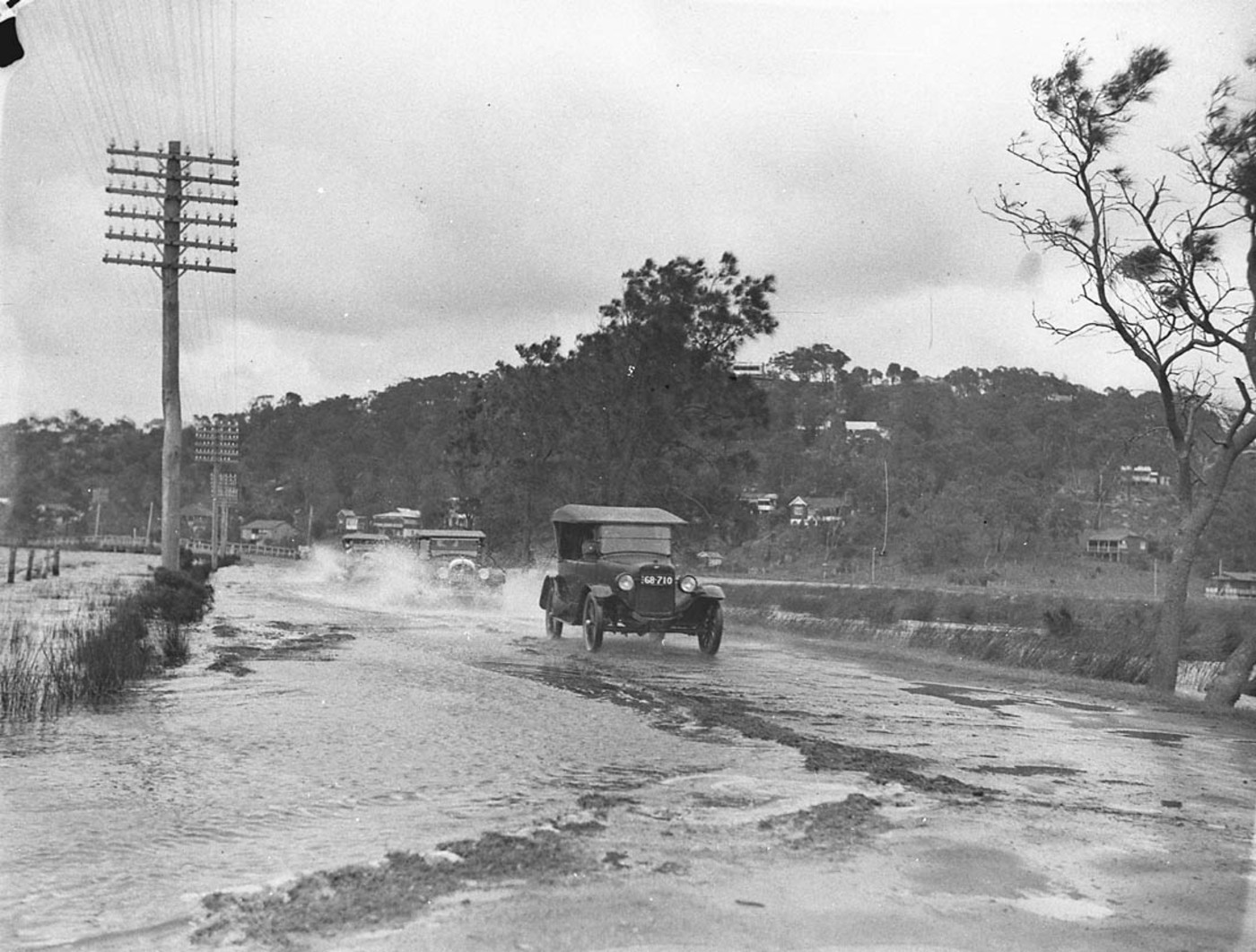
A 1926 Overland, a 1928 (?) Chrysler, and a 1928 (?) Dodge ploughing through Narrabeen floods - November 1927 Image. No: hood_06391- from the collections of the State Library of NSW.
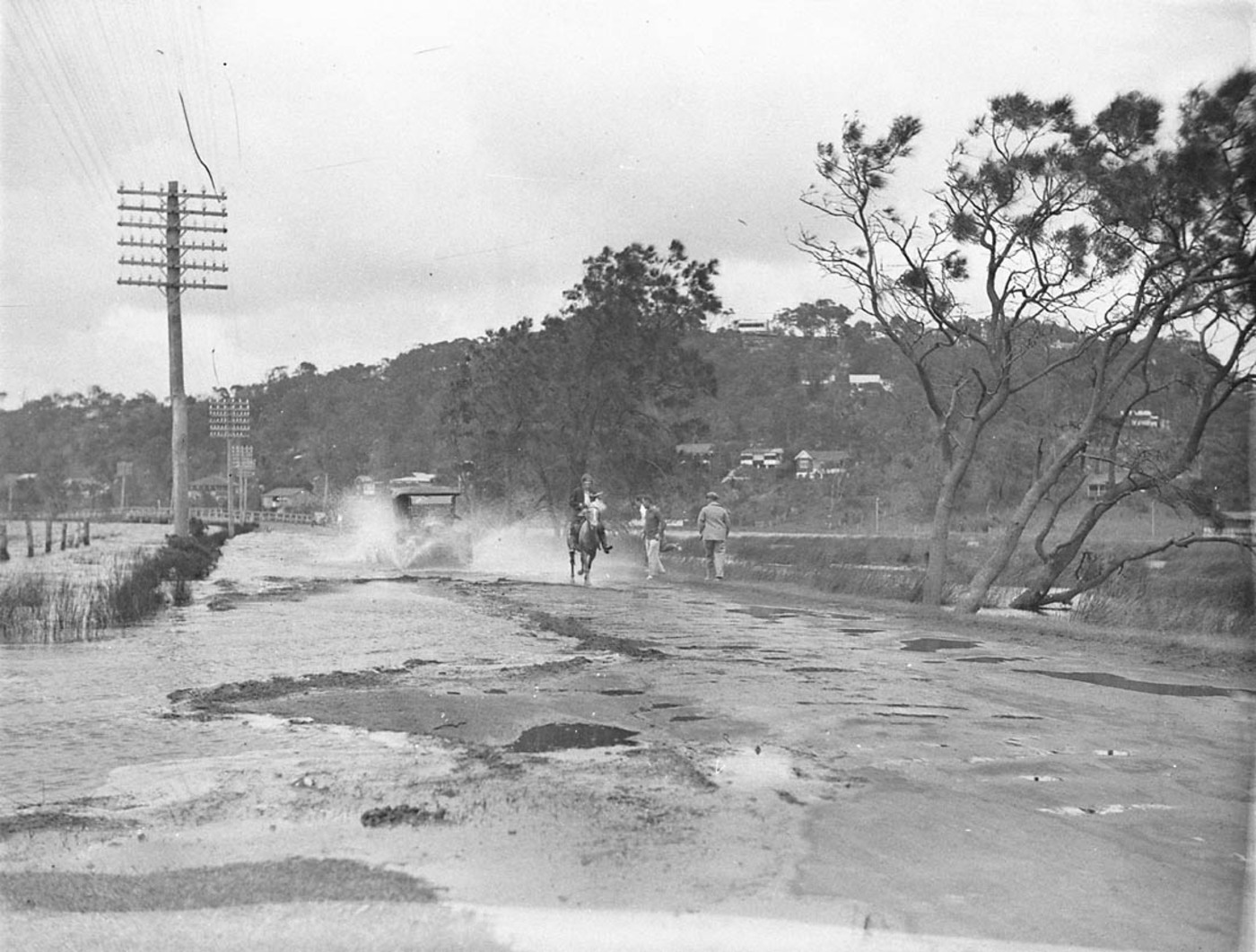
A car and a horse plough through a flooded road, Narrabeen - Image. No: hood-006394 from the collections of the State Library of NSW
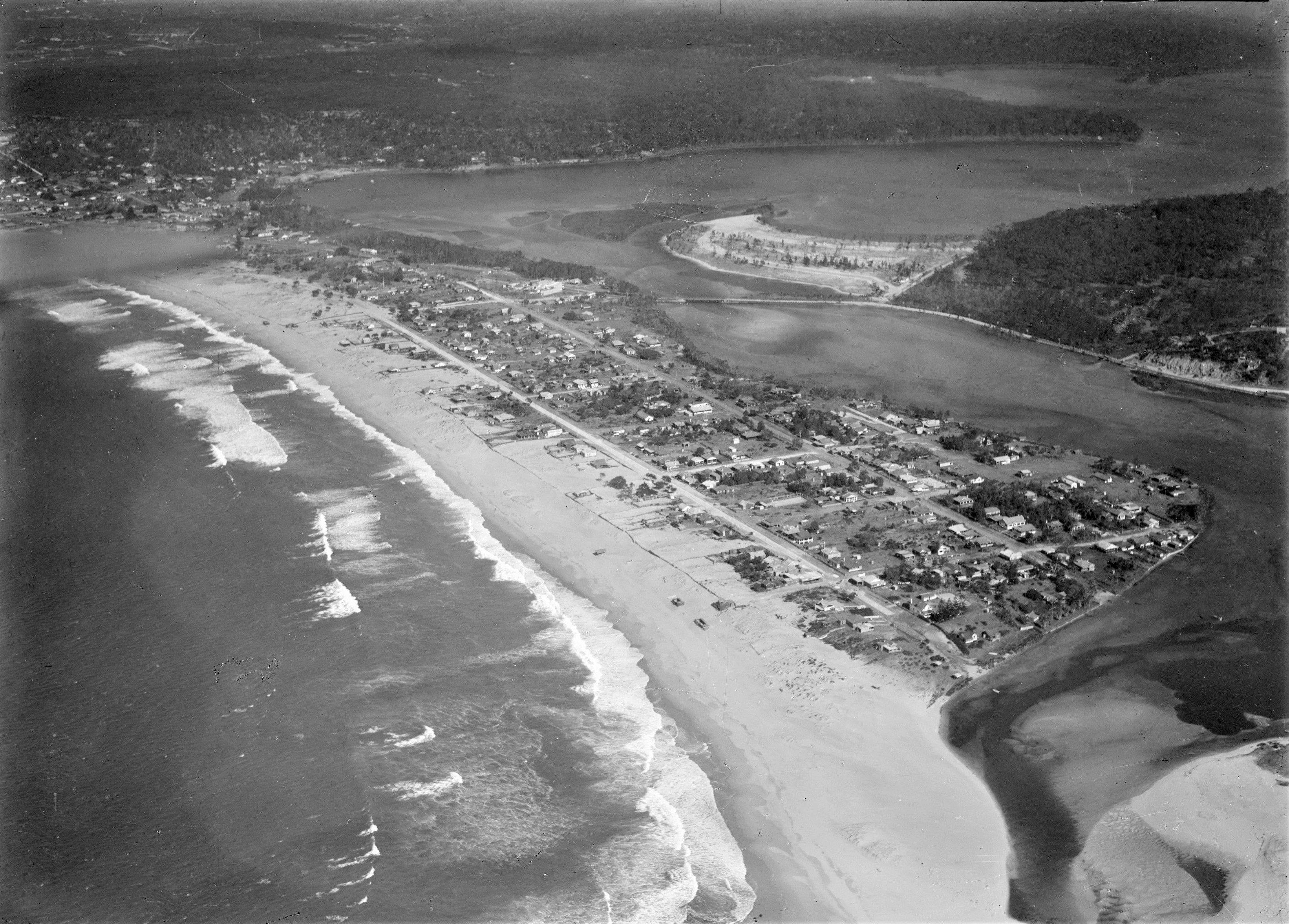
Narrabeen Lagoon aerial, from album ''Milton Kent aerial views of Bondi, Cronulla, Granville, Haberfield, Middle Harbour, Narrabeen, Mascot, Sydney, Sydney Harbour, Tempe, circa 1928, Item: c111660015, courtesy Mitchell Library, State Library of New South Wales - and sections from to show details; NB - no Bridge from Ocean street across Lagoon present, and old Nth. NSLSC still on beach.
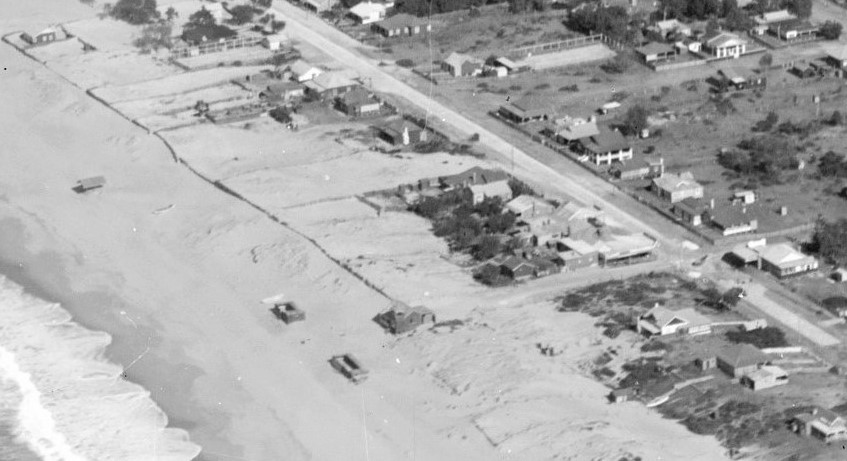
.jpg?timestamp=1593071813851)
Newspaper article above photos appeared in:
Striking Aerial Views : Newcastle and Narrabeen

NARRABEEN, BETWEEN OCEAN AND LAKE. This fine strip of ocean beach runs from North Narrabeen through South Narrabeen to Collaroy (on the left). Narrabeen proper is situated on the peninsula in the centre of the picture. The main road from Manly to Newport, Avalon, and Palm Beach runs through the upper portion of Narrabeen, crossing the lake by the bridge, beyond which is seen a portion of low -lying land now being reclaimed. Striking Aerial Views : Newcastle and Narrabeen (1928, August 22). Sydney Mail (NSW : 1912 - 1938), p. 17. Retrieved from http://nla.gov.au/nla.news-article158401835
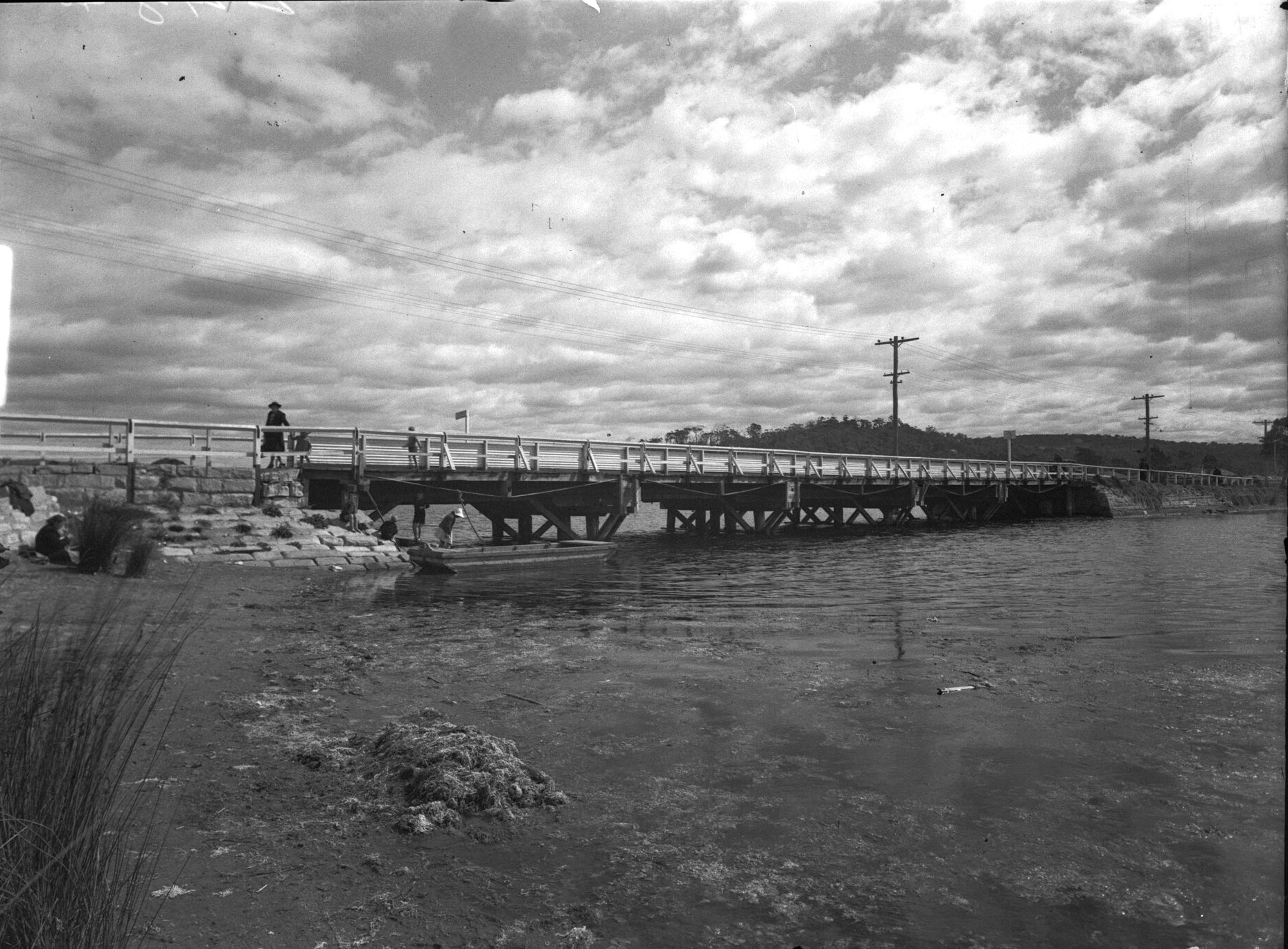
Narrabeen Bridge 1946, Item: FL3794556, courtesy NSW State Records and Archives
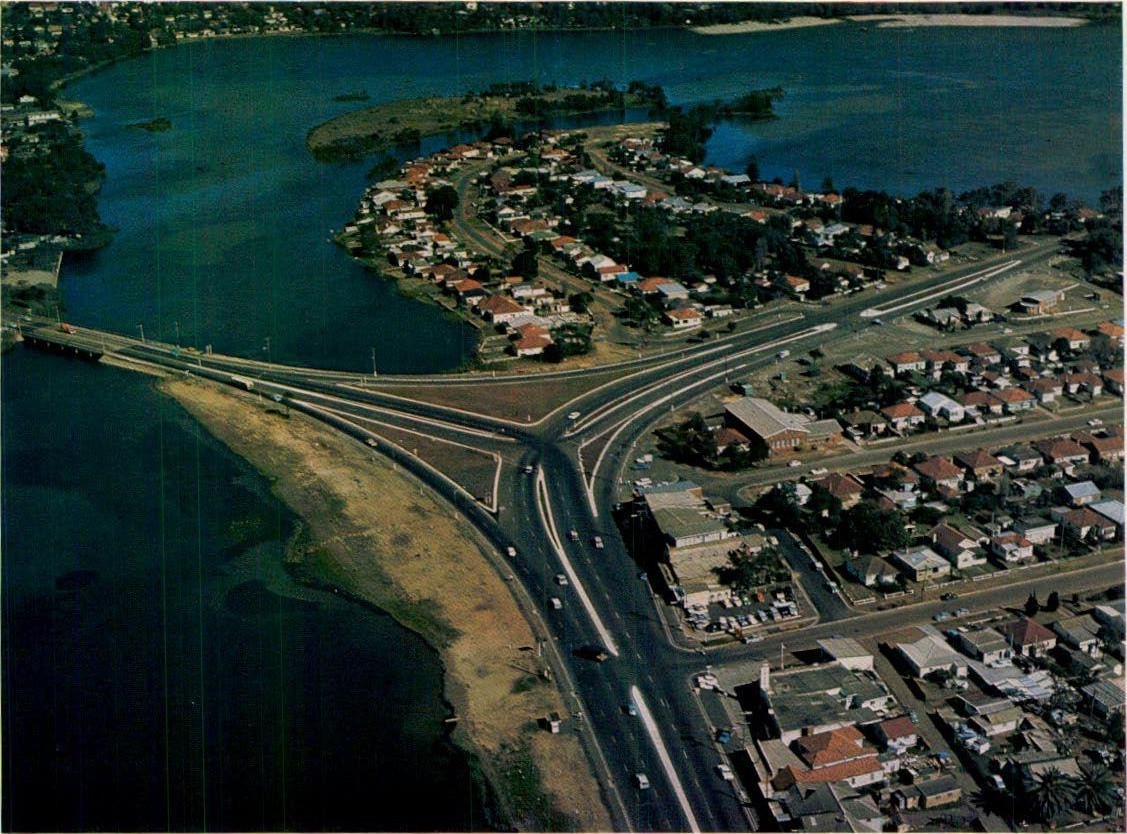
Why Are There So Many Spiders Around In Summer?
Have you noticed a lot of spider webs in your garden lately?
Spiders live in our gardens and homes all year round, it's just that during Summer there are many more of the insects they like to eat flying around and so they build webs in thoroughfares the insects are likely to fly through in order to catch them - especially flies!
Garden Orb Weaving Spider in our yard
Spiders, like us, also get hot when the weather does - so they will seek the cooler, shaded spaces in your garden or in your home during hot sunny days. This helps them escape the heat and is why you may see more of them when it's warm.
Spider species that are found in many places around the world are often good travellers. Many of these spiders get around by behaviour called ballooning. Young spiders, and even small adults of some species, put out silk threads which are caught by the wind, carrying them up and away. Many land close by, sometimes swathing the landscape in gossamer silk; but others may travel long distances across land or sea. Ballooning helps maintain and extend the distributions of these spiders.
Spiders as different as orb weavers and wolf spiders disperse by ballooning.
Many different spiders live alongside humans exploiting the nooks and crannies of houses, sheds and gardens. They are good to have around because they eat lots of insect pests. Very few are harmful.
However, as someone who has been bitten by a few spiders over the years, you will avoid getting bitten by a spider if:
- you don't leave your shoes outside, and if you do, check they have no spider in them before putting them on - bang them together and then tip them upside down and give them a good shake!
- if you see a spider in the garden, don't put your little finger towards it to poke it!
- if you see a big web has been built between some plants in your garden, or out from the umbrella over the outdoor table and chairs, don't walk straight through it - where there is a spider web there is a spider.
Some spiders have life spans of less than a year, while others may live for up to twenty years.
Some spiders can be very long-lived. Number 16 (c. 1973 – 2016), also known as #16, was a wild female trapdoor spider (Gaius villosus, family Idiopidae) that lived in North Bungulla Reserve near Tammin, Western Australia. She died in 2016, at an estimated age of 43 years, and is the longest-lived spider recorded to date. Number 16 did not die of old age, but was most likely killed by a parasitic spider wasp sting.
Number 16 was studied in the wild by arachnologist Barbara York Main from March 1974 until 2016. She was part of the first cohort of dispersing spiderlings to establish a burrow at the study site, and her burrow was the 16th to be marked with a peg. By 1978, Main had tagged 101 burrows at the study site, within a few metres of each other.
Number 16 spent her entire life in the same burrow, which is typical for her species. For over 40 years, her status was monitored by Main and her collaborators either six-monthly or annually. As Number 16 became older, the researchers developed a tradition of always checking her burrow first when they visited the site.
On 31 October 2016, researcher Leanda Mason discovered Number 16's burrow in disrepair, and the spider missing. The silk plug of her burrow had been pierced by a parasitic spider wasp, suggesting that she had been parasitised, either before or after death. During a survey six months earlier, Number 16 had been alive.
“She was cut down in her prime [...] It took a while to sink in, to be honest," Leanda said.
The spider's death received widespread publicity in late April 2018, with the publication of a research article in the journal Pacific Conservation Biology. Based on the burrow fidelity of females of her species, the researchers concluded with a "high level of certainty" that Number 16 was 43 years old at the time of her death.
However, spiders face many dangers that reduce their chances of reaching a ripe old age. Spiders and their eggs and young are food for many animals, and even insects; such as the spider wasp:
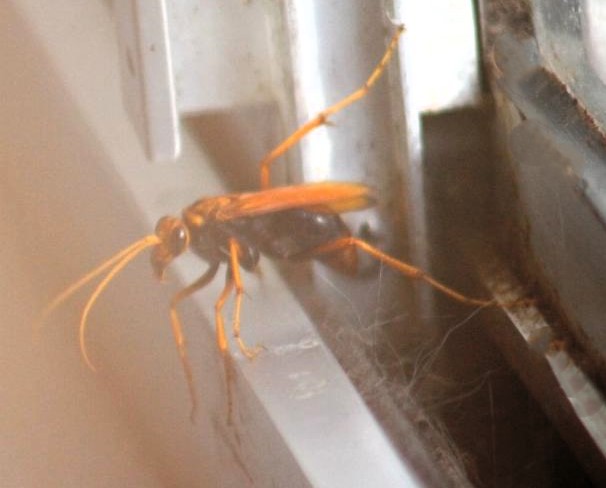
Spider wasp – this one has come indoors looking for spiders. Wasps in the family Pompilidae are commonly called 'spider wasps' or 'pompilid wasps'. Spider wasps are long-legged, solitary wasps that use a single spider as a host for feeding their larvae. They paralyse the spider with a venomous stinger. Once paralysed, the spider is dragged to where a nest will be built – some wasps having already made a nest. This one is classified as a Sydney Spider Wasp and was buzzing all windows at the office here, looking for spiders.
Burrows provide spiders with a refuge from predators like birds, bandicoots, centipedes and scorpions, as well as buffering climatic extremes for spiders and their young.
Some spiders have a trapdoor at the top of their burrow, useful for disguising the burrows presence and ambushing prey. It can also be held shut by the spider or securely silked down when the spider is moulting. Some burrows have extra security within, in the form of additional chambers and doors, escape tunnels and burrow blocking devices like pebbles and loose silk collars. One trapdoor spider (Idiosoma nigrum) even uses its thick, hard abdomen as a plug against burrow invaders.
Finally - did you know that we are still finding out about spiders that live here in Australia?
This young man shared a few insights from his looking for Peacock Spiders spiders in 2020 (Article below).
In 2016, as part of 'Project Maratus', researchers were looking for Peacock Spiders here in Pittwater - on Bangalley Headland!
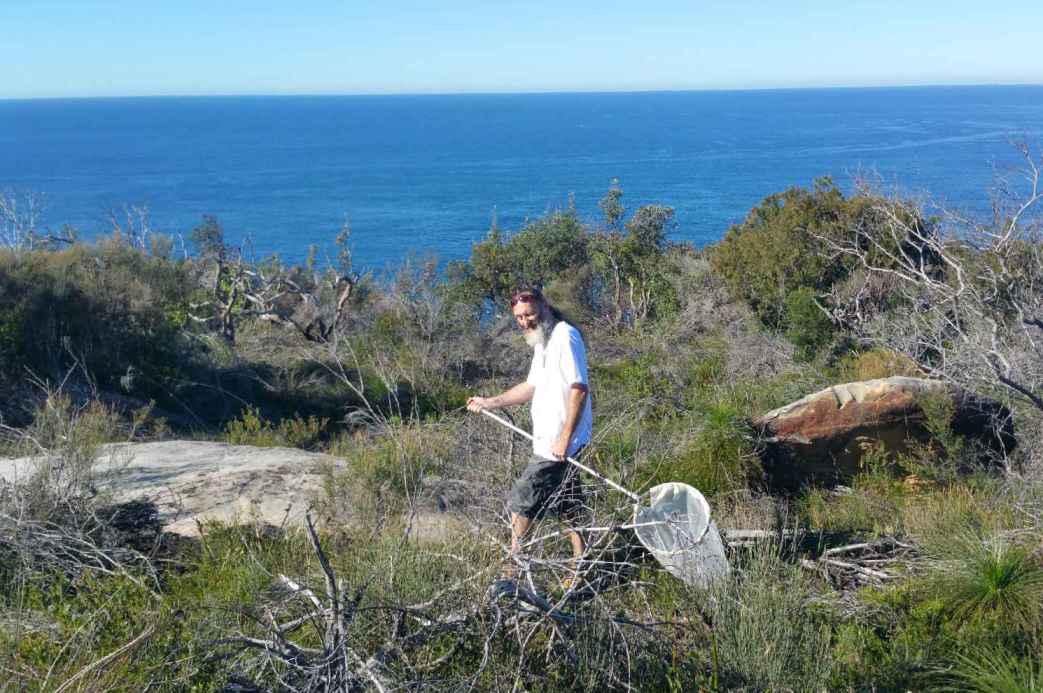
Adam Fletcher (from Woy Woy) on the job sweep netting at Bangalley headland, Avalon as part of a Pittwater Council field trip. Project Maratus was working closely with the council in monitoring biofauna - photo by by Michael Doe.
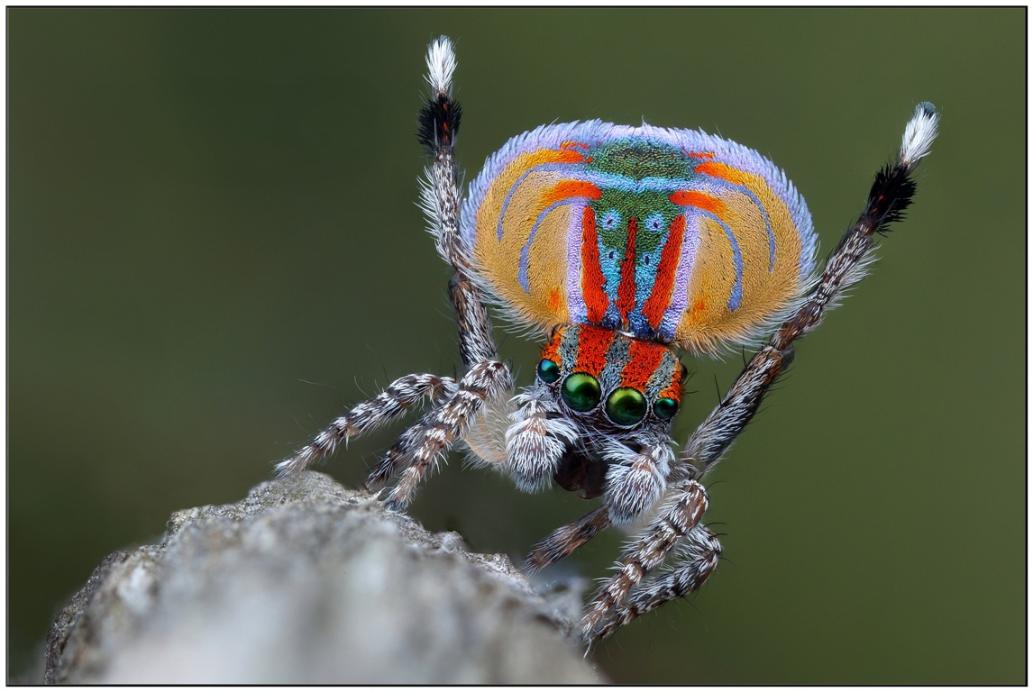
Maratus volans male - a common peacock spider from the East Coast of Australia performing it's courtship display - photo by Michael Doe (also from Woy Woy)
Spiders are an important and fascinating part of our natural environment. Their webs are wonders of natural architecture. They have major ecological and agricultural roles as killers of insects. Both their venom and silk are being used in medical research (stroke treatment) , pest control (insect specific pesticides) and fibre technology (transgenic biosilk production).
In many parts of Australia spider populations are threatened because their habitats (homes) are being destroyed by the clearing and degrading of bushland. Conserving spider habitat not only saves the spiders but also the whole ecosystem of which they are a part. Habitat conservation is an essential element of maintaining sustainable ecosystems.
Bushland remnants are important habitats for spiders in suburban areas. Damaging vegetation, or trampling the ground and compacting the soil, can decimate local populations of ground dwelling spiders. Not only does trampling directly destroy their habitats, it can also make the soil so hard that burrowing spiders cannot recolonise the area.
So, if you're going for a wander into your favourite bush reserve, sticking to the path will help keep these important members of the 'web of life' part of what is needed right here.
Reminder; Don't poke spiders!
Extra information courtesy Australian Museum
I Travelled Australia Looking For Peacock Spiders, And Collected 7 New Species (And Named One After The Starry Night Sky)
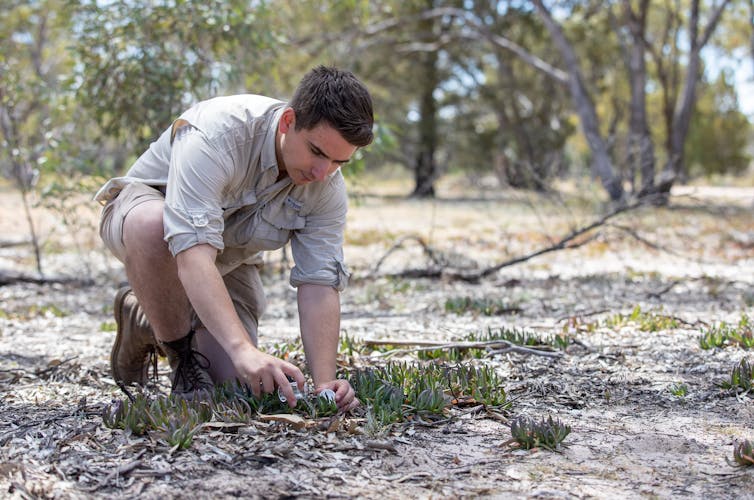
Joseph Schubert, Museums Victoria
After I found my first peacock spider in the wild in 2016, I was hooked. Three years later, I was travelling across Australia on a month-long expedition to document and name new species of peacock spiders.
Peacock spiders are a unique group of tiny, colourful, dancing spiders native to Australia. They’re roughly between 2.5 and 6 millimetres, depending on the species. Adult male peacock spiders are usually colourful, while female and juvenile peacock spiders are usually dull brown or grey.
Read more: The spectacular peacock spider dance and its strange evolutionary roots
Like peacocks, the mature male peacock spiders display their vibrant colours in elegant courtship displays to impress females. They often elevate and wave their third pair of legs and lift their brilliantly coloured abdomens – like dancing.
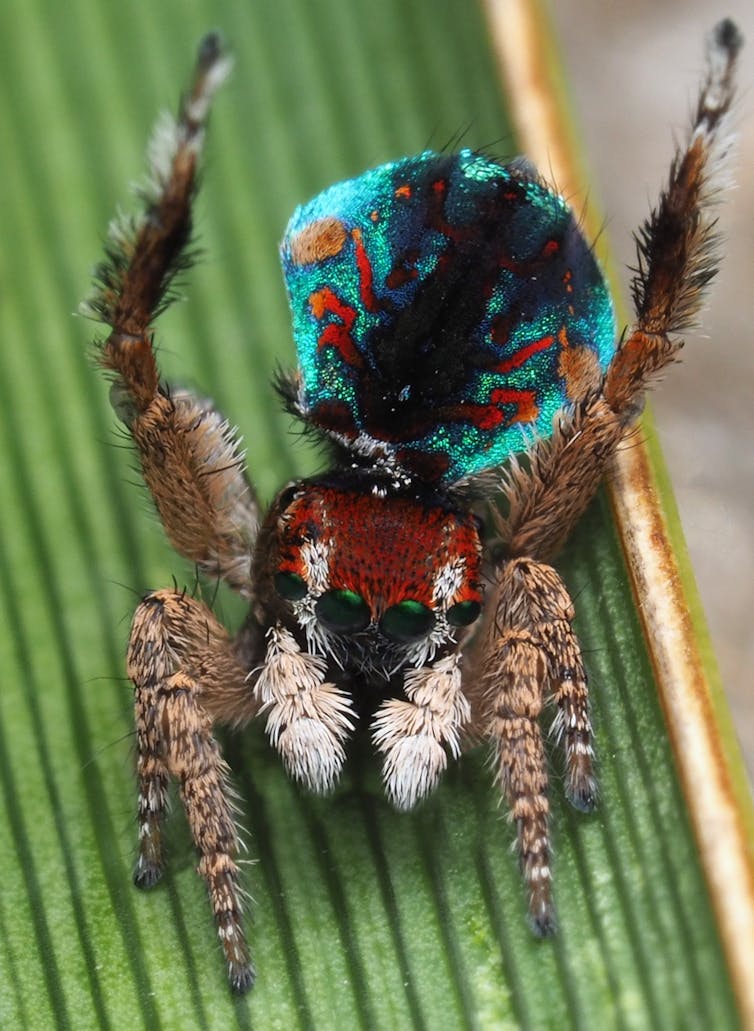
Up until 2011, there were only seven known species of them. But since then, the rate of scientific discovery has skyrocketed with upwards of 80 species being discovered in the last decade.
Thanks to my trip across Australia and the help from citizen scientists, I’ve recently scientifically described and named seven more species from Western Australia, South Australia and Victoria. This brings the total number of peacock spider species known to science up to 86.
Spider Hunting: A Game Of Luck
Citizen scientists – other peacock spider enthusiasts – shared photographs and locations of potentially undocumented species with me. I pulled these together to create a list of places in Australia to visit.
I usually find spider hunting to be a relaxing pastime, but this trip was incredibly stressful (albeit amazing).
The thing about peacock spiders is they’re mainly active during spring, which is when they breed. Colourful adult males are difficult – if not impossible – to find at other times of year, as they usually die shortly after the mating season. This meant I had a very short window to find what I needed to, or I had to wait another year.
Even when they’re active, they can be difficult to come across unless weather conditions are ideal. Not too cold. Not too rainy. Not too hot. Not too sunny. Not too shady. Not too windy. As you can imagine, it’s largely a game of luck.
The Wild West
I arrived in Perth, picked up my hire car and bought a foam mattress that fitted in the back of my car – my bed for half of the trip. I stocked up on tinned food, bread and water, and I headed north in search of these tiny eight-legged gems.
My first destination: Jurien Bay. I spent the whole day under the hot sun searching for a peculiar, scientifically unknown species that Western Australian photographer Su RamMohan had sent me photographs of. I was in the exact spot it had been photographed, but I just couldn’t find it!
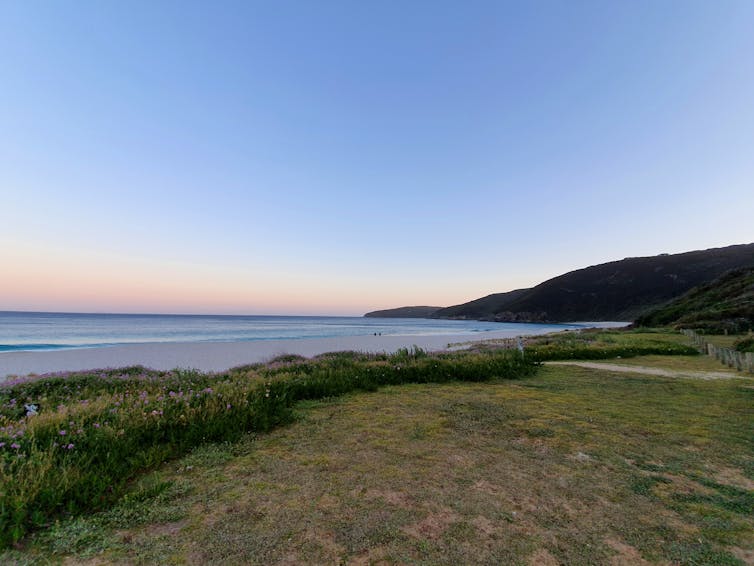
The sun began to lower and I was using up precious time. I made what I now believe was the right decision and abandoned the Jurien Bay species for another time.
I spent days travelling between dramatic coastal landscapes, the rugged inland outback, and old, mysterious woodlands.
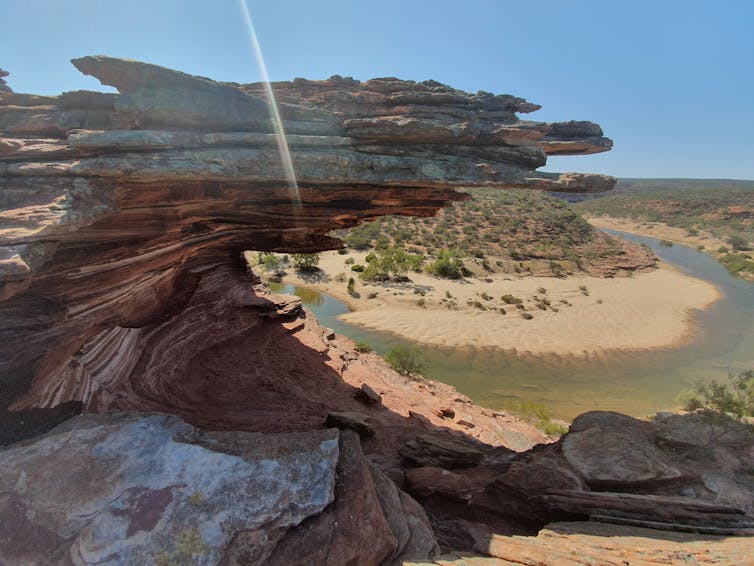
I hunted tirelessly with my eyes fixed on the ground searching for movement. In a massive change of luck from the beginning of my trip, it seemed conditions were (mostly) on my side.
With the much-appreciated help of some of my field companions from the University of Hamburg and volunteers from the public, a total of five new species were discovered and scientifically named from Western Australia.
The Little Desert
Two days after returning from Western Australia, I headed to the Little Desert National Park in Victoria on a Bush Blitz expedition, joined by several of my colleagues from Museums Victoria.
I’d thought the landscape’s harsh, dry conditions were unsuitable for peacock spiders, as most described species are known to live in temperate regions.
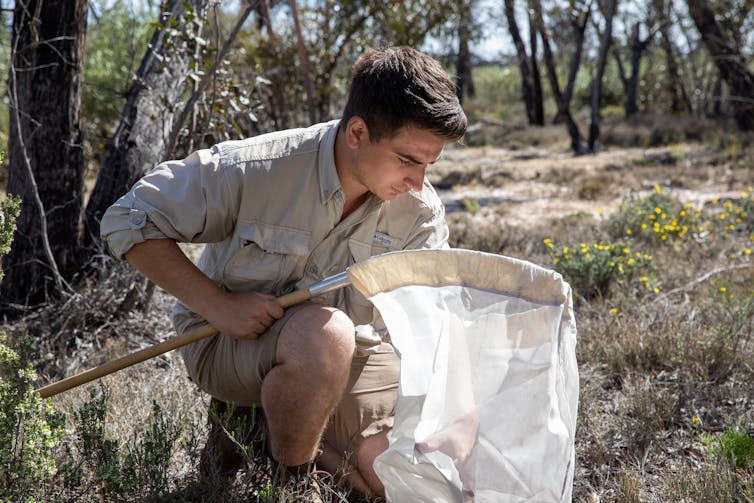
To my surprise, we found a massive diversity of them, including two species with a bigger range than we thought, and the discovery of another species unknown to science.
This is the first time two known species – Maratus robinsoni and Maratus vultus – had been found in Victoria. Previously, they had only been known to live in eastern New South Wales and southern Western Australia respectively.
Read more: Don't like spiders? Here are 10 reasons to change your mind
Our findings suggest other known species may have much bigger geographic ranges than we previously thought, and may occur in a much larger variety of habitats.
And our discovery of the unknown species (Maratus inaquosus), along with another collected by another wildlife photographer Nick Volpe from South Australia (Maratus volpei) brought the tally of discoveries to seven.
What’s In A Name?
Writing scientific descriptions, documenting, and naming species is a crucial part in conserving our wildlife.
Read more: Spiders are a treasure trove of scientific wonder
With global extinction rates at an unprecedented high, species conservation is more important than ever. But the only way we can know if we’re losing species is to show and understand they exist in the first place.
- Maratus azureus: “Deep blue” in Latin, referring to the colour of the male.
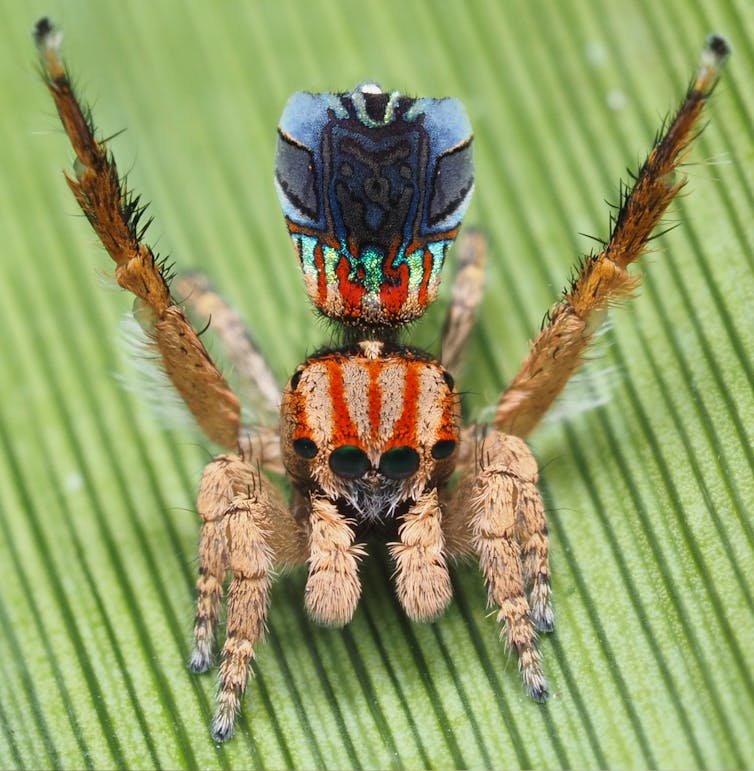
- Maratus constellatus: “Starry” in Latin, referring to the markings on the male’s abdomen which look like a starry night sky.
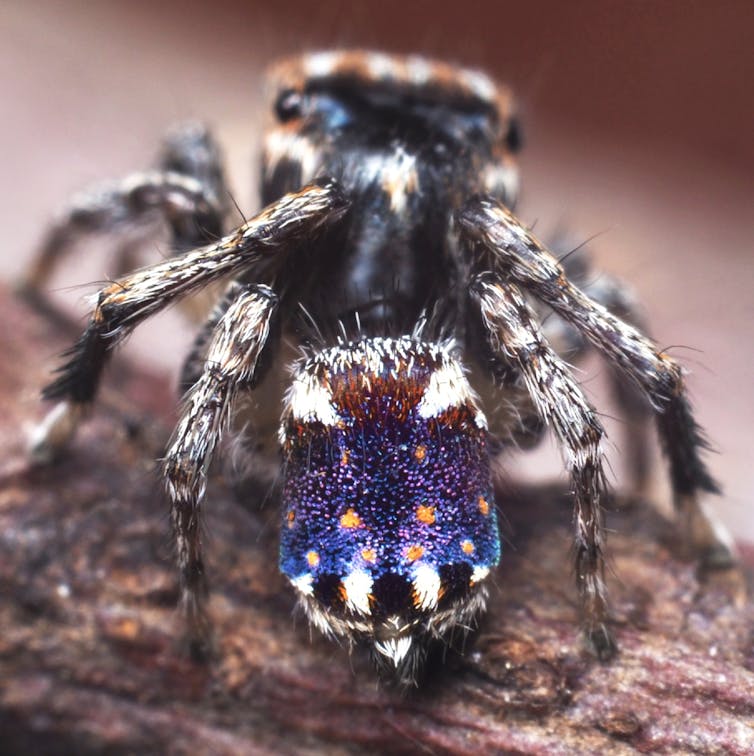
- Maratus inaquosus: “Dry” or “arid” in Latin, for the dry landscape in Little Desert National Park this species was found in.
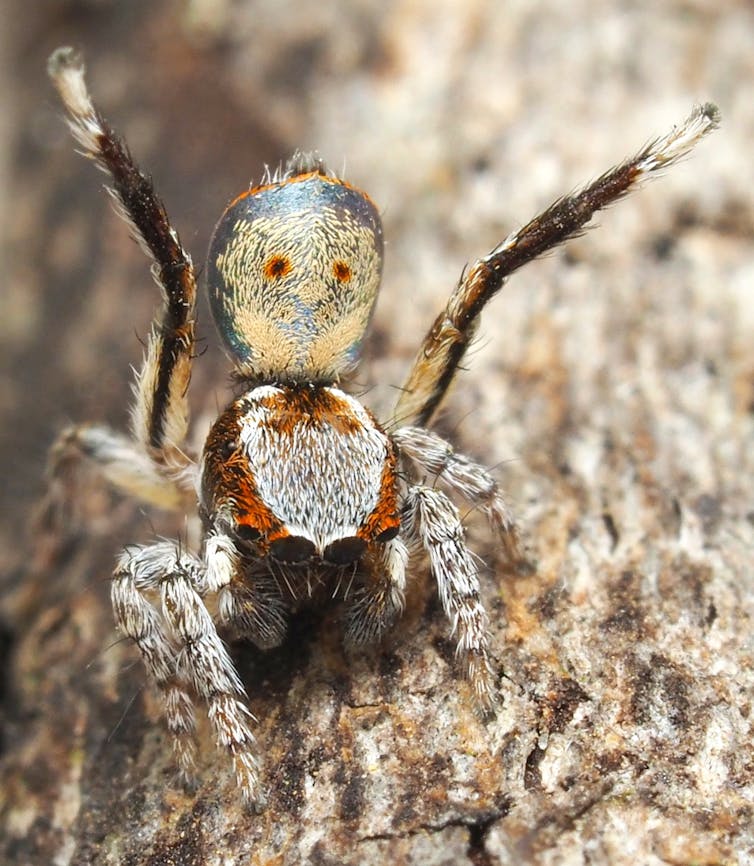
- Maratus laurenae: Named in honour of my partner, Lauren Marcianti, who has supported my research with enthusiasm over the past few years.
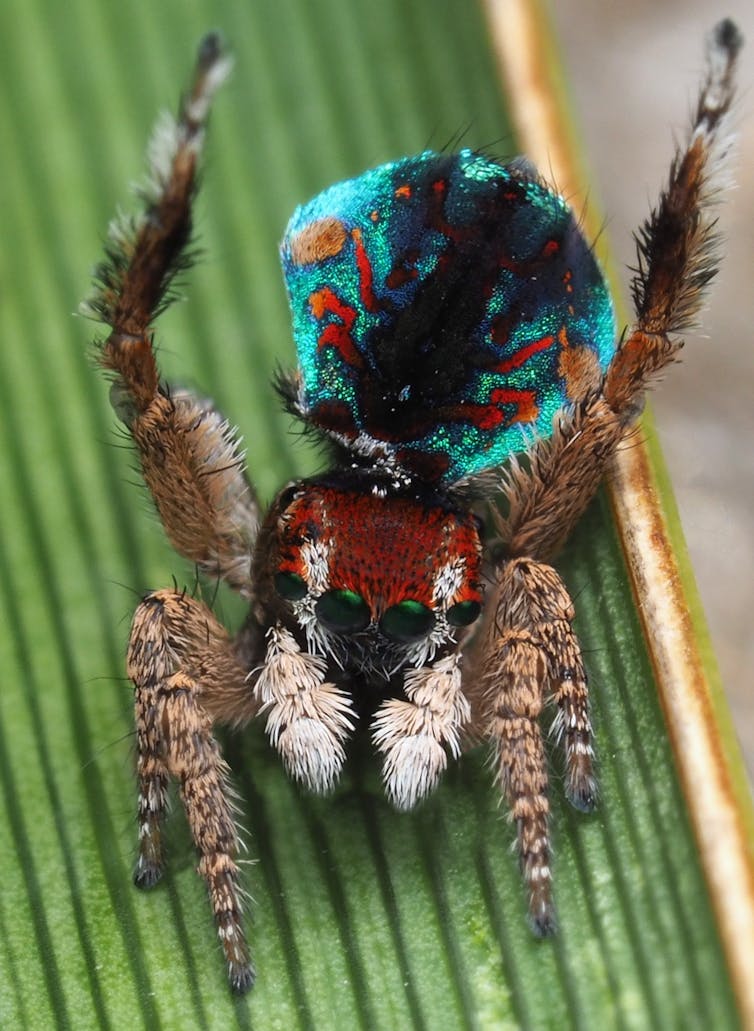
- Maratus noggerup: Named after the location where this species was found: Noggerup, Western Australia.
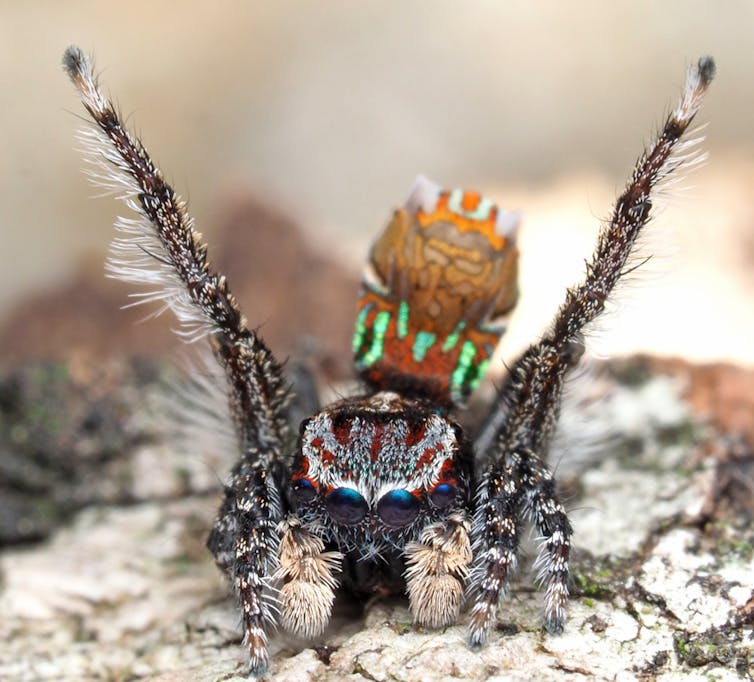
- Maratus suae: Named in honour of photographer Su RamMohan who discovered this species and provided useful information about their locations in Western Australia.
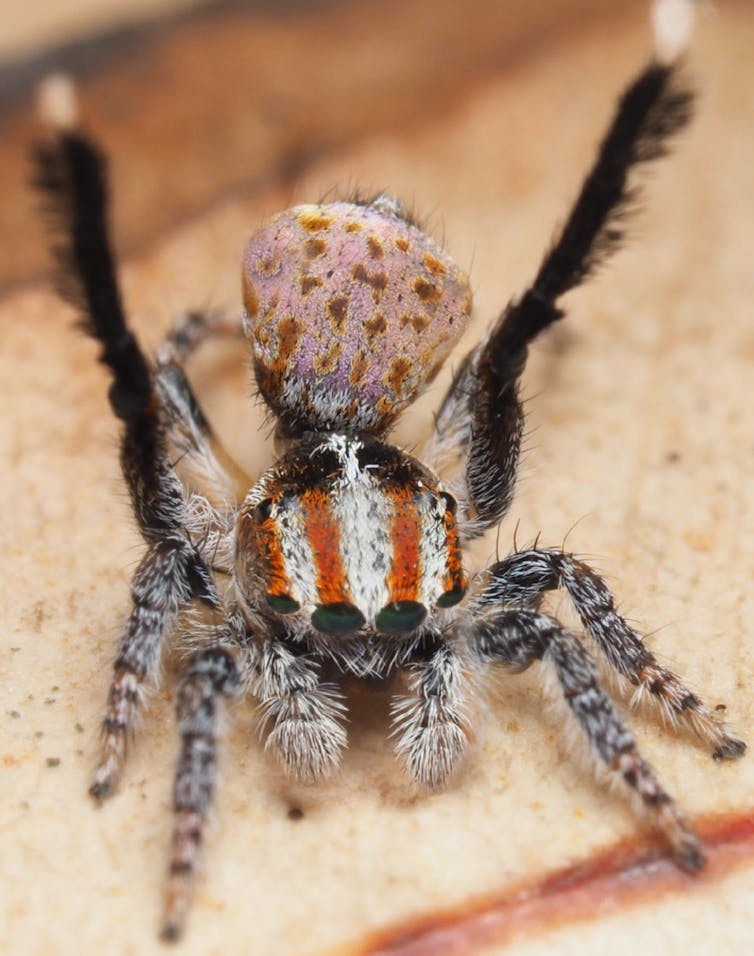
- Maratus volpei: Named in honour of photographer Nick Volpe who discovered and collected specimens of this species to be examined in my paper.

These names allow us to communicate important information about these animals to other scientists, as well as to build legislation around them in the case there are risks to their conservation status.
I plan on visiting some more remote parts of Australia in hopes of finding more new peacock spider species. I strongly suspect there’s more work to be done, and more peacock spiders to discover.![]()
Joseph Schubert, Entomology/Arachnology Registration Officer, Museums Victoria
This article is republished from The Conversation under a Creative Commons license. Read the original article.
Newport Rugby: Come & Try Event For Women + Girls
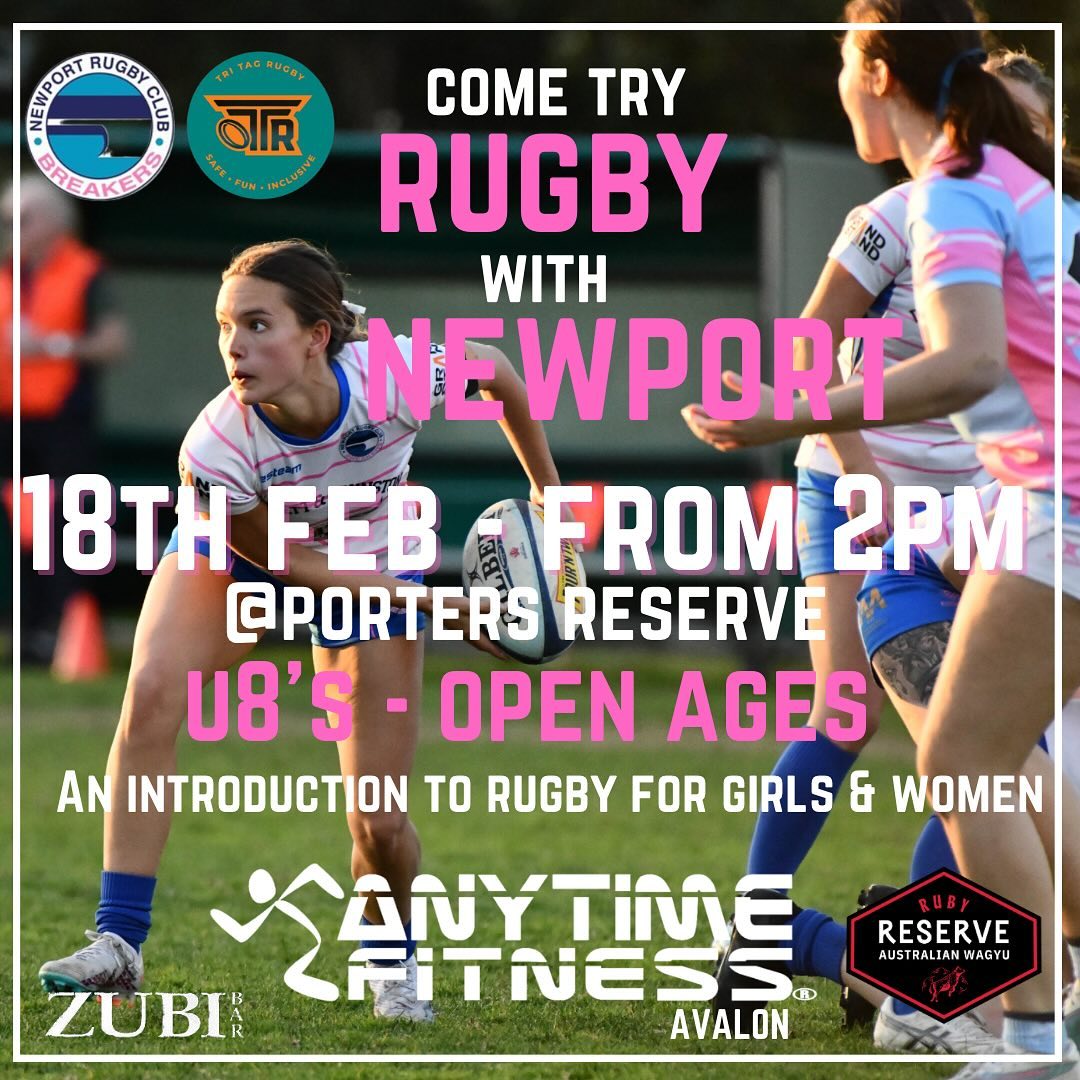
Basketball Court - Winnererremy Bay, Mona Vale: Have Your Say
- new hard court with regulation size key and 3-point lines
- new seating overlooking the courts and park area
- open grassed areas will remain and will include new shade trees to provide passive recreational opportunities
- an additional bike path around the perimeter of the hard court.
- completing the comment form here: https://yoursay.northernbeaches.nsw.gov.au/Hard-Court-Mona-Vale-Winnererremy-Bay
- emailing council@northernbeaches.nsw.gov.au
- writing to Northern Beaches Council, PO Box 82 Manly NSW 1655.
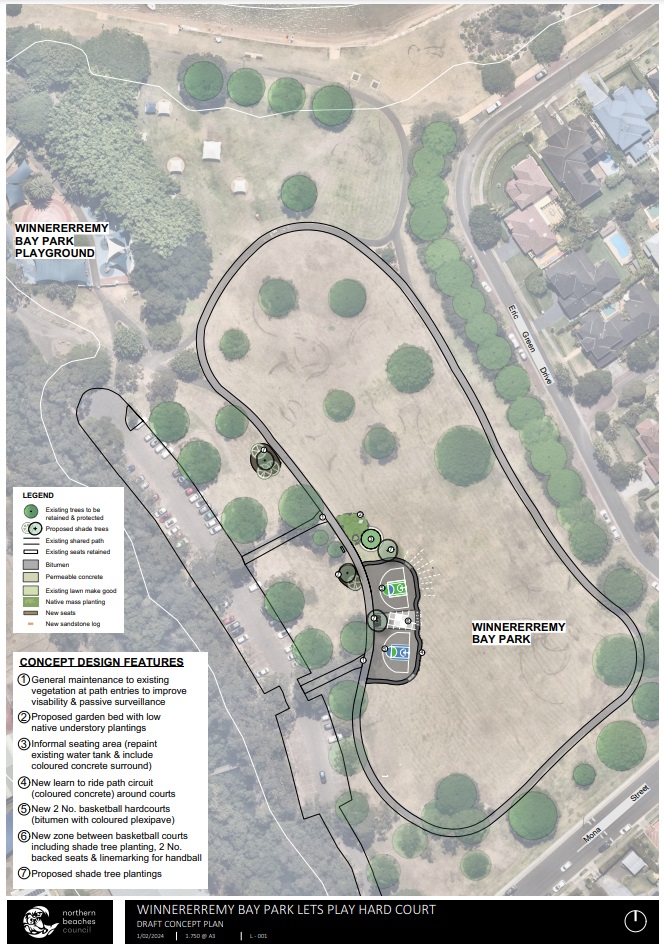
Expressions Of Interest For The 2024 Youth Development Program Are Now Available!
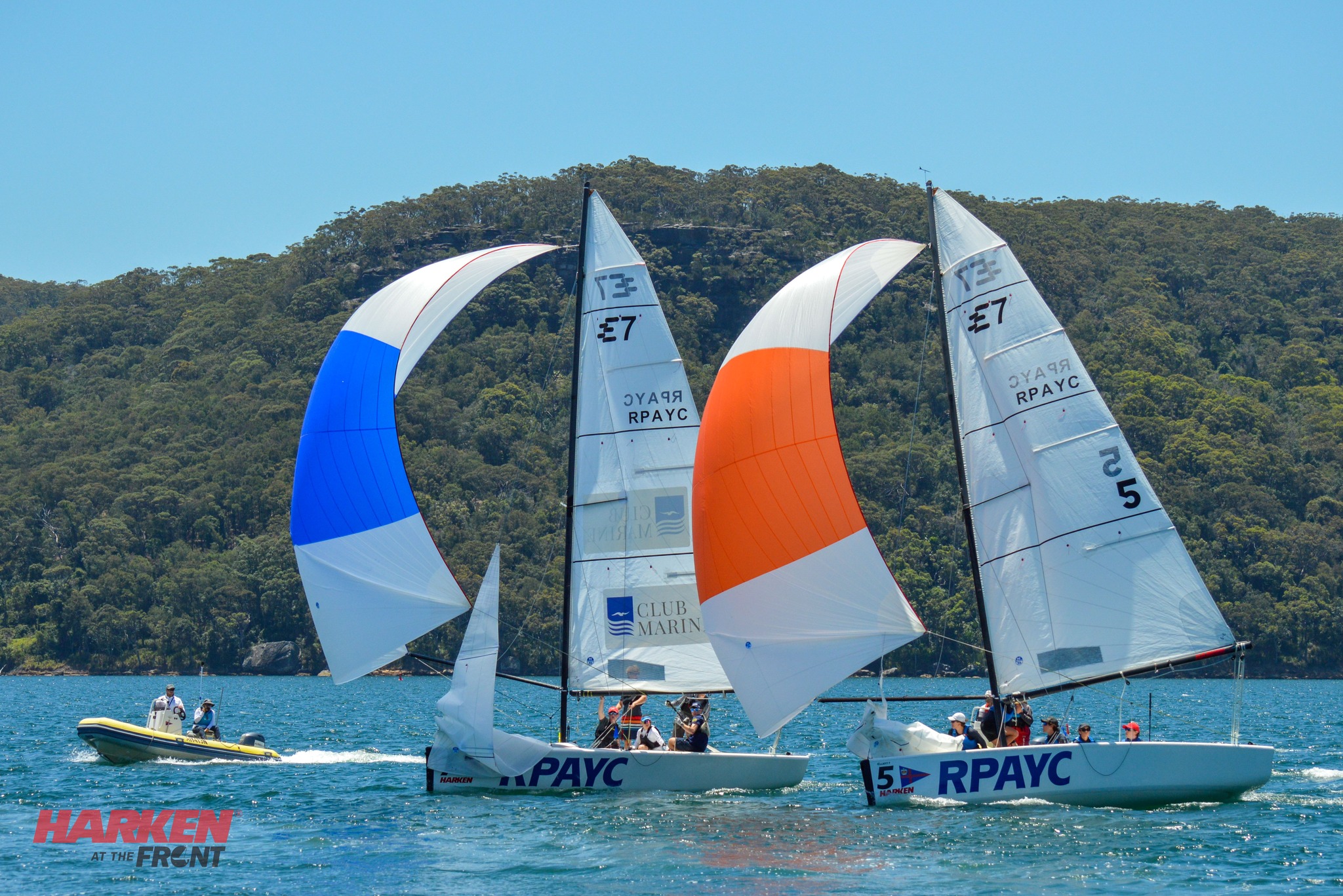
North Avalon Surfriders Association: NASA 2024 Registration Is Now Open.


‘Paddle For Change’ – A Youth Led Climate Action Event: Mona Vale
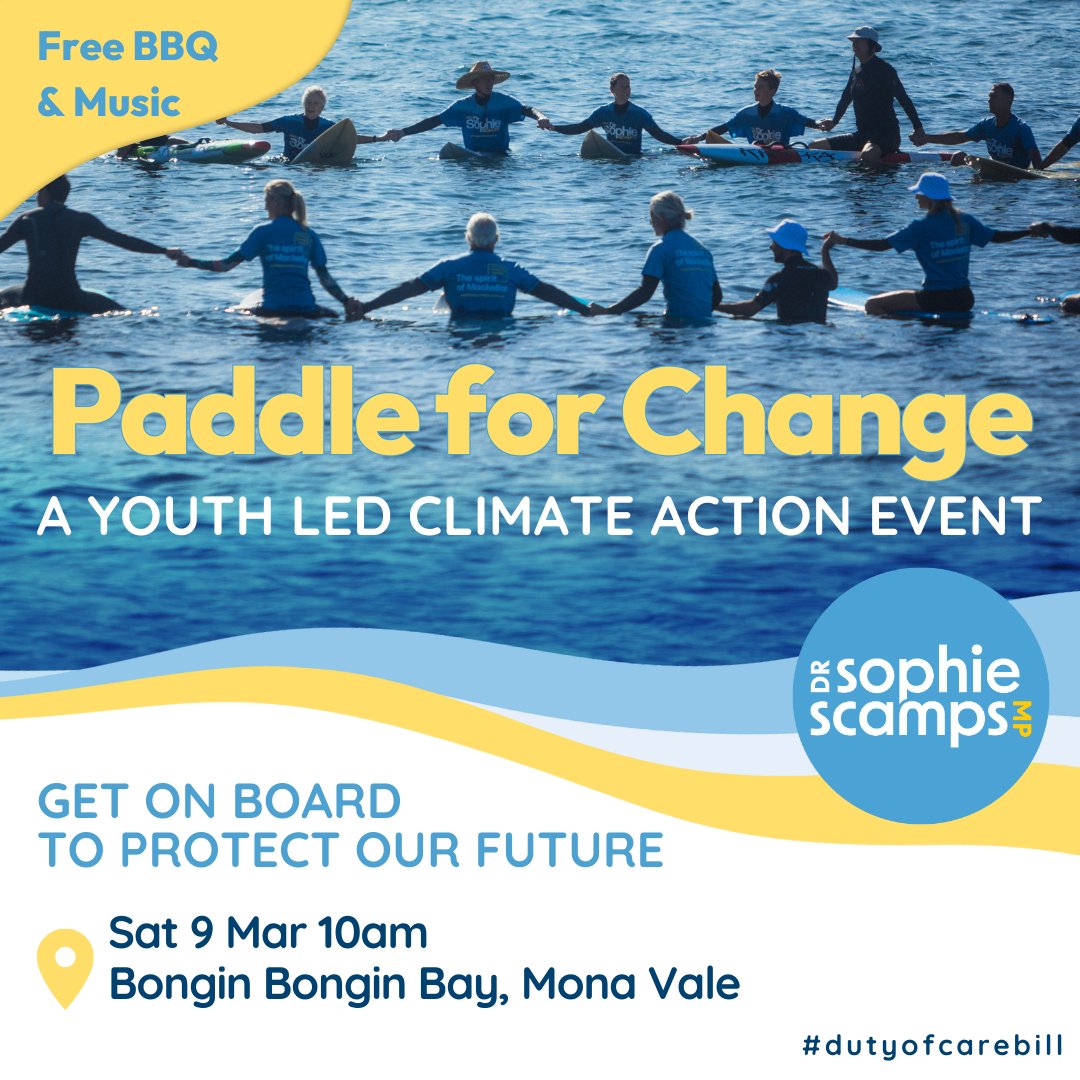
Calling All High School Student Video Makers
.jpg?timestamp=1707430256057)
School Leavers Support
- Download or explore the SLIK here to help guide Your Career.
- School Leavers Information Kit (PDF 5.2MB).
- School Leavers Information Kit (DOCX 0.9MB).
- The SLIK has also been translated into additional languages.
- Download our information booklets if you are rural, regional and remote, Aboriginal or Torres Strait Islander, or living with disability.
- Support for Regional, Rural and Remote School Leavers (PDF 2MB).
- Support for Regional, Rural and Remote School Leavers (DOCX 0.9MB).
- Support for Aboriginal and/or Torres Strait Islander School Leavers (PDF 2MB).
- Support for Aboriginal and/or Torres Strait Islander School Leavers (DOCX 1.1MB).
- Support for School Leavers with Disability (PDF 2MB).
- Support for School Leavers with Disability (DOCX 0.9MB).
- Download the Parents and Guardian’s Guide for School Leavers, which summarises the resources and information available to help you explore all the education, training, and work options available to your young person.
School Leavers Information Service
- navigate the School Leavers Information Kit (SLIK),
- access and use the Your Career website and tools; and
- find relevant support services if needed.
Word Of The Week: Munificient
Adjective
1 : very liberal in giving or bestowing : lavish 2 : characterised by great liberality or generosity.
Synonyms: generous, bountiful, open-handed, magnanimous, philanthropic, princely, handsome, lavish, unstinting, free-handed, unstinted, liberal, free, charitable, big-hearted, beneficent, ungrudging
From late 16th century: from Latin munificent- (stem of munificentior, comparative of munificus ‘bountiful’), from munus ‘gift’;" literally "present-making," from munus "gift or service; function, task, duty, office". Latin munificare meant "to enrich."
Compare: Magnificent
Adjective
1. extremely beautiful, elaborate, or impressive. 2. very good; excellent.
From: mid-15c., "exalted, glorious, great in actions or deeds," from Old French magnificent, a back-formation from Latin magnificentior, comparative of magnificus "great, elevated, noble, distinguished," literally "doing great deeds," from magnus "great" + combining form of facere "to make" . Meaning "characterised by grandeur or stateliness; living in splendor" is from 1520s. As an exclamation expressing enthusiastic admiration, by 1704.

The Three Sisters sandstone rock formation at sunset, one of the region's best-known attractions in the Blue Mountains. Photo: J J Harrison
The Blue Mountains are a mountainous region and a mountain range, considered to be part of the western outskirts of the Greater Sydney area.
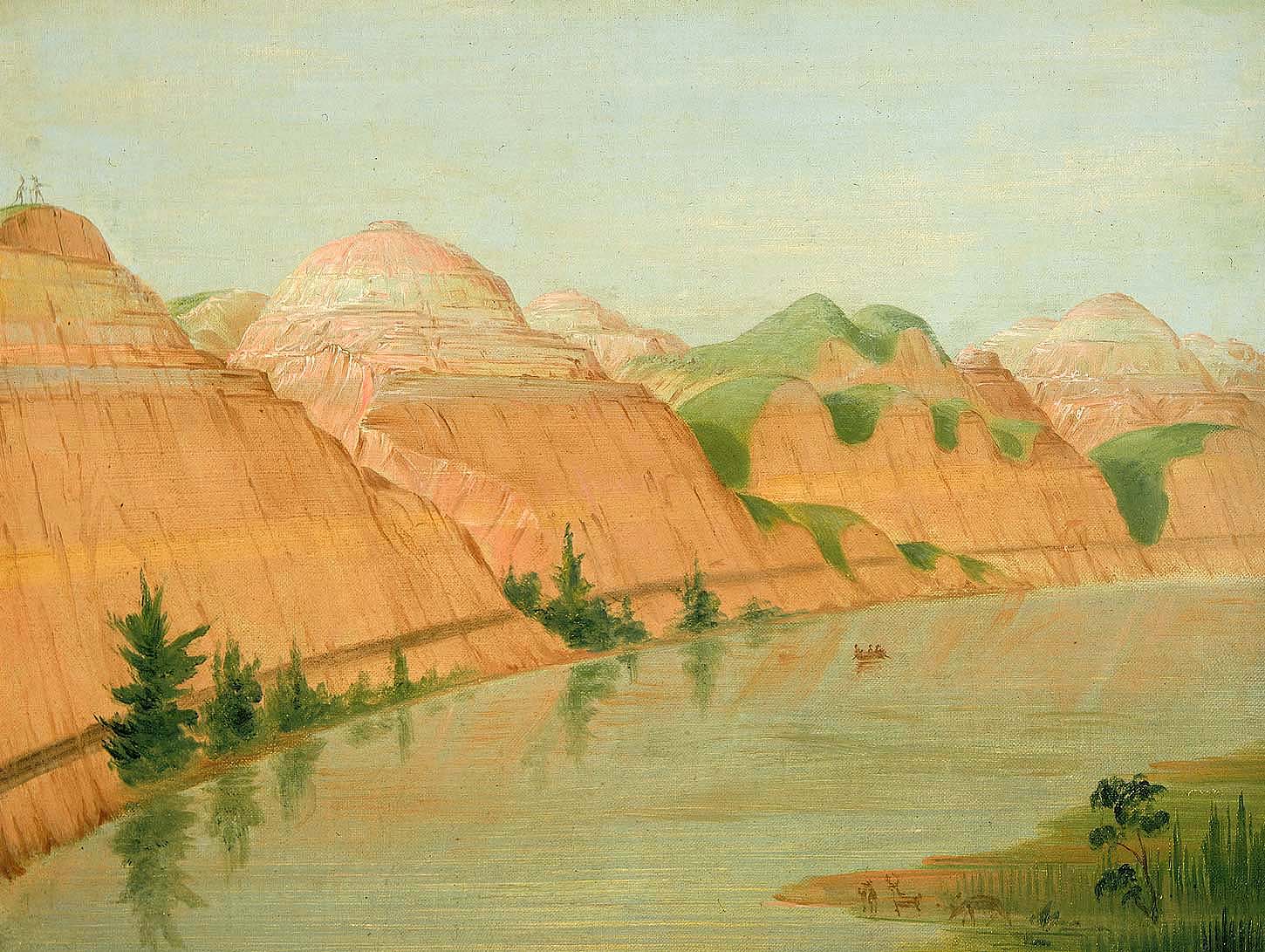
'Magnificent Clay Bluffs, 1800 Miles above St. Louis', 1832 by George Caitlin - held in the Smithsonian American Art Museum
Can more ethical histories be written about early colonial expeditions? A new project seeks to do just that
Cameo Dalley, The University of Melbourne; Nicole Huxley, Indigenous Knowledge, and Peter Taylor, Australian National UniversityAboriginal and Torres Strait Islander readers are advised this article contains names and images of deceased people. The name of the Aboriginal man in this article was how he was referred to, and his relative has requested we honour this name.
Truth-telling is at the heart of a new research project we are currently leading that re-examines the legacy of the Hann Expedition, which travelled Queensland’s Cape York Peninsula in 1872.
Our project seeks to rewrite this period of history – and others – to honour the voices and experiences of Aboriginal people whose contributions to colonial-era expeditions have long been overlooked.
The Hann Expedition began in Mt Surprise, Queensland, in April 1872, and made a loop across the peninsula before finishing at the Junction Creek Telegraph Station seven months later. The team consisted of six white men and an Aboriginal guide. The purpose was to map and record “unknown” parts of Queensland and determine whether the lands would be feasible for mining and pastoral development.
Apart from geological descriptions and mapping, the expedition is credited with recording and collecting specimens of at least 149 plants previously unknown to Western science. However, using records from the expedition, we found these species were likely only located with the help of the young Girramay man, Jerry, who was their guide.
Jerry was derogatorily referred to as “the blackboy”, and his important role in the expedition has never been fully acknowledged.
The importance of Aboriginal knowledge to the expedition compelled us to further examine the encounters the men had with other Aboriginal people along the route. This likely included Olkala, Kuku Yalanji, Lama Lama and Guugu Yimithirr people.
In one of these encounters, botanist Thomas Tate and Jerry found a young Aboriginal boy near a lagoon and took him back to their camp. The boy’s family immediately retrieved him and returned the next day, threatening the team with weapons.
In other encounters, the team unsuccessfully tried to communicate with Aboriginal people, seeking information that would be useful to their expedition.
Our research team also found a detailed map created by Norman Taylor, the expedition’s geologist, which includes observations about encounters with Aboriginal people, as well as environmental details not recorded elsewhere.
The original map had been held in the Queensland State Archives since at least the 1980s, but had not been connected to other materials from the expedition. Although a detailed analysis of the map has only just begun, it suggests local Aboriginal people helped the expedition navigate difficult terrain along their route, particularly along the coast.
Descendants Leading Research
Our work takes its lead from Indigenous scholars and practitioners, such as Rose Barrowcliffe, Fiona Foley, Julie Gough, Natalie Harkin, Shino Konishi, Jeanine Leane and Djon Mundine, and others. Their work has been instrumental in critiquing the silencing of Aboriginal voices in colonial history. Wiradjuri scholar Jeanine Leane calls this a form of “cardboard incarceration”.
Our research team includes descendants of the 1872 expedition, such as the project lead and co-author, Peter Taylor (a descendant of Norman Taylor’s), and co-researcher and co-author Cameo Dalley (a great-granddaughter of Tate’s).
In addition, Nicole Huxley, a Gudjala leader, is a descendant of Jerry. Ms Huxley and her family wanted Jerry’s story to be told, in particular his role in keeping the expedition team alive at dangerous points in their travels.
As descendants, each of us has inherited different family narratives about what took place on the expedition, and whose contributions were central.
The Balkanu Cape York Development Corporation, which supports the land and development interests of Aboriginal people on Cape York, has also partnered with the project. Further funding will support our research and the involvement of Traditional Owners along the expedition route, including Olkala, Kuku Yalanji, Lama Lama and Guugu Yimithirr people.
As Gerhardt Pearson, the executive director of Balkanu, says:
…following the Hann Expedition, the violence and dispersal of Indigenous people was so devastating, the memories and stories of this period still haunt many people.
The united commitment of the descendants and their detailed knowledge of this expedition will be incredibly valuable in working with Elders across the cape who still grieve about their own history.
Part of this process involves what is referred to as “rematriation”, or the reunification of Indigenous people and their knowledges with Country. This can include Indigenous people taking over the management of collections of artefacts and other specimens from the colonial era.
In our project, this includes botanical collections now held in the Royal Botanic Gardens Kew (London), the National Herbarium of Victoria at the Royal Botanic Gardens (Melbourne), and the Queensland Herbarium. These institutions are keen to develop protocols for involving Indigenous communities in the interpretation and management of collections.
Why Truth-Telling Is Needed In Australia
Truth-telling was a vital component of the Uluru Statement from the Heart signed by over 200 Indigenous delegates from around Australia. However, the failed referendum on a Voice to Parliament last year arguably demonstrated an apathy towards such processes at a national level.
This project shifts focus to local and regional approaches to truth-telling and the importance of individuals and families in taking responsibility for their role in shaping history. This is even more important for those of us with ancestors responsible for the intergenerational trauma experienced by Aboriginal people.
For the white descendants involved in our project, this will require us to sit uncomfortably in the privilege we have inherited because of this violence and think meaningfully about what can be done in the present.
Selective memory can be a tool of colonisation, and this project goes directly to the responsibilities of the descendants of colonisers to challenge this.![]()
Cameo Dalley, Senior Lecturer, The University of Melbourne; Nicole Huxley, Gudjala and Girramay leader, Indigenous Knowledge, and Peter Taylor, Associate Professor - Fenner School, Australian National University, Australian National University
This article is republished from The Conversation under a Creative Commons license. Read the original article.
What is doxing, and how can you protect yourself?
Rob Cover, RMIT UniversityThe Australian government has brought forward plans to criminalise doxing, bringing nationwide attention to the harms of releasing people’s private information to the wider public.
The government response comes after the public release of almost 600 names and private chat logs of a WhatsApp group of Australian Jewish creative artists discussing the Israel-Hamas war.
As a result, some of the people whose details were leaked claim they were harassed, received death threats and even had to go into hiding.
While we wait for new penalties for doxers under the federal Privacy Act review, understanding doxing and its harms can help. And there are also steps we can all take to minimise the risk.
What Is Doxing?
Doxing (or doxxing) is releasing private information — or “docs”, short for documents — online to the wider public without the user’s consent. This includes information that may put users at risk of harm, especially names, addresses, employment details, medical or financial records, and names of family members.
The Australian government currently defines doxing as the “malicious release” of people’s private information without their consent.
Doxing began as a form of unmasking anonymous users, trolls and those using hate speech while hiding behind a pseudonym. Recently, it has become a weapon for online abuse, harassment, hate speech and adversarial politics. It is often the outcome of online arguments or polarised public views.
It is also becoming more common. Although there is no data for Australia yet, according to media company SafeHome.org, about 4% of Americans report having been doxed, with about half saying their private emails or home addresses have been made public.
Doxing is a crime in some countries such as the Netherlands and South Korea. In other places, including Australia, privacy laws haven’t yet caught up.
Why Is Doxing Harmful?
In the context of the Israel-Hamas war, doxing has affected both Jewish and pro-Palestinian communities and activists in Australia and abroad.
Doxing is harmful because it treats a user as an object and takes away their agency to decide what, and how much, personal information they want shared with the wider public.
This puts people at very real risk of physical threats and violence, particularly when public disagreement becomes heated. From a broader perspective, doxing also damages the digital ecology, reducing people’s ability to freely participate in public or even private debate through social media.
Although doxing is sometimes just inconvenient, it is often used to publicly shame or humiliate someone for their private views. This can take a toll on a person’s mental health and wellbeing.
It can also affect a person’s employment, especially for people whose employers require them to keep their attitudes, politics, affiliations and views to themselves.
Studies have shown doxing particularly impacts women, including those using dating apps or experiencing family violence. In some cases, children and family members have been threatened because a high-profile relative has been doxed.
Doxing is also harmful because it oversimplifies a person’s affiliations or attitudes. For example, releasing the names of people who have joined a private online community to navigate complex views can represent them as only like-minded stereotypes or as participants in a group conspiracy.

What Can You Do To Protect Yourself From Doxing?
Stronger laws and better platform intervention are necessary to reduce doxing. Some experts believe that the fear of punishment can help shape better online behaviours.
These punishments may include criminal penalties for perpetrators and deactivating social media accounts for repeat offenders. But better education about the risks and harms is often the best treatment.
And you can also protect yourself without needing to entirely withdraw from social media:
never share a home or workplace address, phone number or location, including among a private online group or forum with trusted people
restrict your geo-location settings
avoid giving details of workplaces, roles or employment on public sites not related to your work
avoid adding friends or connections on social media services of people you do not know
if you suspect you risk being doxed due to a heated online argument, temporarily shut down or lock any public profiles
avoid becoming a target by pursuing haters when it reaches a certain point. Professional and courteous engagement can help avoid the anger of those who might disagree and try to harm you.
Additionally, hosts of private online groups must be very vigilant about who joins a group. They should avoid the trap of accepting members just to increase the group’s size, and appropriately check new members (for example, with a short survey or key questions that keep out people who may be there to gather information for malicious purposes).
Employers who require their staff to have online profiles or engage with the public should provide information and strategies for doing so safely. They should also provide immediate support for staff who have been doxed.![]()
Rob Cover, Professor of Digital Communication and Co-Director of the RMIT Digital Ethnography Research Centre, RMIT University
This article is republished from The Conversation under a Creative Commons license. Read the original article.
Why are so many Australian music festivals being cancelled?

Regional touring festival Groovin’ The Moo has announced its cancellation only eight days after placing tickets on sale, citing low demand.
A mainstay of the summer festival calendar, this follows a series of similar cancellations, including the 2023 edition of Falls Festival, ValleyWays, Coastal Jam and Vintage Vibes, and the “pausing” of Hobart’s iconic Dark Mofo for 2024.
So why are we seeing so many Australian music festivals cancelled? And what will the future of festivals look like?
Growing Challenges For Festivals
The well-documented cost-of-living crisis is an obvious culprit when it comes to low demand for festivals, as consumers cut down on expenses.
However, other factors are at play here. They include:
1. Higher overheads
Rapidly increasing overheads, such as rocketing public liability insurance costs for both venues and festivals alike, affect the viability of such events.
This problem began with the COVID pandemic, but extreme weather events exacerbated by climate change have compounded these issues as well as affecting the viability of outdoor summer music festivals. In 2022 alone, more than 20 Australian festivals were cancelled because of extreme weather.
2. Slower sales
Prior to the pandemic, concerns regarding the oversaturation of the Australian festival market were already starting to bite. Pre-COVID festival cancellations included the end of the Big Day Out after 20 years in 2014. The annual event began to falter in the preceding years due to issues that have compounded in the decade since.
As the pandemic eased and festival producers rushed back onsite, they have been faced with a fundamental shift in Australian cultural consumption habits, particularly among young people.
People are waiting longer to buy tickets. 2023 was the first time in over a decade that Splendour in the Grass, Australia’s biggest single-ticket festival, didn’t sell out within hours. The trend towards delayed “commitment to purchase” is cause for concern among promoters, who rely on opening-day sales for momentum and capital.
This change can be understood as a response to the rolling cancellations of the pandemic, in combination with rising ticket prices, domestic financial pressures and busy schedules. It is increasingly normal to look for second-hand tickets at reduced prices as an event approaches.
3. Youth avoidance
Industry observers are concerned about a drop in youth attendance. Young people who came of age during COVID missed their key festival-going years and may now have moved on to other cultural experiences – followed by younger siblings. This emphasises the long cultural tail of an event like the pandemic.
The cost-of-living crisis especially affects young people, the core audience for festivals like Groovin’ the Moo. The majority of under-35s say financial pressure is limiting their attendance at arts events.
4. The consolidation of taste
While “variety” festivals such as Groovin’ the Moo and Falls Festival – which feature diverse, multi-genre lineups – are struggling, genre-specific festivals and major artist tours continue to perform well.
These include metal and hard rock festivals such as Good Things Festival and Knotfest, and major recent tours by Queens of the Stone Age, Pink, Blink-182 and, of course, Taylor Swift. The media industry and the music industry specifically are experiencing the effects of an increasing siloing and consolidation of taste within specific niches, exacerbated by the digitisation of media via highly curated streaming platforms.
Perhaps “variety” music festivals are heading the same way as the Big Day Out. The struggles of festivals historically backed by Triple J (such as Groovin’ the Moo and Falls) may reveal the national youth broadcaster’s loosening grip on relevance and its inability to appeal to a broad audience in an increasingly hyper-curated media environment.
Is This Anything New?
The factors influencing the success of a given festival are complex, as illustrated by the case of Groovin’ the Moo. The Newcastle date sold out in less than an hour, with reports of strong early sales for the Sunshine Coast edition, yet the overall tour was deemed unable to proceed.
Uncertainty is inherent in the music business, where an oversupply of product meets a market driven by the vagaries of taste.
Festival programmers must “forecast” what will draw a crowd, booking performers up to a year in advance. However, mega-crises, such as the pandemic, climate change and financial shocks, create deeper uncertainties that fundamentally challenge business as usual.
Uncertainty poses a profound threat to live music in particular, which depends on advance planning and investment, with its returns and benefits hinging on the controlled realisation of future events.
Too much uncertainty also stifles innovation and diversity, as the large multinationals that dominate the music industry are better able to withstand its effects.
Music festivals are a leading site of Australia’s engagement with the arts, with significant social and economic benefits. They have also become a focal point for a range of societal challenges, from economic to environmental crises. Sustaining a vibrant, diverse and accessible festival sector will require these challenges to be confronted.
The age of deep uncertainty isn’t going away. For Australia’s diverse festival landscape to survive we need to find new ways – such as financial buffers, government-backed insurance schemes, big ticket levies, tariffs on major international tours, and climate action and mitigation – to ride and survive this uncertainty.![]()
Sam Whiting, Lecturer - Creative Industries, University of South Australia and Ben Green, Research Fellow, Centre for Social and Cultural Research, Griffith University
This article is republished from The Conversation under a Creative Commons license. Read the original article.
A patch a day? Why the vitamin skin patches spruiked on social media might not be for you

Vitamin patches are trending on social media and advertised in posts and podcasts.
With patches marketed for sleep, detox, immunity and hangovers, they are being talked up as near magical fix-all stickers. Manufacturers claim they are easy-to-use, convenient and ethical when compared with other types of vitamin products. Some even come with cute floral designs.
So do they work, are they safe, and why would you use one instead of just taking a vitamin tablet?
What Are Vitamin Patches?
Vitamin patches are adhesives designed to deliver vitamins or nutrients to your bloodstream directly through the skin.
You peel away the backing, place it on a hairless area of skin where it is less likely to be bumped, and then the patches release their vitamins over a period of 12 to 24 hours.
Two dominant brands that market in Australia sell patches that contain various chemical and plant ingredients.
There are patches for menopause symptoms that claim to include plant extracts of gotu kola, damiana, black cohosh, valerian, skull cap, oat seed and ginger. Patches promising an energy boost offer caffeine, taurine, gluconolactone, green tea extract and vitamins B3, B5 and B6.
Do They Work And Are They Safe?
In Australia, vitamins are considered pharmaceutical products and are regulated by the Therapeutic Goods Administration. Vitamins are generally approved as listed medicines, meaning the ingredients have been assessed for safety but not for efficacy (whether they do what they promise).
Being a listed medicine also means vitamins are manufactured in a factory with good manufacturing practices, so you can be assured the ingredients listed on the packaging have been sourced properly and are provided at the correct concentration.
However, there are no items listed as vitamin patches on the Australian Register of Therapeutic Goods. This means they currently can not legally be supplied or purchased in Australia. It doesn’t matter if they are being sold from a physical store or online within the country. The TGA won’t stop you from buying them from overseas, but they advise you not to do so because you can’t be assured of quality and safety.

There is also insufficient evidence that vitamins delivered in this way work. Not all drugs and chemicals can be delivered through the skin. Ordinarily, to be absorbed through the skin a chemical needs to be lipophilic, meaning it likes fats and oils more than water.
So, the form in which the vitamins have been produced and supplied will dictate whether they will get into the skin. For example, a water extract of a plant is less likely to be absorbed when compared with an oil-based extract.
A small 2019 study of patients at risk of nutrient deficiencies after bariatric (weight-loss) surgery gave some of them a daily multivitamin patch for a year. Those patients had lower blood concentrations of several vitamins and were more likely to have vitamin D deficiency when compared with patients given oral vitamins. The study concluded transdermal vitamin patches were not as effective as oral supplements.
Another issue with vitamin patches is that they contain very low concentrations of ingredients and you may therefore get an ineffective dose, even if all the vitamin in the patch is 100% absorbed through the skin.
For example, one particular patch that is marketed for immunity states that it contains 3 milligrams of vitamin C, which is likely insufficient if taken to supplement a low vitamin C diet. The health condition called scurvy is thought to occur when daily vitamin C intake drops lower than 7 milligrams per day.
In contrast, a typical vitamin C tablet contains 500 milligrams. The recommended daily intake of vitamin C is around 45 milligrams per day – more if a woman is breastfeeding.

Why Not Just Take A Tablet?
When other medicines are supplied in a patch formulation it is usually because a constant supply of the drug is needed in the body; think smoking replacement nicotine patches, menopausal hormone therapy and some types of pain relief.
There is no reason why you would need the slow release, continuous supply of vitamins that patches promise – but there may be other reasons to choose them over tablets and gummy products.
One selling point used by the marketers is that patches are a “cleaner” form of vitamins. A vitamin in tablet or gummy form will contain inactive ingredients called excipients. Excipients do various tasks in medicines from binding ingredients together, making the medicine look and smell nice, to ensuring drugs don’t break down during storage. The presumption is that patches don’t contain and release any, or very few, excipients into your body.
But many patches don’t list all their ingredients – just the active vitamins – so this claim can not be tested. Some patches may still contain a large number of excipients, some of which may irritate the skin.
For example, one type of nicotine patch contains 12 excipients including acrylic acid and vinyl acetate, which are chemicals used to help stick the patch to the skin.
A patch may be worth investigating for people who have trouble swallowing or chewing. In this instance it could be difficult to take a solid tablet or gummy to get your vitamins.
Should You Buy Them?
As there are no vitamin patches approved by the TGA in Australia, you should not buy them.
If at some point in the future they become listed medicines, it will be important to remember that they may not have been assessed for efficacy.
If you remain curious about vitamin patches, you should discuss them with your doctor or local pharmacist.![]()
Nial Wheate, Associate Professor of the School of Pharmacy, University of Sydney and Jasmine Lee, Pharmacist and PhD Candidate, University of Sydney
This article is republished from The Conversation under a Creative Commons license. Read the original article.
What are ‘collarium’ sunbeds? Here’s why you should stay away

Reports have recently emerged that solariums, or sunbeds – largely banned in Australia because they increase the risk of skin cancer – are being rebranded as “collarium” sunbeds (“coll” being short for collagen).
Commercial tanning and beauty salons in Queensland, New South Wales and Victoria are marketing collariums, with manufacturers and operators claiming they provide a longer lasting tan and stimulate collagen production, among other purported benefits.
A collarium sunbed emits both UV radiation and a mix of visible wavelength colours to produce a pink or red light. Like an old-school sunbed, the user lies in it for ten to 20 minute sessions to quickly develop a tan.
But as several experts have argued, the providers’ claims about safety and effectiveness don’t stack up.
Why Were Sunbeds Banned?
Commercial sunbeds have been illegal across Australia since 2016 (except for in the Northern Territory) under state-based radiation safety laws. It’s still legal to sell and own a sunbed for private use.
Their dangers were highlighted by young Australians including Clare Oliver who developed melanoma after using sunbeds. Oliver featured in the No Tan Is Worth Dying For campaign and died from her melanoma at age 26 in 2007.
Sunbeds lead to tanning by emitting UV radiation – as much as six times the amount of UV we’re exposed to from the summer sun. When the skin detects enough DNA damage, it boosts the production of melanin, the brown pigment that gives you the tanned look, to try to filter some UV out before it hits the DNA. This is only partially successful, providing the equivalent of two to four SPF.
Essentially, if your body is producing a tan, it has detected a significant amount of DNA damage in your skin.
Research shows people who have used sunbeds at least once have a 41% increased risk of developing melanoma, while ten or more sunbed sessions led to a 100% increased risk.
In 2008, Australian researchers estimated that each year, sunbeds caused 281 cases of melanoma, 2,572 cases of squamous cell carcinoma (another common type of skin cancer), and $3 million in heath-care costs, mostly to Medicare.
How Are Collarium Sunbeds Supposed To Be Different?
Australian sellers of collarium sunbeds imply they are safe, but their machine descriptions note the use of UV radiation, particularly UVA.
UVA is one part of the spectrum of UV radiation. It penetrates deeper into the skin than UVB. While UVB promotes cancer-causing mutations by discharging energy straight into the DNA strand, UVA sets off damage by creating reactive oxygen species, which are unstable compounds that react easily with many types of cell structures and molecules. These damage cell membranes, protein structures and DNA.
Evidence shows all types of sunbeds increase the risk of melanoma, including those that use only UVA.
Some manufacturers and clinics suggest the machine’s light spectrum increases UV compatibility, but it’s not clear what this means. Adding red or pink light to the mix won’t negate the harm from the UV. If you’re getting a tan, you have a significant amount of DNA damage.
Collagen Claims
One particularly odd claim about collarium sunbeds is that they stimulate collagen.
Collagen is the main supportive tissue in our skin. It provides elasticity and strength, and a youthful appearance. Collagen is constantly synthesised and broken down, and when the balance between production and recycling is lost, the skin loses strength and develops wrinkles. The collagen bundles become thin and fragmented. This is a natural part of ageing, but is accelerated by UV exposure.

The reactive oxygen species generated by UVA light damage existing collagen structures and kick off a molecular chain of events that downgrades collagen-producing enzymes and increases collagen-destroying enzymes. Over time, a build-up of degraded collagen fragments in the skin promotes even more destruction.
While there is growing evidence red light therapy alone could be useful in wound healing and skin rejuvenation, the UV radiation in collarium sunbeds is likely to undo any benefit from the red light.
What About Phototherapy?
There are medical treatments that use controlled UV radiation doses to treat chronic inflammatory skin diseases like psoriasis.
The anti-collagen effects of UVA can also be used to treat thickened scars and keloids. Side-effects of UV phototherapy include tanning, itchiness, dryness, cold sore virus reactivation and, notably, premature skin ageing.
These treatments use the minimum exposure necessary to treat the condition, and are usually restricted to the affected body part to minimise risks of future cancer. They are administered under medical supervision and are not recommended for people already at high risk of skin cancer, such as people with atypical moles.
So What Happens Now?
It looks like many collariums are just sunbeds rebranded with red light. Queensland Health is currently investigating whether these salons are breaching the state’s Radiation Safety Act, and operators could face large fines.
As the 2024 Australians of the Year – melanoma treatment pioneers Georgina Long and Richard Scolyer – highlighted in their acceptance speech, “there is nothing healthy about a tan”, and we need to stop glamorising tanning.
However, if you’re desperate for the tanned look, there is a safer and easy way to get one – out of a bottle or by visiting a salon for a spray tan.![]()
Katie Lee, PhD Candidate, Dermatology Research Centre, The University of Queensland and Anne Cust, Professor of Cancer Epidemiology, University of Sydney
This article is republished from The Conversation under a Creative Commons license. Read the original article.
Running or yoga can help beat depression, research shows – even if exercise is the last thing you feel like

At least one in ten people have depression at some point in their lives, with some estimates closer to one in four. It’s one of the worst things for someone’s wellbeing – worse than debt, divorce or diabetes.
One in seven Australians take antidepressants. Psychologists are in high demand. Still, only half of people with depression in high-income countries get treatment.
Our new research shows that exercise should be considered alongside therapy and antidepressants. It can be just as impactful in treating depression as therapy, but it matters what type of exercise you do and how you do it.
Walk, Run, Lift, Or Dance Away Depression
We found 218 randomised trials on exercise for depression, with 14,170 participants. We analysed them using a method called a network meta-analysis. This allowed us to see how different types of exercise compared, instead of lumping all types together.
We found walking, running, strength training, yoga and mixed aerobic exercise were about as effective as cognitive behaviour therapy – one of the gold-standard treatments for depression. The effects of dancing were also powerful. However, this came from analysing just five studies, mostly involving young women. Other exercise types had more evidence to back them.
Walking, running, strength training, yoga and mixed aerobic exercise seemed more effective than antidepressant medication alone, and were about as effective as exercise alongside antidepressants.
But of these exercises, people were most likely to stick with strength training and yoga.
Antidepressants certainly help some people. And of course, anyone getting treatment for depression should talk to their doctor before changing what they are doing.
Still, our evidence shows that if you have depression, you should get a psychologist and an exercise plan, whether or not you’re taking antidepressants.
Join A Program And Go Hard (With Support)
Before we analysed the data, we thought people with depression might need to “ease into it” with generic advice, such as “some physical activity is better than doing none.”
But we found it was far better to have a clear program that aimed to push you, at least a little. Programs with clear structure worked better, compared with those that gave people lots of freedom. Exercising by yourself might also make it hard to set the bar at the right level, given low self-esteem is a symptom of depression.
We also found it didn’t matter how much people exercised, in terms of sessions or minutes a week. It also didn’t really matter how long the exercise program lasted. What mattered was the intensity of the exercise: the higher the intensity, the better the results.
Yes, It’s Hard To Keep Motivated
We should exercise caution in interpreting the findings. Unlike drug trials, participants in exercise trials know which “treatment” they’ve been randomised to receive, so this may skew the results.
Many people with depression have physical, psychological or social barriers to participating in formal exercise programs. And getting support to exercise isn’t free.
We also still don’t know the best way to stay motivated to exercise, which can be even harder if you have depression.
Our study tried to find out whether things like setting exercise goals helped, but we couldn’t get a clear result.
Other reviews found it’s important to have a clear action plan (for example, putting exercise in your calendar) and to track your progress (for example, using an app or smartwatch). But predicting which of these interventions work is notoriously difficult.
A 2021 mega-study of more than 60,000 gym-goers found experts struggled to predict which strategies might get people into the gym more often. Even making workouts fun didn’t seem to motivate people. However, listening to audiobooks while exercising helped a lot, which no experts predicted.
Still, we can be confident that people benefit from personalised support and accountability. The support helps overcome the hurdles they’re sure to hit. The accountability keeps people going even when their brains are telling them to avoid it.
So, when starting out, it seems wise to avoid going it alone. Instead:
join a fitness group or yoga studio
get a trainer or an exercise physiologist
ask a friend or family member to go for a walk with you.
Taking a few steps towards getting that support makes it more likely you’ll keep exercising.
Let’s Make This Official
Some countries see exercise as a backup plan for treating depression. For example, the American Psychological Association only conditionally recommends exercise as a “complementary and alternative treatment” when “psychotherapy or pharmacotherapy is either ineffective or unacceptable”.
Based on our research, this recommendation is withholding a potent treatment from many people who need it.
In contrast, The Royal Australian and New Zealand College of Psychiatrists recommends vigorous aerobic activity at least two to three times a week for all people with depression.
Given how common depression is, and the number failing to receive care, other countries should follow suit and recommend exercise alongside front-line treatments for depression.
I would like to acknowledge my colleagues Taren Sanders, Chris Lonsdale and the rest of the coauthors of the paper on which this article is based.
If this article has raised issues for you, or if you’re concerned about someone you know, call Lifeline on 13 11 14.![]()
Michael Noetel, Senior Lecturer in Psychology, The University of Queensland
This article is republished from The Conversation under a Creative Commons license. Read the original article.
‘Analog uncanny’: how this weird and experimental side of TikTok is forging the future of horror

Director Kyle Edward Ball’s feature film debut, Skinamarink, achieved unexpected commercial success last year after going viral on TikTok.
Hailed by some critics as the best horror film of 2023, or even the scariest of all time, Skinamarink is a work of experimental slow cinema. The film’s ambiguous and grainy imagery exudes the aura of a degraded, possessed VHS tape.
These aesthetics might seem to conflict with TikTok’s torrent of short, attention-grabbing videos. Yet TikTok has cultivated a hive of creative energy at the intersection of art and horror. Alongside YouTube, the platform has also helped to create pathways to international horror-film careers.
Bite-Sized Nightmares
YouTube and TikTok provide spaces where horror filmmakers can hone their craft and develop distinct voices, in collaboration with a community of users who provide input, theories and feedback.
A unique form of horror storytelling emerges from such engaged online communities, as they cultivate environments where creators can test new ideas and develop creative ingenuity. This leads to a creative dynamic I call “participatory experimentation”. It’s expanding the boundaries of the horror genre.
Ball’s distinctive aesthetic was developed via his YouTube channel Bitesized Nightmares. Here, he shared experimental videos based on his nightmares. He then invited viewers to share their own “nightmares” in the comments so he could depict them in subsequent videos.
One of these nightmare visions is shown in the short film Heck (2020), the prototype for Skinamarink. Avant-garde in its approach, Heck is a work of art as well as horror. Its experimental beginnings on YouTube are key to its unsettling aesthetic power.
An upcoming cinema screening of Heck at RMIT’s Capitol Theatre, as part of an art/horror program I’ve co-organised with the Australian Centre of Contemporary Art, evidences the growing recognition of such digital horror content as “art” in spaces we may not normally expect. This is a significant cultural development.
The global horror hit Talk To Me (2023), one of Australia’s most successful films ever at the US box office, was also germinated via a YouTube channel. Directors Michael and Danny Philipou have more than 1 billion views and nearly 7 million subscribers on their channel, RackaRacka. It was here that they honed their unique blend of horror and zany, violent comedy.
YouTube has been home to boundary-pushing art-horror since its inception in 2005. Other notable examples include David Firth’s animated series Salad Fingers (2004-), Becky Sloan and Joe Pelling’s Don’t Hug Me I’m Scared (2011-) – which became a TV series in 2022 – and Michelle Lyon’s Funnie Horsie (2012-2016).
From The ‘Weird Part’ Of YouTube To TikTok
TikTok is now also emerging as an important site for this aesthetically rich “uncanny and weird” creative content. It’s not surprising Skinamarink went viral on TikTok when you consider the app’s category of “analog horror” had 2.3 billion views as of when this article was written. The closely related “liminal spaces” category had 4.9 billion views.
Although “analog” typically refers to pre-digital audiovisual technology, “analog horror” refers to horror content which may be produced digitally, but which has an eerily nostalgic technological quality. This content is often suffused with a hazy grain, reminiscent of Skinamarink’s cursed videotape aesthetic.
Analog horror videos may be depictions of creepy inhuman (but human-like) creatures, such as in this TikTok video.
Or they may depict mundane domestic spaces that become threatening once you realise the hallways have off-kilter corners, or the exits are impossible to access. Such imagery of everyday spaces evacuated of purpose, and instead injected with dread, produces the “uncanny”: a feeling of the familiar merged with the unfamiliar.
The creepy house in Skinamarink is a compelling example of this. Throughout the film, the cosily familiar space of a childhood bedroom becomes deeply unfamiliar and unsettling as doors and windows disappear and the ceiling suddenly seems to become the floor.
TikTok’s user-friendly bag of special-effects tricks, such as retro-cam filters, green screens, body warping and face-morphing enable everyday users to experiment with these horror aesthetics with a community of like-minded enthusiasts.
But while analog horror is being driven in new directions on TikTok, it has long been a mainstay of YouTube. One influential example is Marble Hornets (2009), which depicts the “Slender Man”, the internet’s most famous bogeyman.
The Mandela Catalogue (2021) is a more recent example from YouTube. It has had a substantial influence on how the genre has crystallised on TikTok. This eerie series by Alex Kister depicts an alternative reality in which “alternates” (malevolent doppelgangers of real people) have overrun Wisconsin. Doppelgangers are another element of the uncanny.
The Future Of Experimental Art-Horror
Participatory art-horror experimentation on social media is having a global cultural moment. Last year, prestige film studio A24 (which also distributed Talk To Me) contracted 16-year-old Kane Parsons to direct his first feature based on his eerie YouTube video The Backrooms.
Director Jane Schoenbrun’s films also harness the themes and aesthetics of analog horror. Like Skinamarink, their debut feature, We’re All Going To the World’s Fair (2021), is an unapologetically creepy work of experimental slow cinema. The film unfolds largely through the vlog of an isolated teen YouTuber as she embarks on a (possibly deadly) online “challenge”, narrating her experience to her followers from her bedroom.
Schoenbrun’s upcoming second feature, I Saw the TV Glow (2024), another product of A24, similarly refracts aesthetics and themes of online horror genres such as analog horror and liminal spaces. It has been described as a “surreal coming-of-age horror film”, a “masterpiece” and Sundance’s hottest movie.
The careers of Ball, Parsons, Schoenbrun and the Philipous showcase how experimental horror trends on TikTok and YouTube have successfully crossed into the mainstream. As emerging filmmakers harness social media to build their creative visions, we can expect participatory experimentation to keep expanding the frontiers of the horror genre.![]()
Jessica Balanzategui, Senior Lecturer in Media, RMIT University
This article is republished from The Conversation under a Creative Commons license. Read the original article.
‘Digitising’ your wardrobe can help you save money and make sustainable fashion choices

Spring is traditionally the season for a good clean – and maybe a clear out. Taking stock and having a bit of a declutter can freshen things up domestically.
One popular new way of doing this involves targeting your wardrobe by making digital inventories of your clothes – and then tracking what you wear. You note the price, brand and category of your garments (and shoes and bags) and then record how much use they get.
The idea is that having this information can then lead to better choices in the future, whether that’s saving money or having a more sustainable approach to fashion.
And better choices are needed. The clothing industry in Europe is ranked fourth in terms of its detrimental environmental impact after housing, transport and food.
Clothing is heavily underused, with the number of times a garment gets worn reportedly decreasing by 36% globally between 2000 and 2015. In the UK it has been estimated that 65% of women and 44% of men have clothing in their wardrobe which they are yet to wear, while one survey found that many women consider garments worn once or twice to be “old”.

This article is part of Quarter Life, a series about issues affecting those of us in our twenties and thirties. From the challenges of beginning a career and taking care of our mental health, to the excitement of starting a family, adopting a pet or just making friends as an adult. The articles in this series explore the questions and bring answers as we navigate this turbulent period of life.
You may be interested in:
Why a social media detox may not be as good for you as you think – new research
Four ways men and women can improve their health before trying to conceive
Expert advice to help young people keep their new year resolutions
So while brands compete with online services to offer ever increasing amounts of clothing to consume, amid popular tools to sell the clothes you no longer need, we wondered whether digital tracking could make your wardrobe more sustainable.
For our research, we worked with Save Your Wardrobe, an app designed to help people organise and categorise their clothes. We interviewed users to find out if digitising their wardrobes led to any noticeable changes.
From the start, we found consumers feeling anxious and dissatisfied with their clothing behaviours and wardrobe management. There was an aspiration to better understand what was in their wardrobes and how they used their garments.
One woman told us: “Personally I would feel happier if I felt like I was making really thoughtful decisions [about what clothes I buy] and they weren’t coming from a place of anxiety, or a place of feeling constantly like there is some new gap in my wardrobe that I have to fill.”
Another said: “I think a lot about reducing the eco footprint of my lifestyle. And I think clothing is one area where I get frustrated because I don’t feel like my values line up with my behaviour.”
She added: “I feel like we should just consume less, but then I can get anxious and stressed out and feel like I need something, and those two things are incompatible.”
Make Do And Mend
For many, the initial process of organisation required to upload photos of garments to the app became a moment of reflection and an opportunity to challenge and change existing patterns of behaviour. The effort involved also resulted in a sense of appreciation of the clothing which was already owned.

An important aspect of this was the ability to quantify what was in the wardrobe – and many of the people we spoke to were surprised (or even shocked) by the amount of clothing they possessed.
One said: “I realised that 50% of my wardrobe is from Primark. It’s ridiculous and I was like, ‘Oh my god!’”
She continued: “I knew that when I go to Primark I go crazy but I didn’t have a full overview of all the things I have.”
Another commented: “I definitely felt more organised. Revisiting old clothes made me see what I have in my closet. That was good, because I [had been] wanting to buy something new, but realised I don’t need to.”
This kind of reaction was common, as users of the app came to understand – and seek to change – their patterns of behaviour around clothing. Items were rediscovered and brought back into use in a way that made owners feel they were “shopping from their own wardrobes”.
As they realised how much money they had spent on clothes, some pieces were put aside for repair so they could be worn again, while others were given away.
Overall, we found that consumption of clothing is fuelling consumer anxiety – but that using an app can help people feel more in control of their wardrobes. Tracking data about their behaviour gave consumers a sense of being more in control of their actions and where they could make changes.
The chance to quantify and gain insight in this way was viewed as similar to other digital solutions – like wearable fitness trackers that record data and can provide motivational encouragement.
Being more aware of the clothes they already owned made a difference to people’s appetites for owning more. So, with a climate change crisis, and when incomes are being squeezed by the cost of living, perhaps it’s time to ditch the shopping apps – and spend some time becoming reacquainted with the clothes you already own.![]()
Deirdre Shaw, Professor Marketing and Consumer Research, University of Glasgow and Katherine Duffy, Senior Lecturer in Marketing, University of Glasgow
This article is republished from The Conversation under a Creative Commons license. Read the original article.
Why it’s a bad idea to mix alcohol with some medications

Anyone who has drunk alcohol will be familiar with how easily it can lower your social inhibitions and let you do things you wouldn’t normally do.
But you may not be aware that mixing certain medicines with alcohol can increase the effects and put you at risk.
When you mix alcohol with medicines, whether prescription or over-the-counter, the medicines can increase the effects of the alcohol or the alcohol can increase the side-effects of the drug. Sometimes it can also result in all new side-effects.
How Alcohol And Medicines Interact
The chemicals in your brain maintain a delicate balance between excitation and inhibition. Too much excitation can lead to convulsions. Too much inhibition and you will experience effects like sedation and depression.
Alcohol works by increasing the amount of inhibition in the brain. You might recognise this as a sense of relaxation and a lowering of social inhibitions when you’ve had a couple of alcoholic drinks.
With even more alcohol, you will notice you can’t coordinate your muscles as well, you might slur your speech, become dizzy, forget things that have happened, and even fall asleep.

Medications can interact with alcohol to produce different or increased effects. Alcohol can interfere with the way a medicine works in the body, or it can interfere with the way a medicine is absorbed from the stomach. If your medicine has similar side-effects as being drunk, those effects can be compounded.
Not all the side-effects need to be alcohol-like. Mixing alcohol with the ADHD medicine ritalin, for example, can increase the drug’s effect on the heart, increasing your heart rate and the risk of a heart attack.
Combining alcohol with ibuprofen can lead to a higher risk of stomach upsets and stomach bleeds.
Alcohol can increase the break-down of certain medicines, such as opioids, cannabis, seizures, and even ritalin. This can make the medicine less effective. Alcohol can also alter the pathway of how a medicine is broken down, potentially creating toxic chemicals that can cause serious liver complications. This is a particular problem with paracetamol.
At its worst, the consequences of mixing alcohol and medicines can be fatal. Combining a medicine that acts on the brain with alcohol may make driving a car or operating heavy machinery difficult and lead to a serious accident.
Who Is At Most Risk?
The effects of mixing alcohol and medicine are not the same for everyone. Those most at risk of an interaction are older people, women and people with a smaller body size.
Older people do not break down medicines as quickly as younger people, and are often on more than one medication.
Older people also are more sensitive to the effects of medications acting on the brain and will experience more side-effects, such as dizziness and falls.

Women and people with smaller body size tend to have a higher blood alcohol concentration when they consume the same amount of alcohol as someone larger. This is because there is less water in their bodies that can mix with the alcohol.
What Drugs Can’t You Mix With Alcohol?
You’ll know if you can’t take alcohol because there will be a prominent warning on the box. Your pharmacist should also counsel you on your medicine when you pick up your script.
The most common alcohol-interacting prescription medicines are benzodiazepines (for anxiety, insomnia, or seizures), opioids for pain, antidepressants, antipsychotics, and some antibiotics, like metronidazole and tinidazole.

It’s not just prescription medicines that shouldn’t be mixed with alcohol. Some over-the-counter medicines that you shouldn’t combine with alcohol include medicines for sleeping, travel sickness, cold and flu, allergy, and pain.
Next time you pick up a medicine from your pharmacist or buy one from the local supermarket, check the packaging and ask for advice about whether you can consume alcohol while taking it.
If you do want to drink alcohol while being on medication, discuss it with your doctor or pharmacist first.![]()
Nial Wheate, Associate Professor of the School of Pharmacy, University of Sydney; Jasmine Lee, Pharmacist and PhD Candidate, University of Sydney; Kellie Charles, Associate Professor in Pharmacology, University of Sydney, and Tina Hinton, Associate Professor of Pharmacology, University of Sydney
This article is republished from The Conversation under a Creative Commons license. Read the original article.
Forget about a job for life. Today’s workers need to prepare for many jobs across multiple industries

Both my parents worked for 30-plus years for their employers – they had lifelong careers at a single company. Growing up, they taught me the importance of “loyalty” and “commitment”.
But in a rapidly changing world, the concept of a job for life has become as rare as a dial-up internet connection.
This shift from stable, long-term employment and single-employer careers to a world where frequent job changes are the norm comes directly from globalisation, rapid technological advancements and the changing ideas about work.
Why Such Rapid Change Now?
Globalisation has turned the world economy into a giant, interconnected web. This has made job markets fiercely competitive and talent and opportunities in the labour market more diverse and digitally accessible.
Jobs can be widely publicised and explored online and are no longer tied to your city of birth. Add to this the rapid technological progress. We now live in a world where the skills you learned yesterday might not be enough for today’s job market.
The job market is transforming, with new careers emerging as automation and artificial intelligence (AI) advances. Risks and price policies can be efficiently assessed using AI, making insurance underwriters redundant while advanced software in banking and finance mean data analysis can be automated.
Online booking has reduced demand for travel agents and desktop publishers are being replaced by user-friendly software, which allows people to create their own materials. These changes highlight the need for professionals to update their skills and adapt to a technologically evolving job market.
As a result, career paths have become fluid and multi-directional. It’s no longer just about climbing the corporate ladder and getting a regular paycheck; it’s about exploring different paths, switching jobs and industries and sometimes even venturing into freelancing and the gig economy.

Workers’ Priorities Have Been Changed By The Pandemic
The COVID-19 pandemic has thrown this trend into overdrive. It has highlighted the need for workers and employers to be flexible to adjust to remote work, evolving job demands and uncertain prospects. Many people have reevaluated their career choices. They want greater work/life balance and adaptability in a changing world.
Increasingly, many workers are developing a personal brand, which involves building a narrative based on their individual skills. This is enriched through online education and skill development courses which makes them stand out in the workplace and more likely to access better opportunities.
But if employers don’t provide opportunities to use these skills, employees might decide to look elsewhere.
Does Moving Jobs Equal Disloyalty?
Loyalty is defined as an employee’s commitment to their organisation and its goals. It means a willingness to put in extra effort and to uphold the company’s values and objectives. Loyal workers often identify strongly with their workplace, are reliable and view the organisation positively, even during tough times.

When long-term employees change workplaces, it does not mean they are disloyal. It signifies a change in priorities and a redefined loyalty bond. Employees are loyal to their employer and its interests while working there. But they also seek mutual growth and expect to be recognised and rewarded.
Career paths are now a kaleidoscope of experiences and opportunities. Instead of a career identity being about a company brand, it is about skills, experiences and the meaningfulness of the work. This transformation means career decision-making is more intricate, considering personal aspirations, market trends and family considerations.
How Are Employers Coping With This Shift?
Employers are rethinking strategies for career development with emphasis on providing diverse and flexible career opportunities, supporting continuous learning, and acknowledging unconventional career paths. This approach is not only in response to the changing nature of work but also a strategy to attract and retain talent in a highly competitive job market.
And for the individuals stepping into the workforce, the message is clear: take charge of your career development. Be proactive, embrace change, continually update your skills and be ready to navigate through transitions and uncertainties. In these dynamic career landscapes, adaptability and resilience are your best allies.
The ability to adjust quickly to new roles, learn new skills, and navigate uncertain job markets is essential for career success in the modern era.
In summary, the career landscape is evolving as is the nature of commitment. The new mantra for organisations and individuals is adaptability, continuous learning and resilience. As the world of work evolves, the key to success is embracing change and crafting a fulfilling, meaningful career that aligns with personal interests and life goals. ![]()
Ruchi Sinha, Senior Lecturer, Organisational Behaviour & Management, University of South Australia
This article is republished from The Conversation under a Creative Commons license. Read the original article.
New Aussie rom-com Five Blind Dates could become your next comfort watch

A good romantic comedy balances two things: expectations and questions.
We all have expectations of a rom-com. There’s the obvious one – the central couple will wind up together in the end – but there are plenty of other familiar elements that recur in this genre: the meet-cute, the not-that-realistic-but-sure-we’ll-go-with-it premise, the wacky best friend, the other (wrong) potential love interests, the makeover, the grand gesture, the declaration of love.
What gives the rom-com energy, though, are the questions. Yes, we know the couple are going to end up together, but how are they going to get there? We know our plucky protagonist will probably extricate herself from the sticky situation she’s in, but how will she do it? We know these other suitors are all wrong for her, when and how is she going to realise?
Five Blind Dates doesn’t quite have the balance of expectations and questions right. It hits all the expectations – indeed, there are so many classic rom-com moments in here you could definitely win rom-com bingo – but sometimes telegraphs the answers to the questions a bit too hard.
This said, though, the balance is only a little off, not a lot. The end result is a lovely film, one I could see becoming a comfort watch for a lot of people – it’s as warm and familiar as the cups of tea purveyed by its heroine.
In Search Of A Soulmate
Lia (Shuang Hu, also the co-writer) has used her inheritance from her grandmother to open a traditional Chinese tea shop in Sydney, where she employs her best friend Mason (Ilai Swindells). Unfortunately, her business is failing, and she a) has no idea how to save it, and b) is dreading telling her family.
It would normally be easy to avoid her family, because they live in Townsville. However, her sister Alice (Tiffany Wong) is getting married and Lia is the maid of honour, which means a great deal more contact than usual.
The film’s premise is established very quickly when, at one of the pre-wedding events, Lia is told by a fortune teller she will meet her soulmate on one of the next five dates she goes on. And then, when she re-encounters her ex-boyfriend Richard (Yoson An) at Alice’s engagement party, Lia ends up on a mission to go on these five dates as fast as possible so she can bring her soulmate to the wedding – and thus show up Richard, who is the best man.

This beginning section of the film is perhaps its shakiest. It contains quite a lot of exposition very quickly – some of which, if you miss, could make later sections a bit confusing. While Lia and Richard’s re-meet-cute is very sweet, it makes it very clear just which way this is going to go.
The film also doesn’t give us much insight into why Lia and Richard broke up in the first place. While this is revealed slowly over the course of the film, this is very important when it comes to the audience having confidence in a second-chance romance: if it didn’t work out the first time, why would it work out now?
Without this information, we don’t have a great sense of Richard as a person, which makes his characterisation for the first half or so of the film feel a bit thin.
By contrast, though, the first three men Lia meets as part of her dating project are beautifully drawn. Sometimes, in romantic comedies, the premise is sacrificed on the altar of the romance and alternative suitors are one-dimensional, possibly villainous caricatures.
Here, though, Lia’s other options are refreshingly and fascinatingly human. There’s Apollo (Desmond Chiam), the very wealthy businessman her dad (Tzi Ma) has set her up with. There’s Ezra (Jon Prasida), the Chinese language school-teacher her mum (Renee Lim) has set her up with. And then there’s Curtis (Rob Collins), the touchy-feely yoga teacher Alice introduces her to – a character who could easily have become a Byron Bay stereotype but who is given nuance through both writing and performance.
A Refreshing Film
Mixed in with Lia’s many dates is her anxiety about her failing tea business. The way this problem is resolved is another one of the things the film telegraphs a bit too hard; however, it’s also very funny, which mitigates this somewhat.

While there is nothing particularly surprising in Five Blind Dates, it is nevertheless a really refreshing film. We don’t have a lot of rom-coms set in Australia, much less ones which centre on Chinese Australian characters. It’s a playful, joyful film with a likeable and layered heroine which doesn’t outstay its welcome (it clocks in at under 90 minutes).
If there was to be a follow-up about some of the other characters, you could sign me right up. I, for one, would be fascinated to see what Apollo Wang does next.
Five Blind Dates is on Prime Video from tomorrow.![]()
Jodi McAlister, Senior Lecturer in Writing, Literature and Culture, Deakin University
This article is republished from The Conversation under a Creative Commons license. Read the original article.
50 years on, Dungeons & Dragons is still a gaming staple. What’s behind its monumental success?

Half a century on from its creation, Dungeons & Dragons (D&D) continues to attract millions of players across demographics.
The tabletop role-playing game truly has cemented its position in an increasingly competitive market, valued at more than US$15 billion (A$23 billion) in 2022.
How is a fantasy game from 1974 still capturing the imagination of so many people?
How To Play
Tabletop role-playing games are driven by players’ own imaginations. They are a collaborative form of storytelling where players collectively control the narrative and “play” their characters through their words and actions.
In D&D, each player creates a character (such as a human, elf or dwarf, to name a few examples) with unique qualities. Do you like spells? You can be a wizard. Interested in sabotage? Become a rogue. Enjoy combat? You may be a barbarian at heart.
Guided by a dungeon master, your party narrates a quest-filled campaign filled with sticky situations and perilous encounters.
Players roll dice, including a 20-sided die, to dictate what actions they can take. The numbers they roll decided their successes and failures, whether they’re casting spells, picking locks, or attacking monsters.
There are abundant rules, minutiae and lore. But, at its heart, D&D is simply a collective effort to tell a great story.
A Global Success
More than 50 million people worldwide are estimated to have played D&D. This is immense reach for a game that emerged in the 1970s as a fantasy spin-off from strategic war gaming, where predominantly male players used miniatures to simulate military operations.
D&D’s increased popularity, over the past decade in particular, has been driven by the success of the game’s current version (the fifth edition, released in 2014), the growth in online gaming culture, as well as increased social acceptance of what have historically been considered “nerdy” or “geeky” interests.
Franchises such as Game of Thrones and Lord of the Rings have also helped bring fantasy narratives into the mainstream.
The current D&D edition hits a sweet spot. It’s complex enough to sustain long-standing players, but approachable enough to draw in new people. Following its 2014 release, celebrities such as Vin Diesel and Joe Mangianello made online appearances playing D&D.
In 2016, Netflix’s Stranger Things introduced the game to a massive new audience, as a portrayal of 1980s suburban nostalgia for carefree creative adventures.
Cultural representations of the game are plentiful, including in the 2023 film Dungeons & Dragons: Honour Among Thieves, 2023 videogame of the year Baldur’s Gate 3, podcasts such as Critical Role, and live-streamed D&D campaigns available on YouTube and Twitch.
But as D&D became mainstream, scrutiny followed. The subculture has its share of controversies, including an element of toxic fandom that expresses hostility towards the game’s evolution and diversifying fan base.
As with any growing community, some fans have been concerned with gate-keeping. Some players experience bullying and exclusion, while others find themselves in awkward conversations around the table. This has been a recurring concern for women trying D&D for the first time.
On balance, however, the vast majority of people play to have fun, express their creativity and engage with others. The flexible nature of the game means fans have found endless ways to turn their campaigns into something highly personal and treasured.
D&D continues to evolve through the rich contributions of its fan base, for whom it has become an important outlet for creativity and self-expression.
We All Need Connection
In challenging times, tabletop games provide inexpensive entertainment, escapism and a way to stay connected to friends and family.
One recent Australian study, of community members playing the game over an eight-week period, found playing D&D decreased players’ depression, stress and anxiety, and increased self-esteem. The authors suggest the game could be used as a wellbeing intervention tool or to prevent mental health issues from arising.
Role-playing games in particular offer psychological support to people of all ages, helping to combat anxiety and build confidence.
This is particularly valuable at a time when social isolation is plaguing communities. Australia’s social cohesion index dropped to its lowest level in 2023. People were concerned about rising household expenses and the state of the economy, with almost half of respondents feeling socially isolated some or all of the time.
During the COVID pandemic, many households in lockdown introduced game nights to entertain themselves. Now, even with restrictions lifted, Australia continues to experience a thriving role-playing and board game movement.
The Campaign Continues
Around the world, shared public spaces, cafés and pubs offer tabletop gaming spaces to foster community engagement. Public libraries have included spaces for gaming since the 1850s, starting with billiard tables and puzzles, and now including video games.
New social media communities, such as the Latrobe Valley Boardgamers Facebook Group, are frequently popping up for people with shared gaming interests.
In April, the British Library will host a live-streamed event to celebrate D&D’s 50-year legacy – one of many events to be held this year. A new rules update is expected later in the year and is sure to entice fans new and old.
![]()
Lisa M. Given, Professor of Information Sciences & Director, Social Change Enabling Impact Platform, RMIT University and Sarah Polkinghorne, Research Fellow, Social Change Enabling Impact Platform, RMIT University
This article is republished from The Conversation under a Creative Commons license. Read the original article.
Reality Bites at 30: why the Gen X classic still stands up today
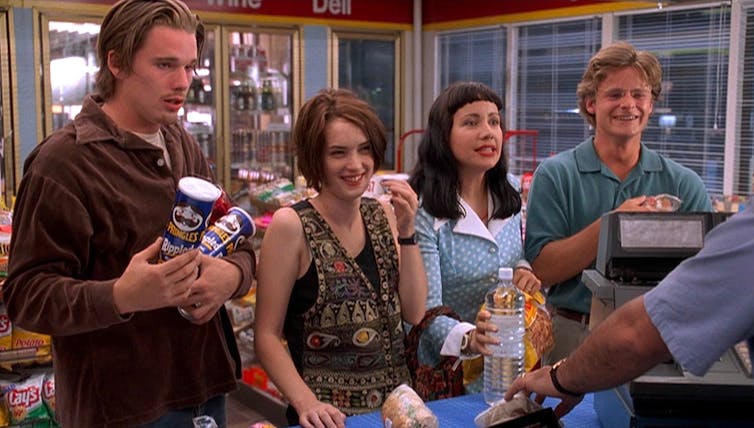
“I was really going to be something by the age of 23,” says Lelaina Pierce, played by the radiant Winona Ryder in the 1994 Gen X classic Reality Bites.
She was voicing an anxiety many would say was born in the post-boomer demographic of the film’s disenfranchised central characters – but it is still a familiar anxiety today, 30 years on from the film’s release.
Reality Bites was the first feature for director Ben Stiller, then known mostly for his TV comedy work, and the first script penned by then 20-something writer Helen Childress, drawing from her own life experience.
Lelaina is a dissatisfied university graduate confronting the realities of life after graduation while making a documentary about her equally disaffected friend group.
Despite graduating at the top of her class, Lelaina is stuck in a producer’s assistant role on a Houston morning show – until she is unceremoniously fired. Complicating matters, she is also trapped in a love triangle with corporate Michael (played by Stiller) and slacker Troy (Ethan Hawke), two men who represent a key philosophical fork in the road for many Gen Xers: to “sell out” or not.
Reality Bites continues to resonate with new generations of viewers. It is a timeless story of young adults navigating love, friendship and career uncertainties.
A Film For Gen X
At the time of release, The New York Times’ Frank Rich declared:
This is the movie that has been both praised as the last word on X-ers and damned as Hollywood’s slickest effort yet to exploit them.
There are however genuine joys, despite the slickness critique. Among them, the acerbic humour of Janeane Garofolo and Steve Zahn, in memorable roles; the killer 90s soundtrack, featuring Lisa Loeb, Crowded House and World Party; and two career-defining roles for Ryder and Hawke, who may be more familiar to younger audiences for Stranger Things and The Black Phone. Hawke’s brooding intellectual and Ryder’s luminous yet sardonic girl-next-door established personas for the duo that persisted throughout the decade.
The themes of the film are surprisingly relevant given the generational differences between audiences of the early 90s and today. Although the film examines the complicated issues of the AIDS crisis and homophobia of the era, it also adeptly examines the universal anxieties of identity crisis, disillusionment and the search for authenticity.
Despite clear generational differences in fashion, lifestyle and music, the response to the film by new audiences tends to be one of resonance and recognition.
A timeless premise for a romantic drama, the love triangle at the centre of Reality Bites remains compelling. Following Lelaina’s meet-cute car accident with TV executive Michael, the couple start dating. But Lelaina can’t overcome her attraction to Troy, who positions himself as the anti-Michael; he’s more interested in his amateur band and just hanging out than he is in starting a career.
When he and Lelaina finally come together in the aftermath of a fight with Michael over commercialising her documentary, it’s presented as soulful and deeply romantic. However, Troy is unable to handle the intimacy of their burgeoning relationship and walks out on her the following morning. Spoiler Alert: Lelaina forgives him for leaving, and their embrace and kiss is one of the final images of the film.
A Worthy Rewatch
What has struck me upon multiple rewatches over the last 30 years is how much my personal reaction to Lelaina’s eventual decision to dump Michael in favour of Troy has shifted. Troy is shown throughout the film to be callous, self-centred and in need of therapy, while Michael is generous and kind, if a little dorky
When I first watched the film as a teenager it was easy to get hoodwinked into aligning with Lelaina’s choice of Troy. Watching the film as an adult who is closer in age to Lelaina’s parents, the choice is less clear. Were Michael’s actions so egregious?
In hindsight, the Gen X obsession with selling out no doubt played a significant role in how Michael and Troy were perceived at the time of release. Michael’s attempt to turn Lelaina’s creative work into money was seen as inauthentic, while Troy’s lack of aspirations for his music career were perceived as rebellious and genuine.
A contemporary generation of media creators are seemingly less critical of attempts to monetise their artistry. The act of personal “branding” and building an audience are common to platforms such as TikTok and YouTube, in a manner that Troy and Lelaina would likely find shameful.
But I’m certainly not the first to make the case that Lelaina made an error.
At the Tribeca Film Festival’s 25-year anniversary screening, Ryder herself admitted she thought Lelaina would end up in a lesbian relationship with Garofalo’s Vickie after Troy’s novelty faded.
Whichever side you end up taking, the film’s rocking soundtrack, charming performances and snarky humour make it a worthy rewatch.![]()
Adam Daniel, Associate Lecturer in Communications, Western Sydney University
This article is republished from The Conversation under a Creative Commons license. Read the original article.
6 tips to maximise your concert experience, from a live music expert
Ben Green, Griffith UniversityStadium concert attendance is on the rise in Australia. This month, more than one million people are expected see P!NK and Taylor Swift on their Australian tours, which quickly sold out the country’s biggest stadiums. Both artists added extra dates to meet demand, following extended runs by Ed Sheeran and Foo Fighters in 2023.
What’s drawing such massive crowds to these events? And how can you maximise your fun (in a safe way) when sharing a space with 100,000 other people?
What’s Behind The Concert Boom?
State governments have begun to lift decades-old limits on large stadium concerts. Event caps have gone from six to 12 events per year at Brisbane’s Suncorp Stadium, and from four to 20 events per year at the Sydney Cricket Ground precinct. The press releases from both of these announcements trumpeted the benefits for tourism and local economies.
Australia’s live music attendance and revenue doubled in the decade prior to the COVID pandemic, attracting about half the country’s adult population. Large international events contributed significantly to this.
This popularity continues, with ticket prices rising amid a cost-of-living crisis. Consumer research shows people under age 35, and the one-third of Australians who rent their homes, have made the biggest reductions in discretionary spending. But the overall trend is towards saving week-to-week and “splurging” on big events such as concerts.
The ‘Peak Music Experience’
Live music is a space where extraordinary things happen. We can celebrate who we are and what’s important to us, individually and collectively. We can have intense feelings and express them in uncommon ways, exploring different – or “more real” – versions of ourselves.
All of this creates memorable experiences that resonate deeply with us and keep us coming back time and again. I call these “peak music experiences”. My research drawing on in-depth interviews with music lovers, media analysis, and participant observation identifies common elements of the peak live music experience.
With that in mind, here are six things to help you get the most out of your next concert.
1. Company
A crucial factor in any concert experience is whom we share it with. The heightened feeling and expression that live music enables can create powerful moments that sociologists call “epiphanies”. Epiphanies reveal and encapsulate what specific people mean to each other.
So when tickets go on sale, and you’re considering whom to call, remember your choice can elevate your concert experience – and your relationship with that person or group.
2. Venue
Music is inseparable from its setting. In live music, this is a feature. Concert halls and dive bars are perfect settings for certain types of experience. But if you’re seeing one of the world’s biggest acts, where better to do so than a giant cauldron of humanity under the stars?
Stadiums have drawbacks, mostly related to their sheer scale and associated logistics. But the journey, the waiting, the challenges, and especially the fellow travellers, often contribute to the unpredictable magic of live music. So plan ahead and leave plenty of time, but also enjoy the whole ride!
3. Sound
Live music doesn’t just sound different than music in your loungeroom; it feels different. High volume, as much as the mass movement of bodies, makes live music a physical experience. Experts suggest the best sonics are in front of the mixing desk, off-centre and not too close to the stage – but this must be balanced with the view! It’s a good idea to pack ear plugs in case your ears need a rest.
4. Presence
A good live show requires the performer to be present, not just physically but also emotionally. This is where we judge their authenticity or “realness”. This isn’t an objective quality, but a reflection of our personal tastes and values. Do you prefer flawless virtuosity or relatable vulnerability?
Such notions are deeply ingrained in us. So when choosing a concert, consider how it might confirm or challenge your ideals. Both can be good! And don’t forget to be present yourself.

5. Fandom
Concerts aren’t just about enjoying and judging the performer(s); they’re also about us. The costly pilgrimage and elaborate ritual to celebrate this very specific thing you love, surrounded by people who love it too, helps join the dots of our fragmented lives.
Just getting to see a favourite artist or song is the source of many people’s peak music experiences. The moral: if it’s an act you really love, always go if you can.
6. Collective feeling
Have you noticed the moment when a roaring crowd becomes aware of itself and roars a bit louder? Live music is about more than just the artist, their performance, or even us. It’s also about other people.
Music synchronises not only our actions but our subjective experience. We feel together, whether in rapt silence or wild abandon. We become a part of something greater – especially at massive concerts with crowds in the tens of thousands. So my tip: join in.
Safety And Sustainability
Finally, don’t forget to keep safe. Australia’s love of outdoor events exposes us to extremes, which are a growing reality. Taylor Swift’s recent Brazilian concerts coincided with a heat wave with tragic consequences, highlighting the responsibility of event organisers.
You can manage risks by making plans in advance, knowing your limits, and considering important information such as the availability of water, food, safe spaces and venue exits. Event organisers should provide this information.
The music industry and governments are also beginning to address issues of sexual harassment, accessibility, drug safety and diverse representation, with a view to making the live music experience available and equitable for all. ![]()
Ben Green, Research fellow, Griffith University
This article is republished from The Conversation under a Creative Commons license. Read the original article.
Digital technologies have made the wonders of ancient manuscripts more accessible than ever, but there are risks and losses too

Near the end of the 18th century, a Greek monk named Nikodemos was putting together a massive anthology of Byzantine texts on prayer and spirituality, which he would call The Philokalia.
He lamented the state of learning among his fellow monks, because they did not have access to the texts of their tradition:
Because of their great antiquity and their scarcity – not to mention the fact that they have never yet been printed – they have all but vanished. And even if some few have somehow survived, they are moth-eaten and in a state of decay, and remembered about as well as if they had never existed.
Nikodemos hoped to correct this by collecting and printing texts that would otherwise fall to dust. By making the manuscripts into a book, he would preserve the knowledge they contained – but not the manuscript, not the artefact itself.
He does not mention how difficult his Byzantine manuscripts were to read and transcribe, even for someone familiar with the language. Copying by hand takes dozens, even hundreds of hours of intensive labour. Reading them means learning to decode scribes’ handwriting, abbreviations and shorthand.
Every manuscript, with its errors, notes and doodles – not to mention its artistry, images, and ornamentation – remains a unique artefact. The evanescent beauty of manuscripts is lost in their printed analogue. Every manuscript is its own text, its own space of knowledge, and an irreplaceable part of our shared cultural histories.

Preserving The Past
Nikodemos was struggling with the perennial dilemma faced by historians and archivists. Our knowledge of the past, and the wisdom we can gain from it, is bound in material objects – whether manuscripts, paintings, ruined buildings or clay pots – that are decaying.
Decay presents three challenges. What will we preserve of the past? How should we preserve it? And how do we ensure its accessibility?
The scarcity and obscurity of ancient and medieval manuscripts are among the biggest obstacles to understanding both the texts they contain and the lives of those who wrote them.
Few copies might ever have been made of a given text. We are lucky if we can now read a text in 50 manuscripts. Some survive in only one.
But the biggest problems are time and the elements. Medieval manuscripts are usually made of parchment and bound in leather-covered boards. The ink is usually iron gall. These are amazingly durable materials, but they have their limits.
Ink fades with exposure to light. Pages are torn or damaged by water, smoke and skin oils. The same activities that give us access to the manuscript will also slowly destroy it.

In the early modern period, antiquarians and collectors began acquiring manuscripts from monasteries and churches and putting them into libraries. Manuscript tourism became a popular activity for wealthy scholars like Sir Robert Cotton (1571-1631), whose collection became the core of the British Museum’s collection.
Of course, many of these collectors simply stole or smuggled what they wanted from struggling monasteries in what are now Greece, Sinai and Israel. Their achievements must be balanced against their participation in colonial piracy.
But their work made possible the rise of printed editions of classical and medieval works. The printing revolution promised a solution to preservation and accessibility. It accelerated distribution and made the task of reading easier by standardising printing conventions. Books could proliferate where manuscripts could not, and anyone who could read them could access that knowledge.
But the printed version rarely resembles its parchment parent. Hand-copying always introduces errors, whether accidental or intentional, and so each manuscript copy differs from the next. Printed editions must choose one form. Usually, this means choosing between readings, combining them, or correcting as the editor deems best.
Our modern editions of the Bible and the Iliad, for example, do not exactly match their underlying manuscripts. The texts represent editors’ best judgement of the originals.

Digital Decay
Even if we prefer the edited versions, printed books decay faster than manuscripts, and take up just as much space. Print does not solve the problem of preservation; it only postpones it.
In the 20th century, digital scanning tools and computer-based storage seemed to offer a new kind of solution. Manuscripts could be scanned into high-resolution images and stored digitally. Computers promised no more deterioration and no more shelf space.
European and American libraries have invested millions in digitising their manuscript holdings. The Library of Congress, the British Library, and the Bibliothèque Nationale de France, among others, offer access to thousands of manuscripts free of charge on their websites.
The move online seems so perfect to some that the UK Ministry of Justice plans to digitise 100 million wills, and then destroy the paper originals.

This proposed move ignores the inherent problems and vulnerabilities of digital solutions, which amount to “digital decay”.
First, the digital image is not the same as the material original. Even the finest colour images do not let a reader change the lighting to bring out different colours, or look from different angles to see faded letters more clearly. You just can’t see as much in the scan as you can on the page.
Second, digital images are often in proprietary formats, meaning that without the library’s viewing software you cannot actually examine the manuscript. Sometimes lower quality scans are available in formats like PDF and JPEG, but these are generally blurry, and even unreadable.
In some cases, images cease to be accessible because they are contained in obsolete file formats. The digital format is still chained to its digital shelves in a private space.
Third, as a recent cyber-attack on the British Library demonstrates, the digital space seems not to be safer than the physical one. On October 28, 2023, a criminal group called Rhysida unleashed ransomware in the British Library’s computer systems, stealing nearly 500,000 files.
The most worrisome thefts were of personal information that could be used for identity theft and other frauds. But the British Library website has been down since that day. Its incident report page says that it may take up to a year to restore all online operations.
That includes all of the library’s carefully digitised manuscripts, which are now unavailable. There is no sense of when we will see them again. The digital library space, with its proprietary viewing software and its specialised file formats, is now shuttered.
Conservation And Accessibility
Digitising manuscripts may promise preservation and accessibility, but it does not future-proof our access to the past. Scans and websites cannot make up for losing the real thing. Yet physical conservation comes at the expense of accessibility.
We can, however, use advances in AI and computer technology to improve approaches to digital conservation and enable wider access to the uniqueness of individual manuscripts.
To avoid digital decay, we need to devote the same attention to digital conservation as to material conservation. Long term investment is needed to regularly migrate file formats to keep up with changing technologies. Ideally, these formats should be “inter-operable” – which is to say, usable across a wide range of platforms.
This would uncouple the digital objects from the proprietary viewers used by libraries now, so they can be stored and viewed anywhere, rather than only on library websites. Until that happens, each digital library space remains vulnerable to decay and even loss since, if the website is down, the viewer is down.

It has become possible to train AI to “read” manuscripts, transcribe them, and assist in translating them into English, Chinese, Spanish, and so on. Images of manuscripts would then have a readable text and all the unique elements of the material original – its decorations and artistry, its errors and doodles.
The underlying combination of inter-operable file formats and relatively simple software would mean museum visitors could use tablets and touch screens to read and interact with manuscripts, not just as artistic objects, but as readable texts. In this enhanced digital form, manuscripts could come to local museums, libraries and galleries, where they would be accessible to everyday visitors as well as specialists.
This approach would require careful care for the material originals, as well as continuing investment in digital formats and technologies to ensure access for future readers.
At the end of his introduction to the Philokalia, Nikodemos congratulates himself on what he offers readers:
For behold, writings never ever published in earlier times! Behold, works which lay about in corners and holes and darkness, unknown and moth-eaten, and here and there cast aside and in a state of decay!
The challenges of preserving and accessing our past, contained in objects like manuscripts, are not really that different from those Nikodemos faced in his day. But unlike him, we can now offer the experience of the manuscript as well as the text, and to a much wider audience.![]()
Jonathan L. Zecher, Research fellow, Australian Catholic University
This article is republished from The Conversation under a Creative Commons license. Read the original article.
Some of the Renaissance’s most romantic love poems weren’t for lovers

As poets have demonstrated for centuries, a sonnet for your beloved never goes out of style. The gift of verse may carry extra cachet this Valentine’s Day, on the heels of Taylor Swift’s announcement that her next album is poetry-themed.
But in carrying out my research on Renaissance literature and gender, I’ve been struck by how many of that period’s love poems were not for lovers.
These sonnets, composed for friends and family, are not just beautiful; they’re also a reminder that love and Valentine’s Day aren’t exclusively for couples.
The Love Sonnet Is Born
The sonnet was invented in 12th century Italy as a 14-line poem with 11 beats per line and various rhyming patterns. Its originator, Giacomo da Lentini, was a poet in the Kingdom of Sicily who had been inspired by older Arabic and French poetry.
But it was the Italian poet Petrarch who put the form on the map. In the 14th century, he wrote a collection of 366 poems, mostly sonnets. He penned the collection for a woman named Laura, whom he loved from afar in life and after her death.
Petrarch died in 1374, but his poetry became the most widely published literature of the Italian Renaissance. It was so popular that it inspired generations of poets, imitators known as “Petrarchists.” Petrarchism became a global phenomenon in the 16th and 17th centuries, spreading to Spain, France, England and even the Americas.
Playing With Sonneteering Stereotypes
Thomas Wyatt is thought to have written the first English sonnets, in the early 16th century. His poems strongly relied on Petrarch; some of the best known, like “Whoso list to hunt,” are quasi-translations of the Italian poet’s work.
Writing a half-century later, Shakespeare changed the form, ending his sonnets with a rhyming couplet, giving birth to the “Shakespearean sonnet.”

More than four centuries after the first printing of Shakepeare’s sonnets in 1609, his poems are still oft quoted. Many valentines will find themselves compared to a summer’s day or swearing there can be no impediments between the marriage of true minds.
Less well known, however, is the fact that half of Shakespeare’s poems were addressed to a young man, an unnamed “Fair Youth.” Depending on which Shakespeare scholar you ask, the gesture is either platonic, romantic or a little of both. In any case, it introduces an element of queerness, in that there’s homoeroticism and a challenge to what society deems natural.
Yet today the Renaissance sonnet still has a reputation, even among scholars, for being about the unrequited love of a man for a woman. But even before Shakespeare, in Renaissance Italy, the sonnet was a lot more varied than that.
For Friends And Lovers
For starters, even Petrarch wrote about more than just his love for Laura.
A number of his poems were composed for friends, with several of them for the Florentine poet Sennuccio del Bene. In poem 113, Petrarch writes about returning to the region where Laura was born, but he opens by describing his love for his friend, saying he is only “half” himself without Sennuccio, and that both men would only be “whole” and “happy” if they were together.
Poem 287 is a sonnet on Sennuccio’s death, in which Petrarch’s mourning is only mitigated by the knowledge that his friend is in heaven with other great poets, like Dante, and the now-deceased Laura. The short poem mixes his love and grief for both people, his beloved and his friend.
Today’s “Galentine’s Day” – a celebration of female friendship – has yet to spawn a male-friendship-centered “Malentine’s Day.”
But platonic love between men carried no stigma in the Renaissance. Take the verses of Venetian writers Orsatto Giustinian and Celio Magno, who published their poetry in a single book in 1601.
Magno and Giustinian portray their friendship with the vocabulary of Petrarchan love. In one sonnet, Magno describes how he hates being separated from his friend, which is almost like being severed from himself: “You do not live, I do not live; together we are far from ourselves in this bitter state.”
At the risk of being the “and-they-were-roommates” historian, I’ll note that the book also contains passionate poems from Giustinian to his wife, Candiana Garzoni.
That doesn’t cancel out the homoerotic tension in the men’s poems to each other, but it does make classifying their sexuality challenging. And maybe this shouldn’t be the point. If anything, their romantic friendship seems to skirt simple categories of sexual orientation.
Sororal Sentiment
Most published writers in Renaissance Italy were men, but a not-insignificant number were women. Existing in a single copy in a library in Siena, Italy, is a joint poetry collection written by two sisters, Speranza Vittoria and Giulia di Bona. They lived with their mother and four other sisters.
Their sisters Lucrezia and Cassandra both died at a young age. The sonnets that Speranza and Giulia composed for them take the sort of heartbreaking imagery used to describe a lost partner, but is repurposed to portray their grief: the swan song, the sun gone dark, the poet’s wish to die in order to be near the object of their love.
In one melancholic poem about Lucrezia’s death, Speranza weeps for the “strange place, dark earth, and bitter stone” that “possess” her sister, and thus her own happiness.
The poems traded between Speranza and Giulia are brighter, exhibiting an abundance of love and admiration. In one pair of sonnets, written playfully yet impressively with matching rhyme words, the two liken each other to white ermines, an animal considered a symbol of moral virtue.
Love Is Big
There are so many other Renaissance Italian poems written for friends, parents, children and grandchildren – not to mention fiery love poems dedicated to Jesus and the saints, some by clerics, like Angelo Grillo.
They serve as reminders of what the love poem can be. They push back against narratives that champion heterosexual relationships or that tout romantic coupling and sexual attraction of any orientation as the most important relationship in a person’s life, minimizing the importance of other loving relationships.
These poems also encourage everyone to think more expansively about their own love and home lives. As an unmarried mother of a 5-year-old – and as someone who has only ever lived with friends or siblings – I have benefited immensely from alloparenting, the care provided for my son by all of the nonparents in his life.
I ended up in these living situations in part because of the pandemic, which, in a way, was a form of luck: Sometimes it takes a disruptive event to break cultural expectations for the nuclear family and childrearing.
If writers could describe different types of love during the Renaissance, why limit what we can envision for ourselves?![]()
Shannon McHugh, Associate Professor of French and Italian, UMass Boston
This article is republished from The Conversation under a Creative Commons license. Read the original article.
Surfing's First World Championship At Manly In 1964
Computer Pals For Seniors At Narrabeen: What Is AI?

Dr. Scamps Offering Free Anti-Scam Seminars
Your Experiences Matter – Please Share Them With Us: National Seniors
- Healthy ageing
- Connections with people, animals, and places
- Ageism
- Dementia
- Financial wellbeing and planning, including questions about inheritances
- Advocacy questions, this time focusing on private health insurance, COVID measures, and vaccination.
- CONFIDENTIAL. Your answers will be completely confidential. No information will be made available that would identify you in any way.
- ETHICS APPROVED. The Bellberry Human Research Ethics Committee has reviewed and approved the survey in accordance with the National Statement on Ethical Conduct in Human Research (2007) – incorporating all updates. This statement has been developed to protect the interests of people who agree to participate in research studies.
Stronger Primary Healthcare System To Support Australians With Long COVID
- improve primary care support for people with Long COVID,
- increase awareness within the community and health sector, and
- provide support for Long COVID research.
Running or yoga can help beat depression, research shows – even if exercise is the last thing you feel like

At least one in ten people have depression at some point in their lives, with some estimates closer to one in four. It’s one of the worst things for someone’s wellbeing – worse than debt, divorce or diabetes.
One in seven Australians take antidepressants. Psychologists are in high demand. Still, only half of people with depression in high-income countries get treatment.
Our new research shows that exercise should be considered alongside therapy and antidepressants. It can be just as impactful in treating depression as therapy, but it matters what type of exercise you do and how you do it.
Walk, Run, Lift, Or Dance Away Depression
We found 218 randomised trials on exercise for depression, with 14,170 participants. We analysed them using a method called a network meta-analysis. This allowed us to see how different types of exercise compared, instead of lumping all types together.
We found walking, running, strength training, yoga and mixed aerobic exercise were about as effective as cognitive behaviour therapy – one of the gold-standard treatments for depression. The effects of dancing were also powerful. However, this came from analysing just five studies, mostly involving young women. Other exercise types had more evidence to back them.
Walking, running, strength training, yoga and mixed aerobic exercise seemed more effective than antidepressant medication alone, and were about as effective as exercise alongside antidepressants.
But of these exercises, people were most likely to stick with strength training and yoga.
Antidepressants certainly help some people. And of course, anyone getting treatment for depression should talk to their doctor before changing what they are doing.
Still, our evidence shows that if you have depression, you should get a psychologist and an exercise plan, whether or not you’re taking antidepressants.
Join A Program And Go Hard (With Support)
Before we analysed the data, we thought people with depression might need to “ease into it” with generic advice, such as “some physical activity is better than doing none.”
But we found it was far better to have a clear program that aimed to push you, at least a little. Programs with clear structure worked better, compared with those that gave people lots of freedom. Exercising by yourself might also make it hard to set the bar at the right level, given low self-esteem is a symptom of depression.
We also found it didn’t matter how much people exercised, in terms of sessions or minutes a week. It also didn’t really matter how long the exercise program lasted. What mattered was the intensity of the exercise: the higher the intensity, the better the results.
Yes, It’s Hard To Keep Motivated
We should exercise caution in interpreting the findings. Unlike drug trials, participants in exercise trials know which “treatment” they’ve been randomised to receive, so this may skew the results.
Many people with depression have physical, psychological or social barriers to participating in formal exercise programs. And getting support to exercise isn’t free.
We also still don’t know the best way to stay motivated to exercise, which can be even harder if you have depression.
Our study tried to find out whether things like setting exercise goals helped, but we couldn’t get a clear result.
Other reviews found it’s important to have a clear action plan (for example, putting exercise in your calendar) and to track your progress (for example, using an app or smartwatch). But predicting which of these interventions work is notoriously difficult.
A 2021 mega-study of more than 60,000 gym-goers found experts struggled to predict which strategies might get people into the gym more often. Even making workouts fun didn’t seem to motivate people. However, listening to audiobooks while exercising helped a lot, which no experts predicted.
Still, we can be confident that people benefit from personalised support and accountability. The support helps overcome the hurdles they’re sure to hit. The accountability keeps people going even when their brains are telling them to avoid it.
So, when starting out, it seems wise to avoid going it alone. Instead:
join a fitness group or yoga studio
get a trainer or an exercise physiologist
ask a friend or family member to go for a walk with you.
Taking a few steps towards getting that support makes it more likely you’ll keep exercising.
Let’s Make This Official
Some countries see exercise as a backup plan for treating depression. For example, the American Psychological Association only conditionally recommends exercise as a “complementary and alternative treatment” when “psychotherapy or pharmacotherapy is either ineffective or unacceptable”.
Based on our research, this recommendation is withholding a potent treatment from many people who need it.
In contrast, The Royal Australian and New Zealand College of Psychiatrists recommends vigorous aerobic activity at least two to three times a week for all people with depression.
Given how common depression is, and the number failing to receive care, other countries should follow suit and recommend exercise alongside front-line treatments for depression.
I would like to acknowledge my colleagues Taren Sanders, Chris Lonsdale and the rest of the coauthors of the paper on which this article is based.
If this article has raised issues for you, or if you’re concerned about someone you know, call Lifeline on 13 11 14.![]()
Michael Noetel, Senior Lecturer in Psychology, The University of Queensland
This article is republished from The Conversation under a Creative Commons license. Read the original article.
The battle of Waterlooplein: how Amsterdam’s Jews fought back against Nazi occupation in 1941

For his latest film, Occupied City, the British artist Steve McQueen has turned his sights on the Nazi occupation of Amsterdam, his home town.
McQueen’s documentary is informed by the 2019 book, Atlas of an Occupied City: Amsterdam 1940-1945, by Dutch author and film director – and McQueen’s wife – Bianca Stigter. Film critic Peter Bradshaw has described it as a “monumental survey-meditation” on daily life under German rule.
For just over four hours, the camera tracks through modern-day Amsterdam; the voiceover describing the horrors the Nazis perpetrated in its streets, squares and buildings. A prison yard where captured Jews were held is now an open space overlooked by the Hard Rock Cafe. The secret police headquarters is now a school.
I have spent four decades researching how Jews responded to Nazi oppression. As detailed in my book Individuals and Small Groups in Jewish Resistance to the Holocaust, Amsterdam was the site of a unique act of defiance on February 9 1941, the day Dutch Nazis attacked the city’s Jewish neighbourhood.
A Campaign Of Terror
On May 15 1940, five days after the Germans invaded the Netherlands, the Dutch army capitulated and an occupation regime was instituted.
The Dutch adopted an uncertain but overall passive attitude, because, following five days of warfare, the German occupiers appeared to act with restraint. However, during the autumn of 1940, Jews were increasingly struck by discriminatory measures aimed at their segregation from non-Jews. This separation was enforced by a campaign of terror. From the end of 1940, Dutch Nazis participated in that campaign.
About 140,000 Jews lived in the Netherlands, just over 1% of the population of the small, flat country on the North Sea. Jews had been integrating into Dutch society, but economic crises and the rise of Nazism hampered this process.
Jews mostly resided in towns, foremost in Amsterdam. The capital counted 65,000 Jewish inhabitants, concentrated in several neighbourhoods, including the old Jewish quarter near the city centre.
On Sunday, February 9 1941, a group of black-uniformed Dutch Nazis accompanied by German soldiers briefly entered Amsterdam’s Jewish quarter, kicking in doors, destroying possessions and beating up people.
The next morning, rumours abounded that the Nazis would return. There was distress in the neighbourhood, but also resilience. The idea of defence groups was mooted. Those who had fought before or were used to street fighting took charge. A trainer from a neighbourhood boxing school assembled about 50 boxers and wrestlers in his gym. Other groups were based in pubs.
Lard Zilverberg was one of the defenders. He had been born in 1916 into a large Jewish family. When employed, Zilverberg worked as a sign painter. He wasn’t tall, but you couldn’t help noticing him – a hothead with fierce eyes and a fiery voice, a boxer who was fleet of foot and packed a punch.
On Tuesday evening, just after half past six, 40 Nazis left their headquarters. The unit marched into the Jodenbuurt, the old Jewish neighbourhood, continuing until Waterlooplein.
There they turned left, along the tram tracks. One Nazi was on a bike. Coming on to the square, he took a sharp left and got separated from his group at the playground in the middle of the open space. A piece of metal was thrown at the cyclist. Stones followed. His comrades started running towards him.
At that moment Jewish defenders emerged from doorways and unlit alleys. Knives were drawn. Men fought with rubber hoses enforced with lead. A Nazi named Hendrik Koot fell under the blows. Koot, born in 1898, was a shopkeeper and father of eight. He stood up and tried to get away, but was grabbed again. The battle was decided in minutes. The Nazis withdrew.
Merciless Reprisals
At quarter past seven, wounded men started to arrive at a first-aid post just off the square. Koot had head injuries; the base of his skull was fractured. He was taken to hospital, where he died three days later.
There were Jewish casualties too. One of them had been stabbed in the chest. Another had a head wound. At quarter past nine, the last injury was treated.
Meanwhile, the German police cordoned off the neighbourhood. They made 20 arrests among Jews who had remained on the streets, including Zilverberg. The detainees were beaten. Zilverberg, flanked by his brother Philip and another fighter, was forced to pose for a photo.
German reprisals were merciless. On February 22 and 23, another 400 Jewish men were rounded up. However, two days later, the Dutch population responded with a general protest strike, which started in Amsterdam, lasting two days, then spread to other cities.
All but one of the captured men were killed. Eventually, more than 100,000 Dutch Jews were deported and murdered during the Holocaust – over 70% of the country’s Jewish population, a very high percentage compared to other western European countries. But that does not imply that Dutch Jews were “led like lambs to the slaughter”, an often-repeated misconception.
My research has found that Jews refused to be terrorised. They fought back. They maintained their religion and culture. They protested publicly. They wrote for clandestine papers and helped distribute them, often endangering their own safety.
Jews disobeyed deportation orders that arrived in 1942. Despite the German might, collaboration and indifference among non-Jews, almost 30,000 Jews went into hiding (half of them were caught, showing how difficult hiding was).
They formed organisations to support each other. They helped people escape from deportation centres, trains and concentration camps, saving hundreds of children.
They tried to sabotage the deportation with firebombs. They formed or joined non-Jewish resistance groups and were among the pioneers of armed resistance.
The events of February 1941 ended the general uncertainty and contributed to wider resistance, which fully developed later. The battle of Waterlooplein also signified that Jewish resistance meant a fight to the death. Lard Zilverberg’s death was registered in the Mauthausen concentration camp, in Austria, on February 5 1942.![]()
Ben Braber, Honorary Research Fellow in History, University of Glasgow
This article is republished from The Conversation under a Creative Commons license. Read the original article.
China’s doom loop: a dramatically smaller (and older) population could create a devastating global slowdown
Jose Caballero, International Institute for Management Development (IMD)China has announced that in 2023 its population declined from 1.4118 to 1.4097 billion people. Forecasting by the UN suggests China’s population will dip to 1.313 billion by 2050 and then down to about 800 million by 2100. This is a significant change and will have ramifications well beyond its borders.
There are two trends that underline such a demographic shift. First is the ageing population with the percentage of those aged 60 and older currently above 20% of the total population. Second, birth rates have dropped significantly, from 17.86 million births in 2016 to 9.02 million in 2023. Several interrelated economic consequences of such shifts could emerge which ultimately can affect China’s economic wellbeing in the mid-to-long term and resonate globally.
More than one-quarter of China’s population will be over 60 by 2040 and so less economically active (retirement age for men is 60 and for women it’s 50-55). This will put pressure on China’s pension and elderly care systems with some predictions indicating that the pension system could be bankrupted by 2035.
To avoid pension-related issues straining public resources, possible scenarios include raising the retirement age to get people to work for longer, increasing taxes to cover additional pension requirements and shrinking current benefits.
Changes in the healthcare system to cope with population changes could leave the many people feeling less well off or unhappy with services being reduced. This in turn could result in some degree of political instability.
In addition, as the dependency of the elderly on their children increases, household consumption, savings and investment levels are likely to decline, which in turns negatively affects the overall health of the economy.
Labour Force Reductions
As older workers retire, there will be fewer people of working age in the total population, and therefore available to work. Taking measures to help older people continue to work for longer, for example, could become fundamental to long-term economic growth and to sustain the levels of GDP per capita. Nevertheless, as pointed out above, such measures could be politically unpopular.
Productivity gains (GDP per employed person) may also be affected by a reduced workforce, and one which is getting older. Some studies find evidence that labour productivity (output per working hour) varies with age. It tends to increase as a person enters the labour market, then plateaus between 30 and 40, and eventually declines as an individual’s work life comes to an end.
Population shifts can lead to a “doom loop”, where one economic situation creates a negative impact and then another and another. As lower productivity begins to affect production in particular sectors, China may be compelled to increase imports to satisfy demand in those industries.
This could significantly affect innovation and entrepreneurship which in turn can further diminish productivity. New ideas, drive economic growth. The size of the workforce affects innovation because as the number of employed individuals shrinks, the pool of new ideas becomes narrower.
If population growth becomes negative or falls to zero, then the knowledge behind those ideas stagnates. In addition, there is evidence that the peak of a person’s innovative activities and scientific output comes at around 30 and 40 years of age.
Current demographic trends are therefore likely to stifle technological advances and innovation in China. Innovation is essential to sustain and improve living standards, consequently the levels of quality of life may come under strain as the population reduces.
At the same time, studies suggest that entrepreneurship can be negatively affected by the ageing of the population as the percentage of young people is positively linked to entrepreneurial activities. This hampers the dynamism of the economy and contributes to slower economic growth.
China’s economic growth depends on productivity and employment growth. Economic growth is driven by the effective combination of labour and capital (money) to generate services or products.
This requires a constant or increasing population size. Importantly, with its population going down, China would need to increase its per capita productivity so as to sustain economic growth.
As we have seen, Chinese productivity is also likely to go down as a result of the demographic changes. Therefore, it is expected that the Chinese economy will experience a slower economic growth through, for example, the shrinking of the numbers of shoppers or consumers which will directly impact the retail trade sector.
In addition, lower demand is likely to intensify the ongoing crisis in the property sector. Fewer people able to buy property will mean a fall in prices.
And Prices Go Up Outside China
China is the second largest market in the world responsible for over one-third of the world’s growth and the second largest importer, so any changes will have global repercussions.
In Brazil and South Africa, for instance, both significant trading partners with China, these population shifts may lead to a lower demand for their exports. This may result in lower employment levels in those countries as exporting companies are forced to reduce operations.
As productivity declines in China, its trading partners may be compelled to import products from other economies which in turn can increase the prices of their products. In addition, emerging economies such as Thailand and Vietnam that rely on Chinese outbound tourism will experience a significant downturn in all tourism-related sectors such as transport and hospitality as the effect of population shifts lowers the number of people able to travel overseas.
Multinational corporations will also feel demand drop as the Chinese consumer market is a large source of their revenue. The knock-on effect is likely to be global as suppliers and workers around the world find jobs disappearing. In short, as a recent OECD report puts it, a sharp economic slowdown in China would drag down global growth, the effects of which could be devastating.![]()
Jose Caballero, Senior Economist, IMD World Competitiveness Center, International Institute for Management Development (IMD)
This article is republished from The Conversation under a Creative Commons license. Read the original article.
Local Seniors Festival Events 2024
- Wednesday 13 March, 10.30am to 1.30pm – Forestville Memorial Hall and Forestville Seniors Centre
- Friday 22 March, 1pm to 4pm – Newport Community Centre
New Aged Care Act Consultation Period Extended
- complete a feedback survey online or by calling 1800 318 209
- attend a workshop
- send in a written submission by email or post.
A Fool in Love is delightfully ridiculous and sharp-witted: social satire at its finest

Van Badham’s A Fool in Love at the Sydney Theatre Company lampoons the modern Sydney vibe: a city obsessed with wealth, status and, of course, love.
Designer Isabel Hudson’s candy-coloured set, lolly-pop-esque orange trees and sherbet-coloured tinsel attire seem to vibrate the essence of the city as we move juggernaut-like towards the festivities of Valentine’s day and Mardi Gras.
Based on Lope de Vega’s 17th-century production La Dama Boba, Badham transports us to a camp version of the original nestled in a bourgeois beachside enclave – the embodiment of Sydney’s eastern suburbs. We find ourselves in a world obsessed with private schools, linen attire, and the maintenance (if not stock-piling) of funds.
What’s Love Got To Do With It?
Ottavio (Johnny Nasser) is yet another linen-clad specimen, the heir to a once-thriving empire in the automotive parts manufacturing realm, now plummeting into irreparable decline.
To sustain his lavish lifestyle and secure the dwindling family fortune, he faces the daunting task of orchestrating the marriage of his eldest daughter, Phynayah (Contessa Treffone).
To inherit her eccentric uncle’s remarkable fortune – and maintain her family’s coveted social standing – Phynayah must marry before she’s 30. A difficult task in a city like Sydney, where romantics are snuffed out by dating apps and the idea there are always greener pastures one swipe away.
However, such a romantic deal (the promise of wealth and cultural standing), attracts more than one ambitious suitor. Phynayah’s clever and social climbing sister Vanessa (Melissa Kahraman) also “brings the boys to the yard” for herself.

The tale of making love to Phynayah is not as straightforward as it seems. Beautiful, and soon to be in possession of great wealth, Phynayah could be perceived as a modern catch: but these days suitors want more. They expect brains as well – not to mention a sizeable Instagram and TikTok account.
Clueless, witless, and perpetually silly, Treffone’s Phynayah embodies immaturity itself, donning a crochet bikini and serving as a living banal joke. The question looms: is any social climber desperate enough to align themselves with a poolside belle whose intellectual prowess is overshadowed by her towel?
Frothy Tales
In this electric and funny rendition directed by Kenneth Moraleda, Badham invites us to comment on the economics of love. While Jennifer Lopez told us “love don’t cost a thing,” economic data would argue otherwise.
The aspirational suitors, the “new money”, are from Western Sydney and other “undesirable” burbs. In seeking to seduce Phynayah (or Vanessa), they are swallowed in frothy, silly, hapless tales.

The unholy union of love and the consumer marketplace is not by any means a new one. As Jane Austen told us in Pride and Prejudice, “It is a truth universally acknowledged, that a single man in possession of a good fortune, must be in want of a wife” – and vice versa.
If we were to extend back historically, this kind of mating based on wealth, social or cultural is old news. Women and men were often traded and dowries were applied. The notion that you can pick your own partner based on love is a uniquely modern one, and it can be unpicked quickly.
Badham is not only inviting us to reflect on the economics of love but also gender and cultural politics. Women’s visual, intellectual and social value is paraded, catwalk style, to please men (suitors, fathers, and onlookers alike).
To use Austen again, Mr Darcy sets the benchmark high when he defines his idea of an accomplished woman:
A woman must have a thorough knowledge of music, singing, drawing, dancing, all the modern languages, to deserve the word; and besides all this, she must possess a certain something in her air and manner of walking, the tone of her voice, her address and expressions, or the word will be but half deserved.
This kind of identity management is nothing new and is exacerbated by social media. It is distinctly pervasive for women who are generally represented as having (or being) too little or too much. Too fat or too thin; too clever or too stupid; too free or too restricted. Phynayah and Vanessa embody this tension.

Alongside this, the discussion on the aspirational suitors and their geographical genesis demonstrates (disturbingly) that the “latte line” (or should I say “linen line?”) dividing Sydney’s western and eastern suburbs is congealing.
A Fool in Love challenges us to consider this widening divide and growing social inequity through the lens of the tomfoolery of love. The haves and have nots of linen wardrobes – and also of privilege.
A Fool in Love is as bold as it is delightfully ridiculous and sharp-witted. Social satire at its finest.
A Fool in Love is at the Sydney Theatre Company until 17 March.![]()
Lisa Portolan, PhD student, Institute for Culture and Society, Western Sydney University
This article is republished from The Conversation under a Creative Commons license. Read the original article.
Spotlight Shone On NSW Homelessness Crisis
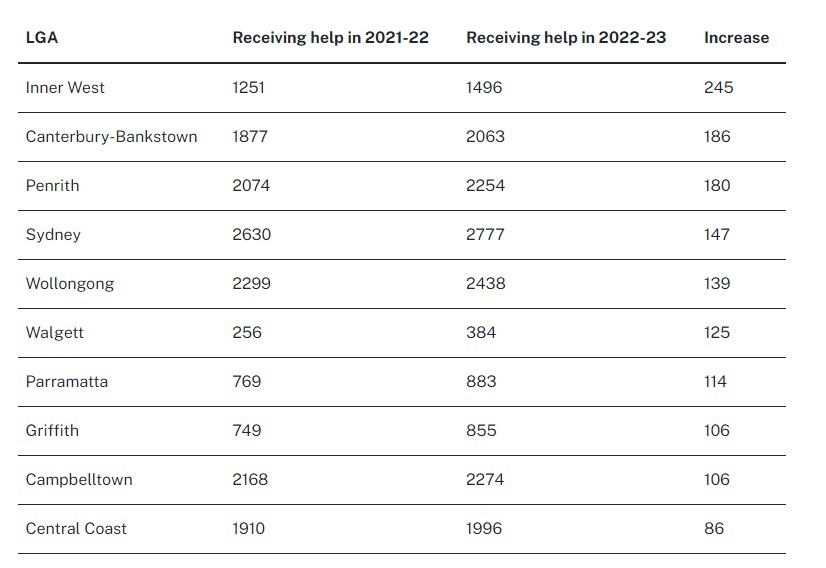
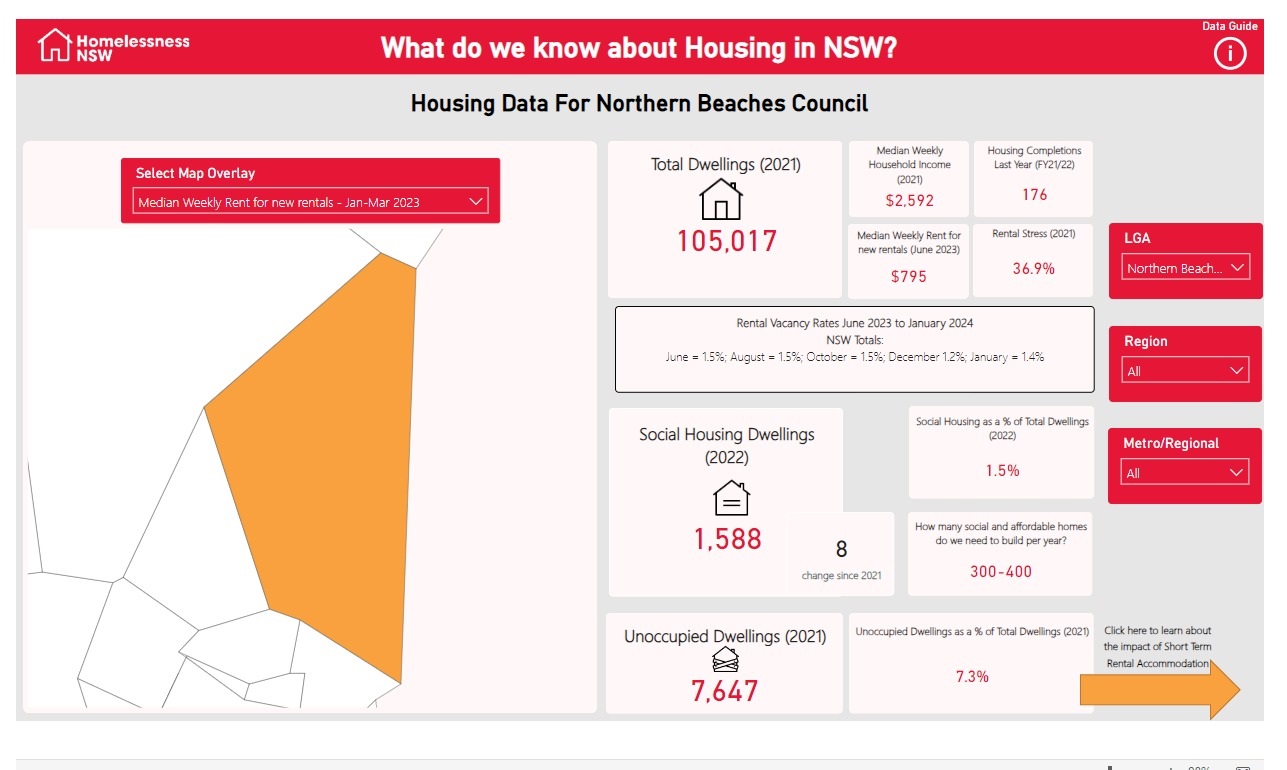
- The creation of Homes NSW, merging the housing and homelessness functions of the Department of Communities and Justice with the Land, Housing Corporation and the Aboriginal Housing Office to streamline support for residents and delivery pathway for more homes;
- Committed to 30 per cent social and affordable housing in all developments on government surplus public land;
- Undertaking a statewide land audit to identify state owned land to deliver more housing;
- Fast tracking the delivery of more social and affordable homes through the $610 Million Federal Government’s Social Housing Accelerator payment and Housing Australia Future Fund;
- Implemented planning reforms to expedite the delivery of more housing across the state;
- Investigating innovative solutions to deliver more homes with $10 million allocated to Modular Housing Trial to deliver faster quality social housing;
- The 2023-24 NSW Budget included a $224 million Essential Housing Package which allocated $70 million to accelerate the delivery of social, affordable homes in regional NSW;
- Extended temporary accommodation from an initial period of two days to seven days;
- Removed the 28-day cap ensuring vulnerable people are able to access support when they need it most;
- Increased the cash assets limit from $1,000 to $5,000 when assessing eligibility for Temporary Accommodation;
- Removed the cash asset limit assessment entirely for people escaping domestic and family violence;
- Extended Specialist Homelessness Services contracts for two years, to 30 June 2026;
- Deploying more assertive outreach services to engage people sleeping rough and support them into long term, stable accommodation;
- Appointed a Rental Commissioner to work with us in designing and implementing changes that rebalance the rental market, making it fairer and more modern; and
- Put a 12-month freeze on the requirement for people in temporary accommodation to complete a Rental Diary, while the scheme is reviewed.
Australia’s Oldest Hospital Recognised With Nightingale Award
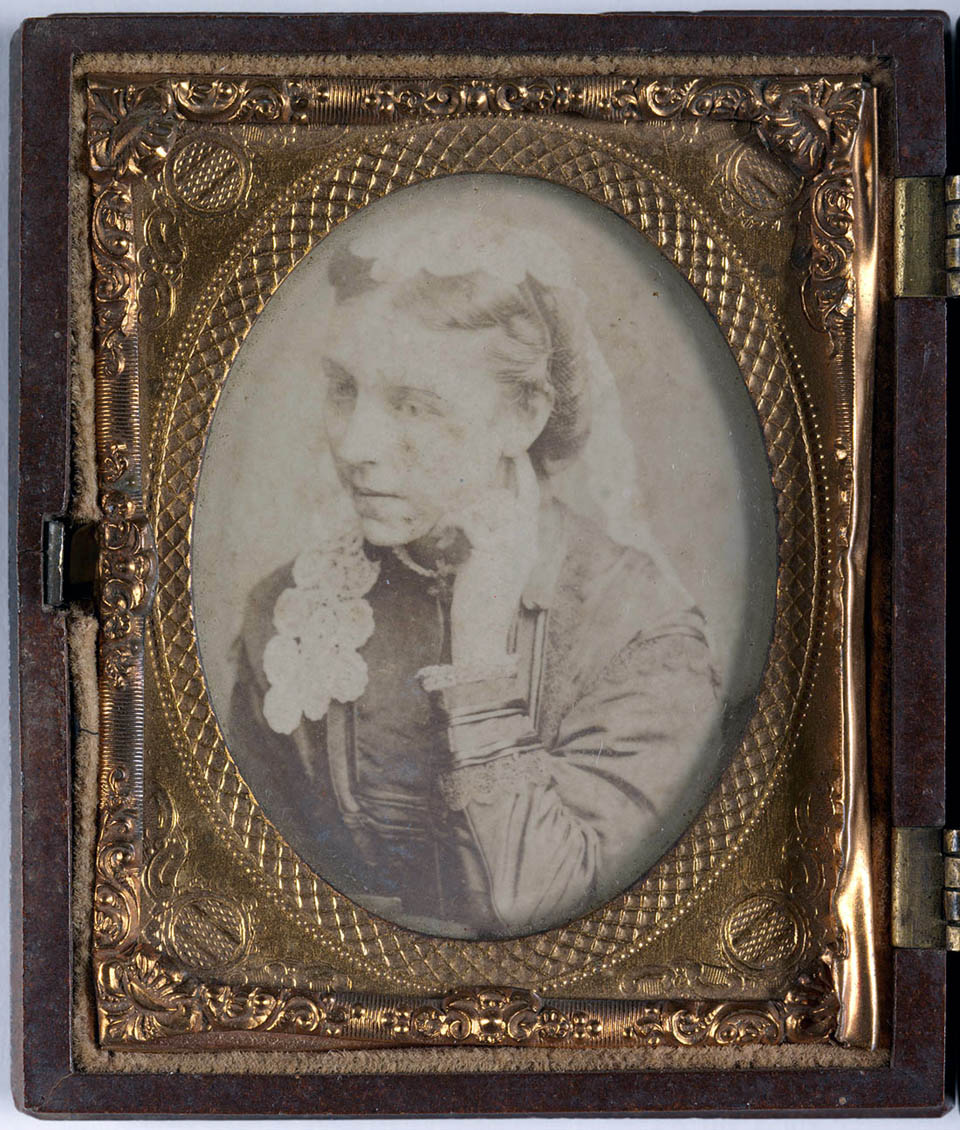

Safely Embracing AI In Healthcare
New Sustainable Water Technology To Be On ‘Tap’ At NSW Hospitals
Contract Awarded To Transform The Cutaway At Barangaroo
- new event and gallery spaces
- enclosure of the open ceiling voids with soundproof, glass skylights
- improved acoustics
- improved entry and forecourt
- on site-amenities
- back of house facilities (including commercial kitchen).

One of NZ’s most contentious climate cases is moving forward. And the world is watching
Vernon Rive, University of Auckland, Waipapa Taumata RauIn recent weeks, the Supreme Court of New Zealand has delivered a landmark decision on a case brought by Māori elder Mike Smith against a group of New Zealand’s largest corporate greenhouse gas (GHG) emitters.
The Supreme Court overturned lower court rulings which had struck out Smith’s ambitious claim seeking to establish civil (tort) liability for those emitters’ contributions to climate change. Smith argued these contributions had a negative impact on his family’s and tribe’s land, water and cultural values.
With the Supreme Court decision, Smith has won the right to present his full case before the High Court.
While only the beginning of what could be a long legal process, the Supreme Court’s decision has attracted local and international attention as one that “may open a new avenue in climate law”.
The Case Against The Corporate Emitters
In 2019, Smith sued seven New Zealand-based corporate entities in his capacity as an elder of the Ngāpuhi and Ngāti Kahu iwi (tribes) and climate change spokesperson for a national forum of tribal leaders.
The defendants include New Zealand’s largest company Fonterra (responsible for around 30% of the world’s dairy exports), along with other corporate entities involved in industries either directly emitting GHGs or supplying fossil fuels such as oil, gas or coal.
Smith argued the activities and effects of the corporate defendants amount to three forms of “tort” or civil wrong: public nuisance, negligence, and a new form of civil wrong described as a “proposed climate system damage tort”.
The first two causes of action – public nuisance and negligence – have long lineages in the common law.
As touched on in the Supreme Court decision, public nuisance claims were used by claimants affected by various forms of pollution and other harm during the Industrial Revolution in the 19th century.
Many of the leading common law tort cases – especially on public nuisance – were decided well before the emergence of modern scientific understanding and consensus on climate change.
A major issue for the Supreme Court (and now the High Court, where this claim will proceed) was whether longstanding rules and principles of tort liability should be adjusted in light of the contemporary, existential challenges presented by climate change.
This might involve adapting established tort categories of public nuisance and negligence. It might also involve fashioning an entirely new “climate system damage” tort.
A key plank of the corporate emitters’ argument was that the courts “are ill-suited to deal with a systemic problem of this nature with all the complexity entailed”. They argued the courts should leave those inherently political issues to the politicians.
The Supreme Court rejected that argument. Unless parliament has, through statute, clearly displaced civil obligations – and the court found that it had not – a judicial pathway is “open for the common law to operate, develop and evolve”.
The Challenges Of Establishing Causation
Questions of causation and proximity have been stumbling blocks for litigants overseas attempting to bring similar tort claims to Smith’s.
Defendants typically argue it is impossible to show the global emission contributions of a small group of even relatively large entities can be evidentially linked to the climate-related harm experienced by plaintiffs. In this case, the seven corporate emitters are associated with around 30% of total New Zealand emissions.
However, New Zealand contributes less than 0.2% of global emissions. As the High Court judge put it, “the defendants’ contribution to […] global emissions is minute”. To accept Smith’s claim “would be to expose (them) to an undue burden of legal responsibility, way beyond their contribution to damaging global greenhouse gas emissions”.
The Supreme Court did not agree that the challenges of causation or proximity necessarily doom Smith’s case to failure. The court suggested that there may be scope for adjusting the causation rules to better reflect the nature of modern environmental issues like climate change.
Smith’s position (in part) is that instead of requiring litigants to prove that damage to their land and resources is directly attributable to the activities of one or more corporate emitters, the legal test should be adjusted to establish civil liability if defendants have materially contributed to the global problem.
But the Court didn’t think these difficult questions could be resolved without a full trial.
What Role For Tikanga And Where Now?
An important dimension of the case which distinguishes it from similar proceedings overseas is the relevance of a body of indigenous custom, law and practice known as “tikanga Māori”.
Recent Supreme Court decisions have accepted and applied tikanga as the “first law of New Zealand” including in relation to environmental protection.
The Court followed that approach in this case, accepting that crucial aspects of Smith’s case rely on tikanga principles.
Smith is not just suing on his own behalf, “but as a kaitiaki (carer) acting on behalf of the whenua (land), wai (freshwater) and moana (sea) – distinct entities in their own right”. The court pronounced that “addressing and assessing matters of tikanga simply cannot be avoided”.
With Smith’s claim having been reinstated, the parties now return to the High Court. Unless there is legislative intervention, the normal pretrial steps of discovery, evidence exchange and preparation will proceed. It promises to be one of New Zealand’s hardest fought and most closely watched private law climate cases.![]()
Vernon Rive, Associate professor, University of Auckland, Waipapa Taumata Rau
This article is republished from The Conversation under a Creative Commons license. Read the original article.
Cute grandpa or authoritarian in waiting: who is Prabowo Subianto, the favourite to win Indonesia’s presidential election?
Tim Lindsey, The University of MelbourneAmbitious and mercurial, with a dark past, former army general Prabowo Subianto has spent a lifetime vying for the ultimate prize in Indonesian politics. Now, with a large lead in the latest polls ahead of this week’s election, it looks as though the presidency is finally within his grasp.
So, who is Prabowo and how will he change Indonesia if he wins?
A Rapid Rise Through The Military Ranks – And Fall
Prabowo Subianto Djojohadikusumo is a true Indonesian blueblood. His family claims to be descended from national hero Diponegoro, a prince of the Mataram sultanate who led the Java War rebellion against Dutch colonial forces in the 19th century.
Prabowo’s grandfather was the founder of Indonesia’s first state bank and a prominent member of Indonesia’s independence movement. His father was a leading economist who served as minister of finance, minister of trade and minister for research in the government. His brother is a wealthy tycoon.

Prabowo, too, has long sought national prominence. An ambitious military officer serving mostly in the Special Forces (Kopassus), his marriage to a daughter of the authoritarian former president, Soeharto, fast-tracked his career. Prabowo rose to the rank of lieutenant general and, finally, the key position of commander of the powerful Army Strategic Reserve (Kostrad) in the capital, Jakarta.
As Soeharto’s regime began to falter amid the financial crisis of 1997, Prabowo become involved in covert operations to defend Soeharto’s army-backed and repressive New Order regime against its critics.
Under his leadership, the Special Forces’ “Rose Brigade” was accused of abducting and torturing more than 20 student protesters, 13 of whom are still missing, presumed dead. Prabowo has admitted to the abductions, but denies being involved in any killings.
Prabowo never faced trial, although several of his men were tried and convicted. The allegations against him meant he was, for years, denied a visa to enter the US.
Prabowo also denies a wide range of earlier accusations relating to human rights abuses committed by Special Forces under his command in East Timor and Papua, including alleged torture and killings.
He also denies accusations he was involved in engineering the violent rioting in the capital in 1998 that contributed to the collapse of his father-in-law’s regime, likely the result of an internal military struggle to become Soeharto’s successor. It seems Prabowo hoped to climb high amid the chaos at the time.
After Soeharto resigned in May 1998, his newly installed successor, B.J. Habibie, refused Prabowo’s request to be made head of the army, instead effectively demoting him. Prabowo is said to have responded by arming himself with a pistol and driving to the palace with truckloads of soldiers, but was stopped outside the president’s office.
Soon after, Prabowo was cashiered for “misinterpreting orders”, although the precise details of his dismissal still remain mysterious. He went into voluntary exile in Jordan for some years and it seemed his career was over.
Three Unsuccessful Bids For Higher Office
But Prabowo remained an ambitious man. By 2009, he was a wealthy business figure and had co-founded his own political party, Gerindra. He had also rehabilitated himself enough to make a formal bid for power, running for vice president in the 2009 elections on a ticket with former president Megawati Soekarnoputri. They lost in a landslide.
In 2014, Prabowo tried again. This time he ran as a presidential candidate against Joko “Jokowi” Widodo. Prabowo campaigned as a nationalist “strongman”, riding his horse around stadiums of cheering uniformed supporters and promising a return to the authoritarian model of the New Order. He lost both the election and a challenge to the results in the Constitutional Court.
In 2019, he tried once again against Jokowi, this time turning to conservative Islamists to support him. He was a strange choice as their figurehead, given he had a Christian mother and brother and, although a Muslim himself, had previously shown little public piety. In his 2014 campaign, he had even promised to protect religious minorities against Islamists.
Prabowo’s use of identity politics proved deeply polarising, strengthening the hand of hardline Islamist groups in Indonesia and deepening tensions between religious communities for years to come.
But Prabowo lost this election, too. He accused Jokowi of cheating, sparking rioting in Jakarta in which eight people died. He again contested the results in a highly publicised Constitutional Court challenge, which he also lost.
Prabowo then made the extraordinary decision to reinvent himself again. Dumping his supporters, he took the position of defence minister in the cabinet of his rival, Jokowi. The two former foes were photographed shaking hands and sharing jokes to seal their extraordinary deal.
For the next four years, Prabowo dutifully performed the role of loyal minister – even when Jokowi’s government moved against some of the Islamist organisations that had backed him in his last bid for the top job.
Controversial Political Moves
Now 72, Prabowo’s ambitions are undiminished, but his tactics have, once again, changed dramatically.
In his current run for president, Prabowo has selected Jokowi’s son, Gibran Rakabuming Raka, as his vice-presidential running mate. And Jokowi himself now backs him. (Although Jokowi has never explicitly endorsed Prabowo, Gibran’s candidacy makes Jokowi’s preferences crystal clear.)
Jokowi’s decision to join forces with Prabowo and his Gerindra party was driven by the fact he was prevented from running himself by the two-term presidential limit in the constitution. He therefore needed to find another way to maintain influence. Having his son as vice president would certainly suffice.
Jokowi is hugely popular, with approval rates still well over 70%. This means his decision to back Prabowo may – at last – deliver the presidency to the former general.
But building a new alliance with Prabowo has proved to be a seismic event in Indonesian politics, for two reasons.
First, according to the country’s election law, candidates for president and vice president must be at least 40 years old. The 36-year-old Gibran didn’t qualify.
Helpfully, the chief justice of the Constitutional Court was Gibran’s uncle and had been appointed by Jokowi. The court duly delivered a ruling that younger candidates could run if they had held elected office as a regional head. Gibran just happens to be mayor of the city of Solo (a position his father once held), so he was now eligible.
Uproar ensued, and the chief justice was demoted for his obvious conflict of interest. But, incredibly, the decision stood, and Gibran is running.
Second, Jokowi is a member of the PDI-P party, which had twice nominated him for president. The party has its own candidate running for president, Ganjar Pranowo.
So, by backing Prabowo, Jokowi has effectively turned his back on his own party and may help defeat its candidate for the presidency.
His actions also pose a major threat to PDI-P’s prospects in the legislative elections (held at the same time as the presidential vote). To the PDI-P leader, former president Megawati, and many of her supporters, Jokowi is now a traitor and enemy who may inflict huge damage on their political prospects.
Why This Election Matters
Prabowo’s big lead in the polls is partly thanks to Jokowi’s support and the many government officials now openly backing him. However, Prabowo has undergone (yet another) spectacular reinvention in recent months that has helped as well.
His campaign team has heavily promoted him as a baby-faced gemoy (cute) grandpa, using viral memes, video clips and even huge screens with anime avatars of Prabowo and Gibran smiling and winking at passers-by.
But Prabowo is not cute. In fact, he has repeatedly said Indonesia’s democratic system is not working and the country should return to its original 1945 constitution. This would mean unravelling most of the reforms introduced since Soeharto fell, which are largely based on constitutional amendments.
Among other things, Indonesia’s charter of human rights would go, as would the Constitutional Court. The courts would no longer be independent, direct presidential elections would end, the two-term presidential limit would go and the president could again control the legislature.
Of course, these changes might not be easily done, but it is a chilling prospect if Prabowo wins. And that may happen because much of the electorate doesn’t seem to care all that much about the consequences of picking him.
The average age of Indonesia’s 205 million eligible voters voters is just 30, and more than half are millennials or Gen Z. This means many have no memory of Soeharto’s oppressive and abusive New Order that Prabowo seems to want to revive.
Young voters also seem untroubled by Prabowo’s dark past and the credible allegations of violence and human rights abuses made against him. Instead, they seem captivated by the cute Prabowo and cool Gibran imagery saturating social media, backed by the charisma of Indonesia’s most popular public figure, Jokowi.
If Prabowo does become president, as many now expect, Indonesia’s fragile democratic system may be the next thing he reinvents – or, more likely, dismantles.![]()
Tim Lindsey, Malcolm Smith Professor of Asian Law and Director of the Centre for Indonesian Law, Islam and Society, The University of Melbourne
This article is republished from The Conversation under a Creative Commons license. Read the original article.
If we want more Australian students to learn to read, we need regular testing in the early primary years
Anika Stobart, Grattan InstituteWhen you send your child to school, you expect they will learn how to read. But according to 2023 NAPLAN results, about one-third of Australian school students can’t read at their grade level.
For Indigenous students, students from disadvantaged families, and students in regional and rural areas, it’s more than half.
This is deeply troubling. When children do not learn to read fluently and efficiently in early primary school, it can undermine their future learning across all subject areas, harm their self-esteem, and limit their life chances.
Our new Grattan Institute report, The Reading Guarantee, outlines a strategy to ensure at least 90% of Australian school students are proficient readers.
This includes measures such as more support for lower-performing schools, coaching and building teachers’ expertise. On top of these, a key part of the strategy is that all schools regularly assess students’ reading progress and provide additional catch-up support – either in small groups or one-on-one – to those who are falling behind.
Struggling Students Need Early Support
As previous Grattan Institute research shows, struggling students need early support so they do not fall even further behind.
Developing foundational reading skills, like decoding (the ability to sound out unfamiliar words on a page), are vital for students’ later reading success. A 2014 study of more than 400,000 students in Years 1, 2, and 3 found if a students’ decoding and vocabulary skills developed normally, fewer than 1% of students had problems with reading comprehension later on.
A focus on these early reading sub-skills is also more likely to instil a love of reading in students.
If students don’t master reading in early primary school, they may struggle with the reading demands of subjects such as biology and history in high school.
Tests Can Help
The earlier we assess students’ reading skills, the better, so struggling students can be supported to catch-up. For example, a 2017 US study of nearly 200 students found Year 1 and Year 2 students receiving additional help to catch up on their word reading progressed twice as fast as students who didn’t receive this help until Year 3.
The choice of assessment matters too – they need to be quick to administer and give teachers useful information. They should tell teachers what specific areas of reading students are struggling in, so support can be well targeted.
One example of this is The University of Oregon-developed DIBELS (the Dynamic Indicators of Basic Early Literacy Skills). This has six short assessments of about one minute each of different reading sub-skills, such as “phonemic awareness” (identifying speech sounds in spoken language) and “reading fluency” (how quickly and accurately a child reads with the right expression). It also has benchmarks for the beginning, middle and end of the year.
Most Australian state and territory education departments mandate some specific early reading assessment tools and make recommendations about other assessments to use. But our report argues they are not necessarily recommending effective tests and they do not always provide the information teachers need to monitor reading progress.
We Need A National Year 1 Phonics Screening Check
There should be a nationally consistent Year 1 Phonics Screening Check to provide governments with a useful “health check” on early reading performance across states. The test was developed in the United Kingdom where it has been mandated for government schools since 2012.
It is also currently mandated in Tasmania, New South Wales and South Australia.
Phonics is not the only important reading skill students should master in early primary school. But having a test focusing on phonics acknowledges how the ability to accurately decode words is a good predictor of students’ future reading achievement.
This test assesses students’ decoding skills across 40 real and made-up words (such as “lig”) of increasing complexity. It takes about seven minutes to complete per student. By assessing 40 words, it can identify the letter-sound combinations a student is struggling with.
Parents would then get a report on their child’s results and aggregate results would also be published at the state and sector levels.
We Should Also Be Assessing Students At Other Times
The Year 1 Phonics Screening Check will tell governments how students are tracking on phonics. But schools should also be regularly tracking students’ progress on reading.
Governments should require all schools to assess students’ reading skills (using robust assessments such as DIBELS) at least twice a year from the first year of school to Year 2 and on entry into high school. This would identify students who may not have learnt necessary reading skills in primary school.
Governments should also provide clearer guidelines about which assessment tools are effective. And they should provide guidance on when assessments should be done and advice on what to do with the results.
The alternative is we keep going with a “wait-to-fail” approach, which lets too many students fall through the cracks.![]()
Anika Stobart, Senior Associate, Grattan Institute
This article is republished from The Conversation under a Creative Commons license. Read the original article.
Australia is in desperate need of a Whistleblower Protection Authority. Here’s what it should look like

Making it safer for insiders to speak up about wrongdoing is crucial for public integrity in Australia. Ask anyone, from the public servants who tried to speak up against Robodebt, to Attorney-General Mark Dreyfus, again at the front end of whistleblower protection reforms.
But what it will take to make reform a reality has long been the issue. This is particularly salient as the federal government consults on how to better protect whistleblowers in the public sector, including contractors. In addition, reviews are underway or looming for other whistleblower protections in the Corporations Act, Taxation Administration Act, and the aged care sector, to name a few.
Naturally, the key to improved protections is making them work. This is why many years of research support the need for a dedicated Whistleblower Protection Authority to fully enforce our “speak up” laws, irrespective of what improved protections they contain.
Together with Transparency International Australia and the Human Rights Law Centre, we have released draft design principles for a Whistleblower Protection Authority, informed by our research and the experience of many who have blown the whistle.
Here are our five key recommendations for this crucial reform.
1. The Agency Must Actually Protect Whistleblowers
The first priority is to fill the gaps in what institutions currently do to implement whistleblower protections, given these types of laws have already been around for years.
Several federal bodies have the task of fighting wrongdoing and ensuring integrity, including the new National Anti-Corruption Commission (NACC).
Yet, drawing on international research, we found when it comes to the crunch, out of 15 key official functions required to make whistleblowing laws work, only four of those were currently fully provided for. This leaves substantial or total gaps for the remaining 11.
Of these weak or missing roles, the most important are powers to independently investigate claims of detriment or vengeful harm to whistleblowers, and to ensure remedies are found. This massive and obvious gap lies at the heart of the need for institutional reform.
2. Capture The Financial Benefits Of Whistleblowing
What does effective protection look like? Our research found that even in deserving cases, more than half (56%) of public-interest whistleblowers are suffering serious direct or indirect repercussions. In turn, only about half (49%) of these are receiving any remedies to address the impacts – with less than 6% receiving any compensation.
This is despite the huge benefits whistleblowers bring to government and taxpayers by uncovering wrongdoing, including financial benefits through penalties imposed, court settlements or money saved.
A whistleblowing agency needs full resources to support whistleblowers in compensation claims, provide legal assistance, and mediate with agencies to secure remedies.
A Whistleblower Protection Authority could also administer a reward scheme where a proportion of the penalties, savings or income gained by the Commonwealth from whistleblower disclosures is channelled back into compensation.
Whistleblower reward schemes in other countries have had great success, which is especially relevant for protections that also apply across the private sector. This was highlighted last week by former Australian Competition and Consumer Chair Allan Fels.
3. Protect Whistleblowers Across All Sectors
Whistleblowers don’t just exist in the public sector. And even when it comes to revealing public sector wrongdoing, many whistleblowers are located in private companies that deliver government contracts. They can also be consultants, or witness wrongdoing involving other companies, even if not their own, and can still face detriment.
This is why a major 2017 parliamentary inquiry recommended consistent whistleblower protections across the sectors under federal laws, including a “one stop shop Whistleblower Protection Authority”.
International standards support a consistent, seamless approach, so whistleblowers do not fall through the cracks or face extra costs and barriers due to differences in rules and enforcement. Our research shows great similarities in how reports of wrongdoing are handled between the sectors.
With most federal whistleblowing laws up for review, it’s the perfect time to move to a simpler approach, with an authority able to ensure public interest whistleblowers are protected irrespective of where they come from.
4. Ensure Agencies Respond Properly To Whistleblowers
We can only be sure that whistleblowers are being protected – and their disclosures dealt with – if they are on the radar of their own organisation, with an independent agency there to make sure that’s the case.
Our best guess is that perhaps only 10% of actual Commonwealth whistleblowers are being identified as such under the current public interest disclosure regime. Upwards of 1,200 public officials who need support and protection every year are not even on the radar.
Under-reporting is a problem everywhere. But every year, NSW government agencies identify four times as many whistleblowing disclosures as the federal government (on a pro rata basis), while the Queensland government reports seven times as many. This confirms the federal regime is broken.
Robodebt is a good example. Several staff raised concerns about the unlawful and unfair nature of the scheme, as aired in the royal commission. They have rightly been praised as “whistleblowers” by the Minister for Government Services Bill Shorten, but none seems to have triggered the necessary responses and legal protections.
A Whistleblower Protection Authority will close these gaps by checking how well agencies are recognising disclosures and being an independent doorway where whistleblowers can go confidentially for guidance and support.
5. An Independent, Standalone Body
A Whistleblower Protection Authority could be located in various places in our system. For example, independent MPs Cathy McGowan and Helen Haines have previously put forward legislation that included a new whistleblower protection commissioner as part of the NACC.
The crucial thing is for whistleblower protection to be recognised as a standalone job. It must have an independent statutory commissioner supported by adequate resources and staff, who cannot be diverted onto other jobs.
The authority will still need to work in close partnership with other agencies, especially those that already investigate whistleblowing disclosures.
However, independence is crucial, so the authority can act impartially to conciliate disputes between whistleblowers and organisations, investigate when whistleblowers allege detriment for raising their concerns, and act as a powerful circuit breaker against reprisals.
For example, we recommend any federal agency who proposes taking legal action against a whistleblower – such as in the ongoing prosecutions of Richard Boyle by the Australian Taxation Office, or David McBride by Defence – must first prove to the authority that the action is justified.
It’s time to get the design of this crucial body right. It’s not enough for workers and officials, who serve us every day by raising their concerns, just to have protections on paper. We need an authority that will finally ensure these protections work fully, in practice.![]()
A J Brown, Professor of Public Policy & Law, Centre for Governance & Public Policy, Griffith University and Jane Olsen, Research Fellow & PhD Candidate, Centre for Governance & Public Policy, Griffith University
This article is republished from The Conversation under a Creative Commons license. Read the original article.
Vaccination, testing, clean air: COVID hasn’t gone away – here’s where Australia needs to do better
Stephane Bouchoucha, Deakin University; Matt Mason, University of the Sunshine Coast; Peta-Anne Zimmerman, Griffith University, and Sally Havers, The University of QueenslandIn May 2023 the World Health Organization (WHO) declared COVID was no longer a public health emergency of international concern. For many, this signalled the pandemic was over.
But the virus continues to infect millions of people globally and the WHO recognises COVID as an ongoing pandemic.
In Australia, more than 50,000 infections have been reported so far in 2024. And this is likely to be a significant underestimate, as we are testing much less than we used to. As of February 1 there were 287 outbreaks in residential aged care homes, and people are still dying from the virus.
Although we’ve come a long way since earlier in the pandemic, as we enter its fifth year, COVID continues to have negative effects on individuals, health services and society at large.
To reduce the impact on health services and the community, the Australasian College for Infection Prevention and Control, of which we are on the board of directors, is calling for ongoing infection prevention and control strategies in Australia. These include supporting people to access vaccination and testing, and cleaner air in shared indoor spaces.
Vaccination
COVID vaccination reduces severe illness and can in turn reduce pressure on the health system. But, to reap the greatest benefits, a high proportion of the population must be vaccinated and receive regular booster doses.
Boosters are important as we know immunity wanes over time, both after infection and vaccination. Also, because COVID continues to evolve, vaccines are updated to keep up with circulating strains.
Current advice from the Australian Technical Advisory Group on Immunisation (ATAGI) indicates adults over 75 should receive a routine booster, and adults 65 to 74 should consider doing so. Younger people are only eligible if they have an increased risk of severe COVID, for example due to a particular medical condition.
There’s also no recommendation that people at greater occupational risk of catching COVID, such as health-care workers, childcare workers or emergency and essential services workers receive another vaccination at this stage.
Yet broadening eligibility could help in several ways. For example, having a high proportion of the population unvaccinated or undervaccinated may increase opportunities for the virus to mutate and for new variants to develop.
Also, although older people are generally at greatest risk from a COVID infection, COVID in younger age groups can still in some cases cause severe and potentially long-term illness (and we know vaccination reduces the risk of long COVID).
We believe the current advice provided by the Australian government is out of date. There needs to be a review of ATAGI advice to allow booster access for more people, as is offered in other countries, such as the United States.

Even among those who are eligible, uptake is poor. Recent figures show only 16.6% of people aged between 65 and 74 have received a booster dose in the past six months.
As such, in tandem with updated guidelines, there should be focused promotion of COVID boosters to all vulnerable people, as well as nation-wide promotion of free access to vaccinations for the wider population.
The Australian government has recognised the need for a strong vaccination program as a means to minimise levels of severe COVID and death. So securing and delivering an ongoing supply of up-to-date vaccinations is paramount.
Testing
While testing is encouraged if you have COVID symptoms, there’s no requirement or incentive to test or report positive results. This poses two problems: under-reporting of COVID cases, and people not knowing they have COVID (and therefore not knowing they might transmit it).
In New South Wales for example, laboratory confirmed cases are trending downwards while wastewater testing suggests COVID prevalence remains high.
Reinstating easy access to rapid antigen and PCR testing would enable people to better manage their illness, and provide a clearer picture for health authorities.
Ventilation
COVID is airborne and evidence shows clean air is key to minimising its spread.
In September 2023 the Australasian Health Infrastructure Alliance released guidance on pandemic preparedness. This document calls for the design of any new health-care building to take minimising the risk of infection transmission into account.
There are examples where investment in building design to minimise infectious disease transmission has had positive results. But guidance documents lack the legal clout needed to drive true change, and these examples are the exception. COVID still spreads in our hospitals and aged care facilities.

Infection prevention and control specialists should play a key role in designing health-care facilities and residential aged care homes. Strategies to optimise ventilation in buildings must involve early consultation with qualified ventilation specialists who can address requirements such as the air exchange rate relative to the size of the building and number of expected occupants.
Mandating this would ensure we build facilities which minimise the transmission of most respiratory infections – not just COVID.
Other Things
Support for communities to engage in key prevention strategies such as promoting the use of surgical masks or preferably P2/N95 respirators and staying home when unwell is important. Employers have a responsibility to enable access to paid sick leave, especially for those working with vulnerable communities and in health care.
Hand hygiene, although a foundation of infection prevention and control, appears to have less of a role in controlling COVID transmission. So we need to spend less time thinking washing our hands will protect us from COVID, and more time on what the evidence actually shows will help us ride this stage of the pandemic.
We also need new research initiatives such as large-scale clinical trials to prevent and treat long COVID, and more funding for the development of new vaccines and antiviral drugs as new variants arise.![]()
Stephane Bouchoucha, Associate Professor in Nursing and Associate Head of School (International), Deakin University; Matt Mason, Lecturer and Academic Lead for Work Integrated Learning, University of the Sunshine Coast; Peta-Anne Zimmerman, Senior Lecturer/Program Advisor, Griffith Graduate Infection Prevention and Control Program, Griffith University, and Sally Havers, Conjoint Nurse Researcher, School of Nursing, Midwifery and Social Work, The University of Queensland
This article is republished from The Conversation under a Creative Commons license. Read the original article.
HILDA survey at a glance: 7 charts reveal we’re smoking less, taking more drugs and still binge drinking
Roger Wilkins, The University of MelbourneAustralians’ vices, including drinking, smoking and illicit drugs, have been revealed in the latest HILDA survey.
The Household, Income and Labour Dynamics in Australia survey tracks the same 17,000 Australians each year, with participants followed over the course of their lifetime. The survey collects information on many facets of life and is the only study of its kind in Australia.
Smoking Is Declining, But Young People Are More Likely To Vape
There has been substantial progress in reducing smoking rates since 2001, when 25% of males and 20% of females aged 15 and over reported being smokers. In 2021, these rates had dropped to 16% for males and 12% for females. This likely reflects the effects of tobacco control measures, as well as increased public awareness of the harmful health effects of smoking.
Declines have been biggest for young people, which reflects the fact that it is easier to prevent the take-up of smoking than it is to get smokers to quit. Indeed, HILDA shows that over 60% of people who quit smoking take it up again within three years.
The progress on reducing smoking appears to have been somewhat offset by the rise in vaping or using e-cigarettes. In 2021, 14.1% of people aged 15 and over reported having tried vaping, and 16% of these people vaped daily.
Vaping is very much a young person’s activity. It is most common among people aged 15 to 24, and also relatively common among people aged 25 to 29. Many people who report vaping also report being smokers.
Binge Drinking Remains Common, Especially For Young Men
Risky drinking, here defined as usually consuming five or more standard drinks on each occasion, is relatively common, applying to over 20% of males and about 10% of females who ever drink alcohol.
After rising slightly between 2003 and 2009, there has since been a small decline in this measure of risky drinking for males. There has been little change in this measure for females.
Another measure of risky drinking, presented in the figure, is “excessive binge drinking”, defined as drinking at least five (if female) or seven (if male) drinks per occasion at least twice per month. This measure of risky drinking is more prevalent, but it has declined for both males and females since 2007.
Risky drinking is most common among men aged 20 to 24, followed by men aged 25 to 29. However, for both males and females, regular (but not necessarily “risky”) consumption of alcohol (drinking on five or more days per week) is more common in older age groups, and highest among people aged 60 and over.
30 To 34 Year-Olds Had The Largest Increase In Using Drugs
The HILDA survey shows use of illicit drugs, such as marijuana, methamphetamine and cocaine, increased between 2017 and 2021, with annual use increasing from 15.7% to 17.6% for males and from 8.6% to 11% for females.
People aged 20 to 24 are the most likely to use illicit drugs, but the increase in use was greatest for people aged 30 to 34.
The use of multiple types of illicit drugs, known as polydrug use, is common for users of methamphetamine, cocaine and ecstasy, but much less common for users of marijuana.
![]()
Roger Wilkins, Professorial Fellow and Deputy Director (Research), HILDA Survey, Melbourne Institute of Applied Economic and Social Research, The University of Melbourne
This article is republished from The Conversation under a Creative Commons license. Read the original article.
Disclaimer: These articles are not intended to provide medical advice, diagnosis or treatment. Views expressed here do not necessarily reflect those of Pittwater Online News or its staff.